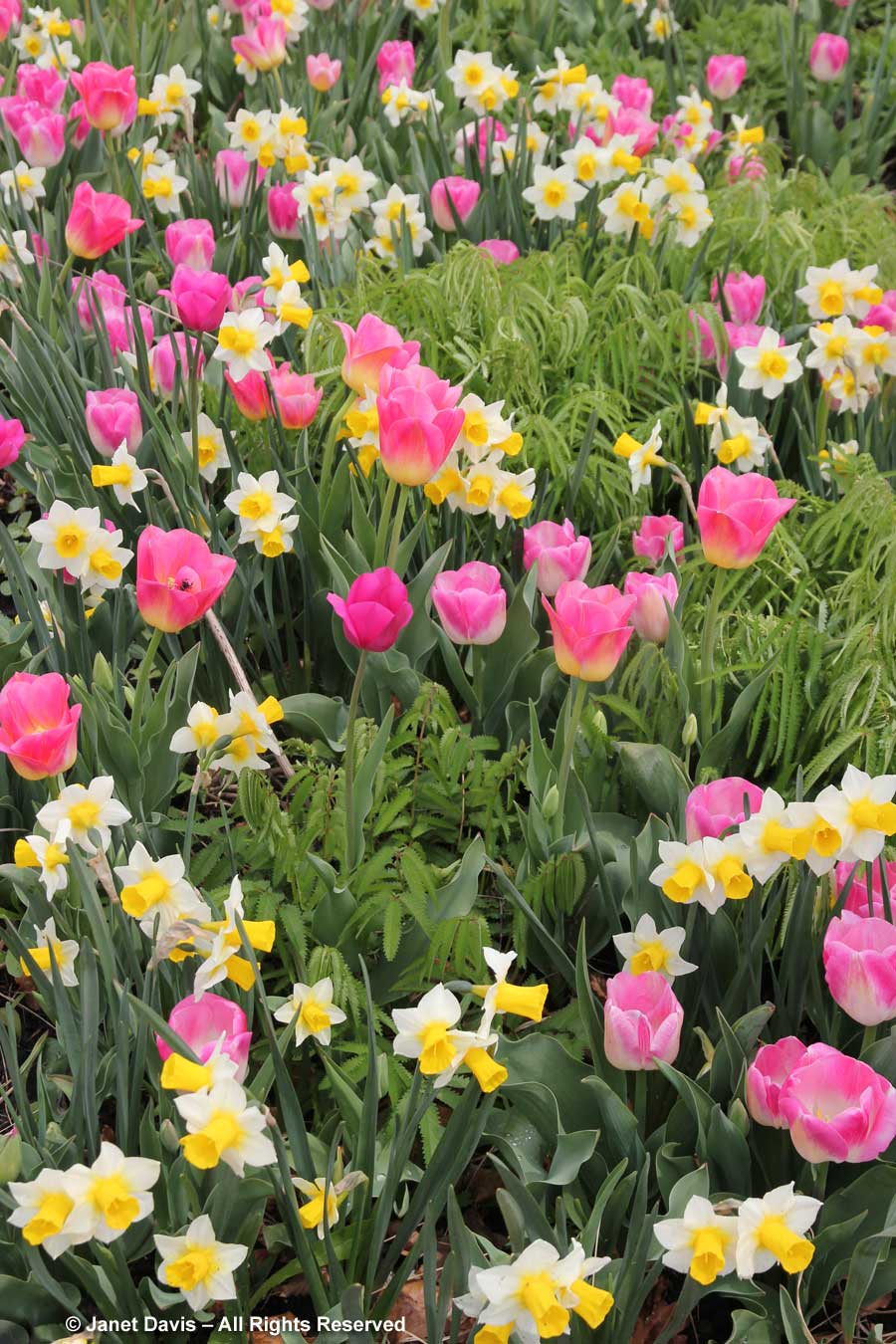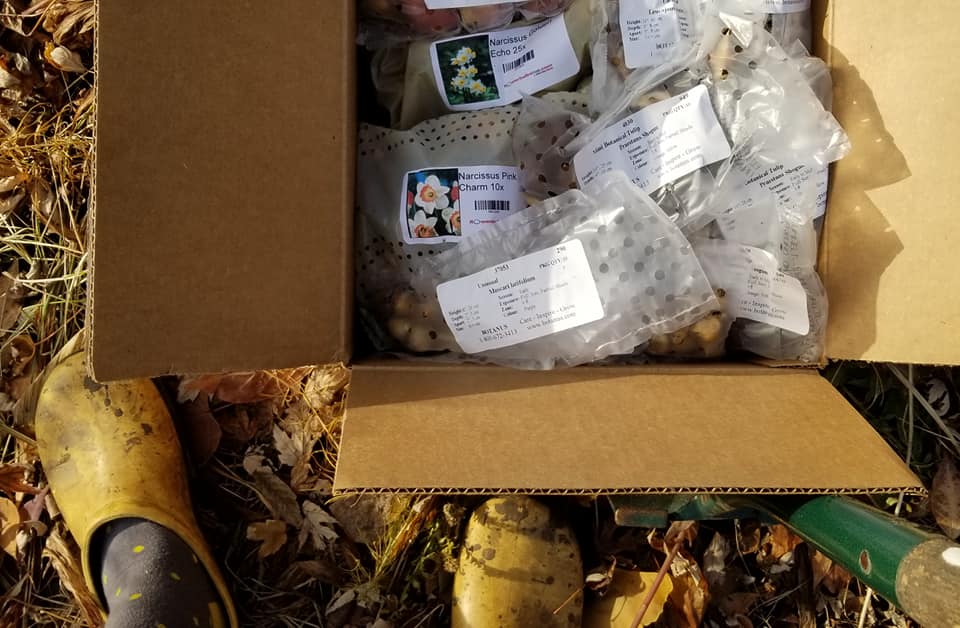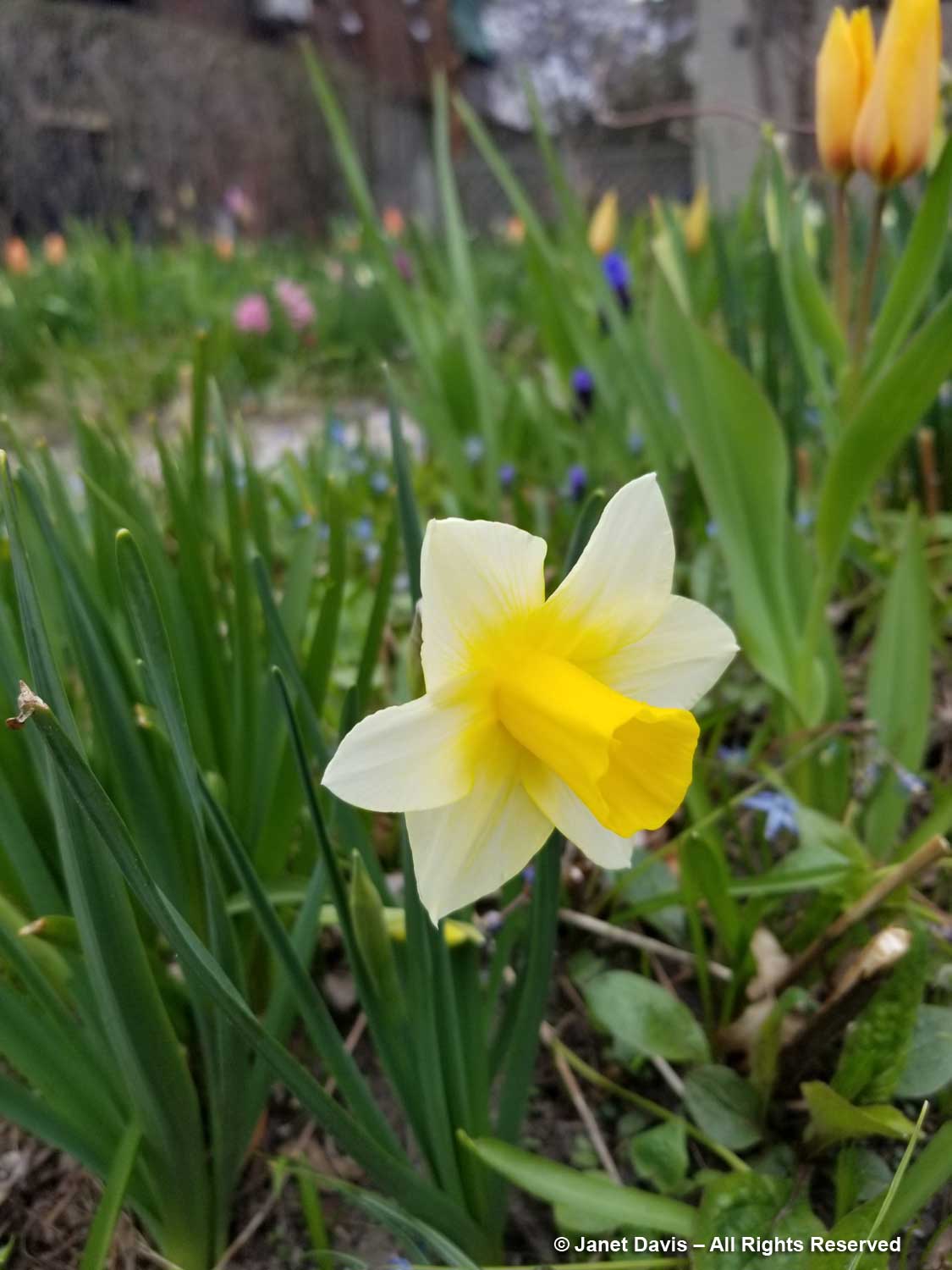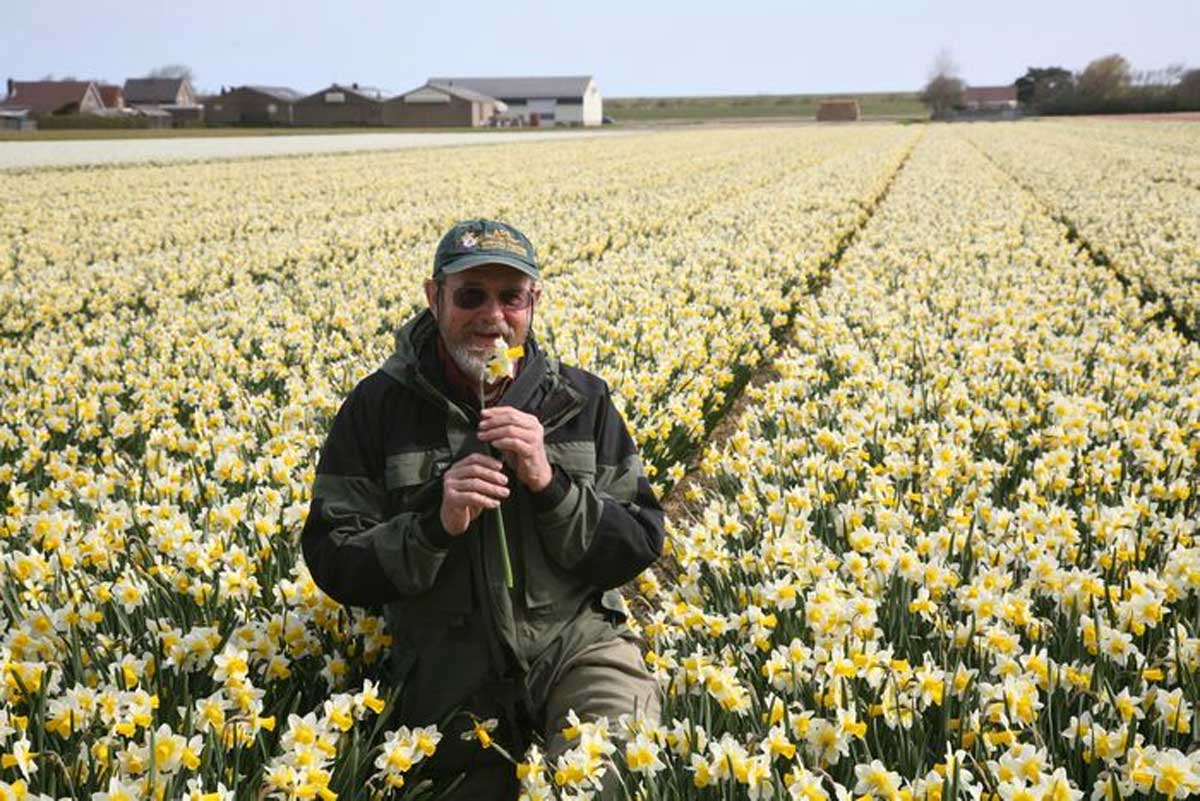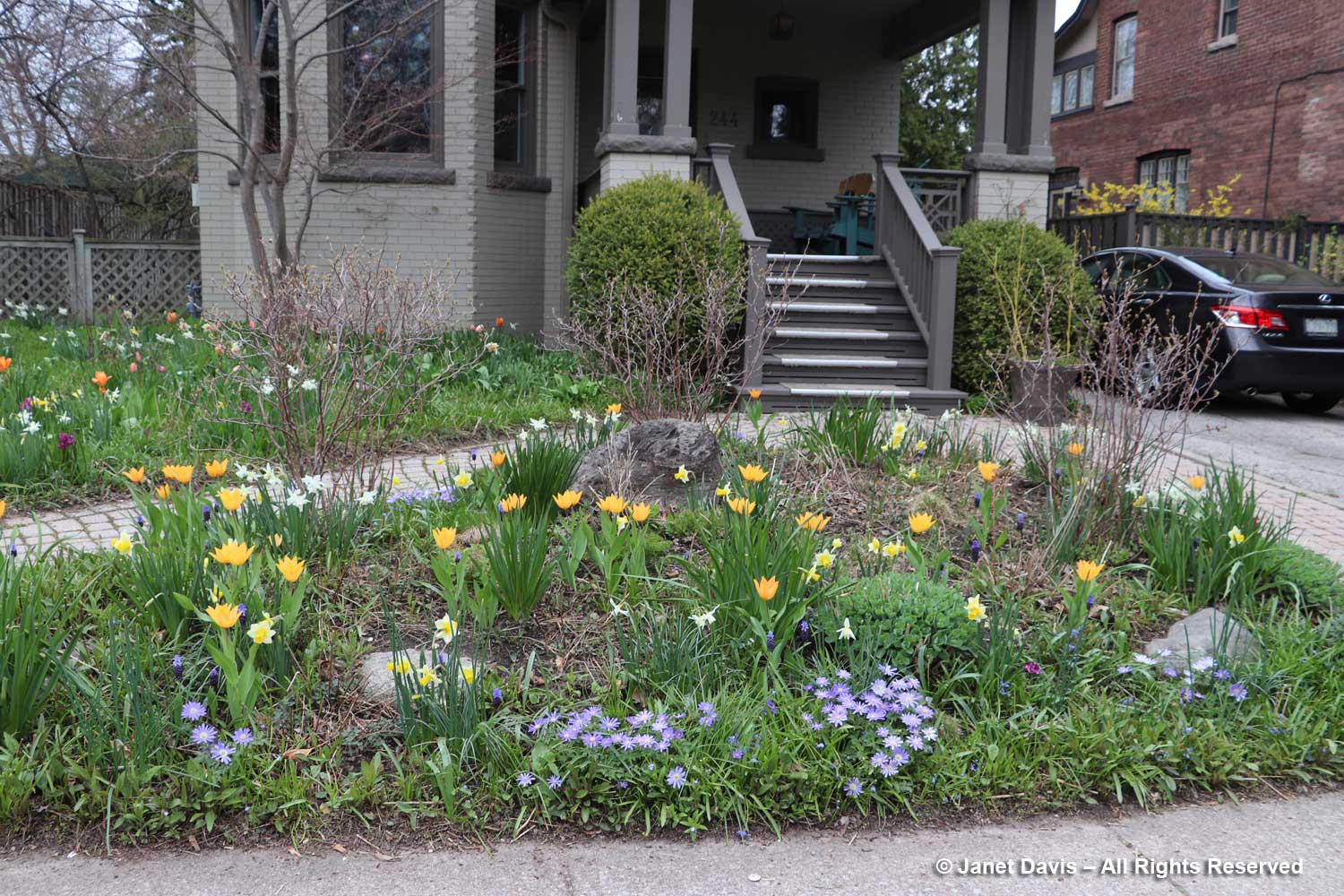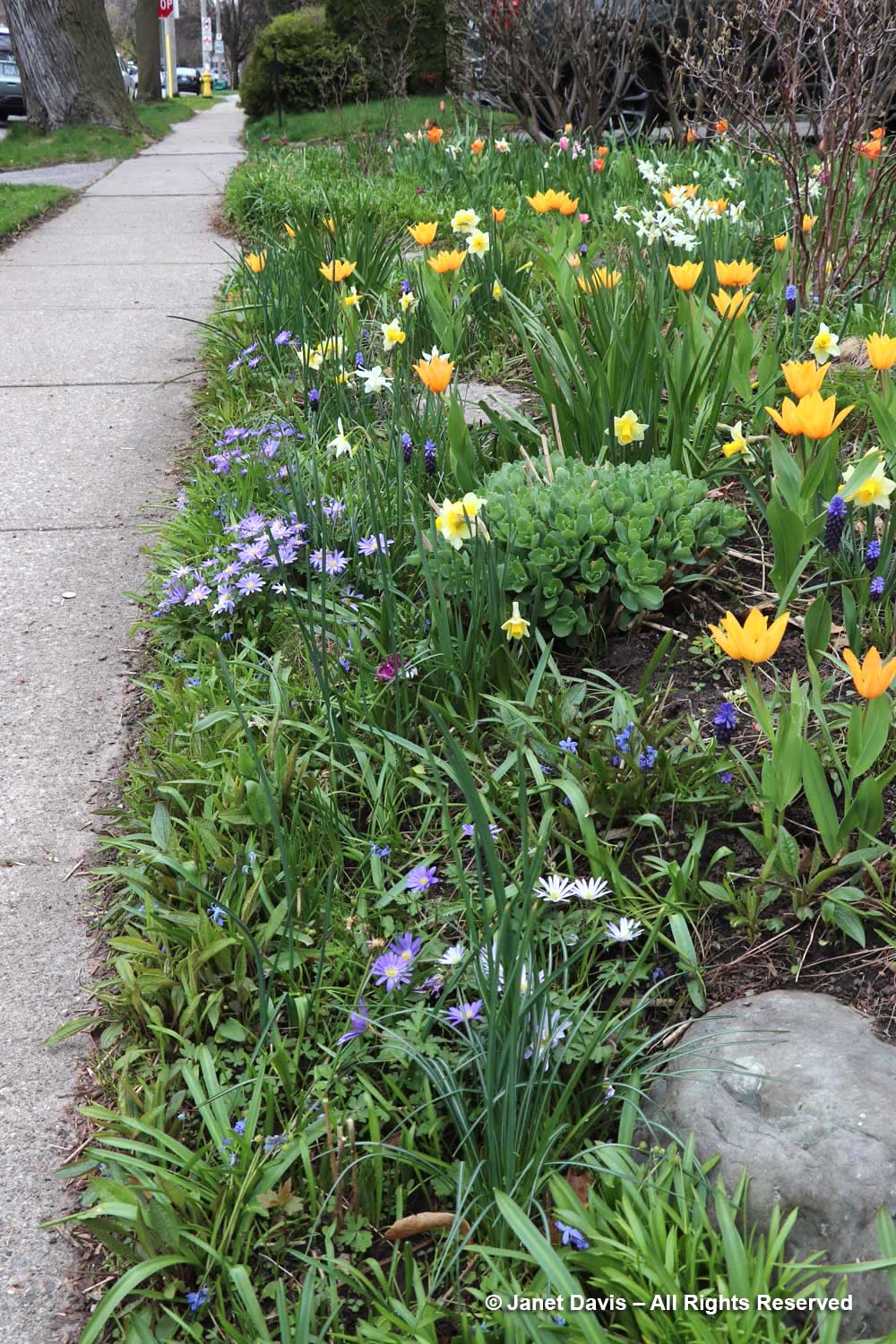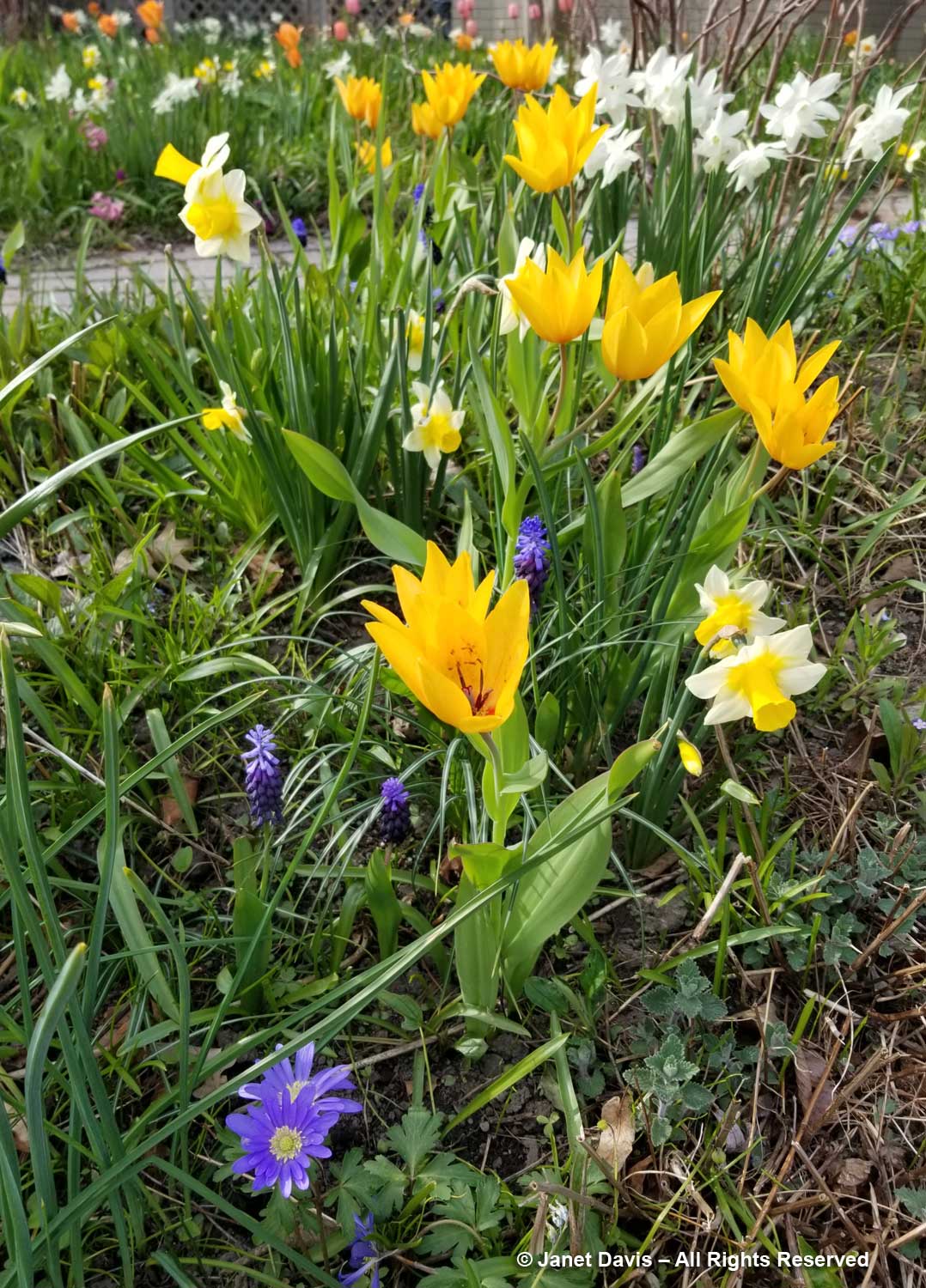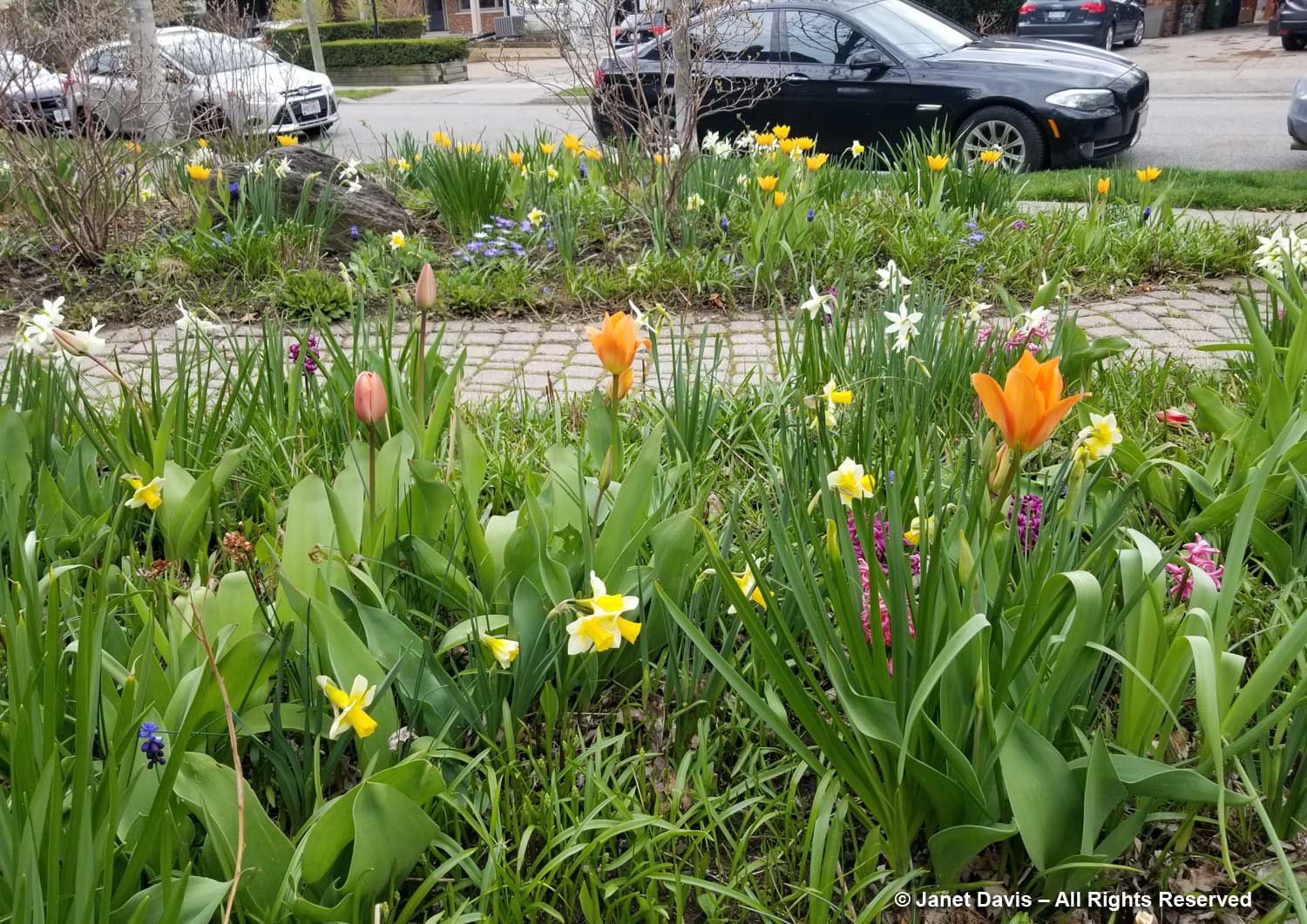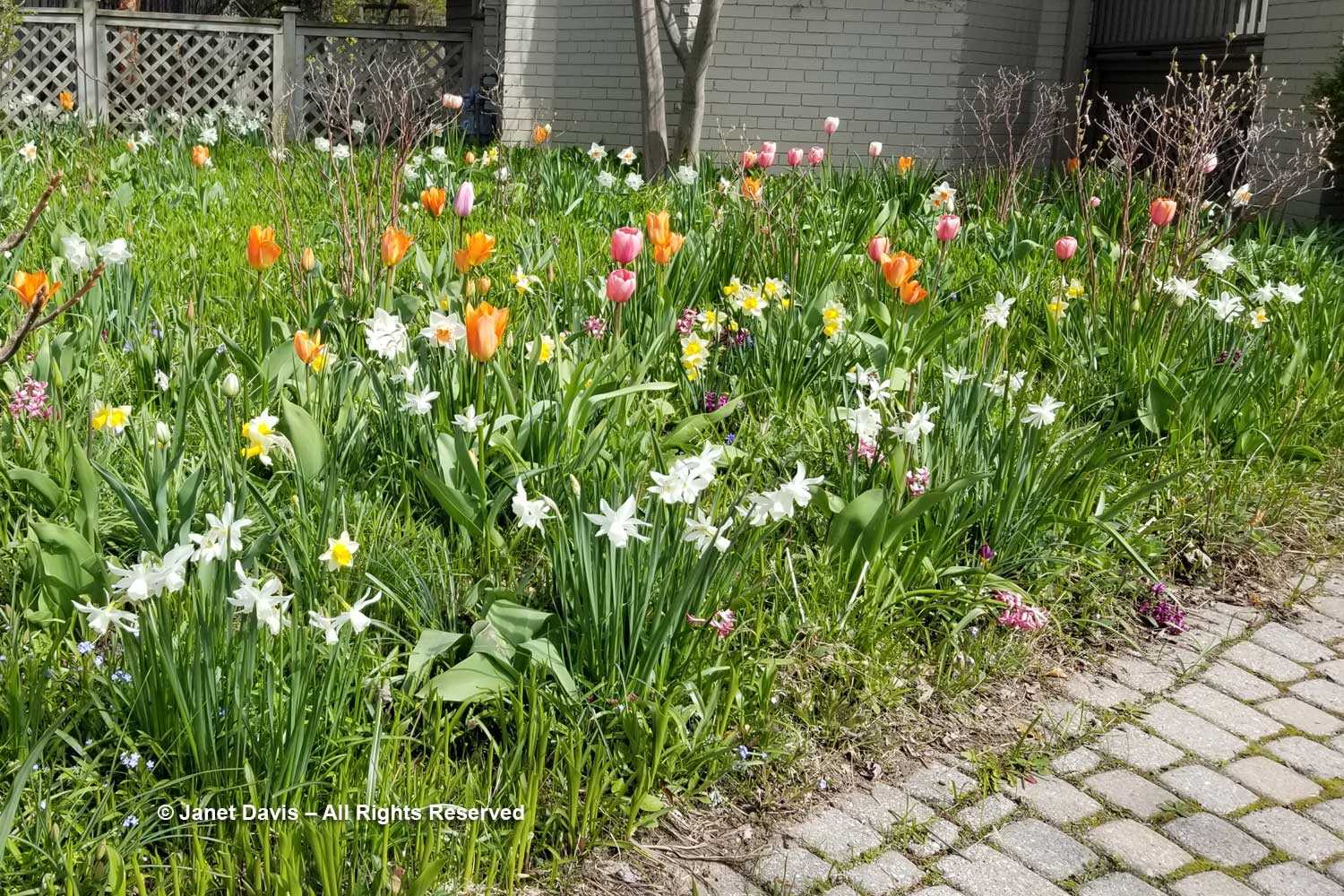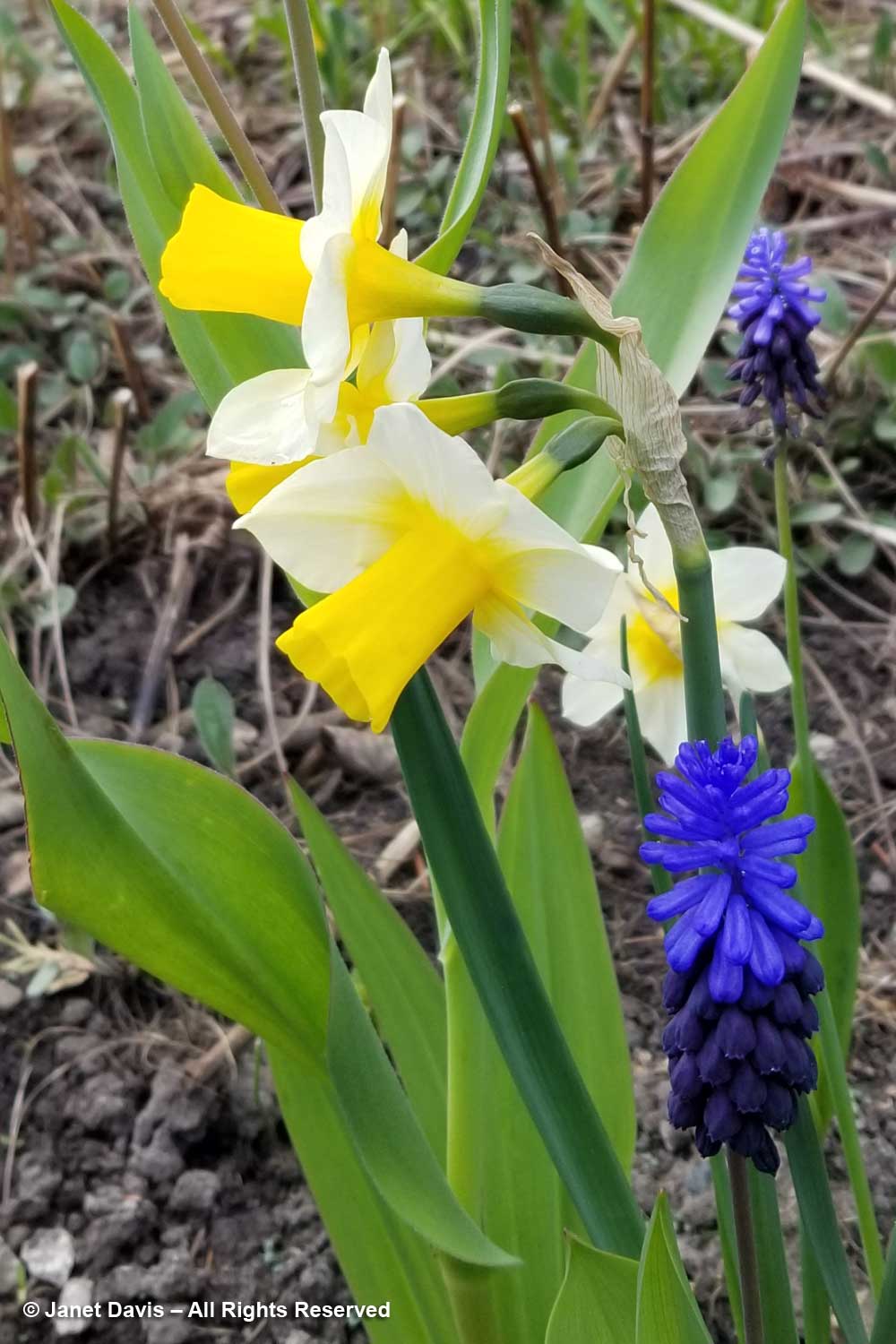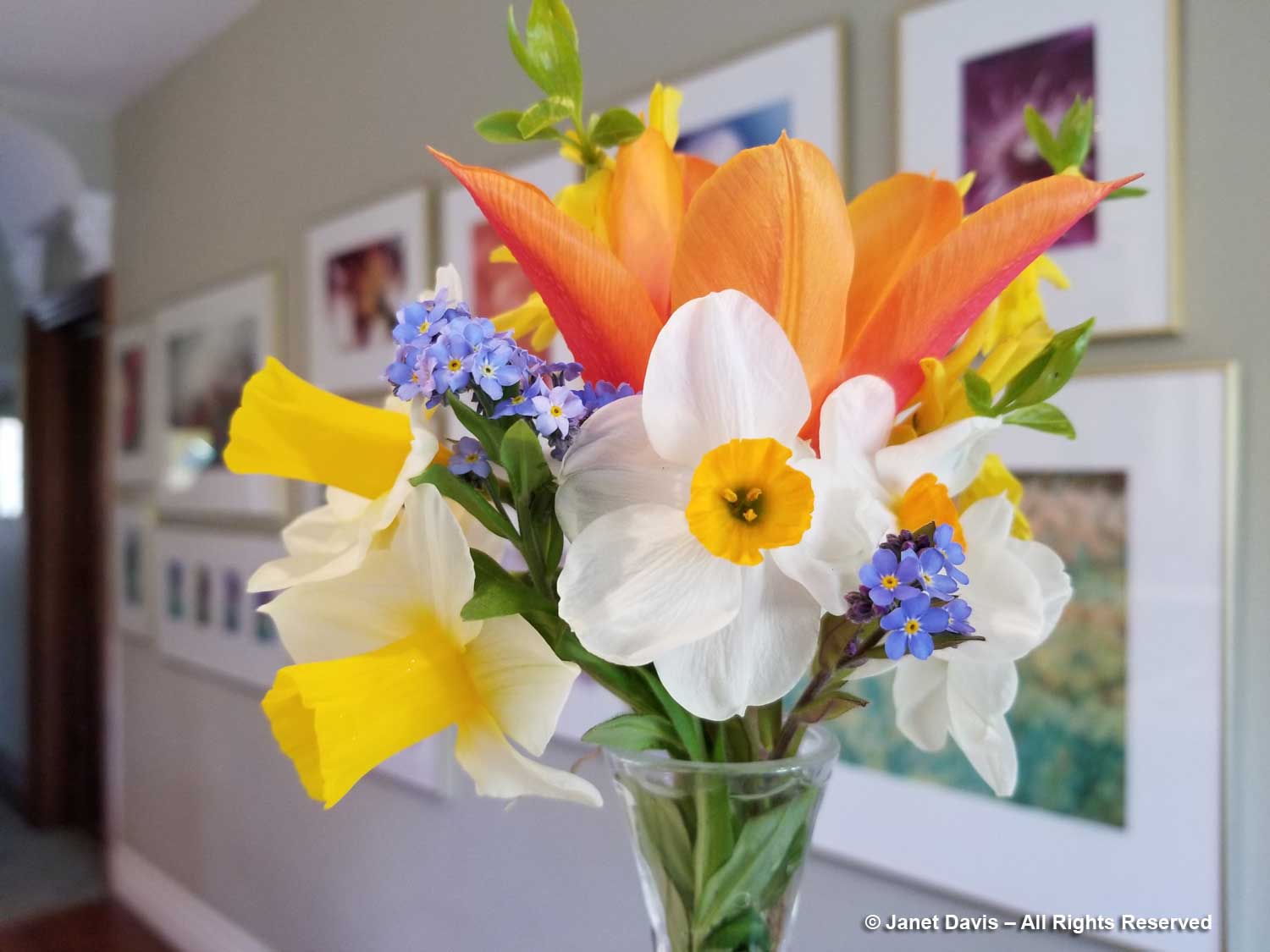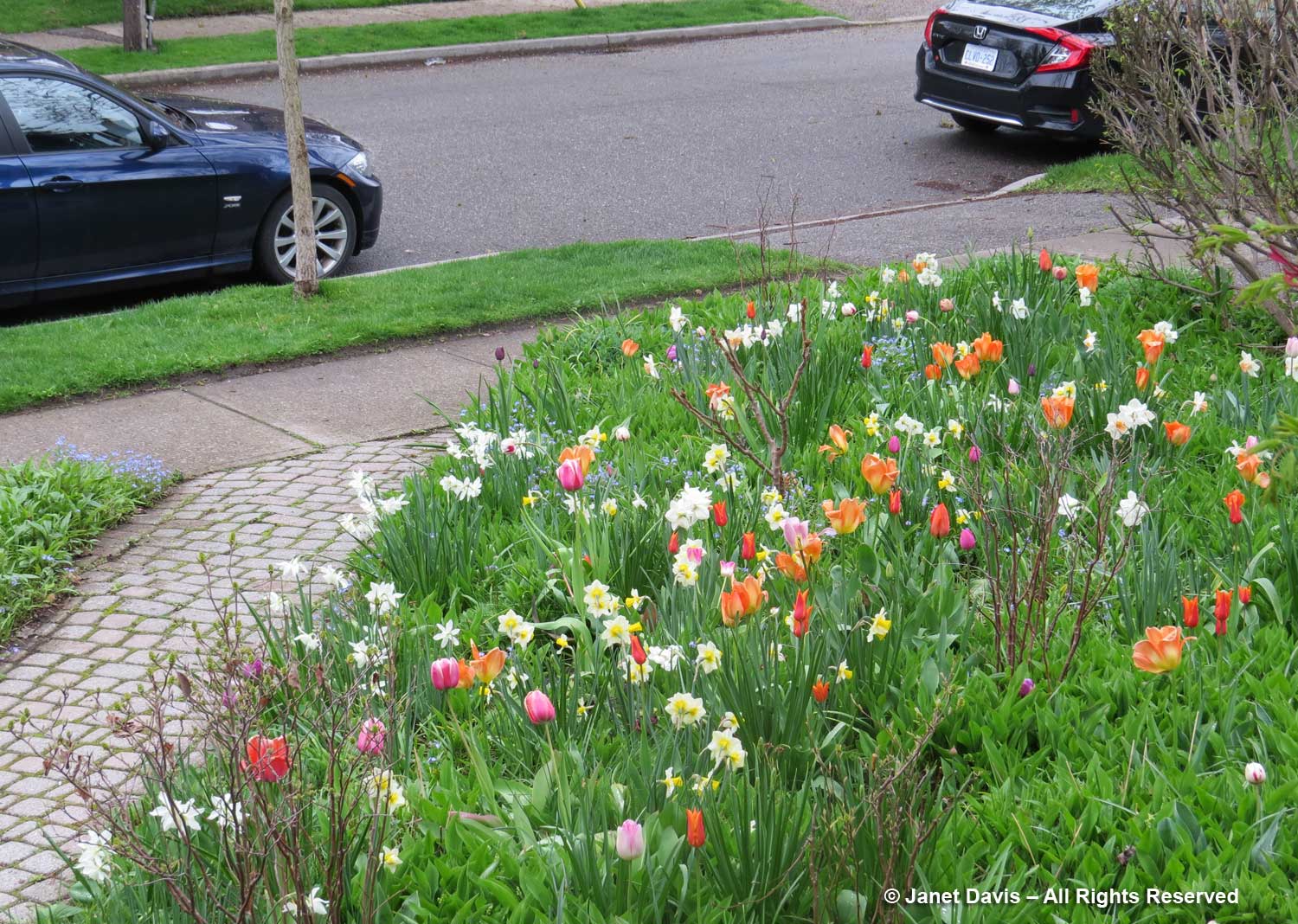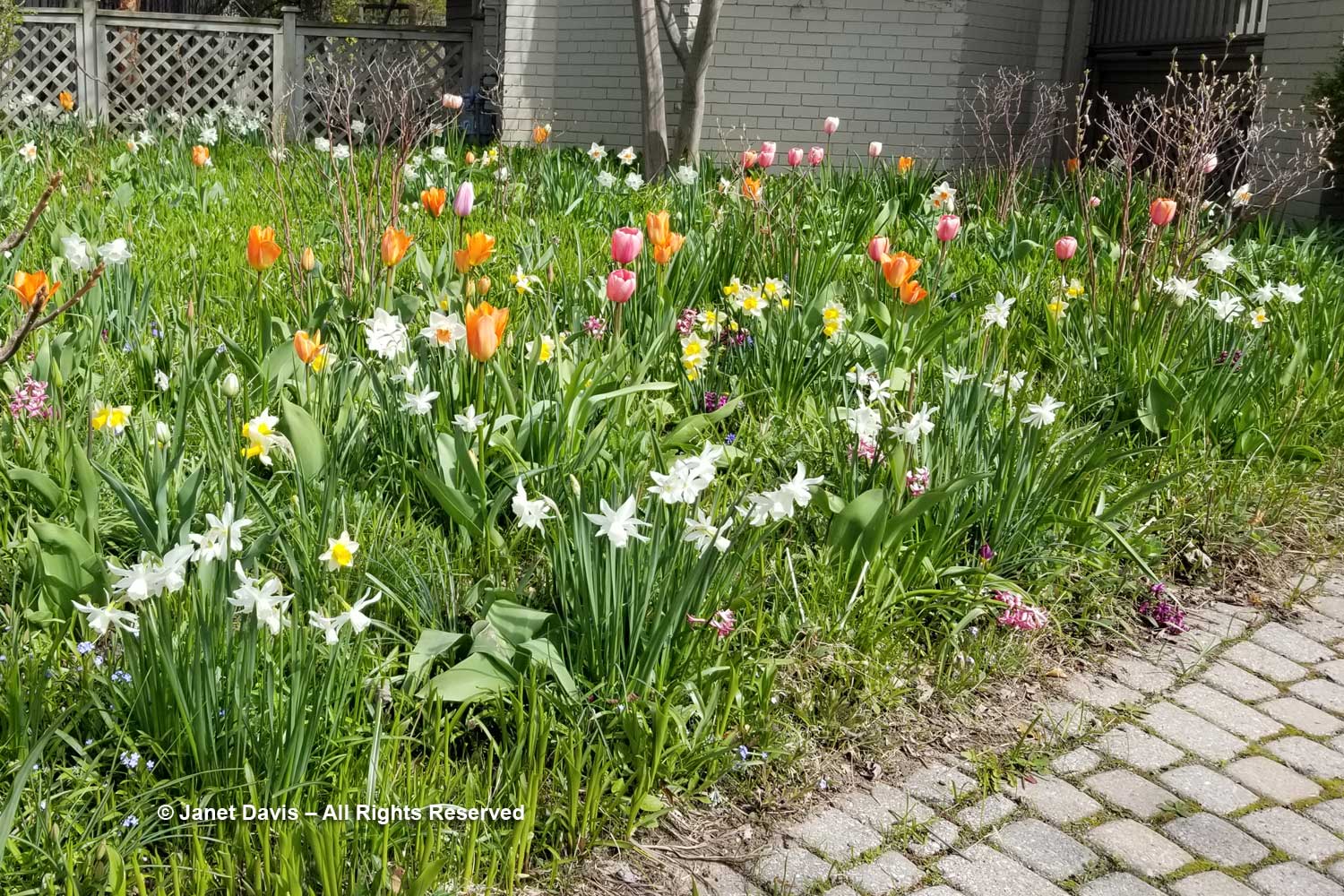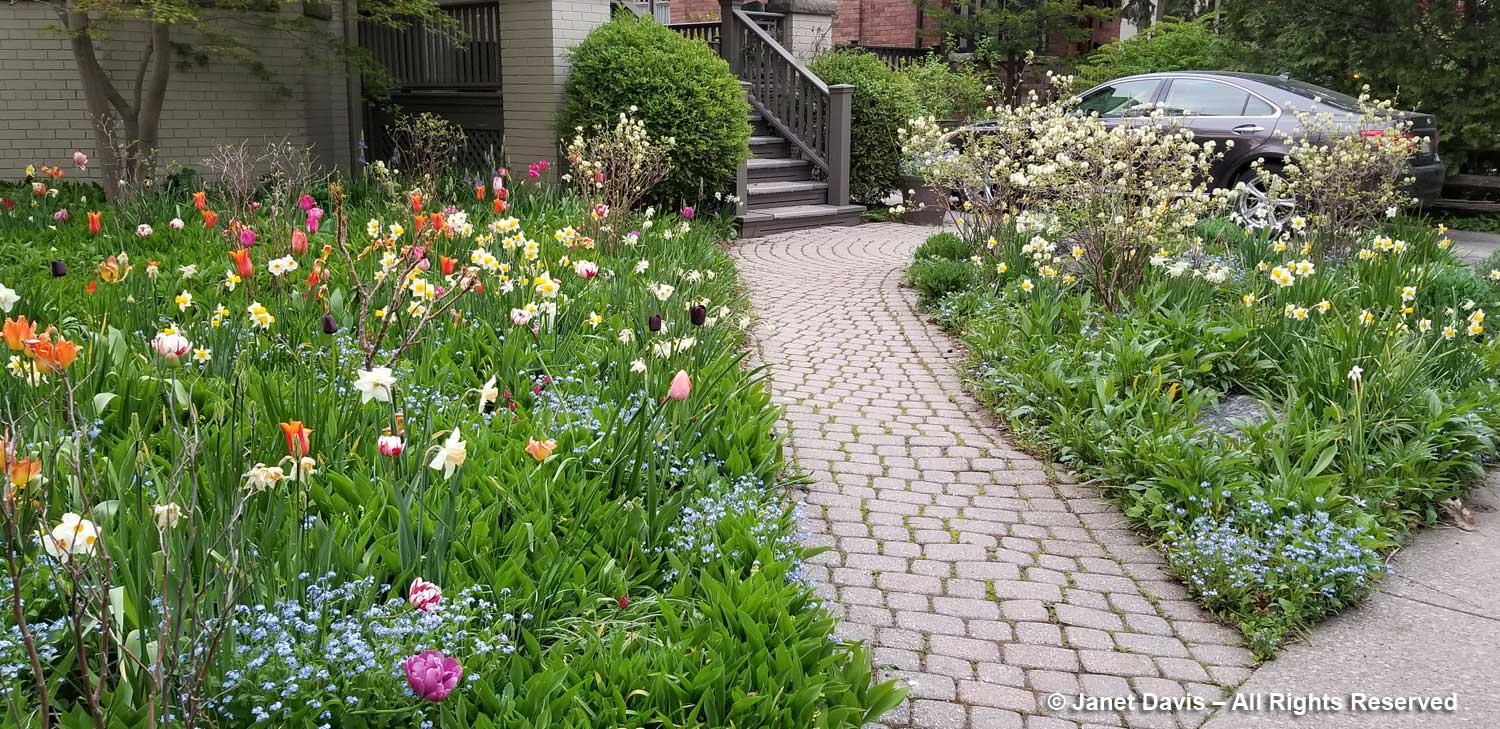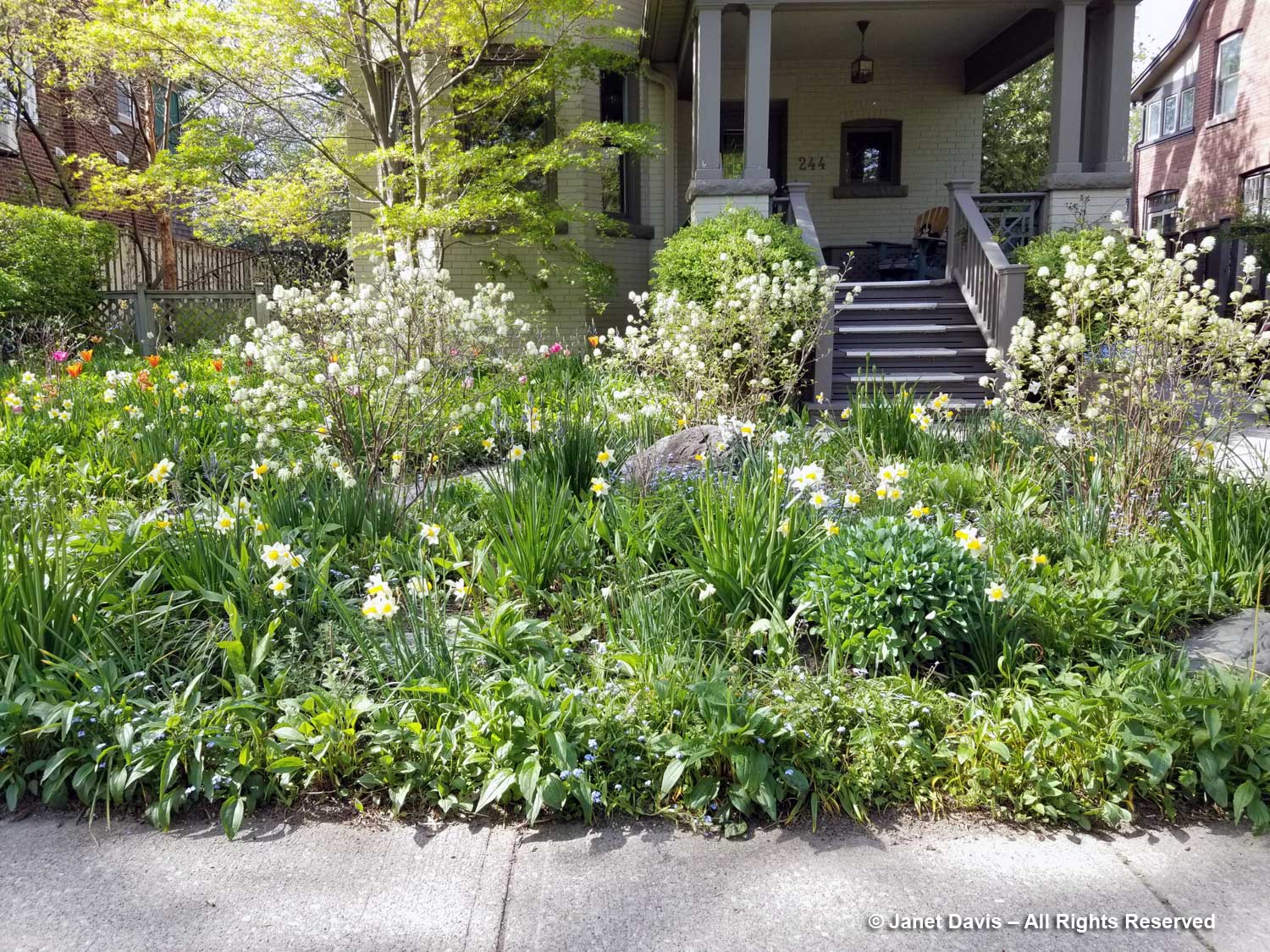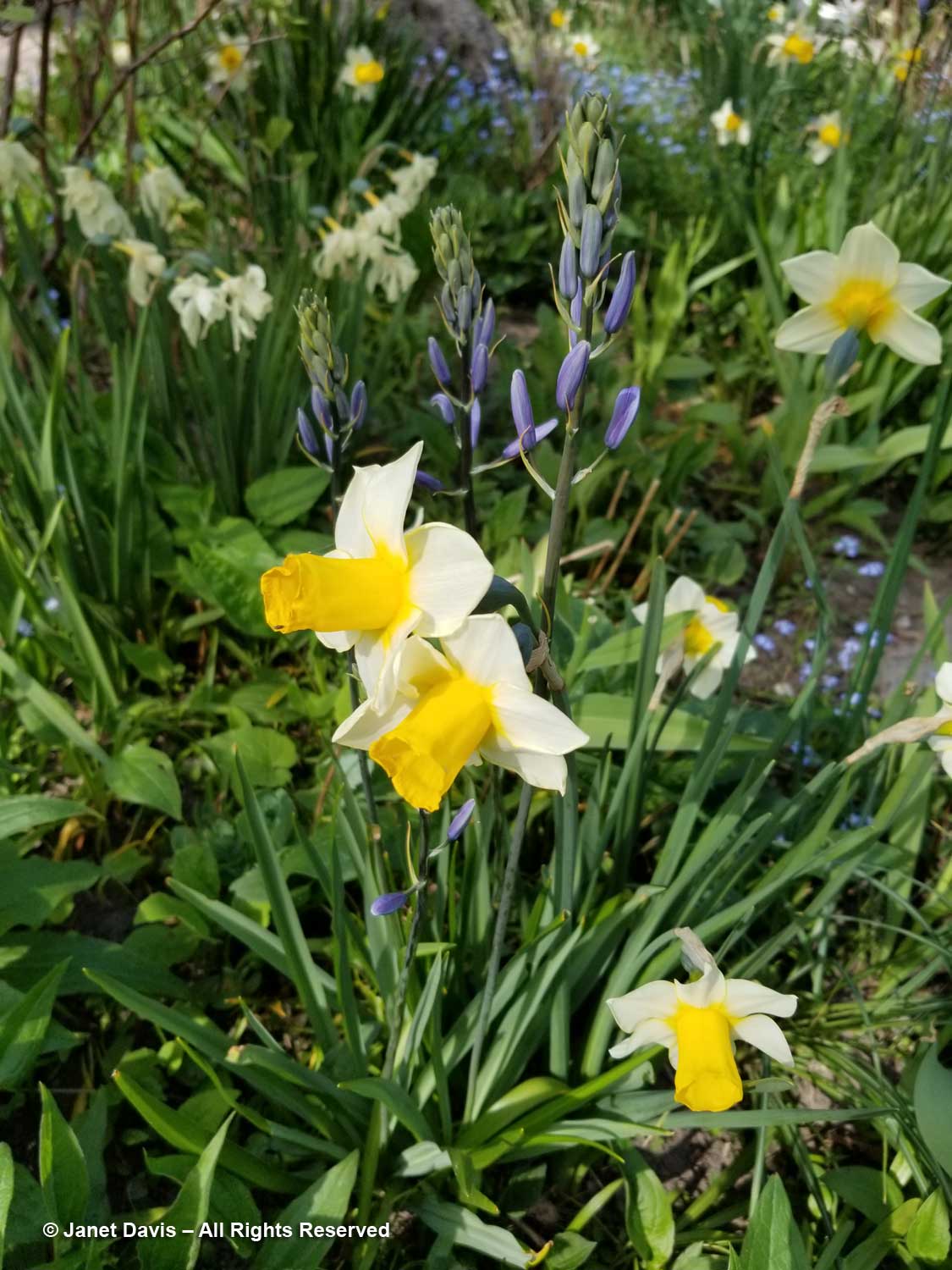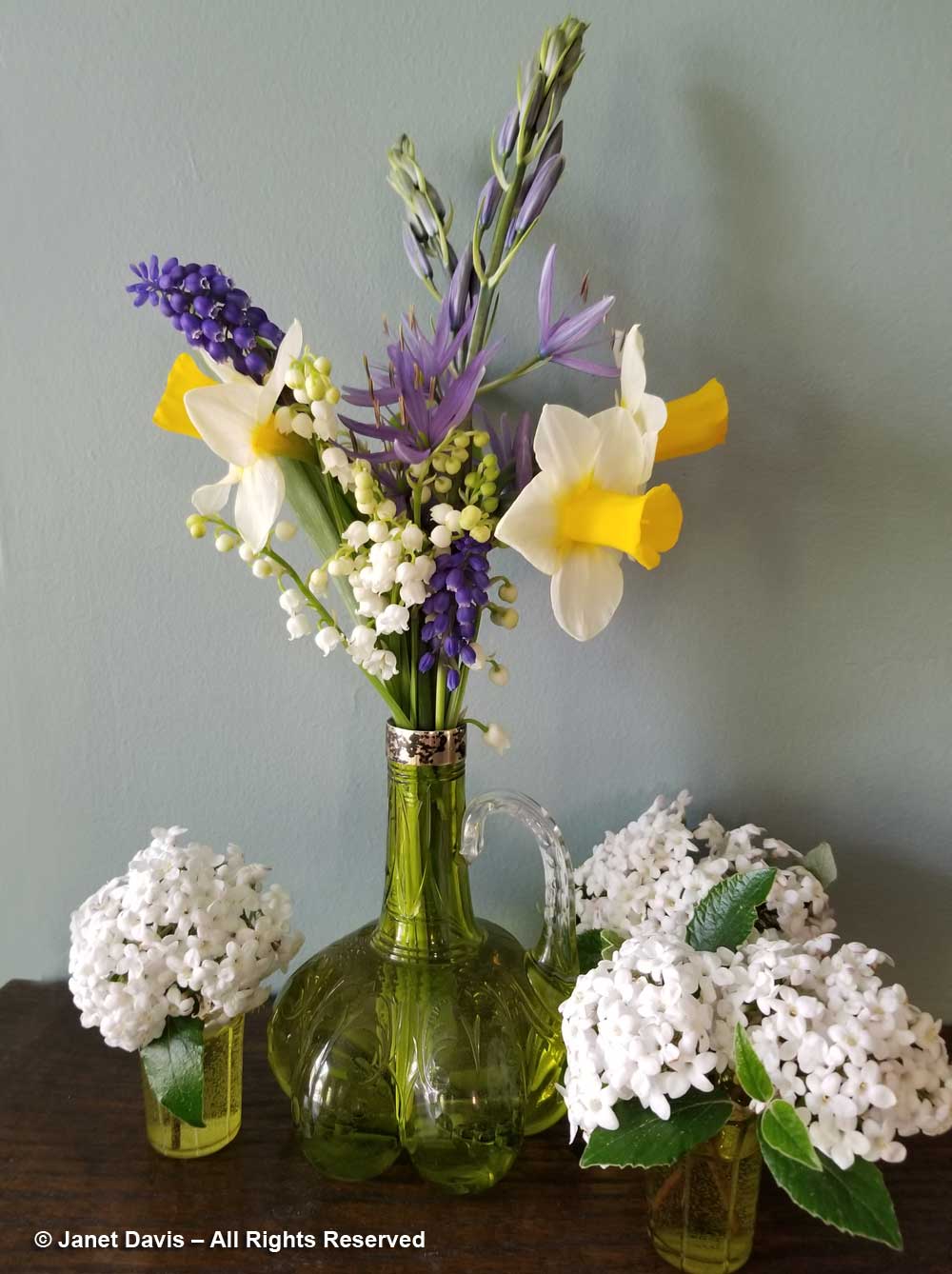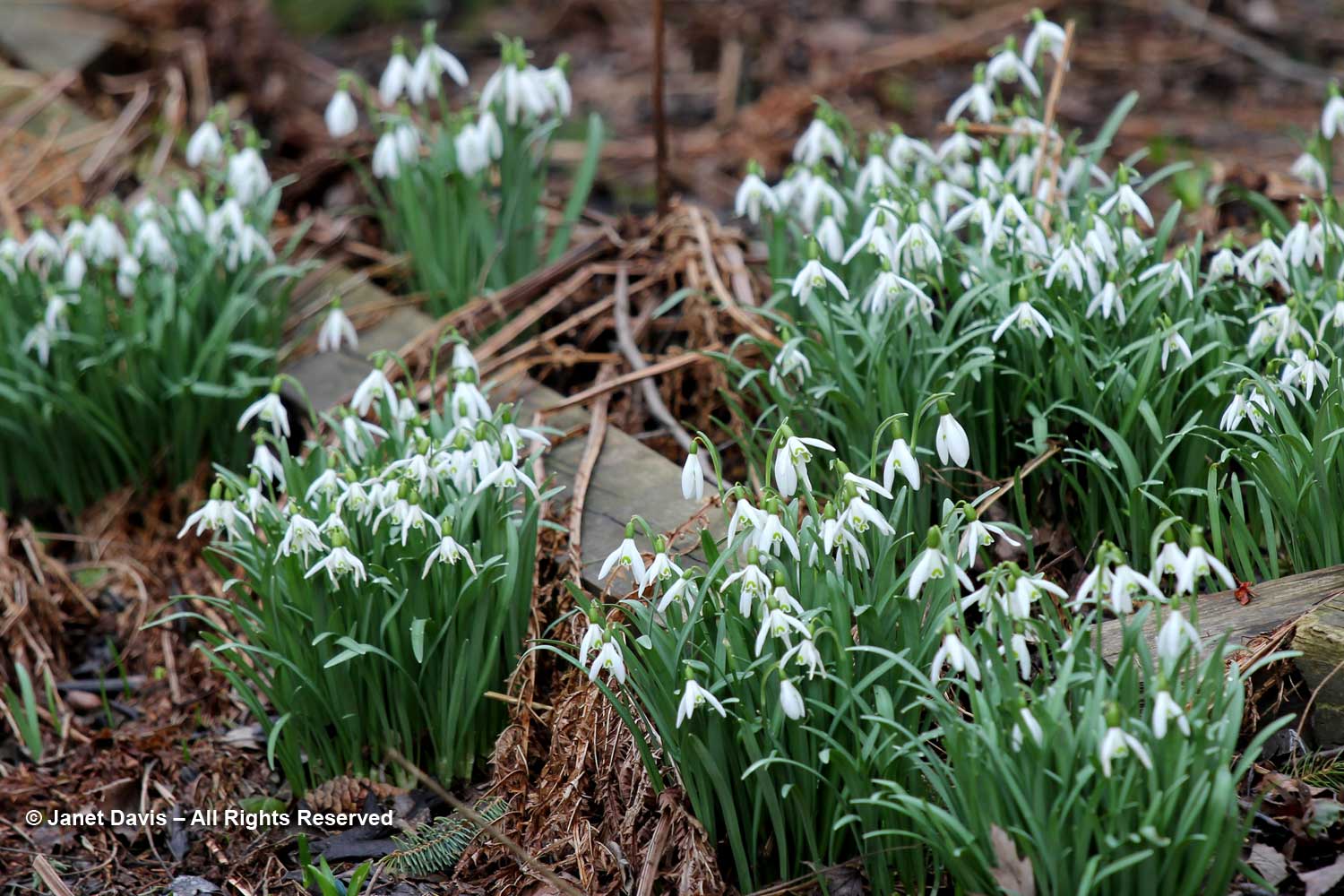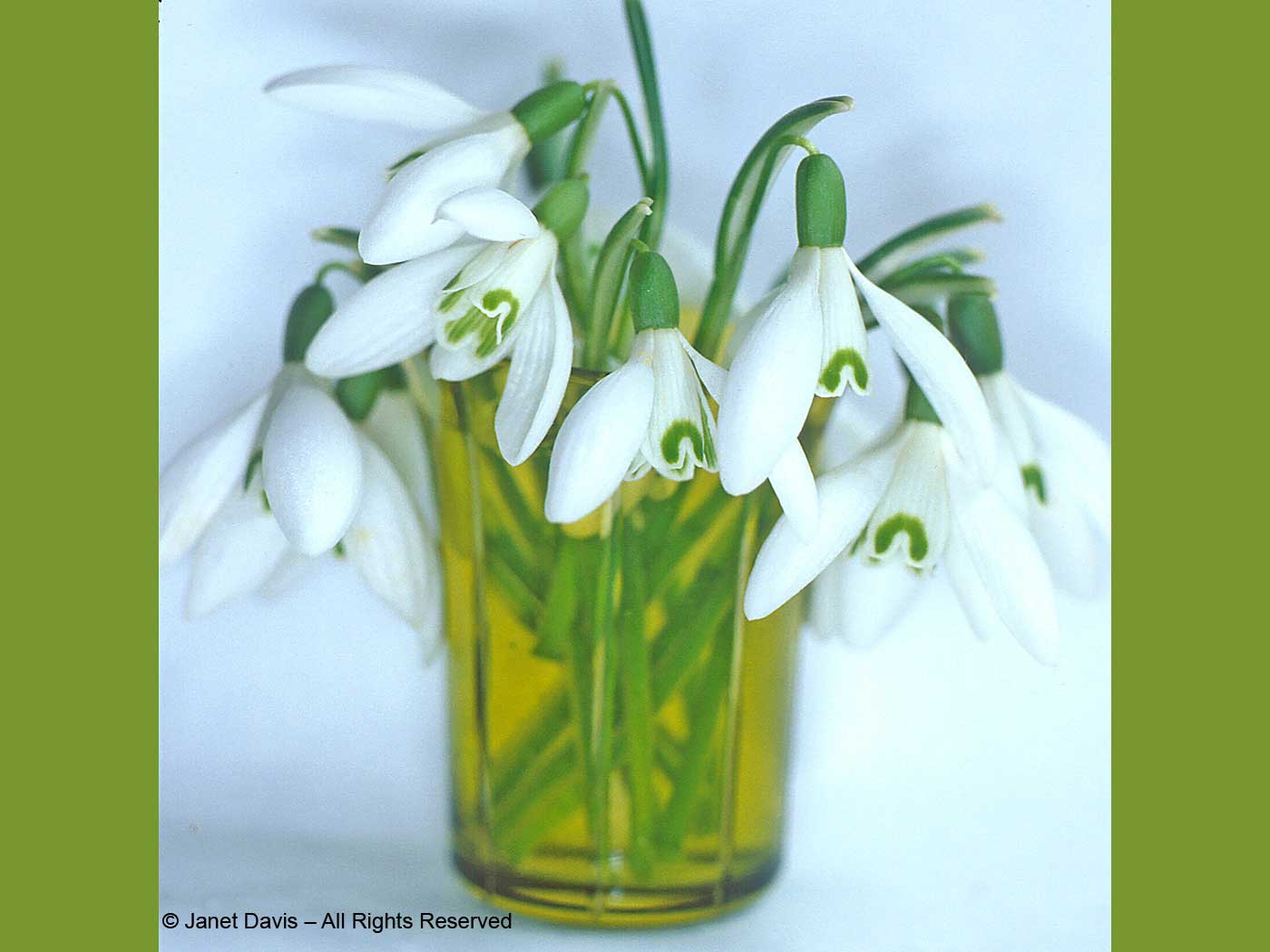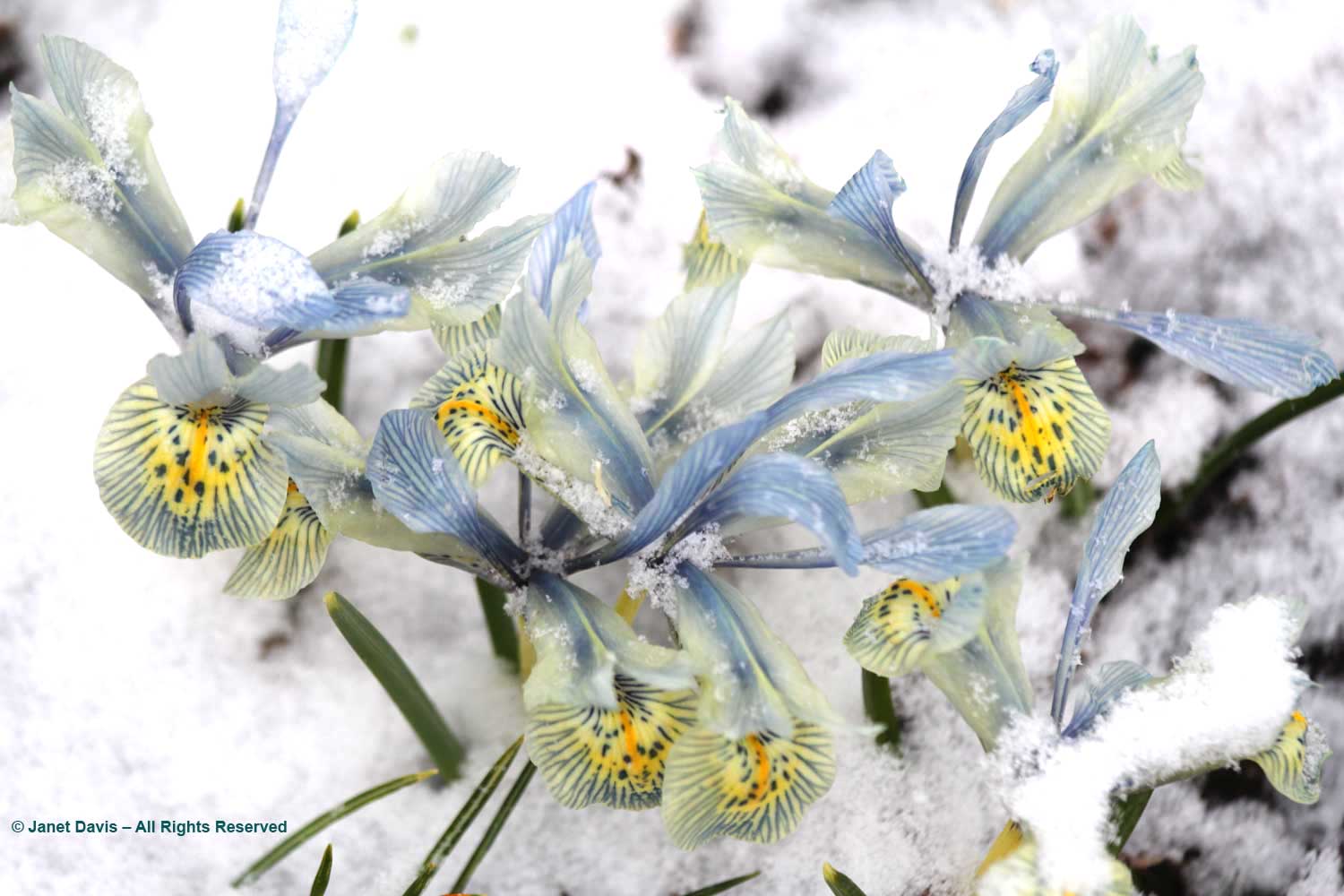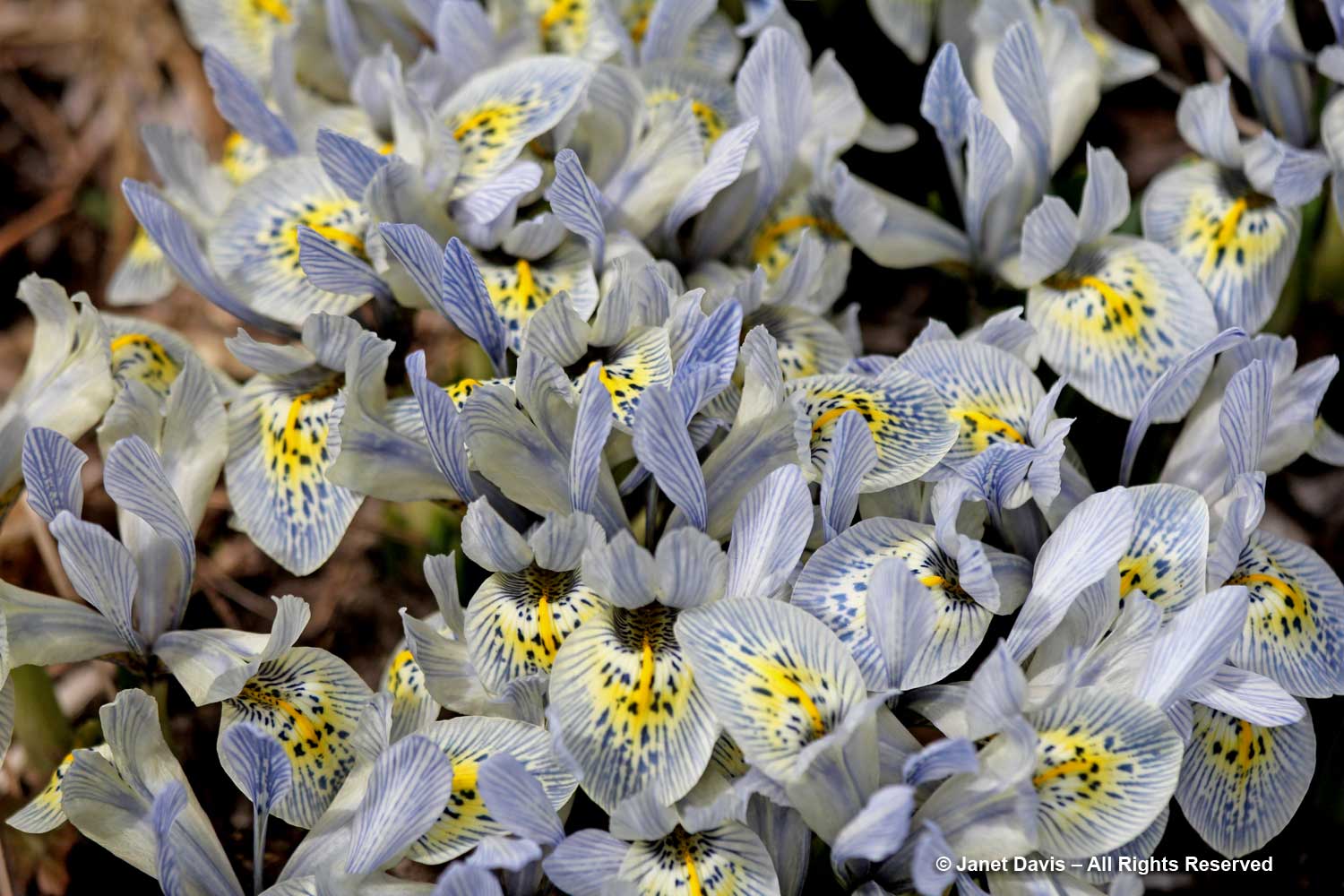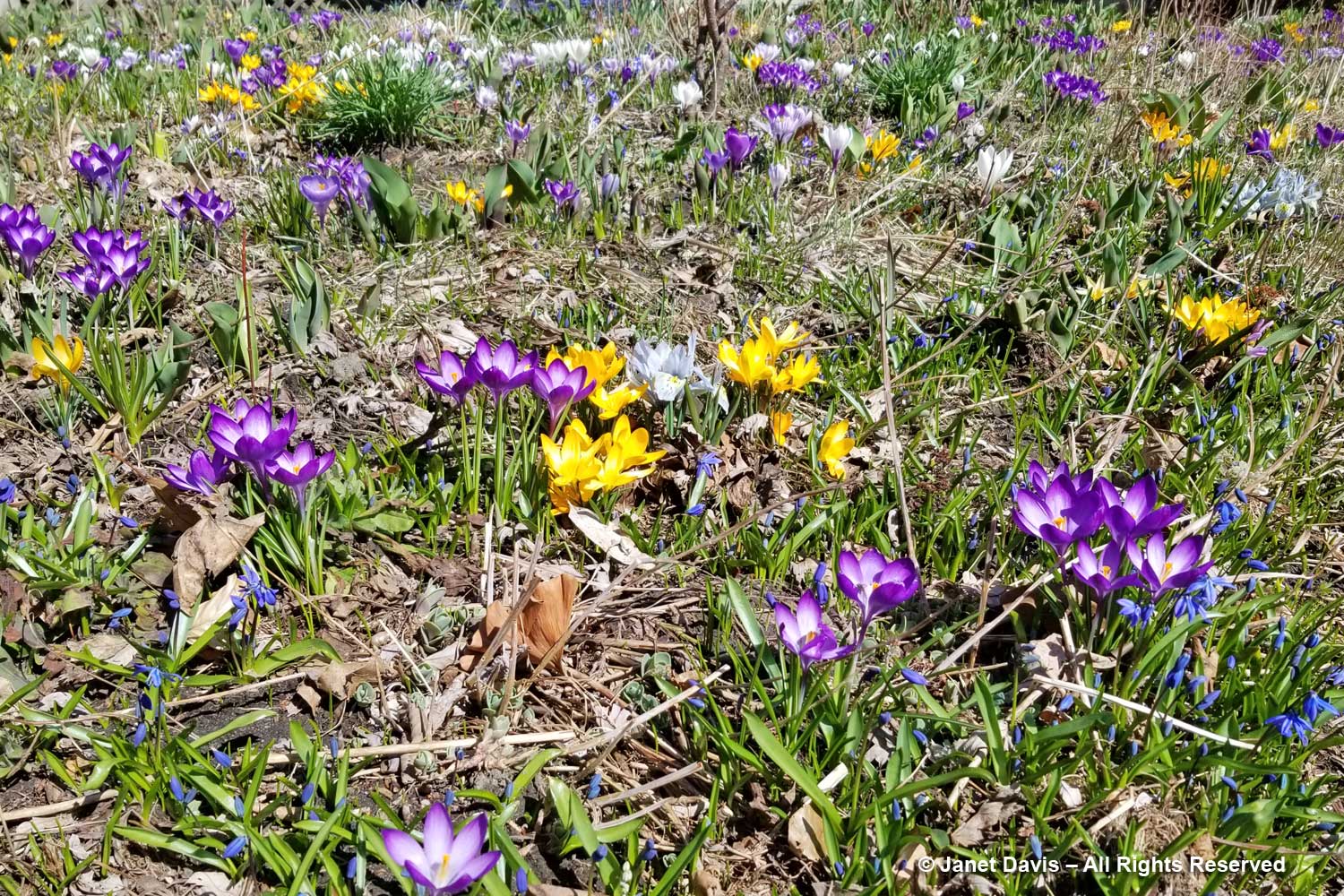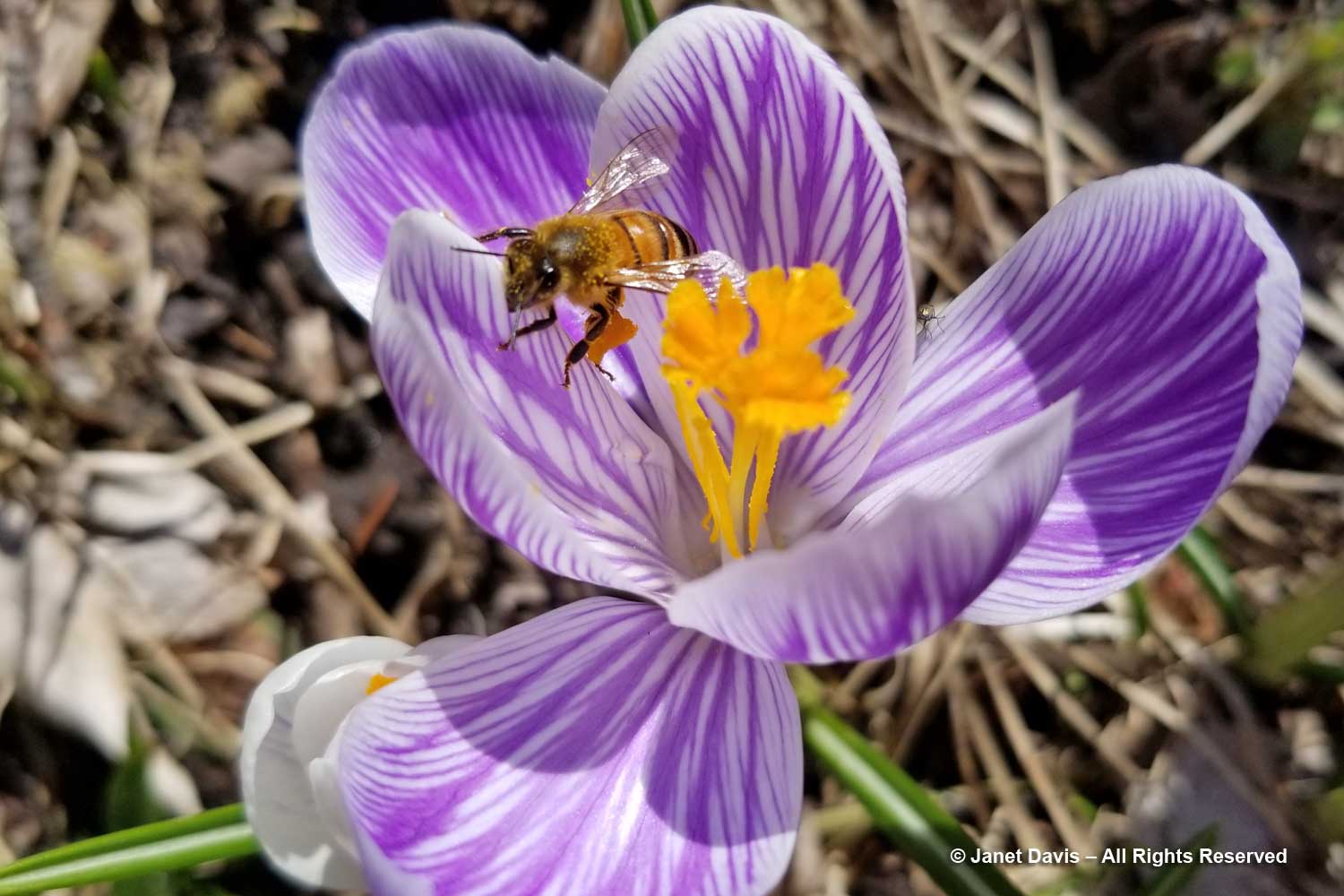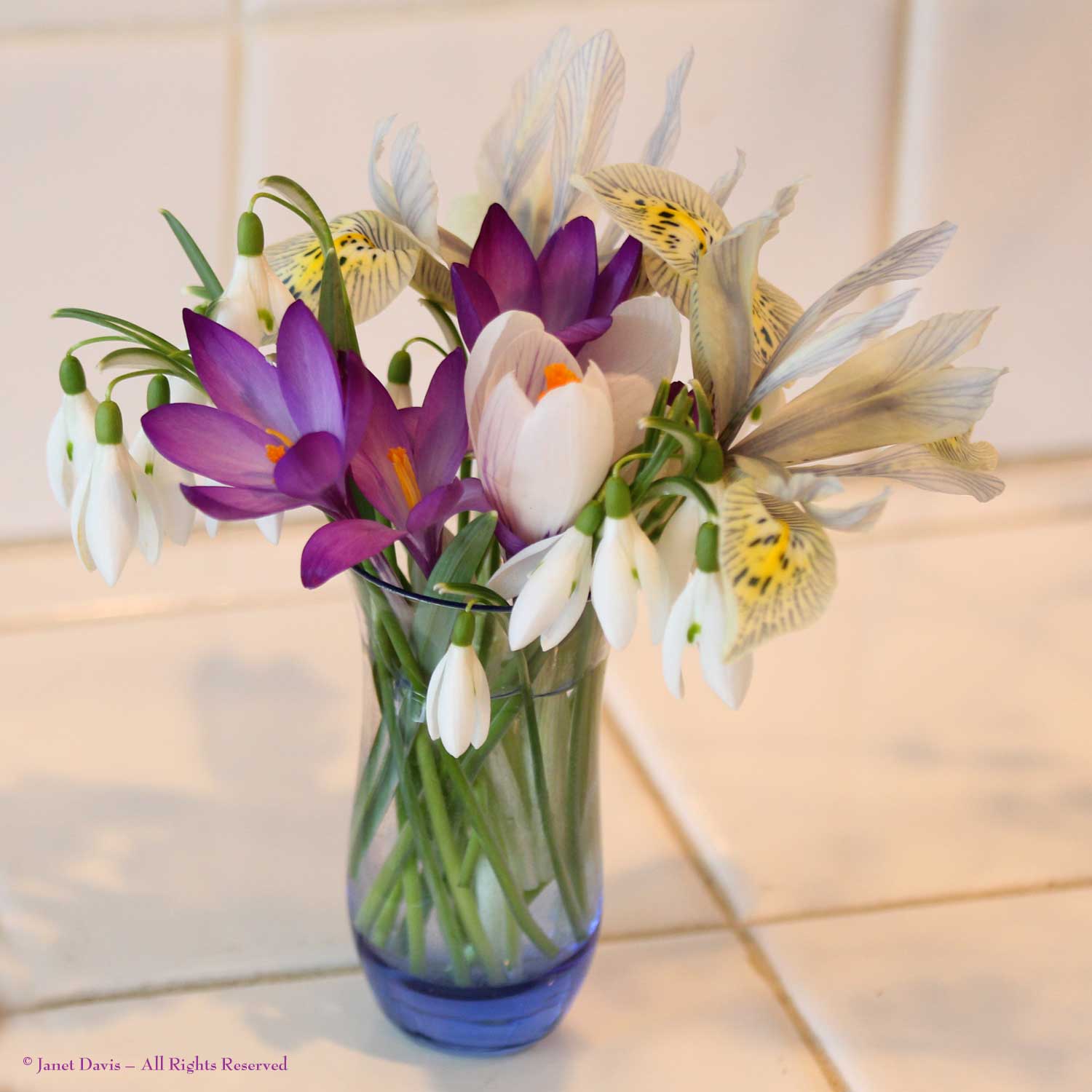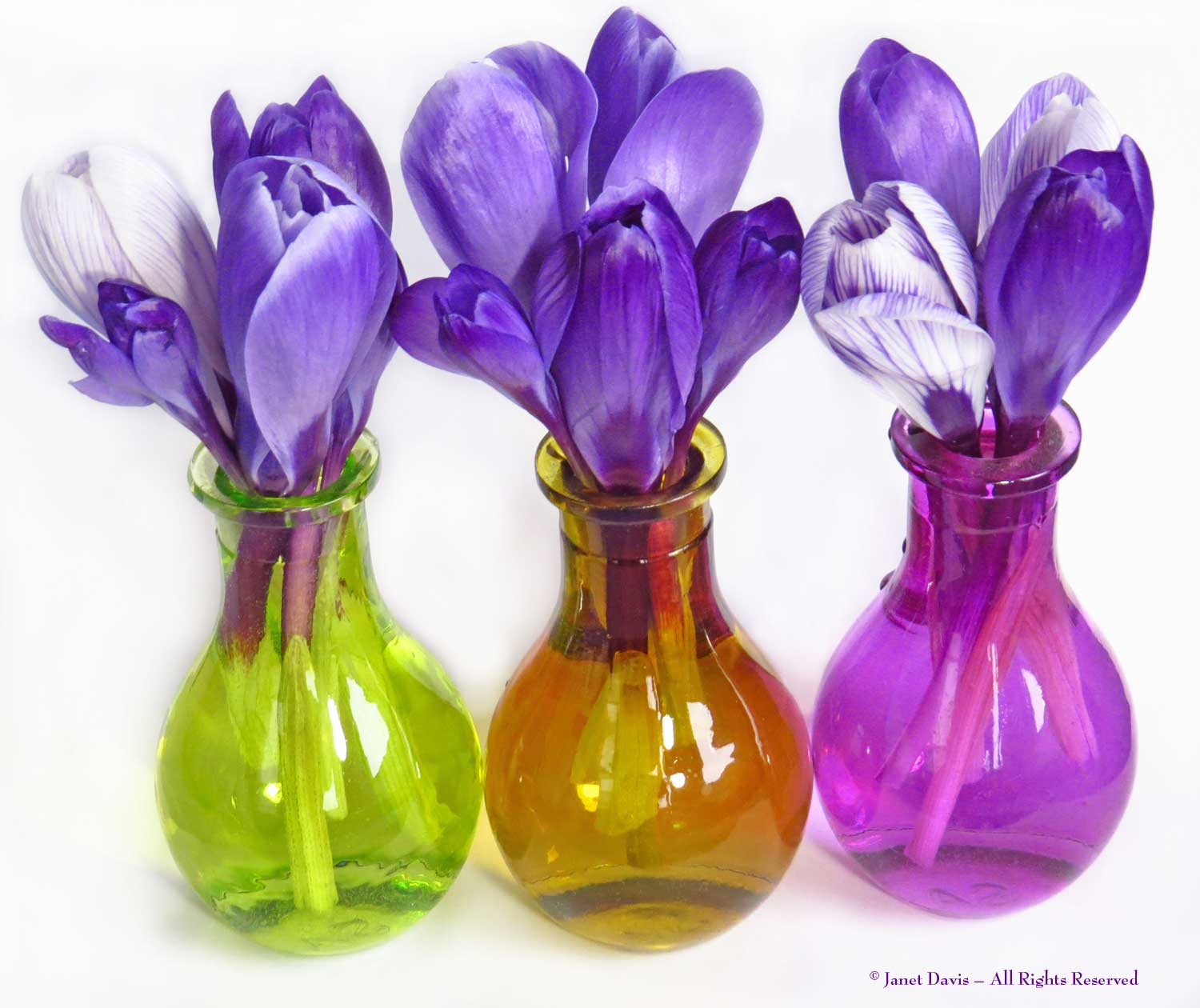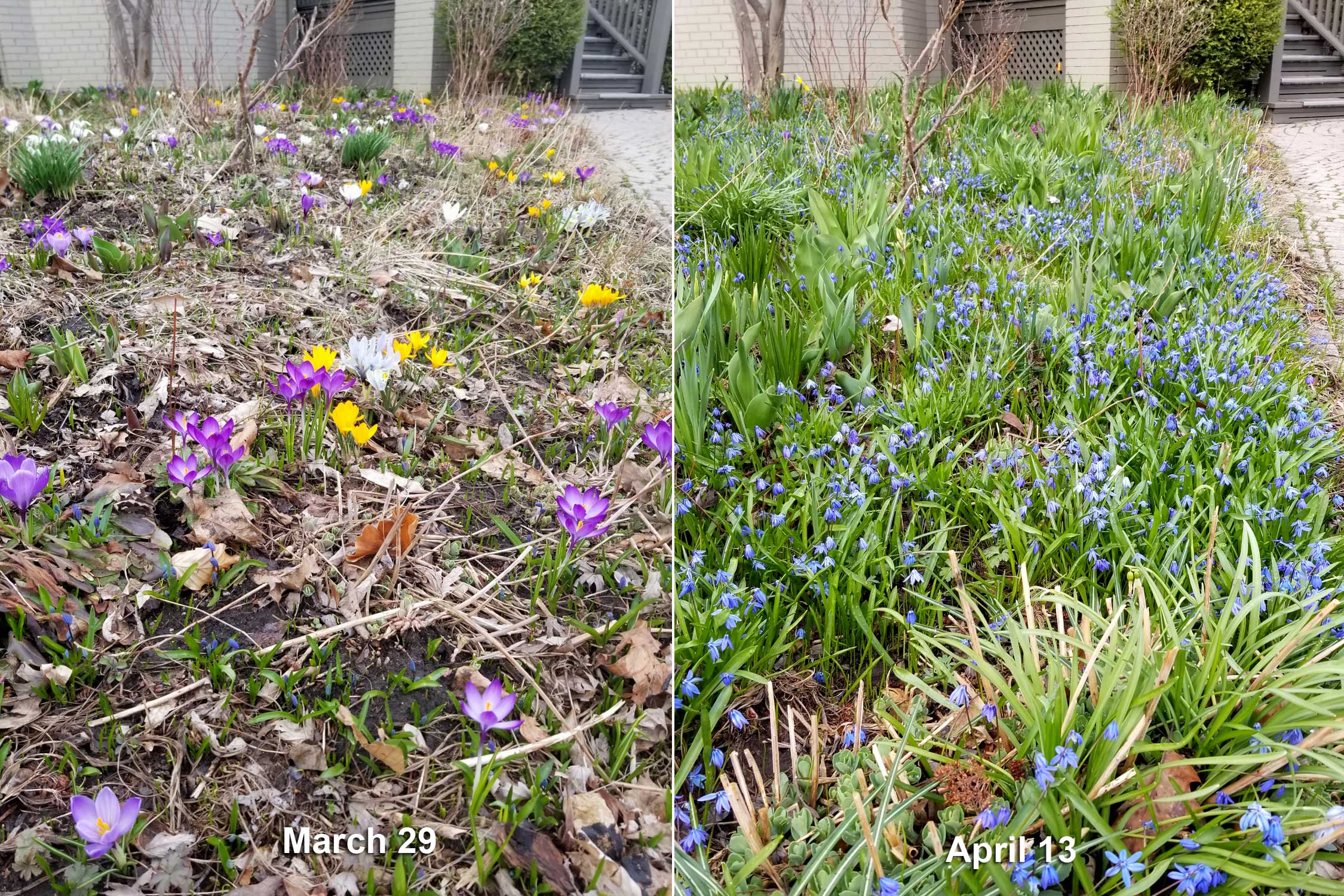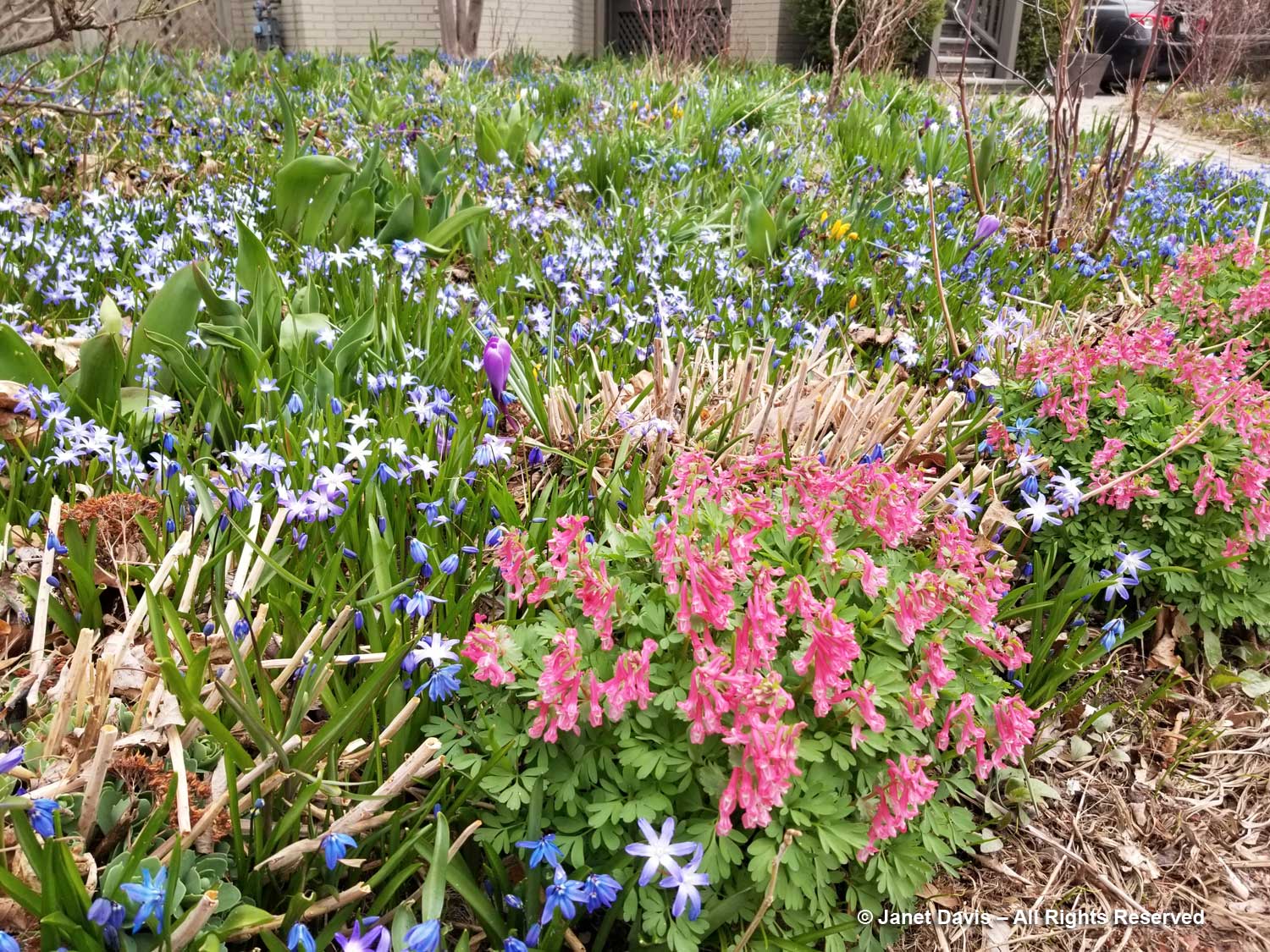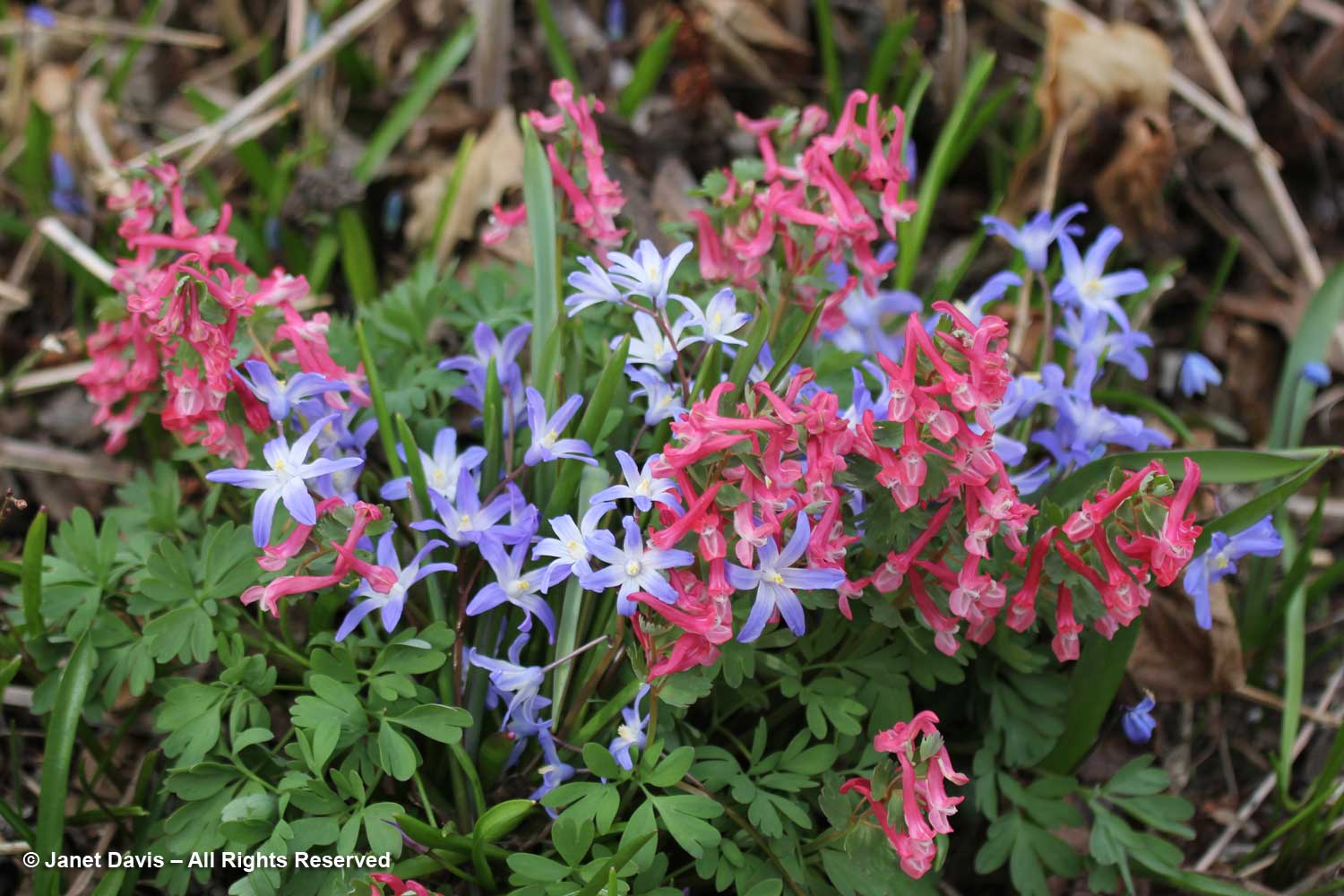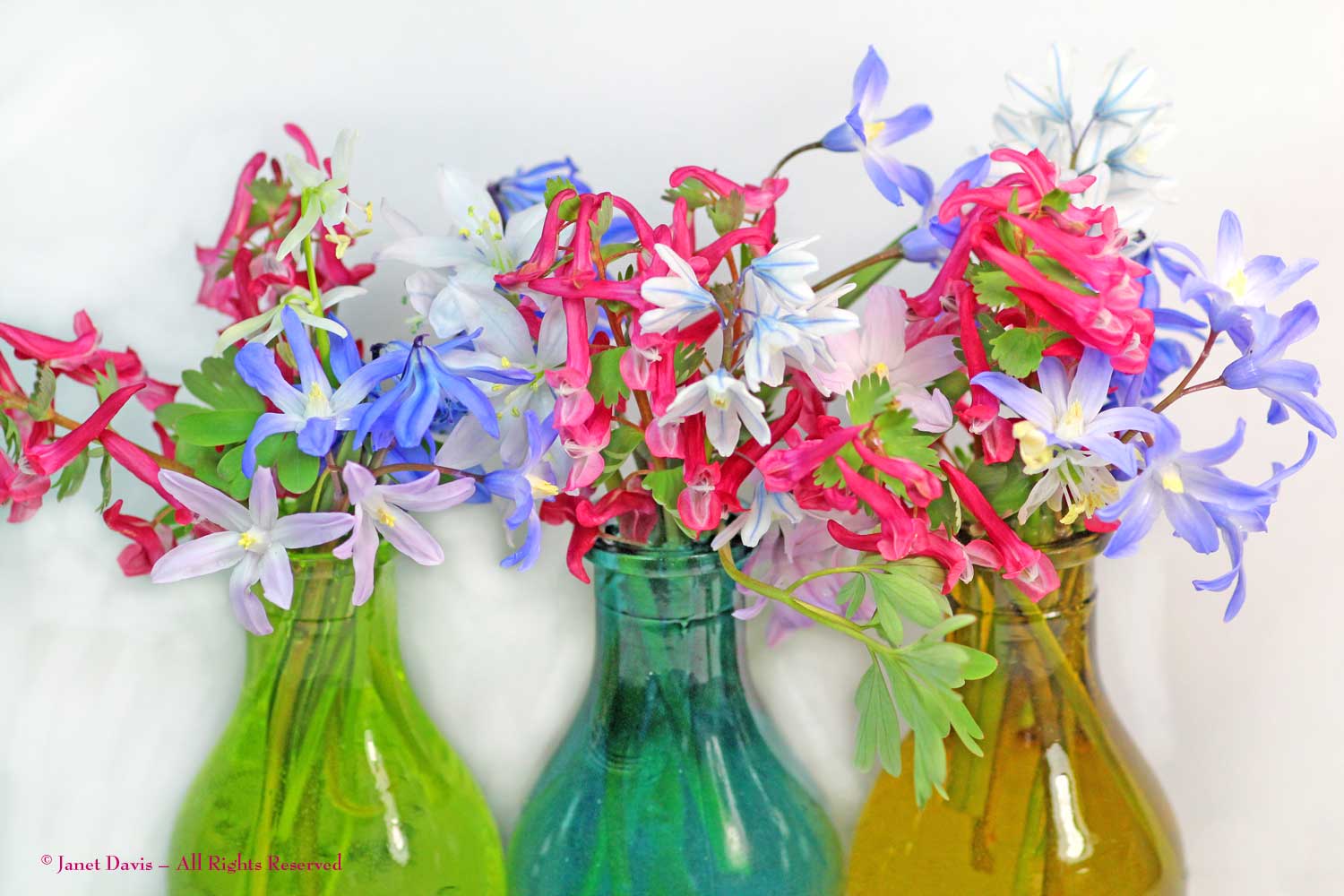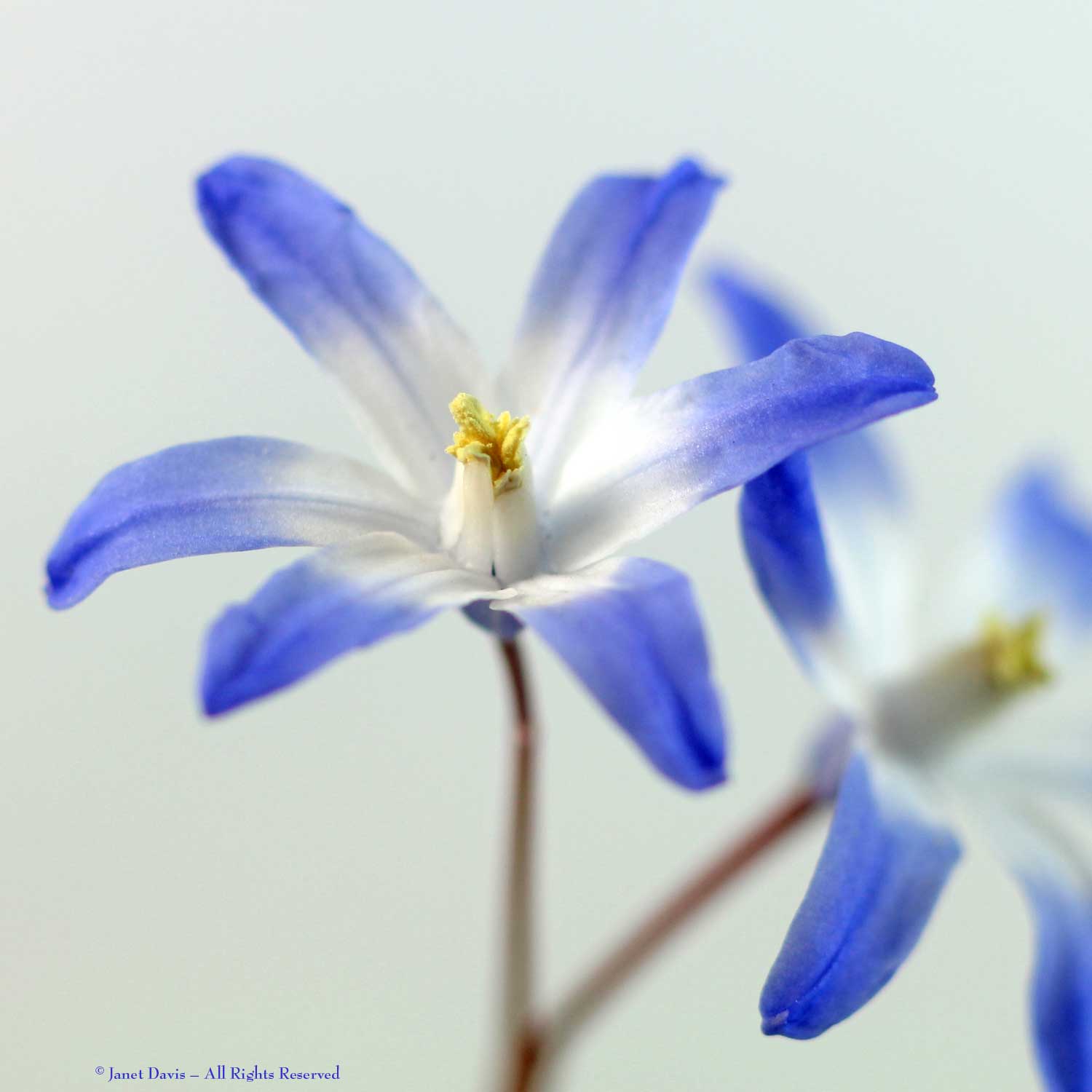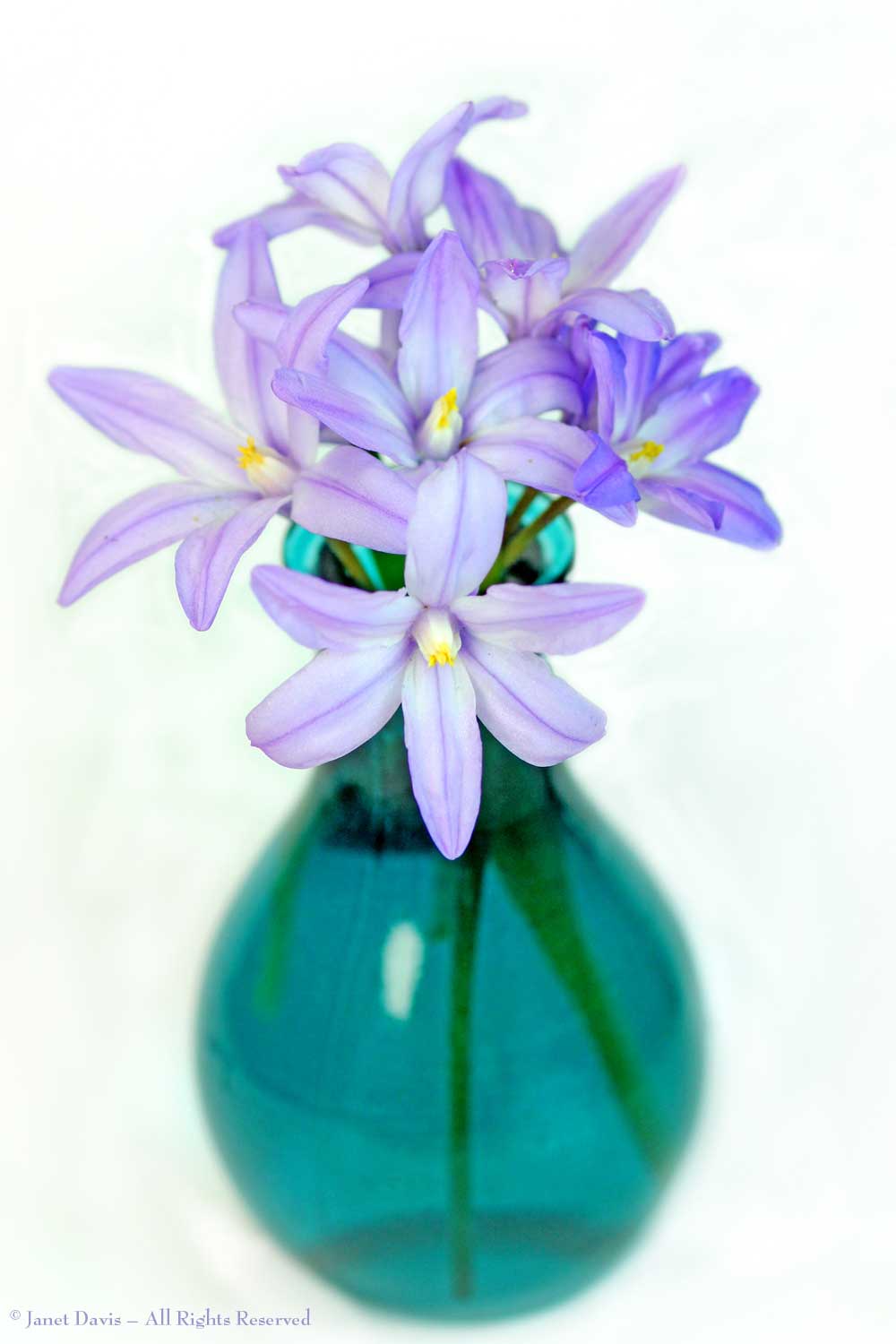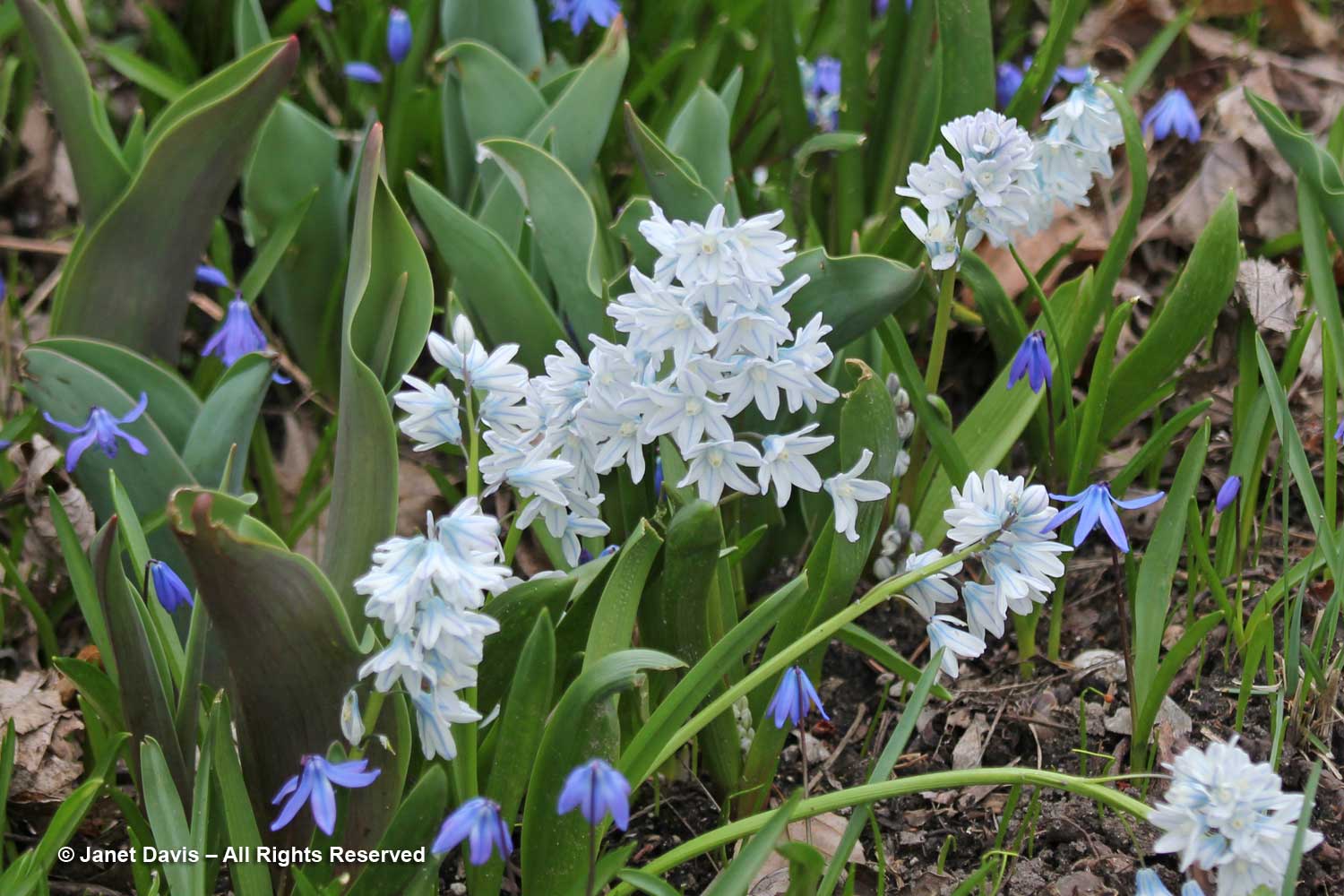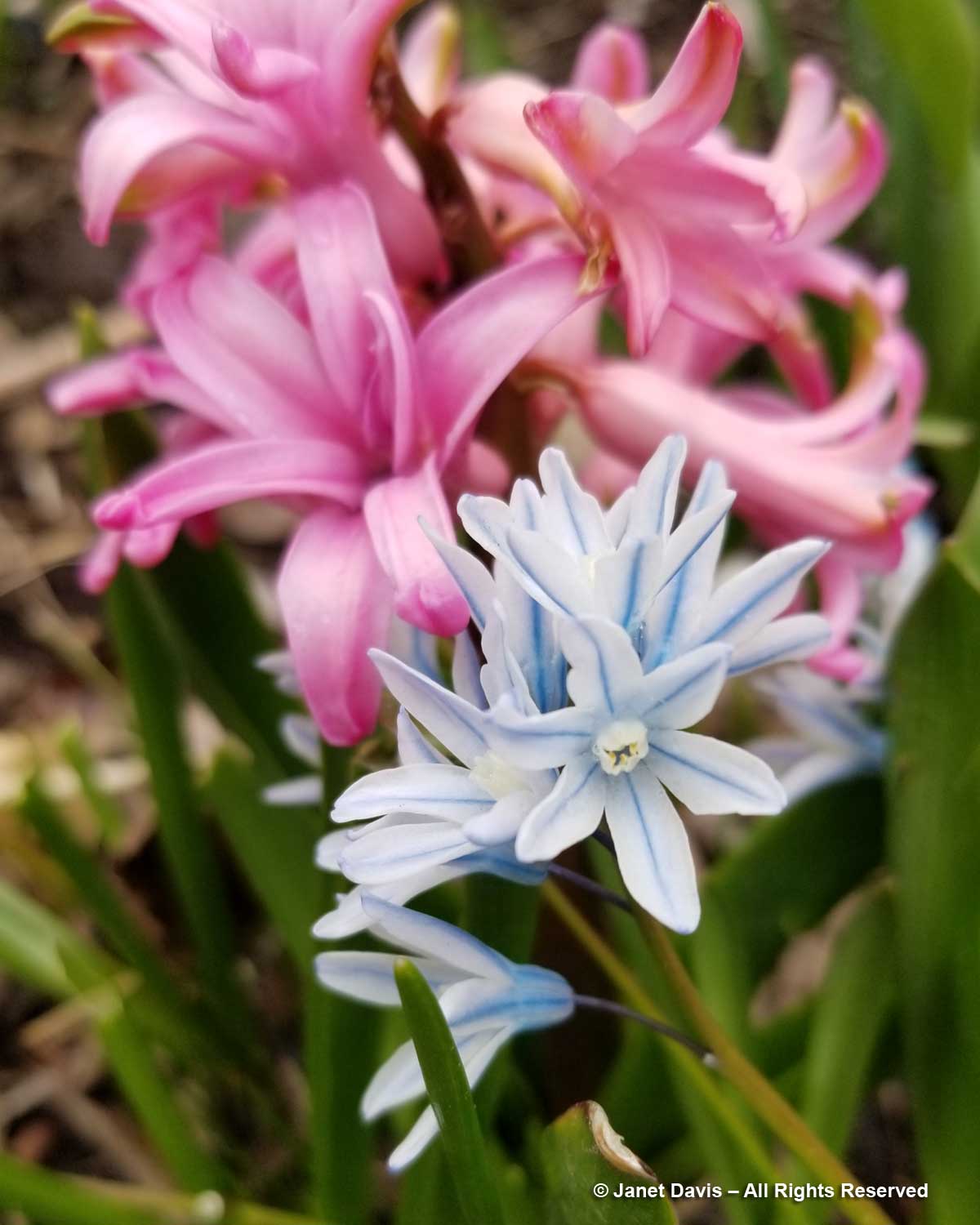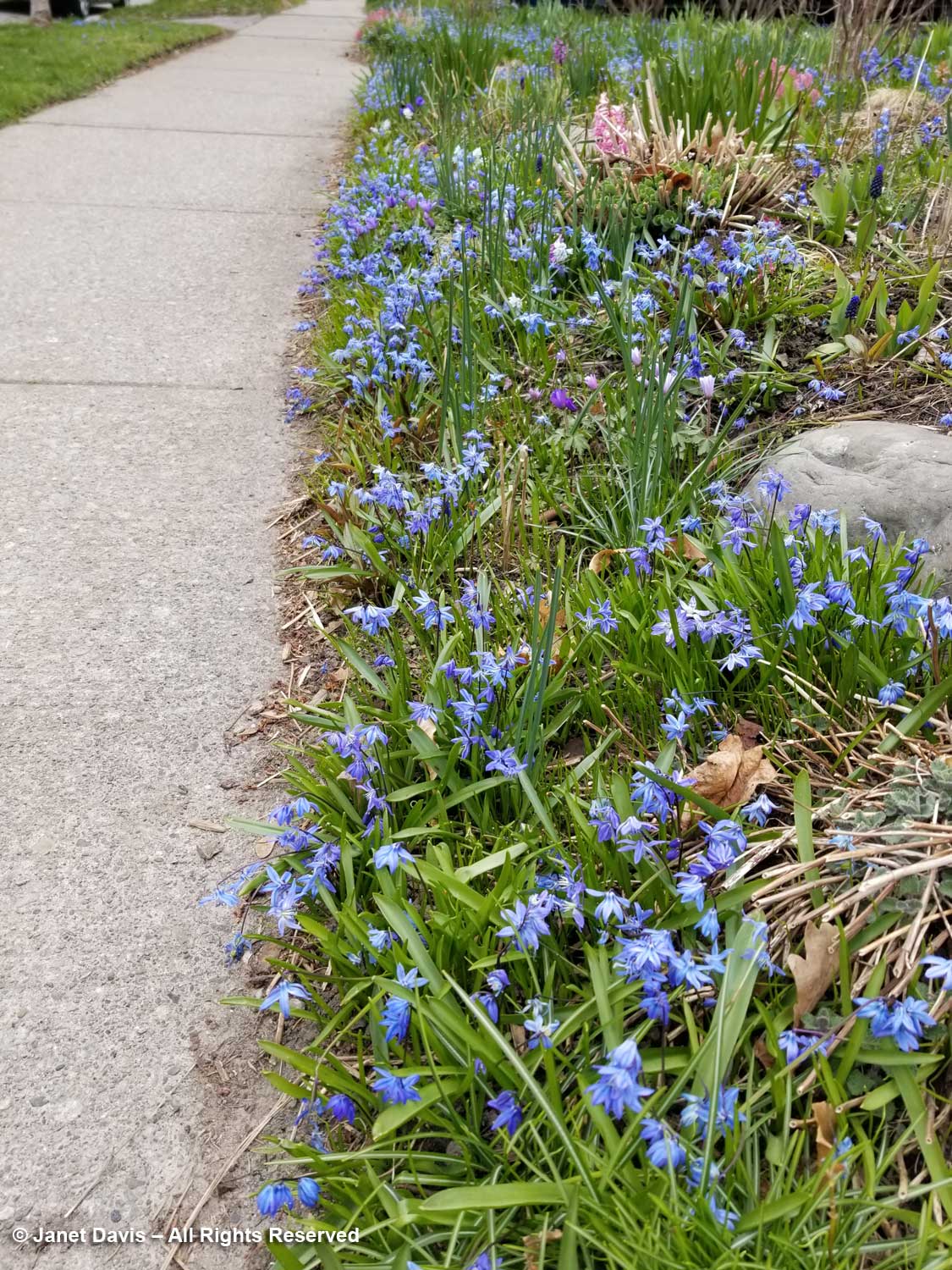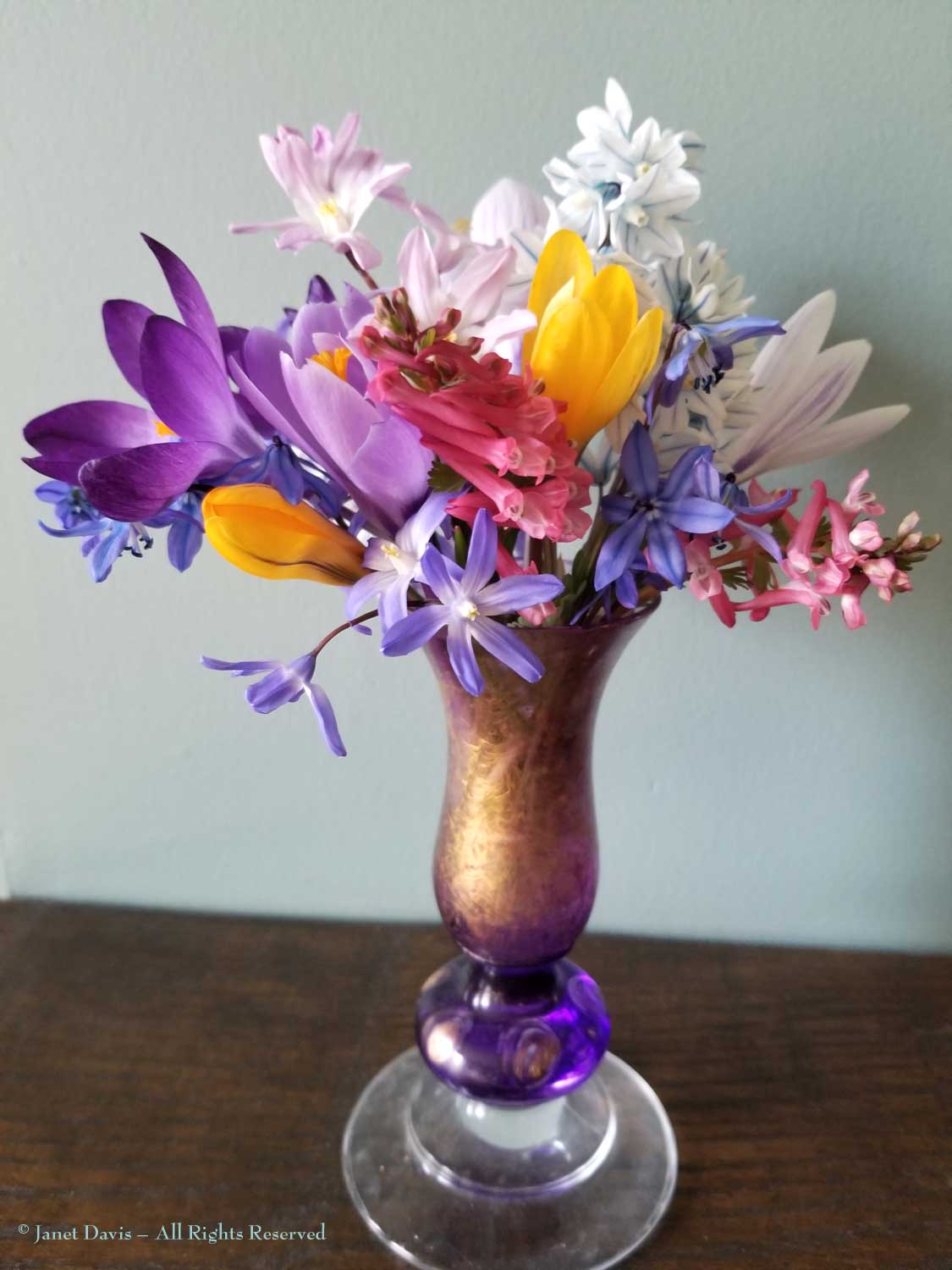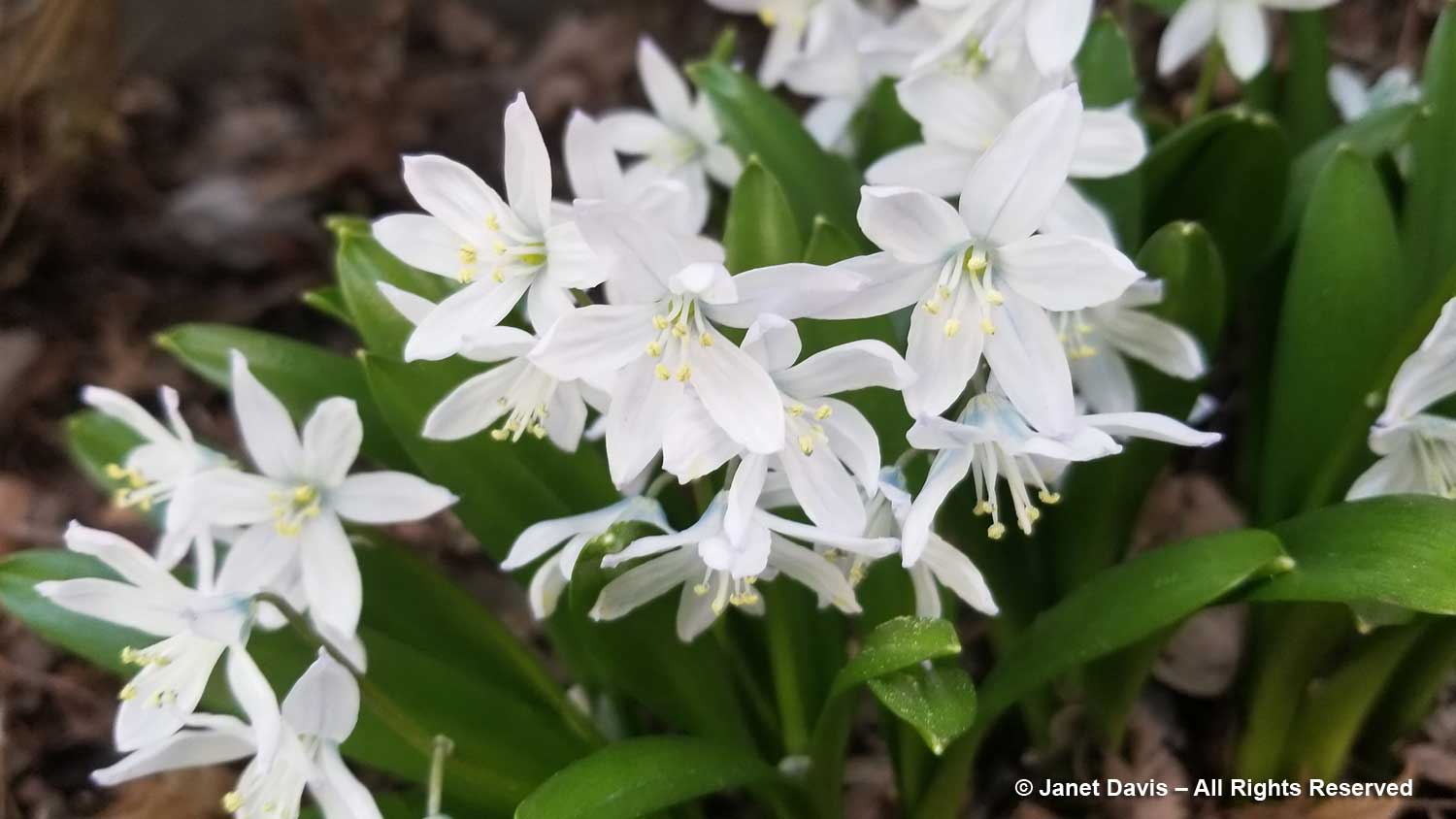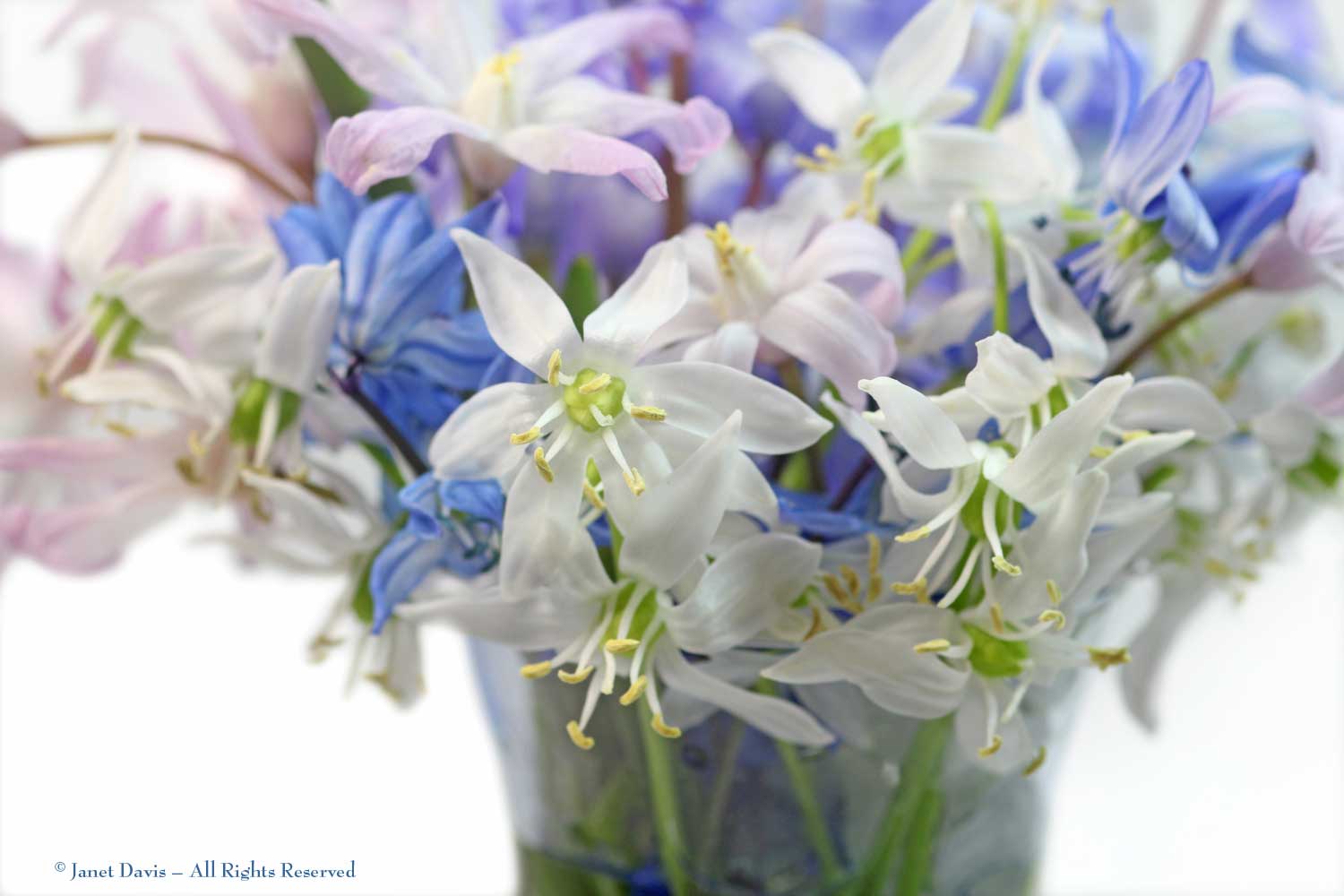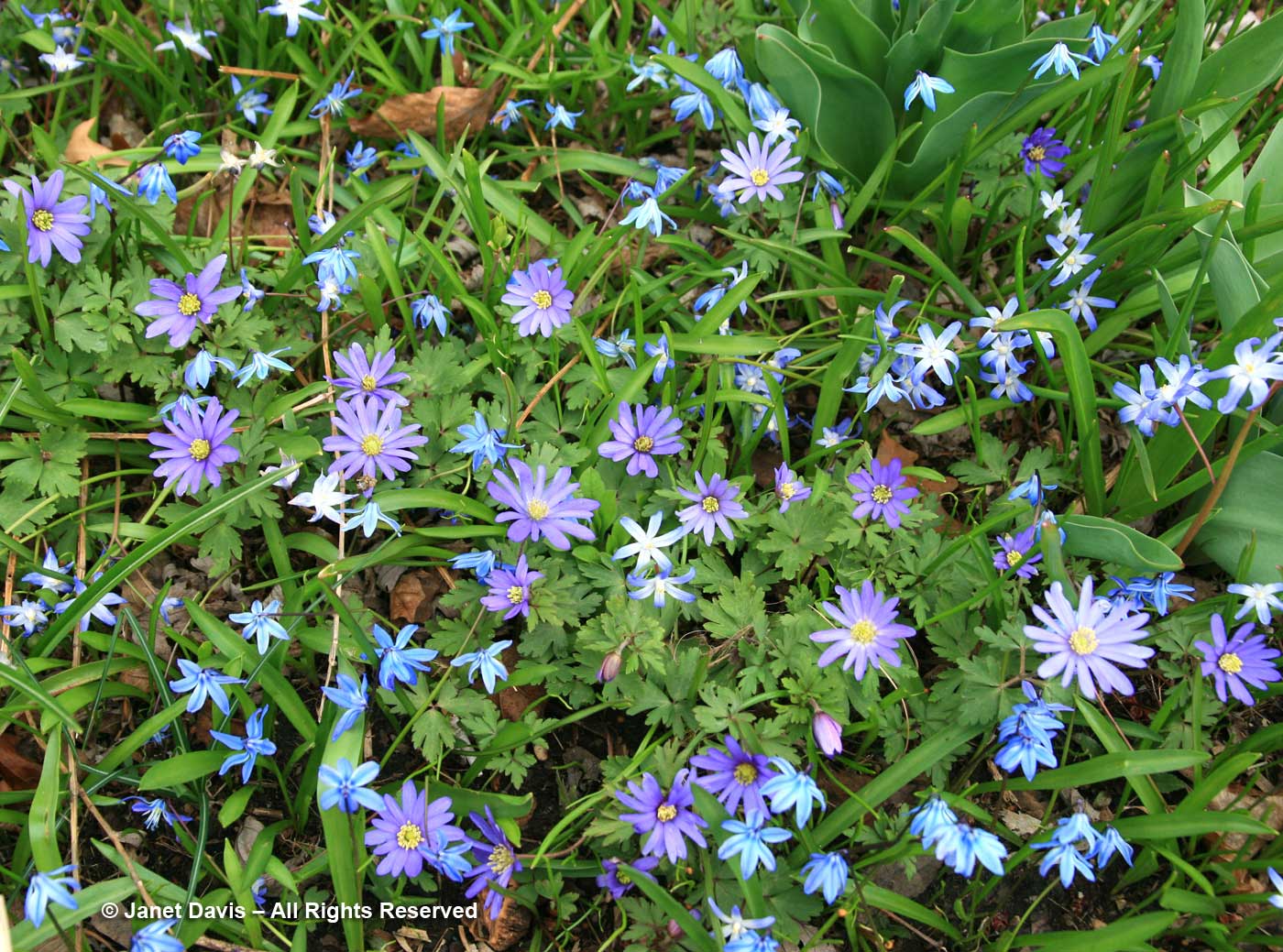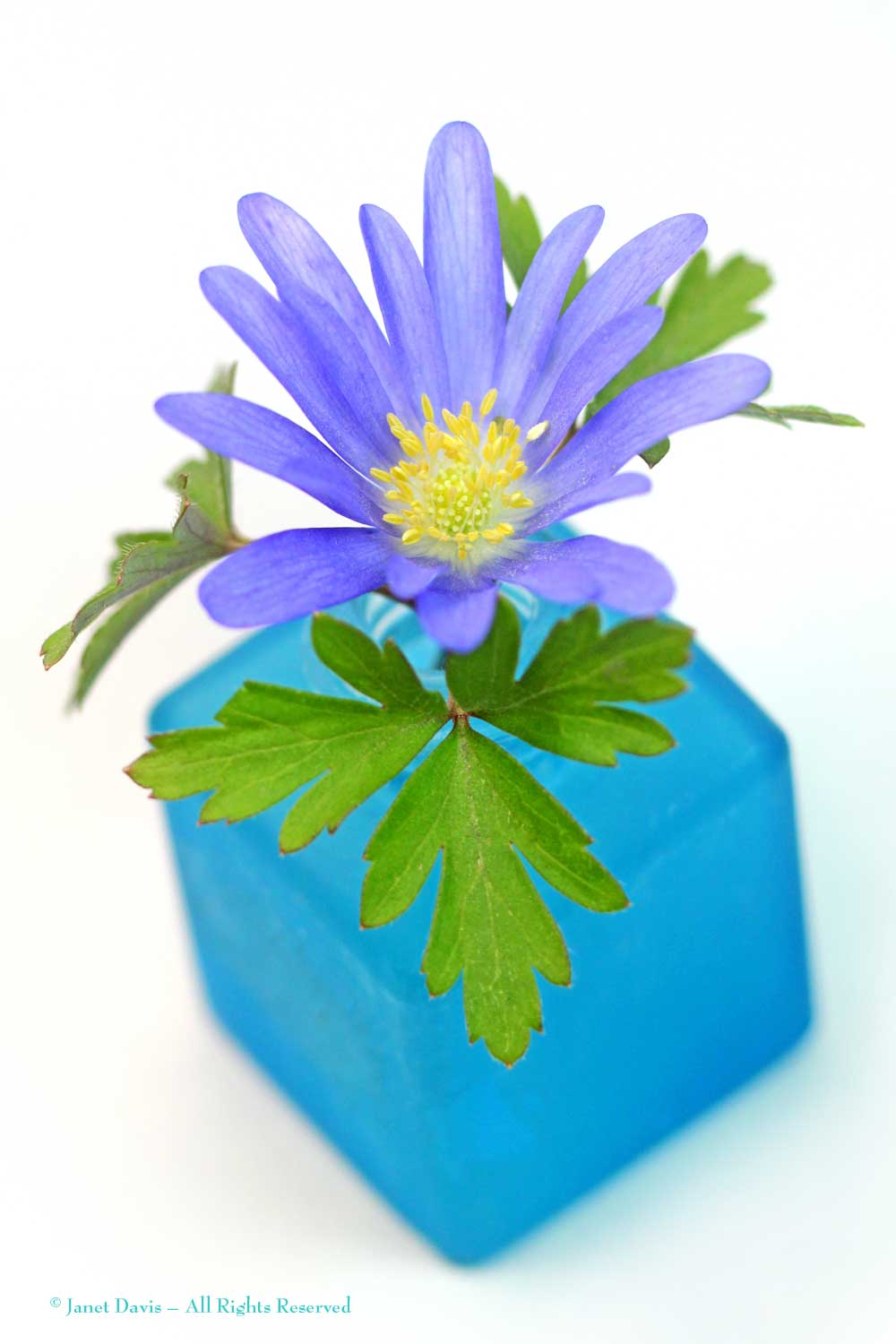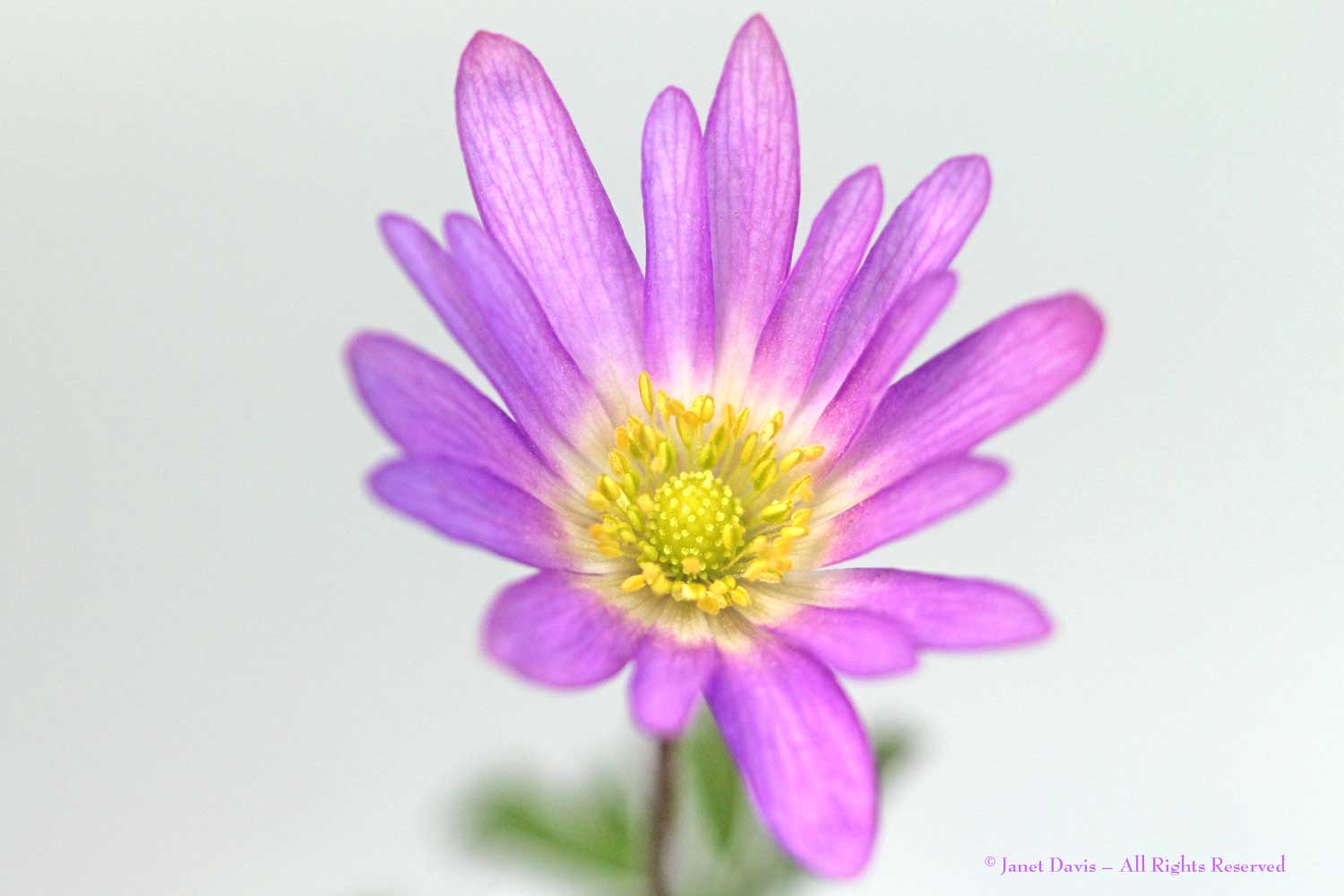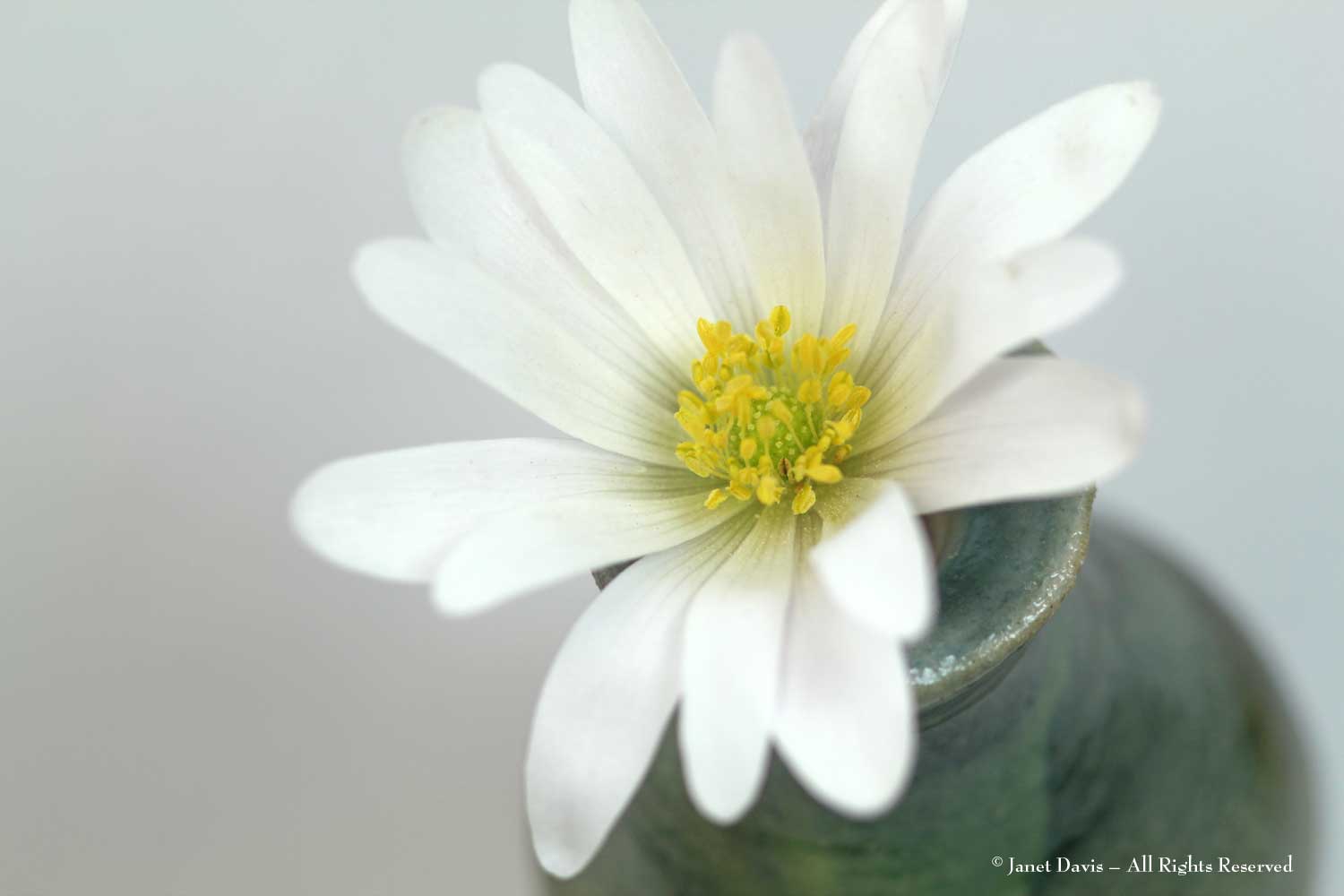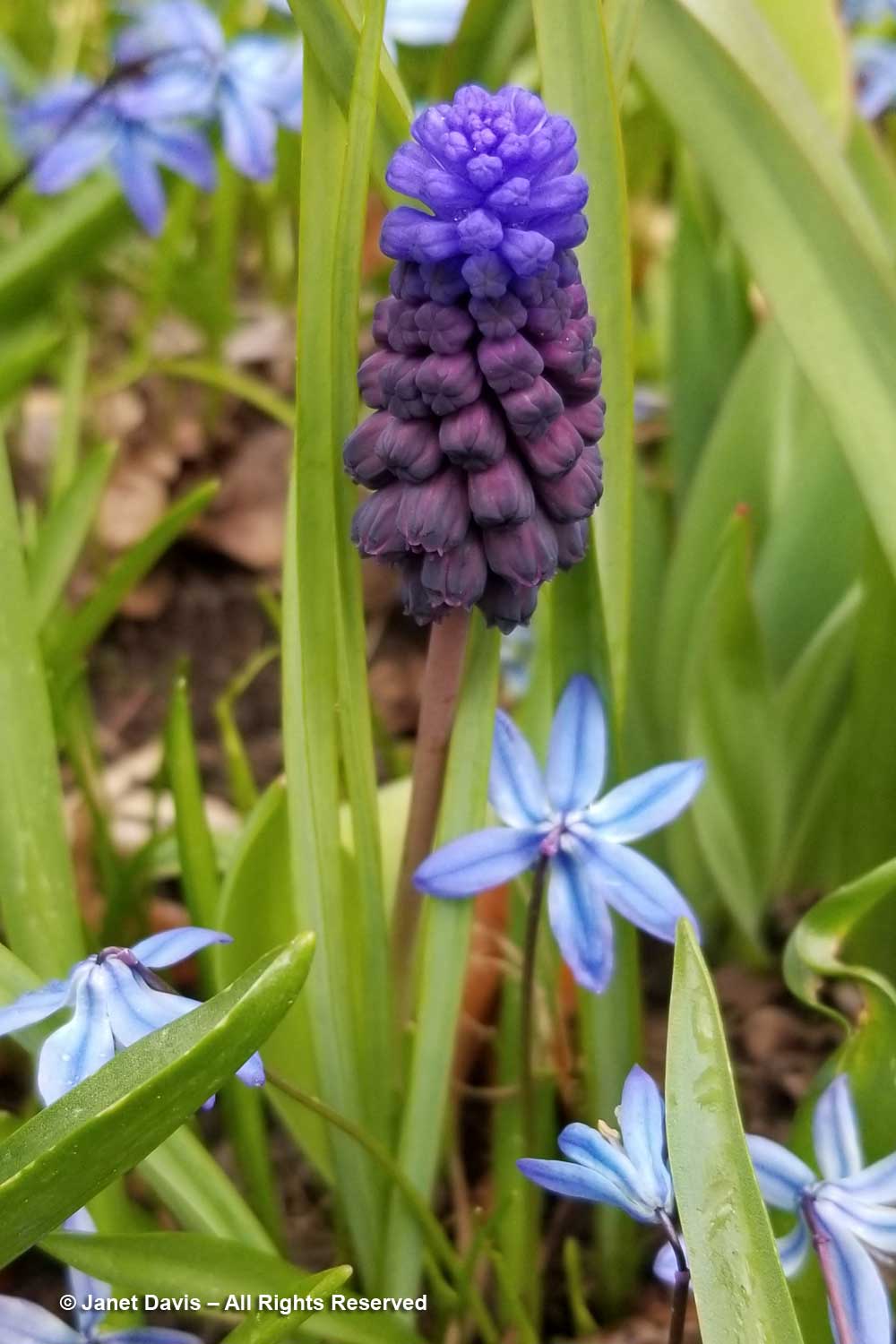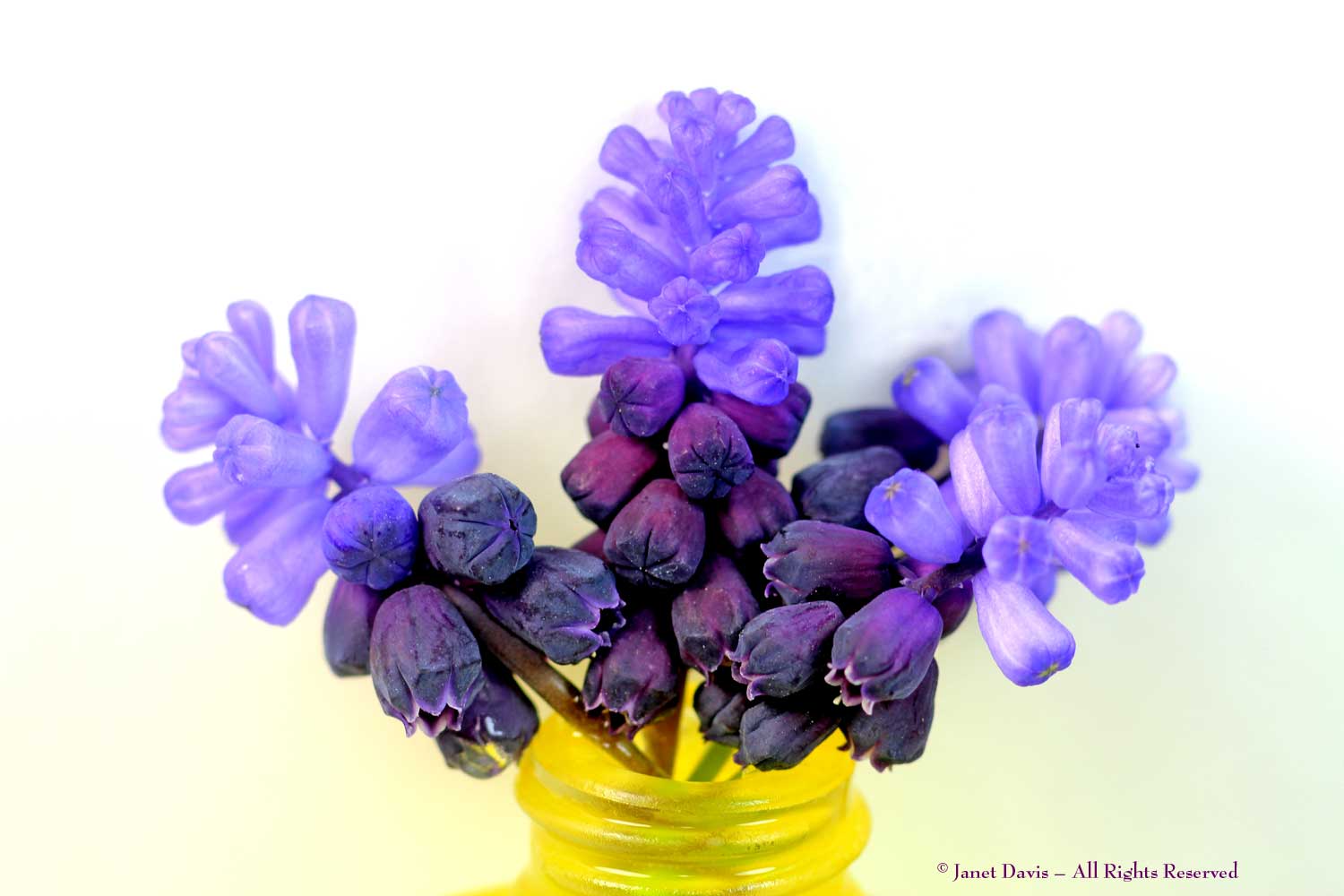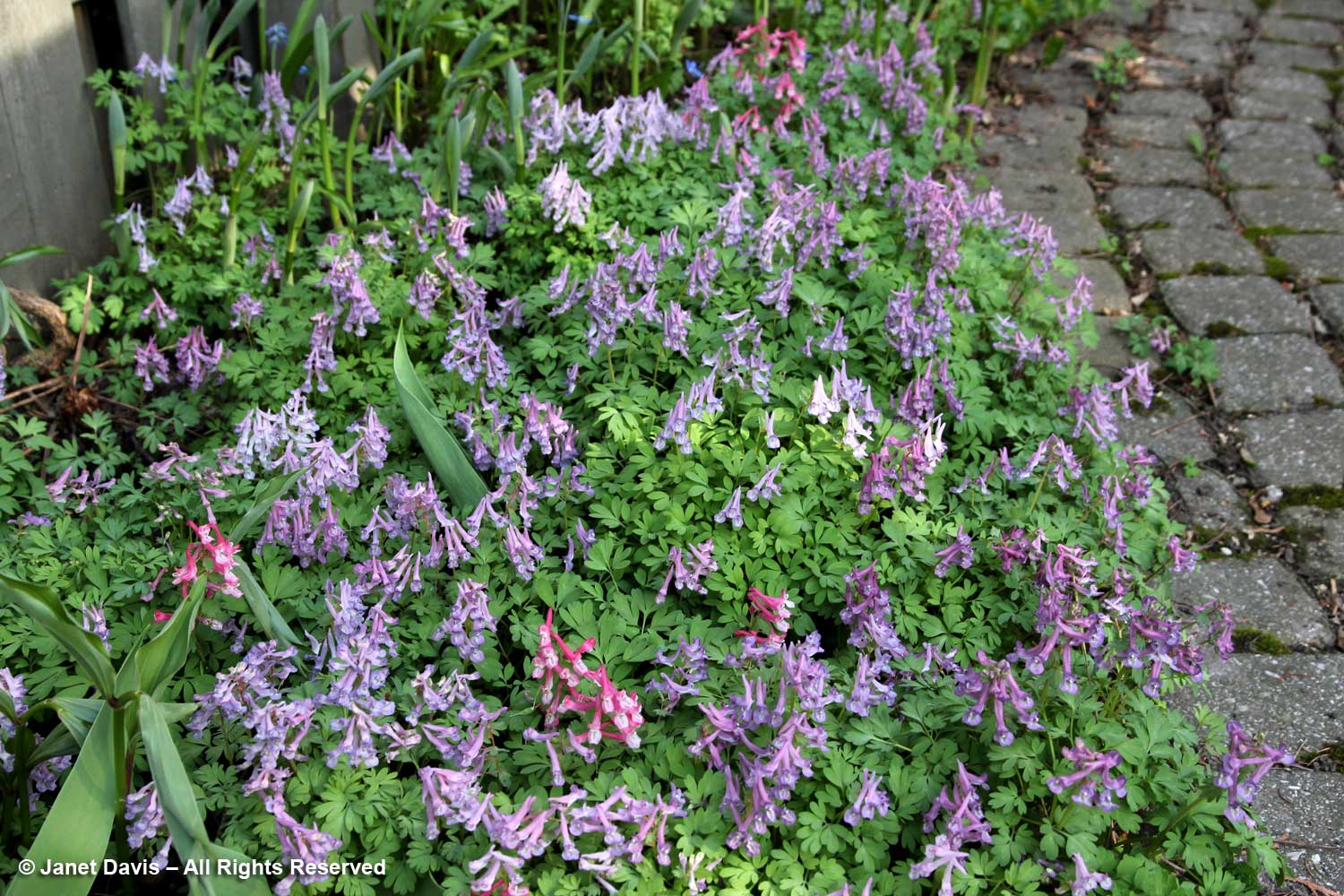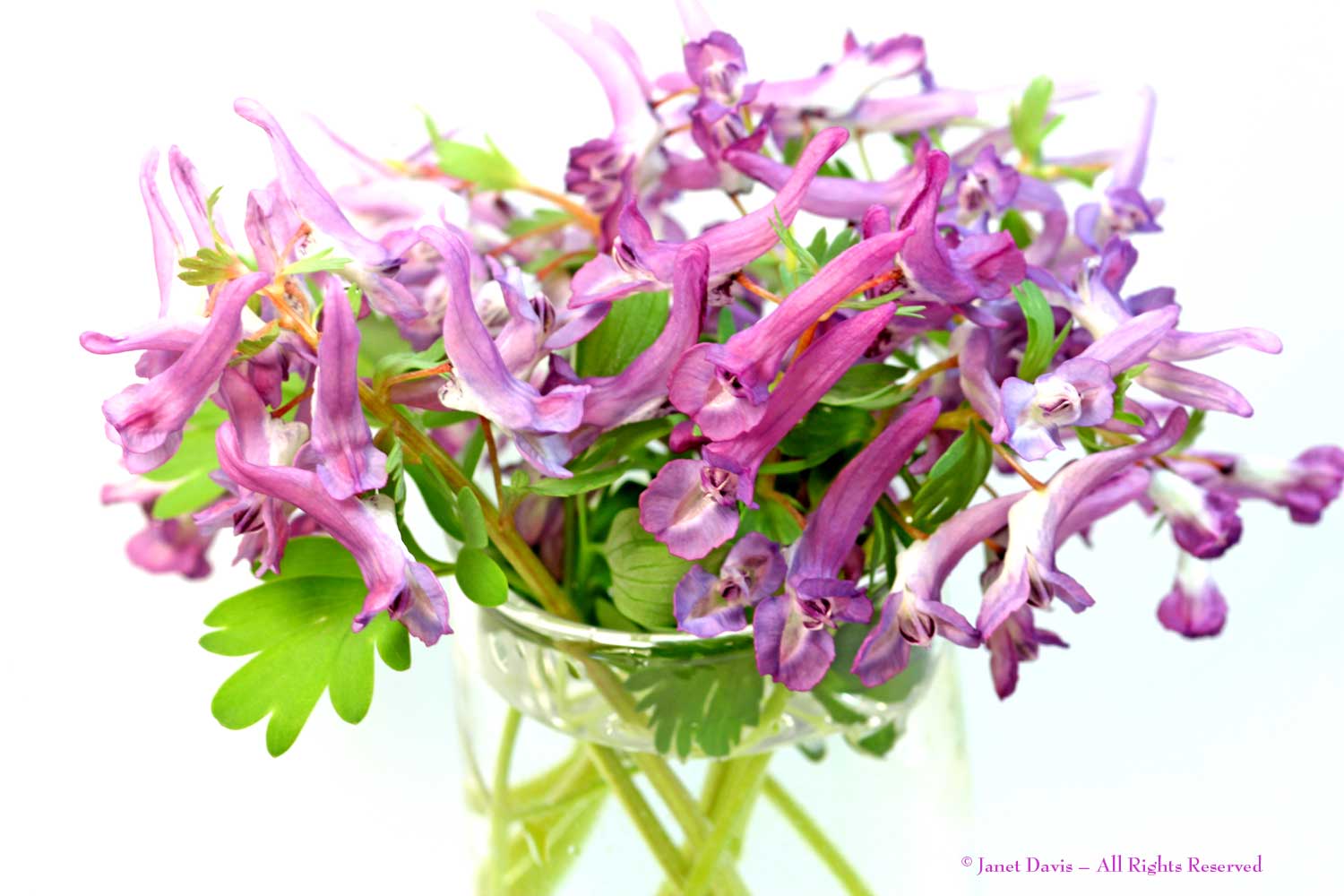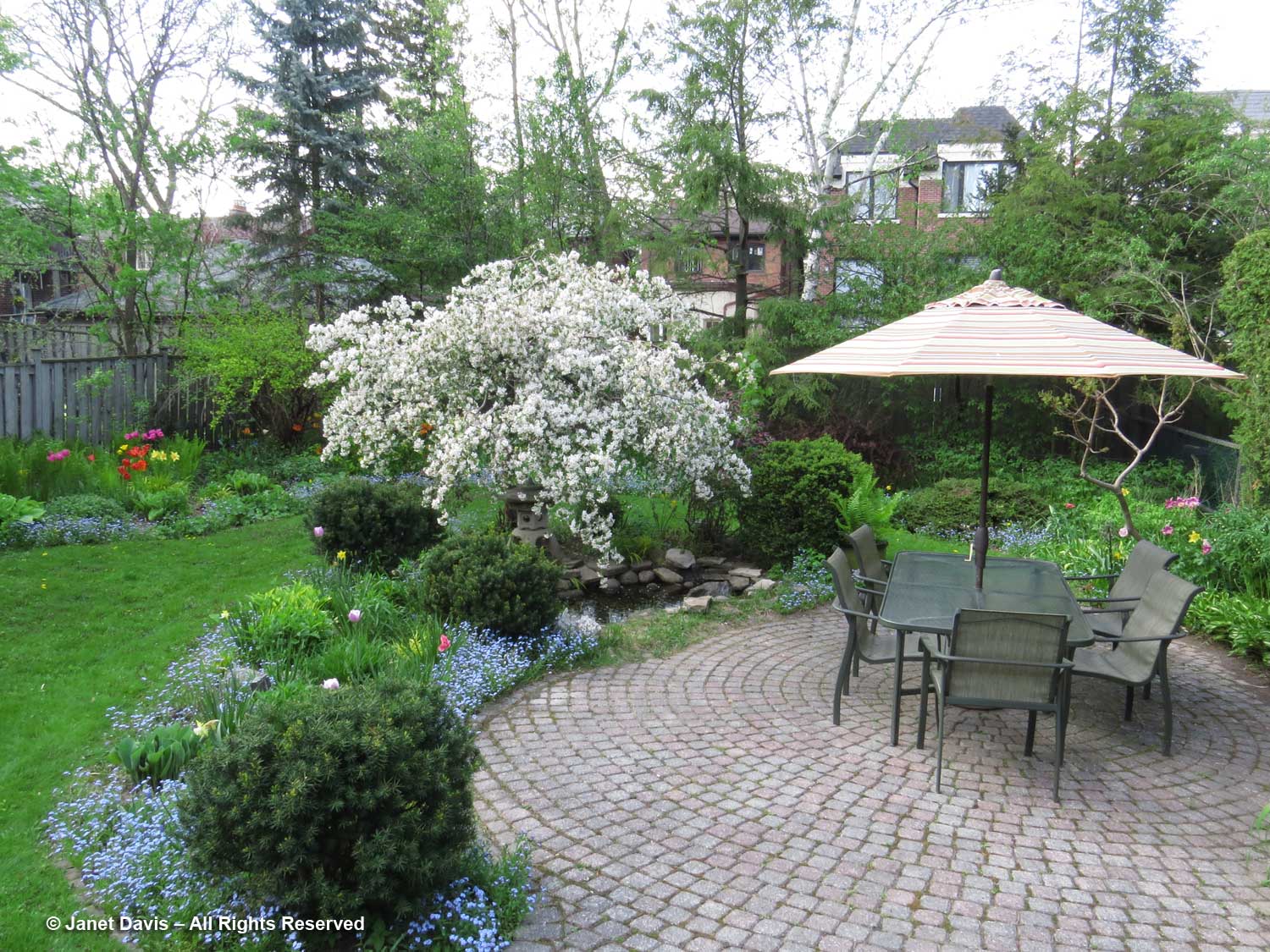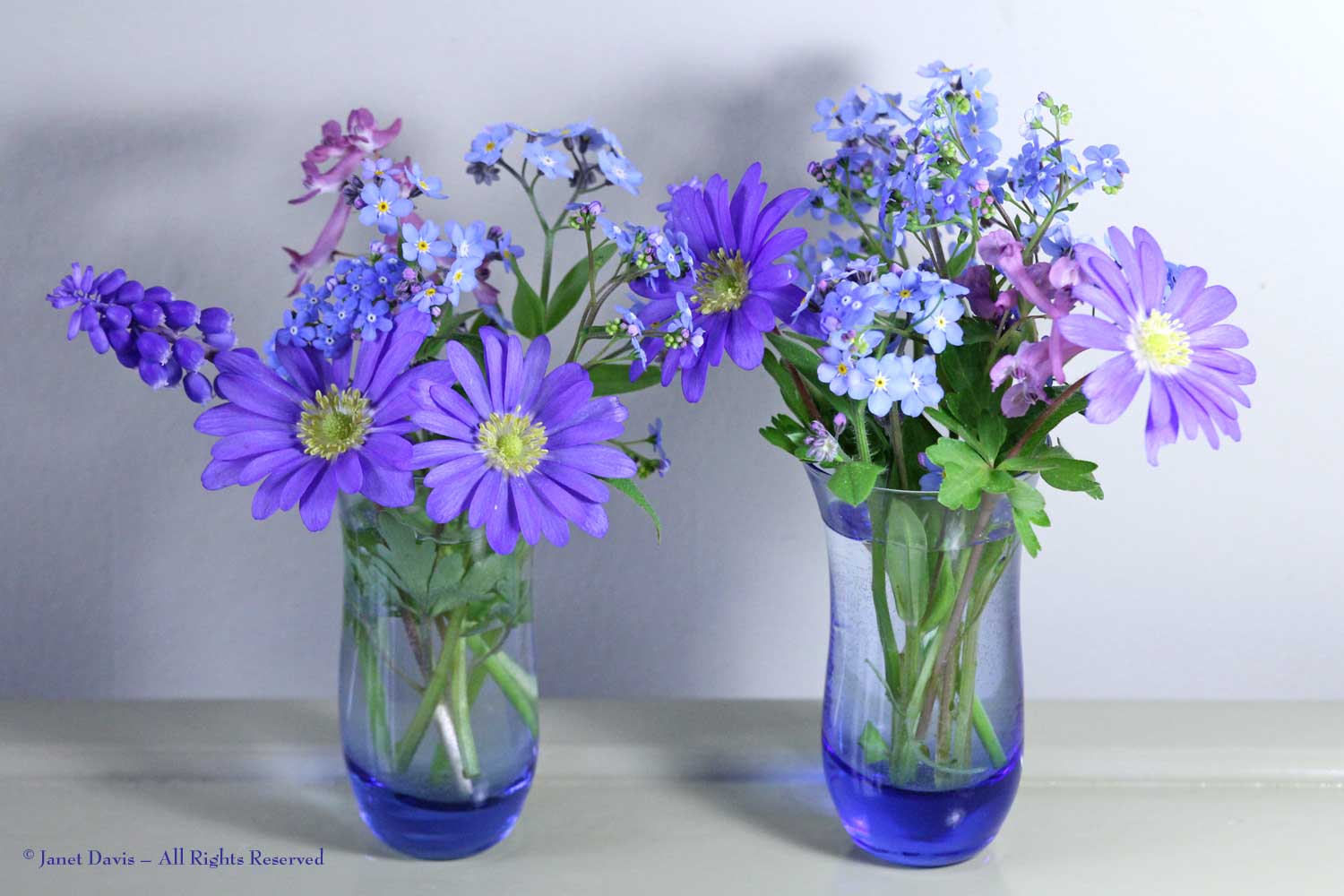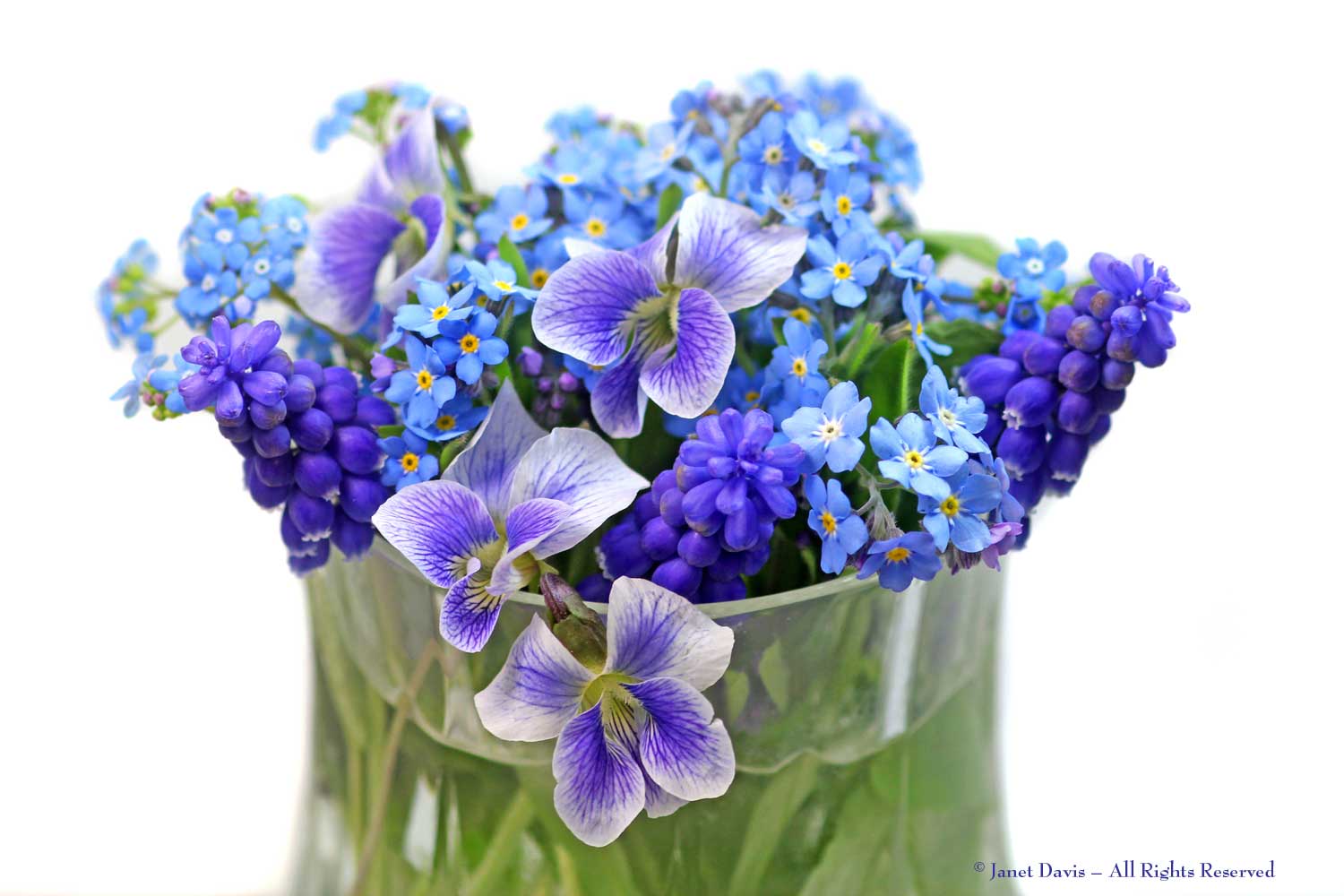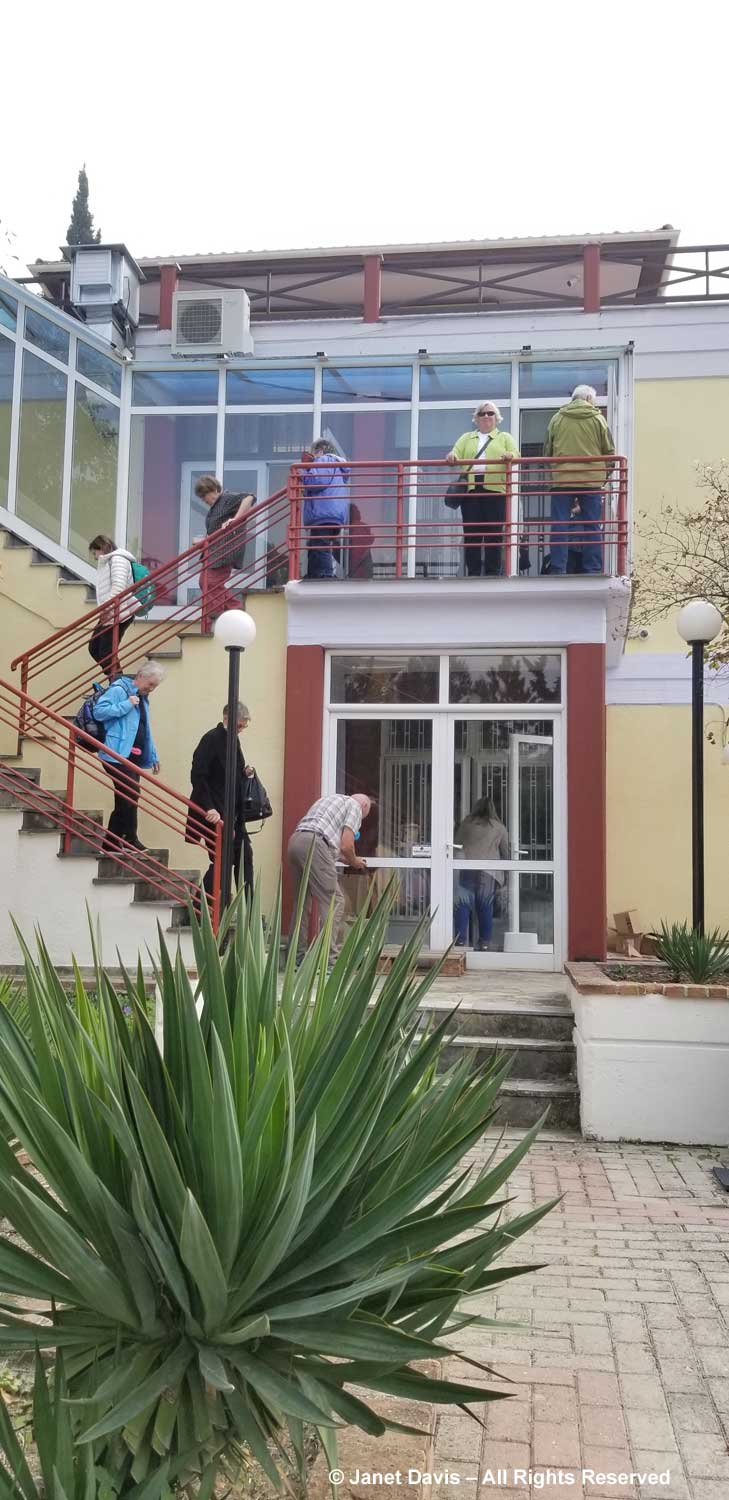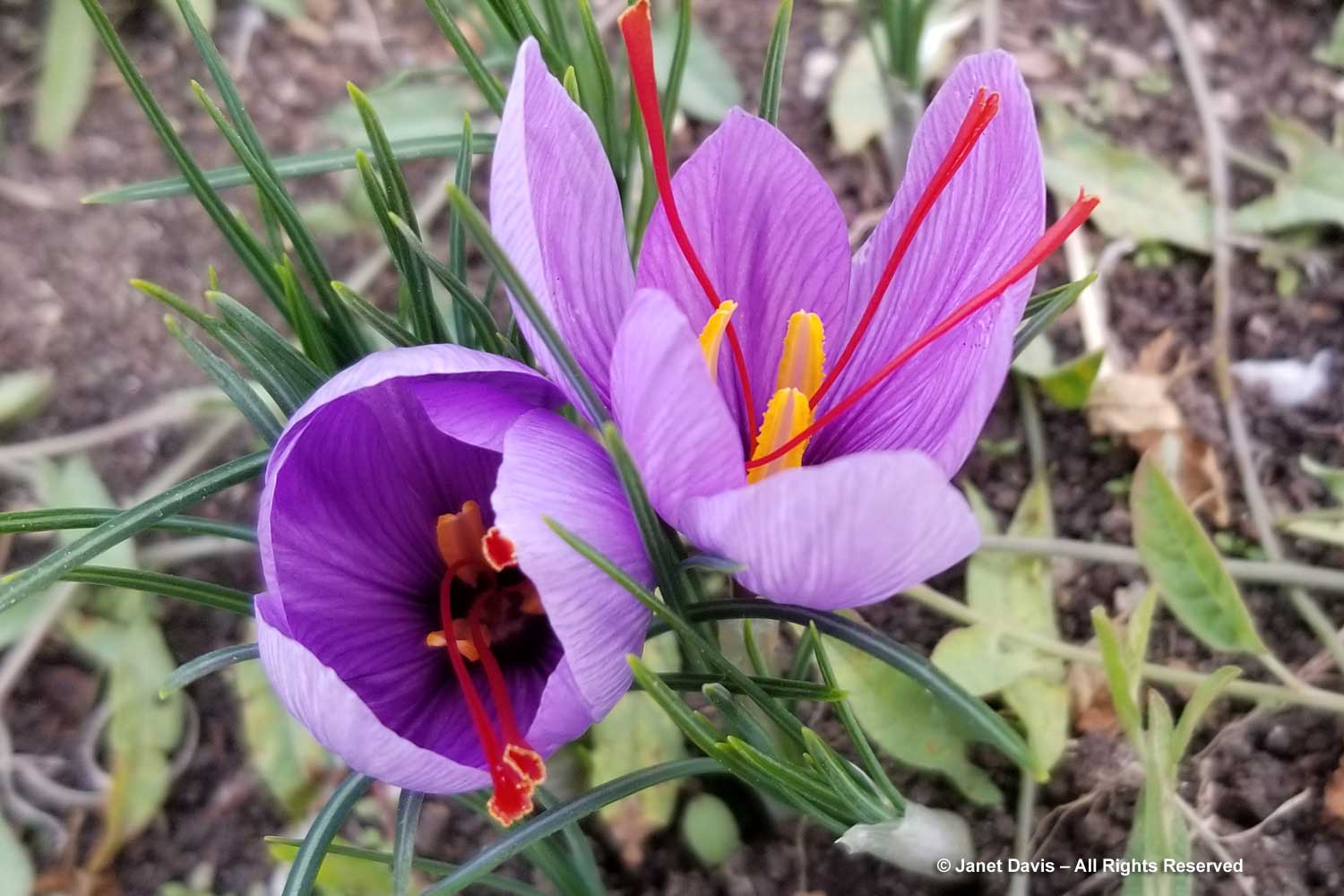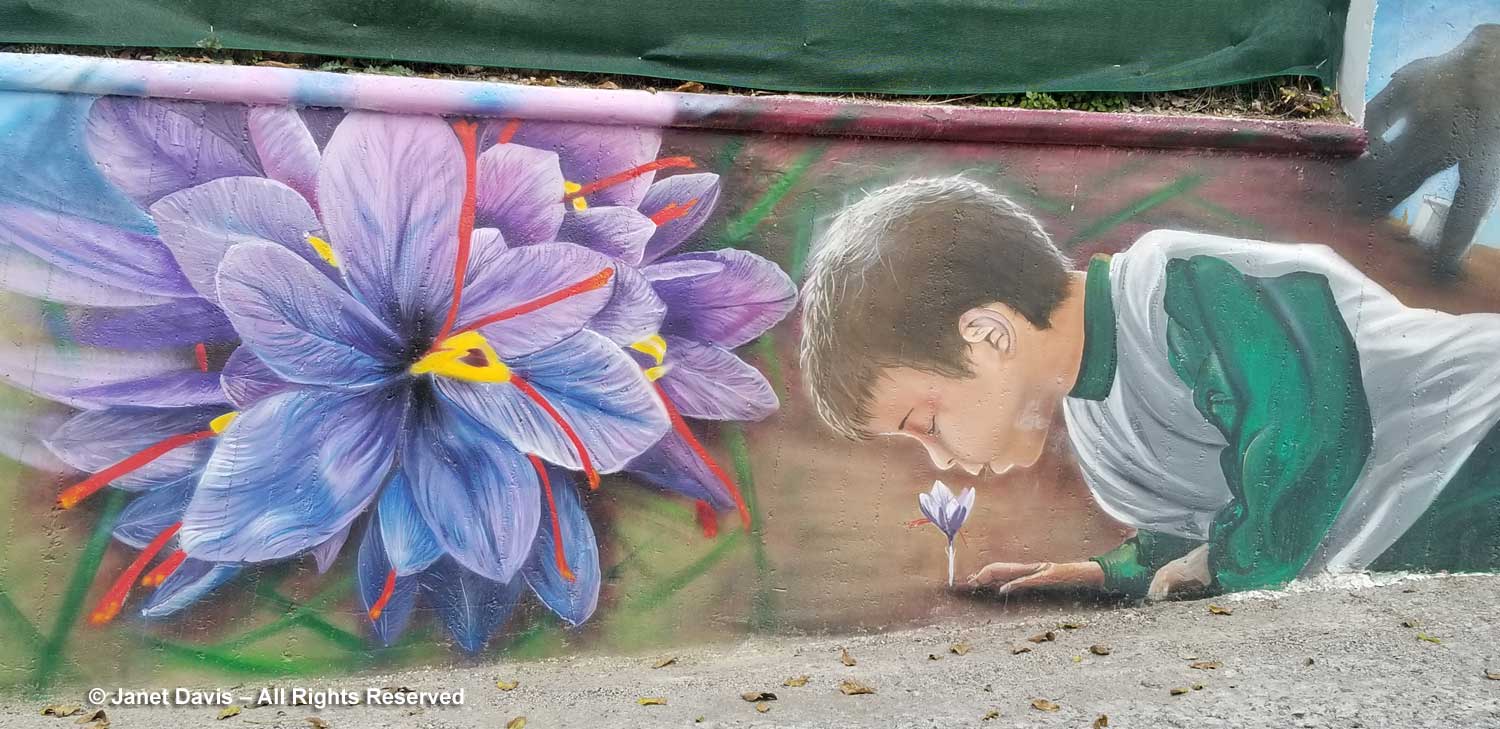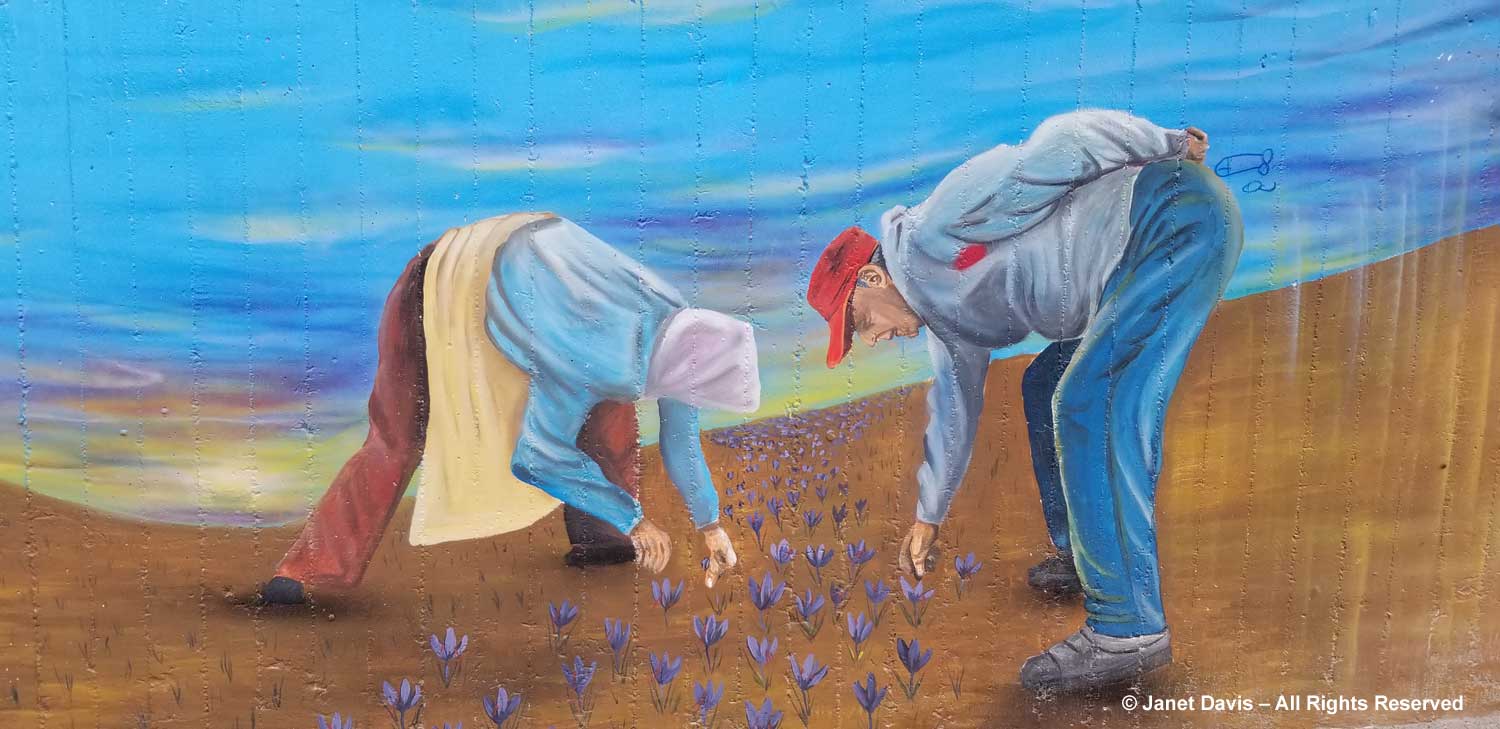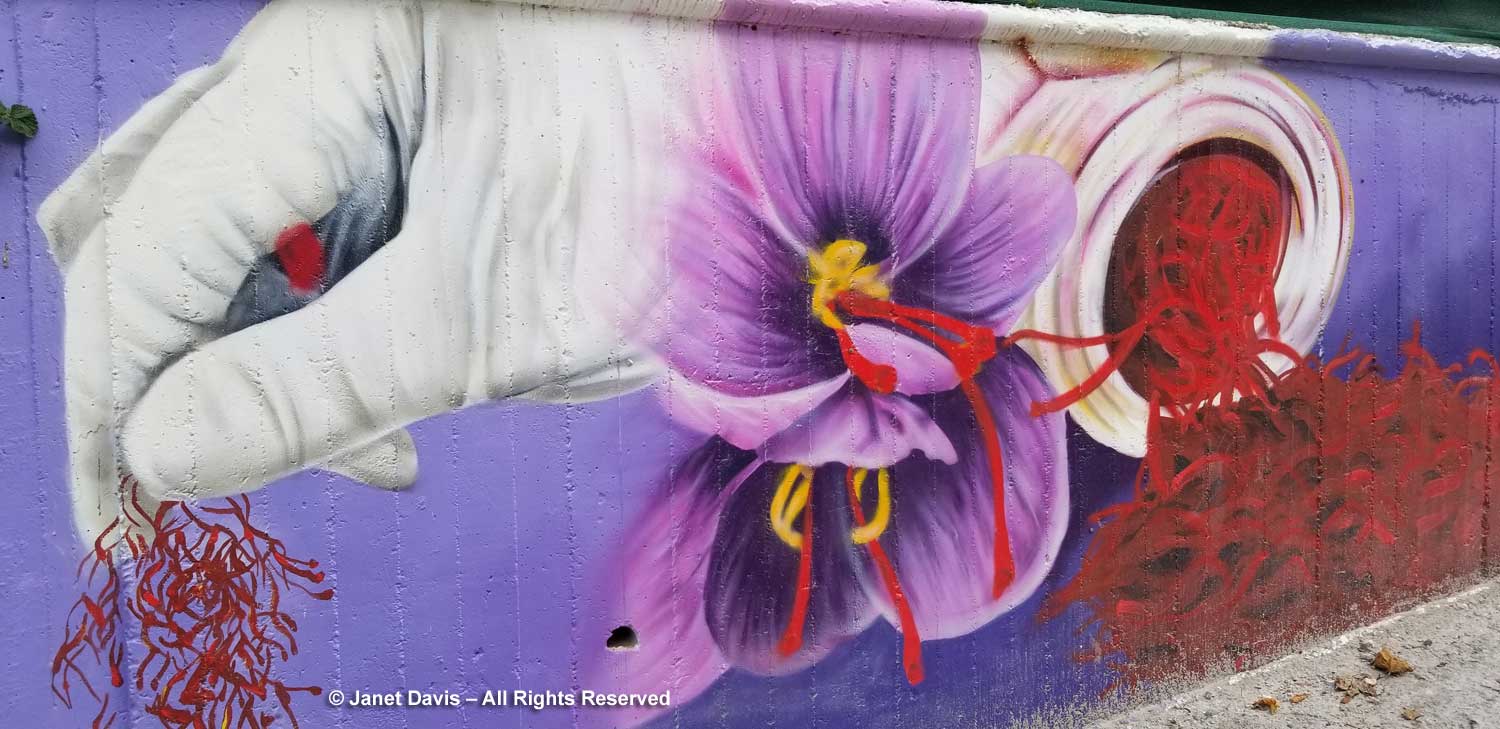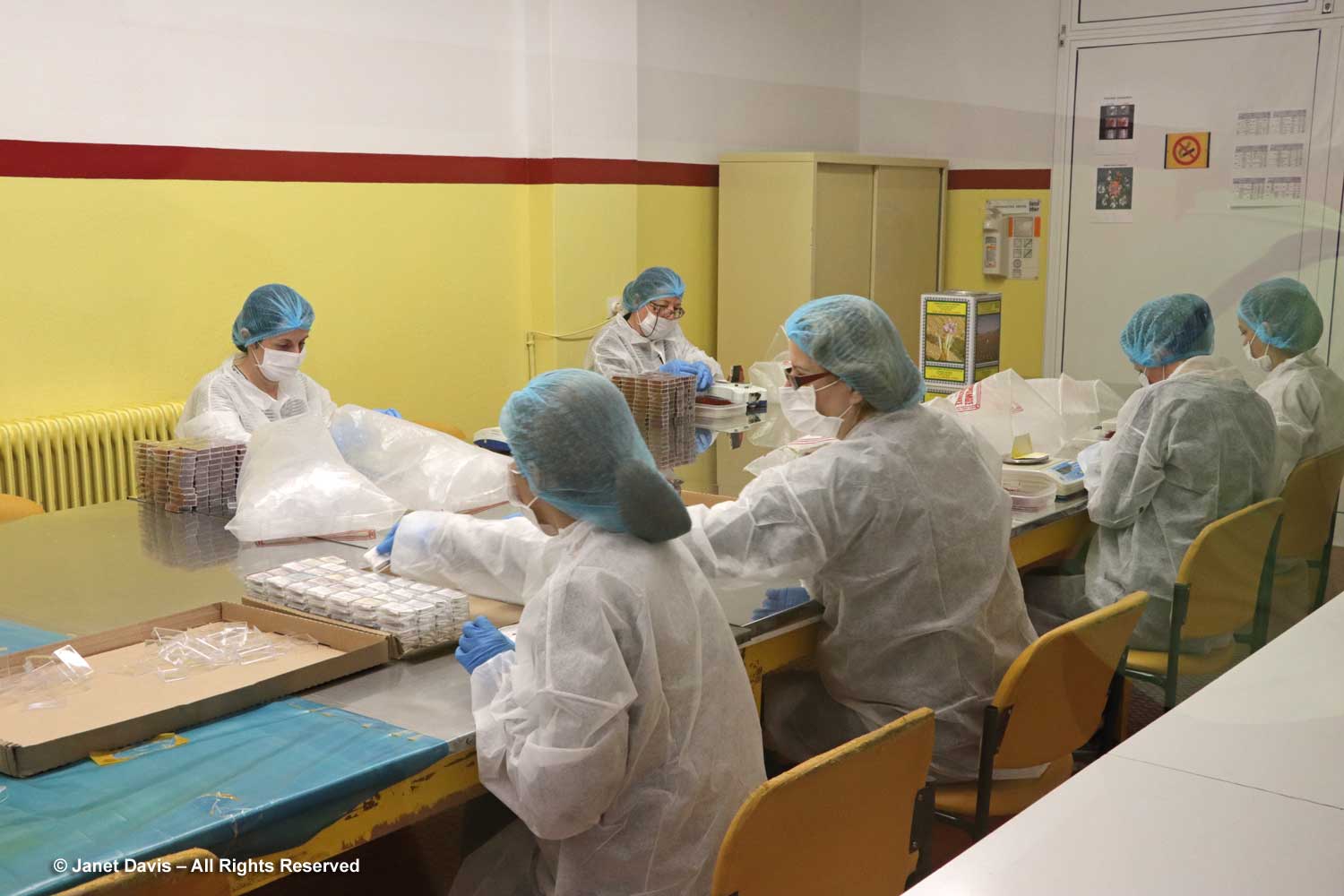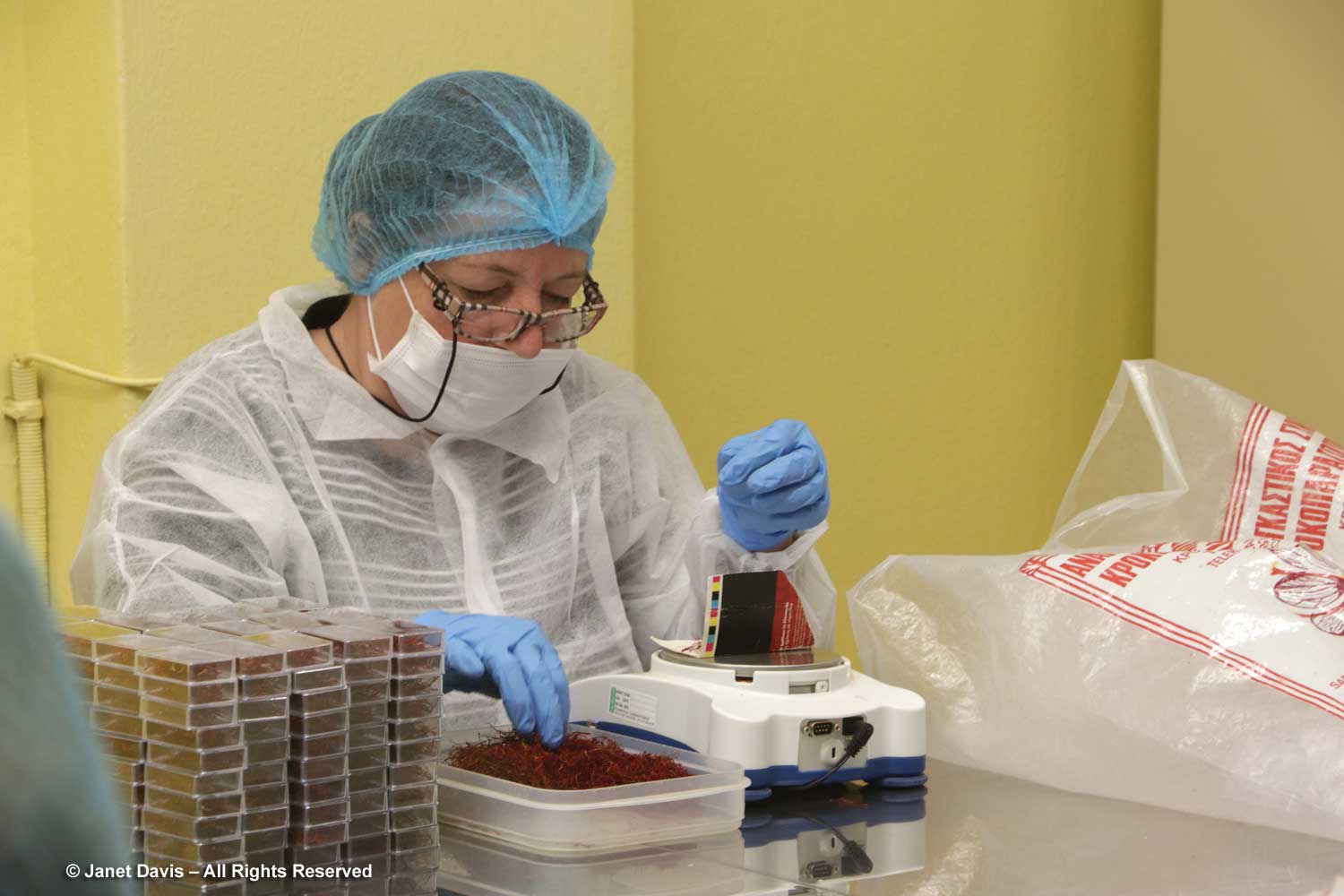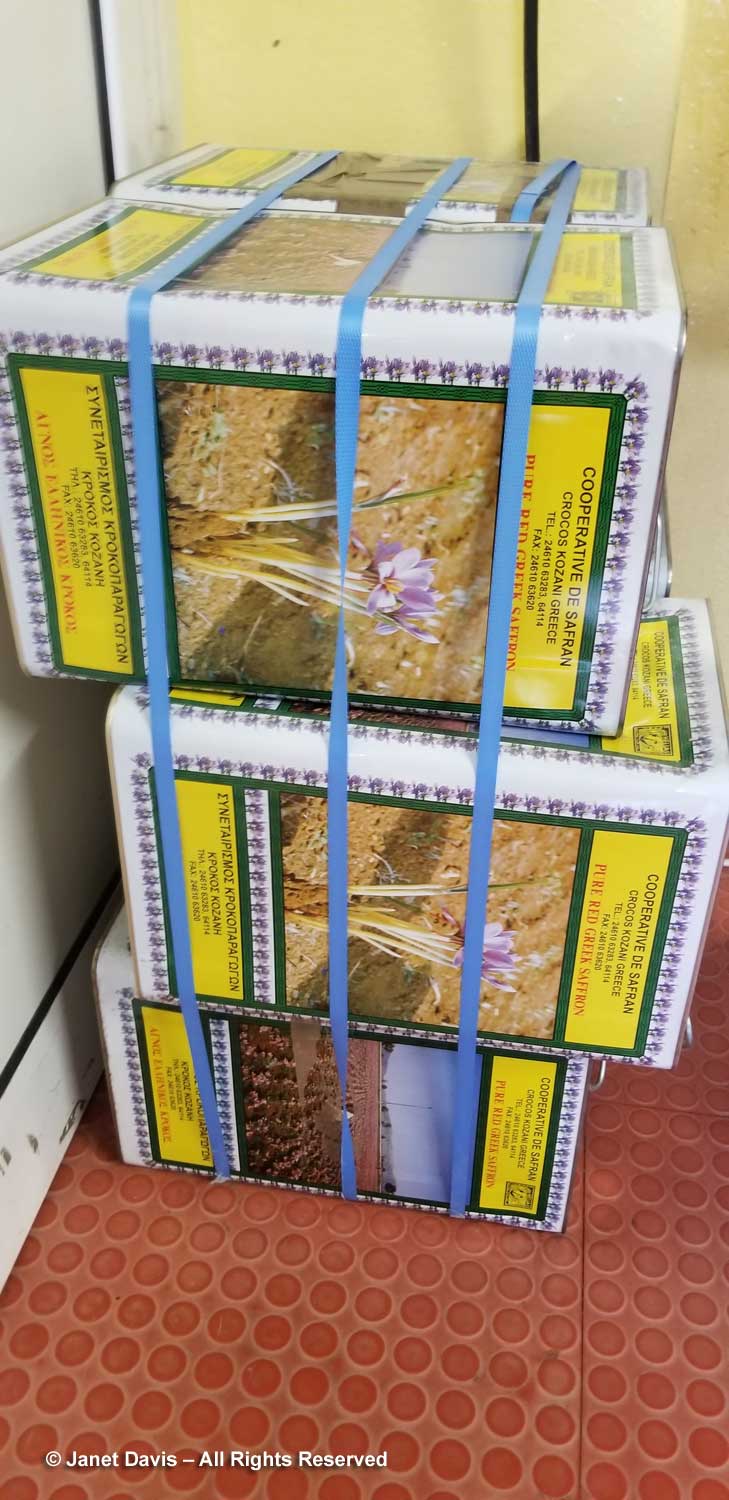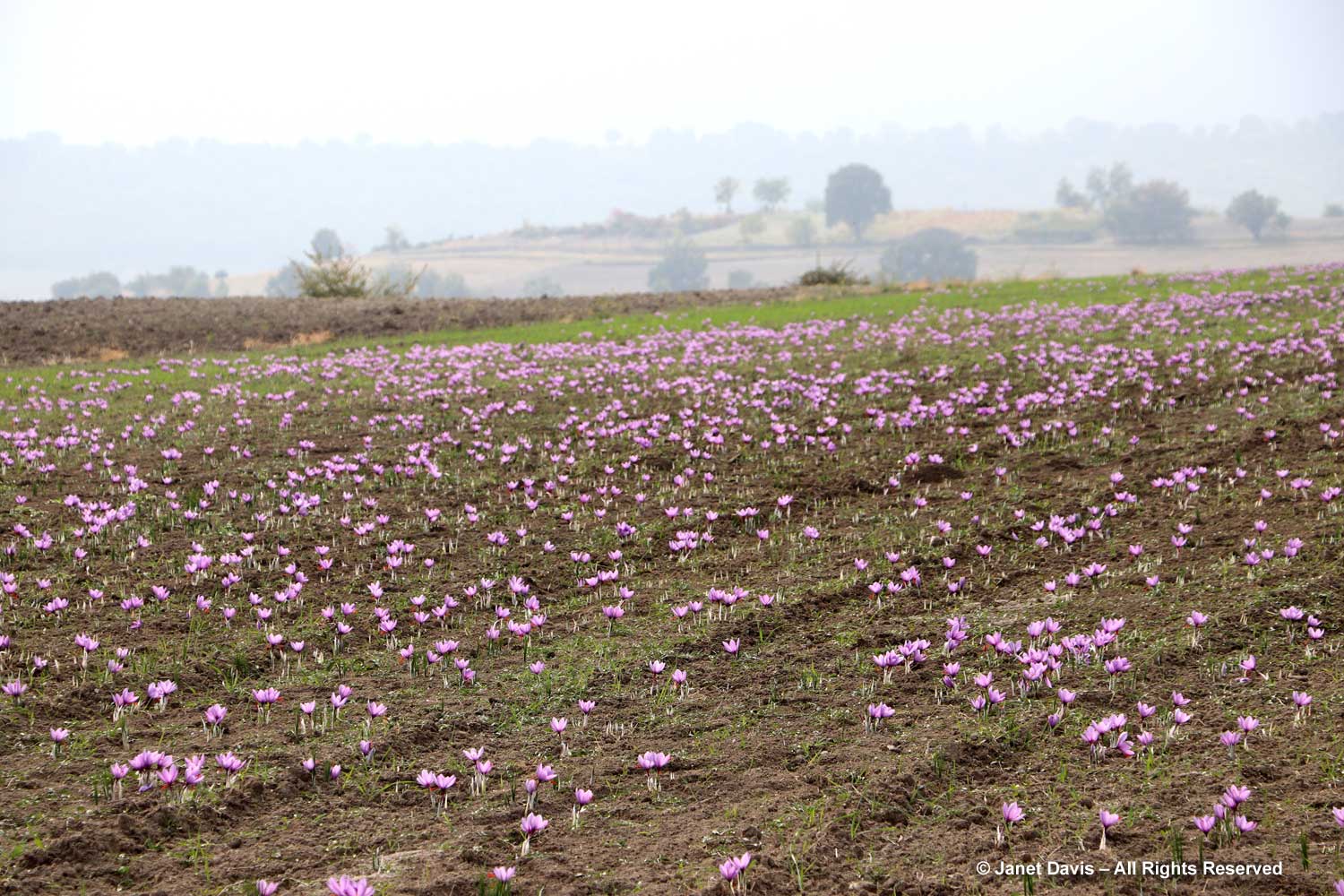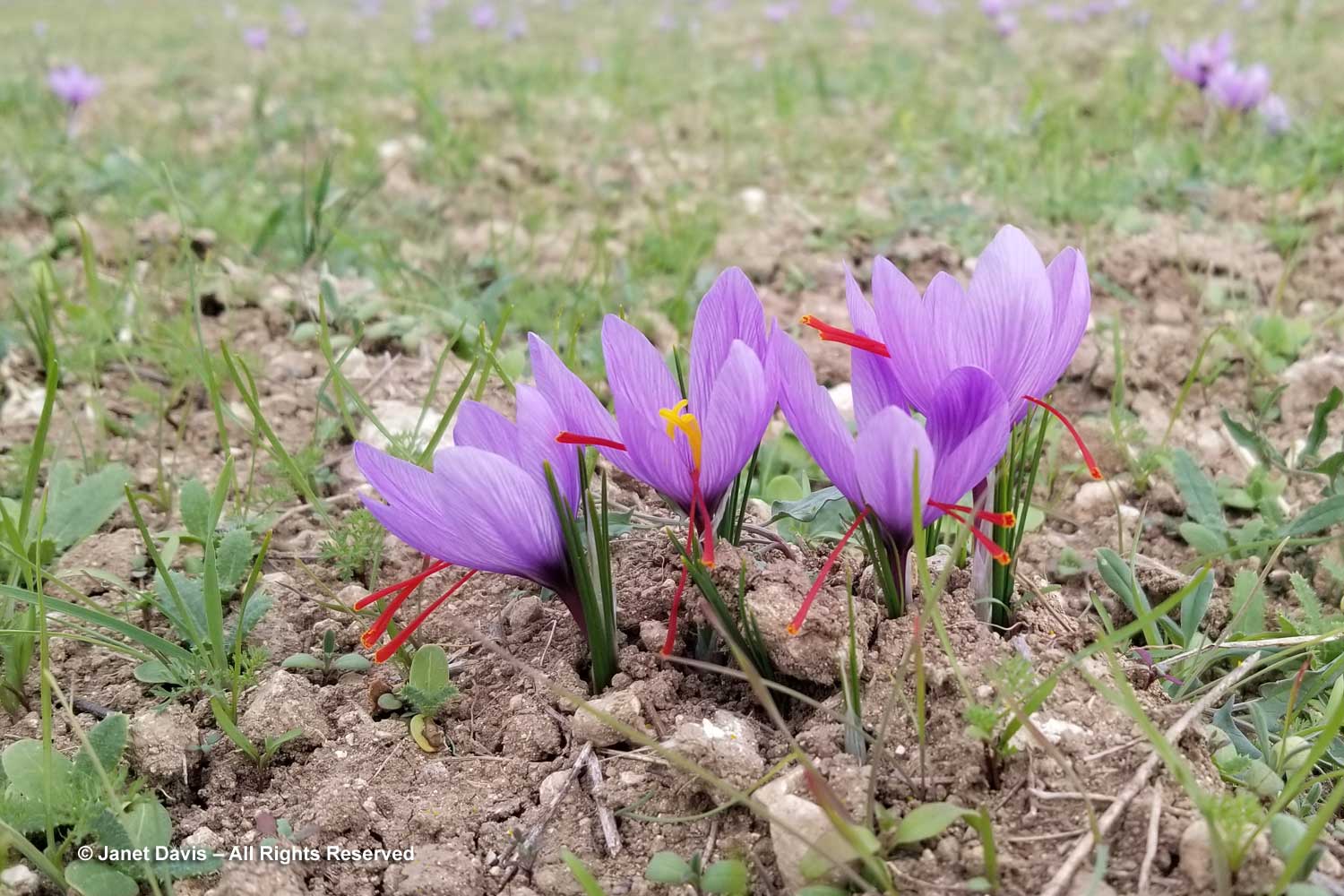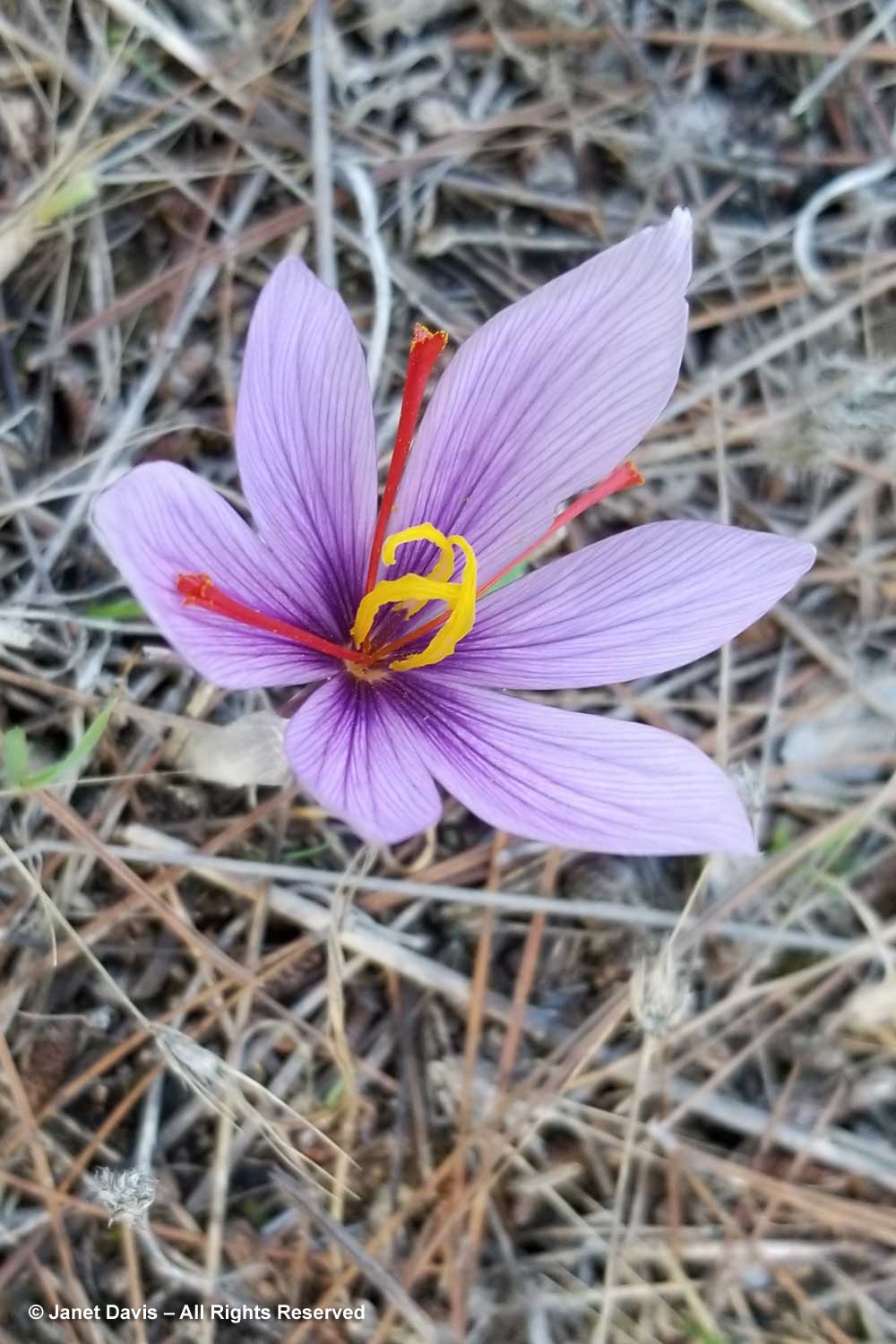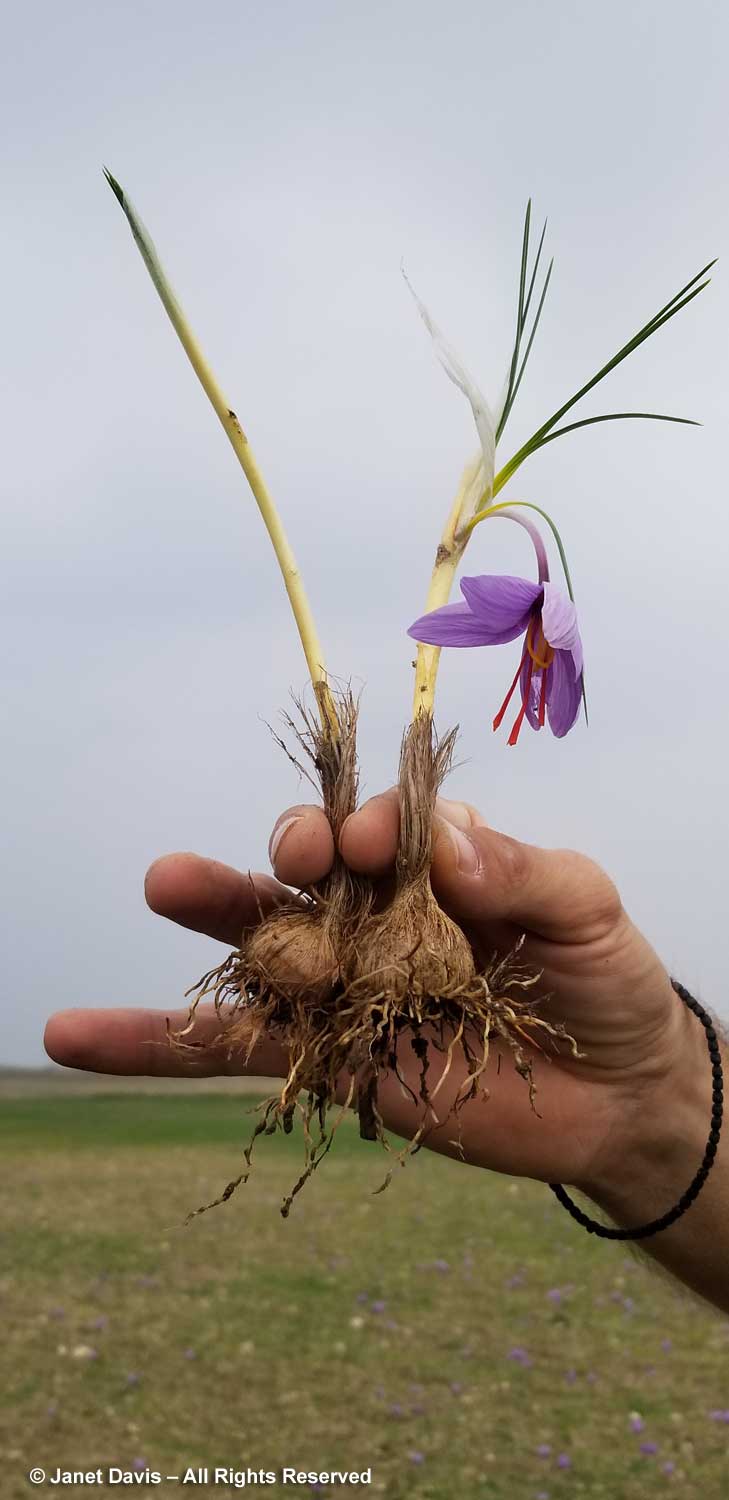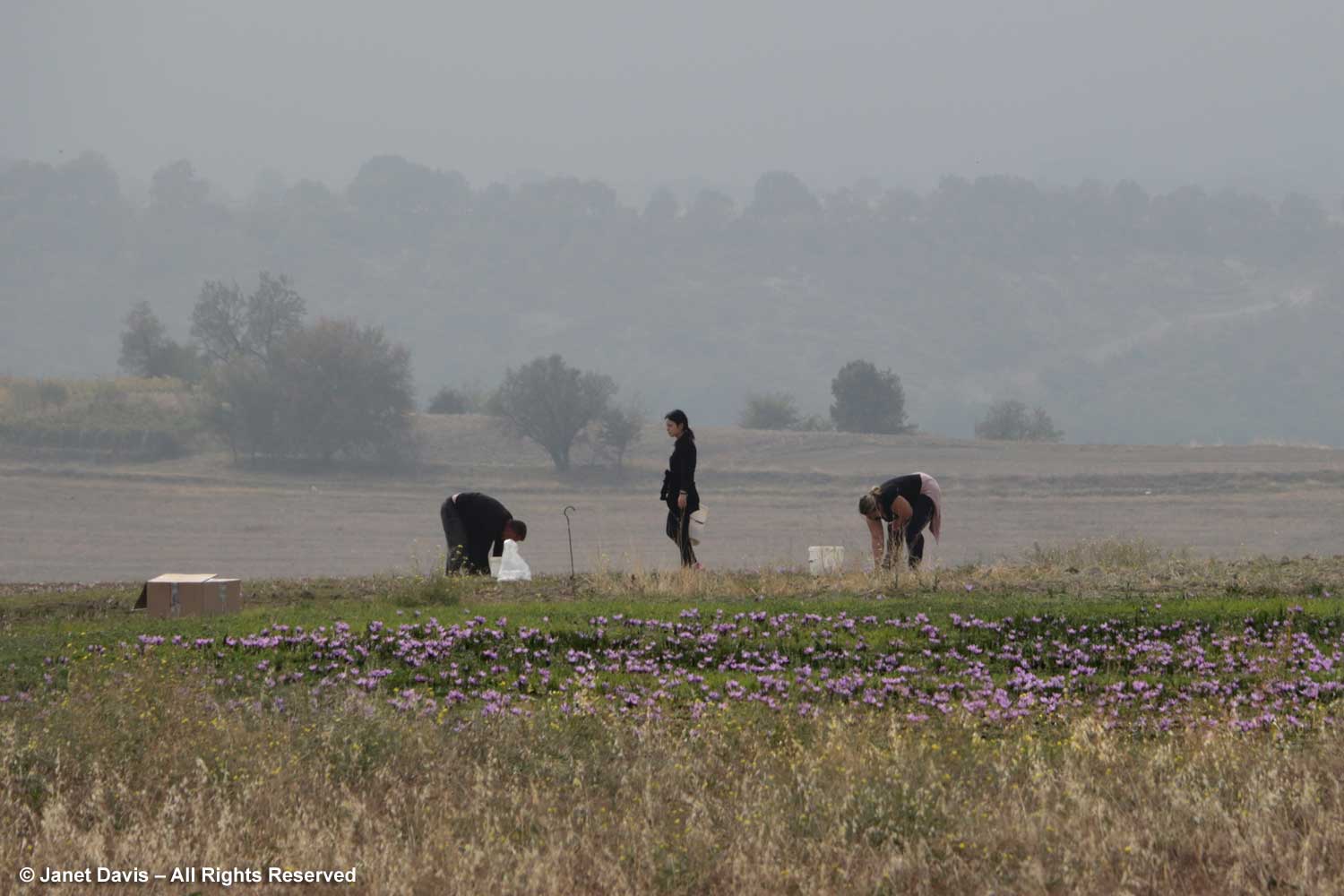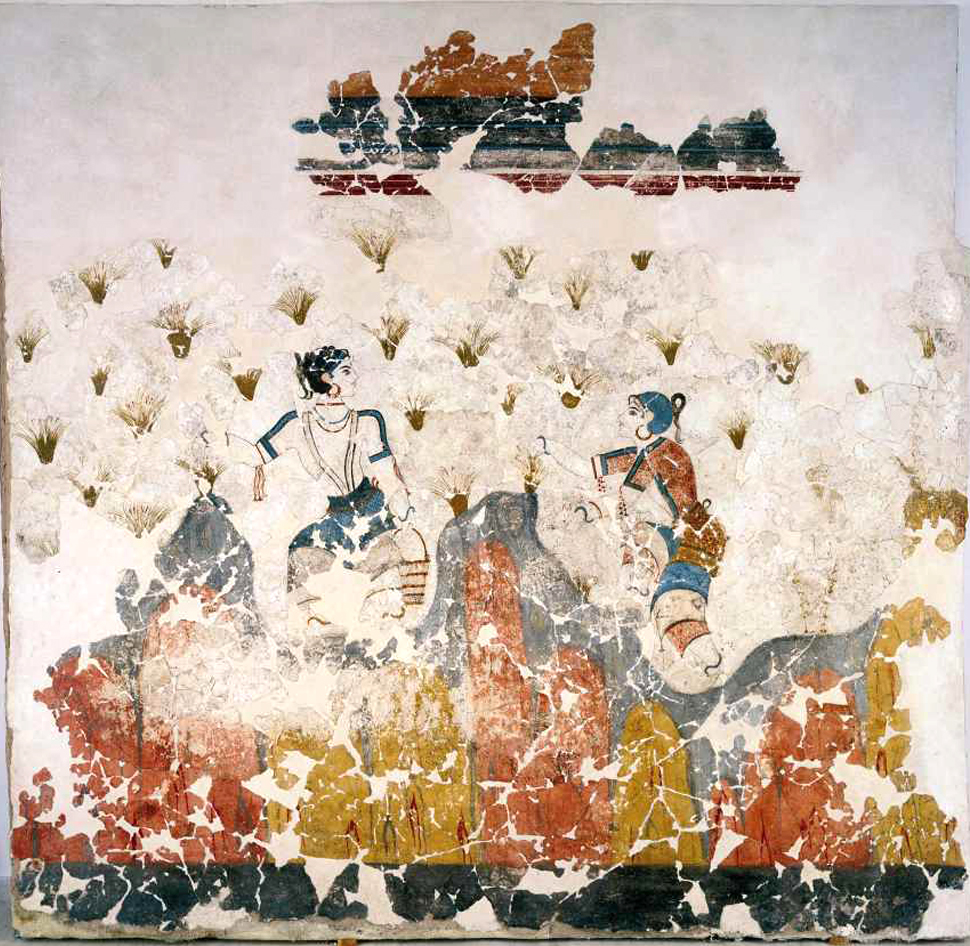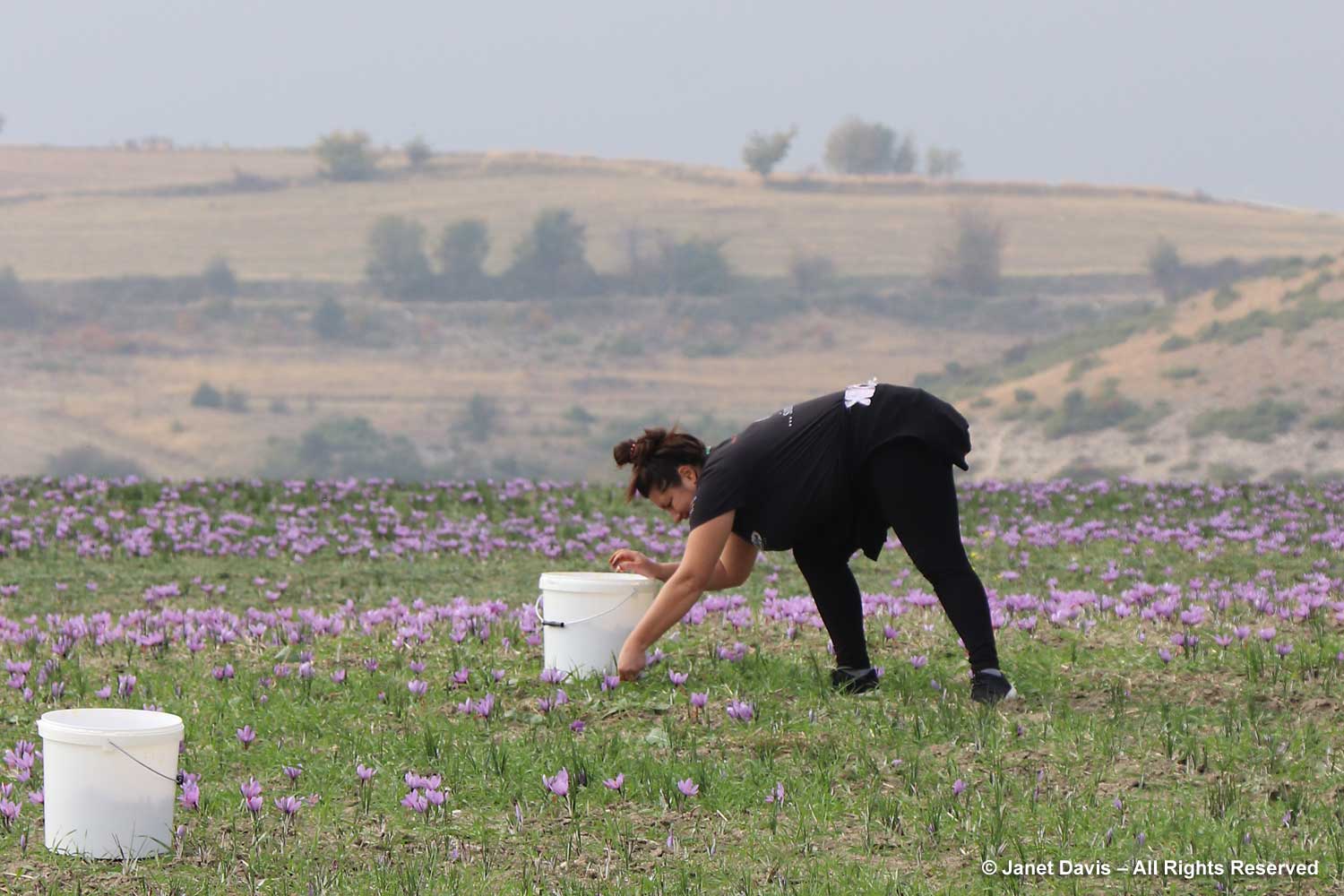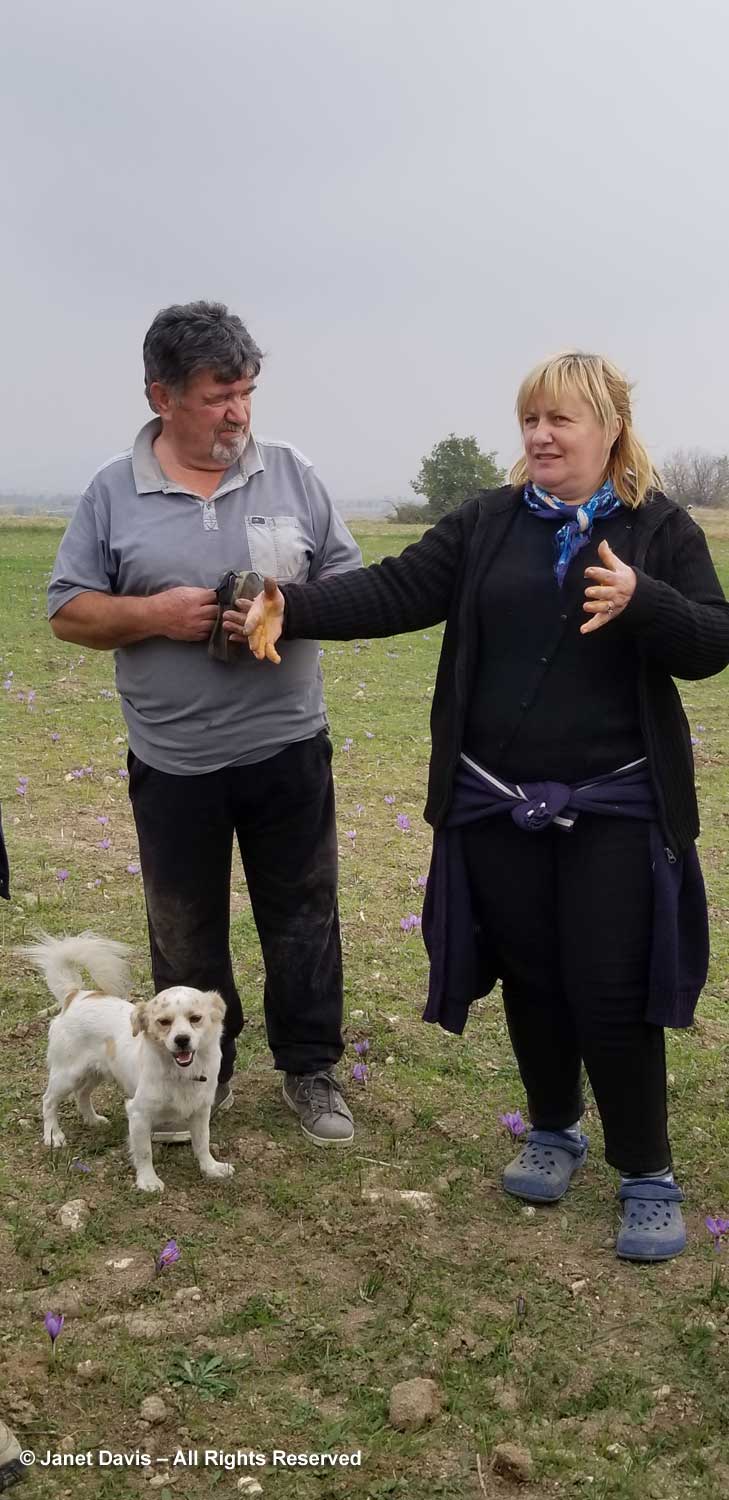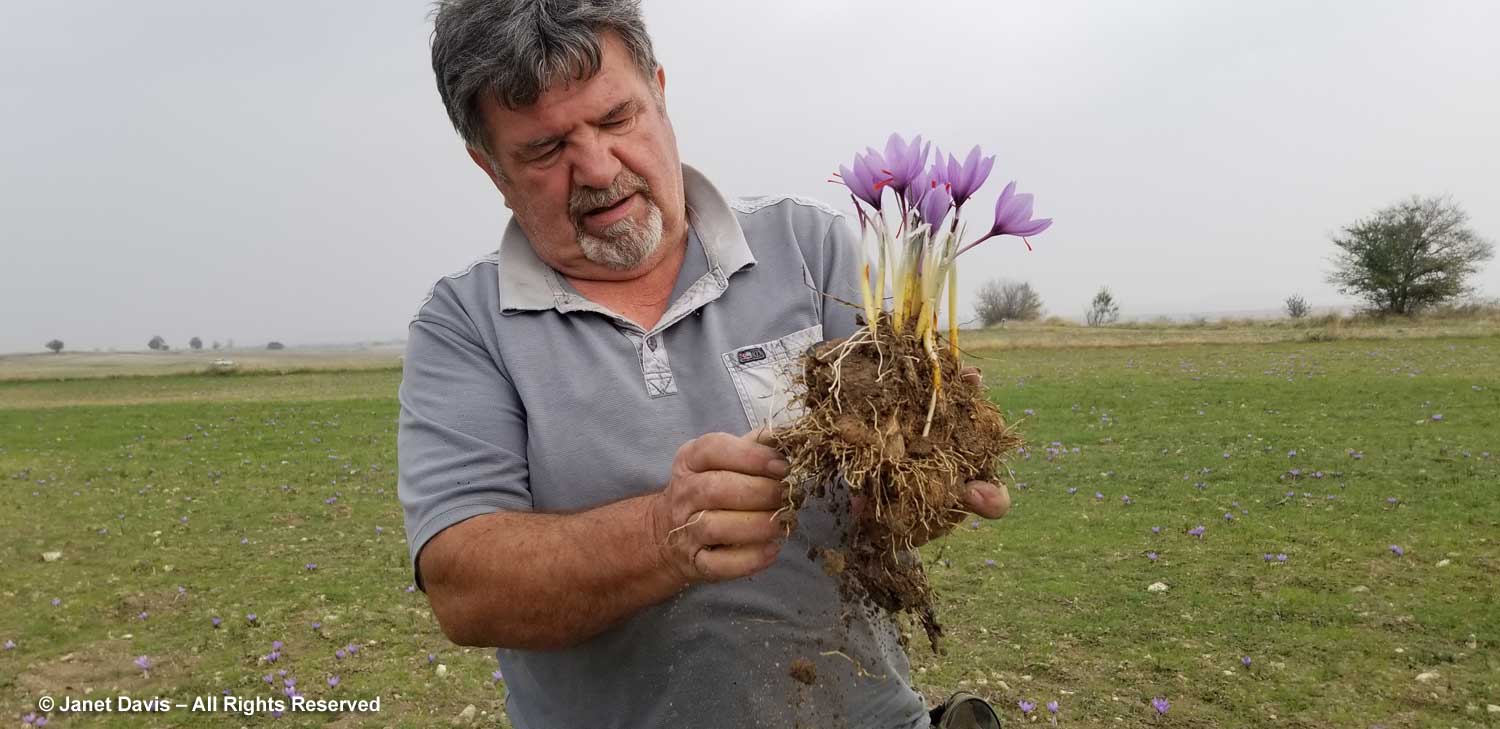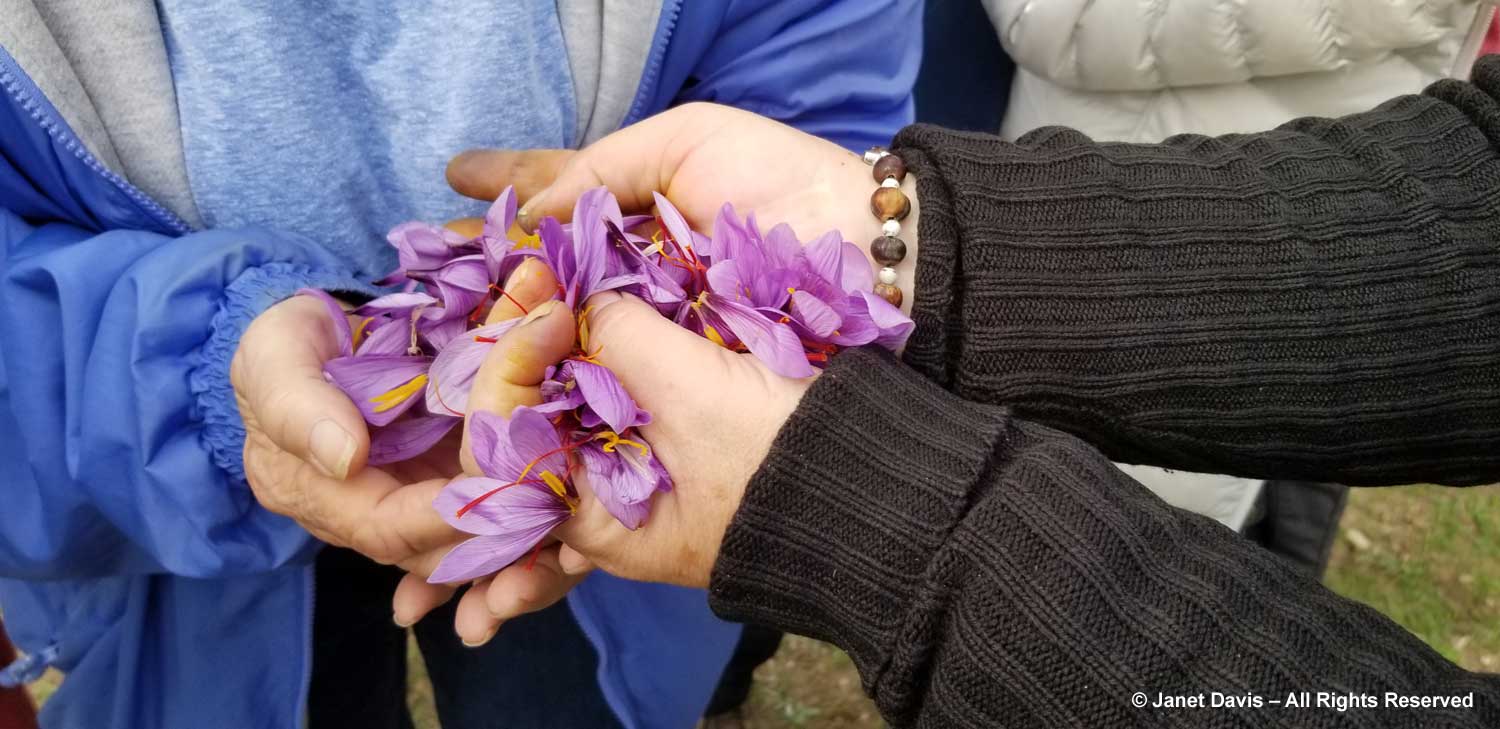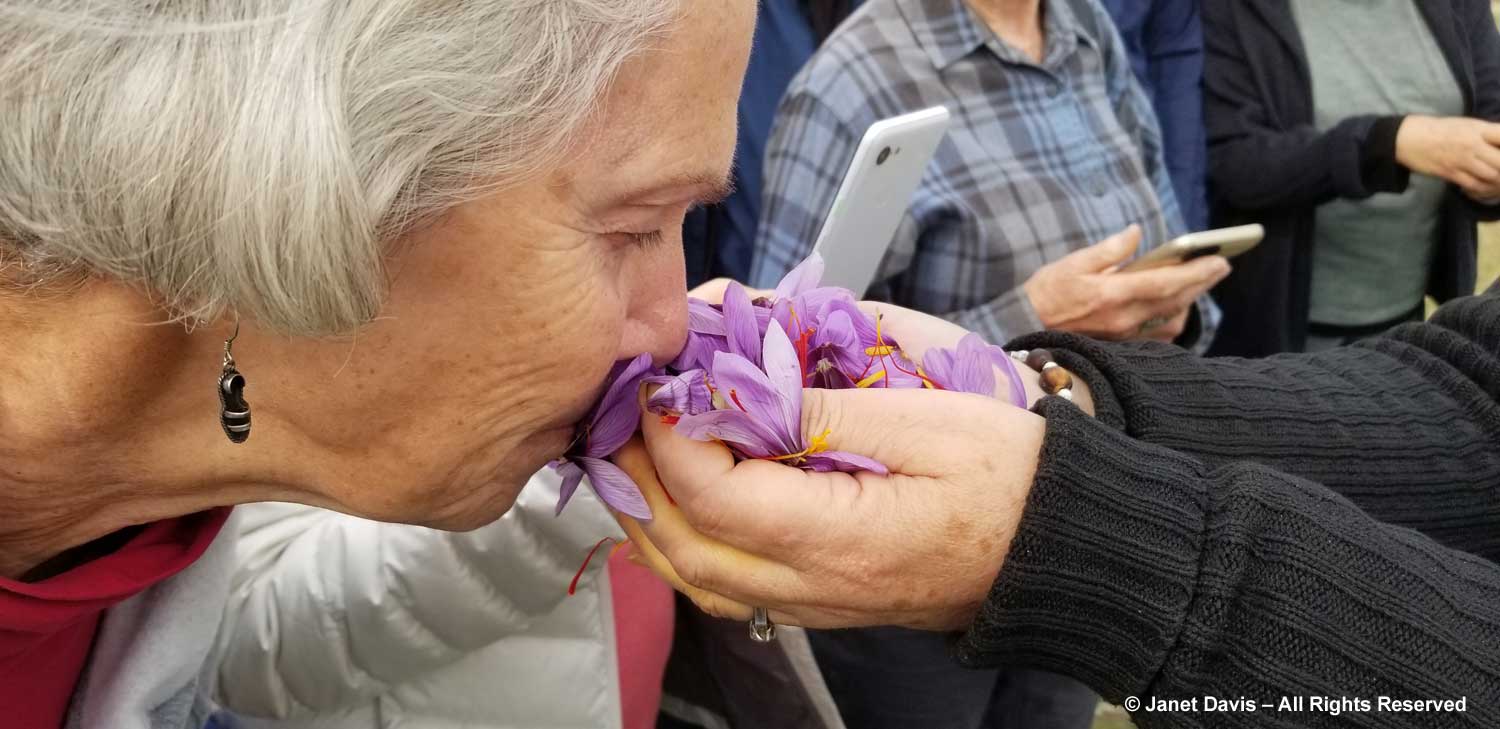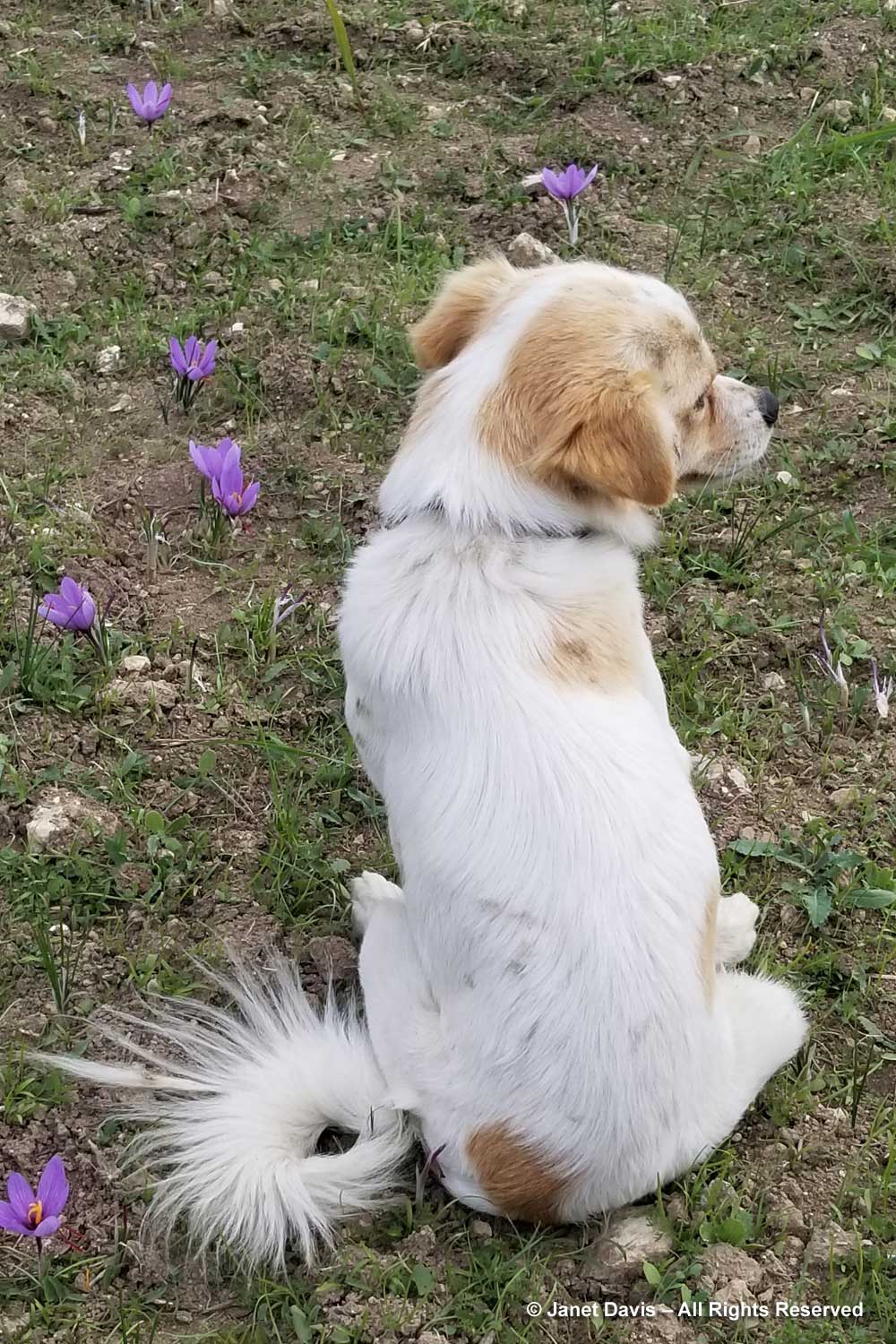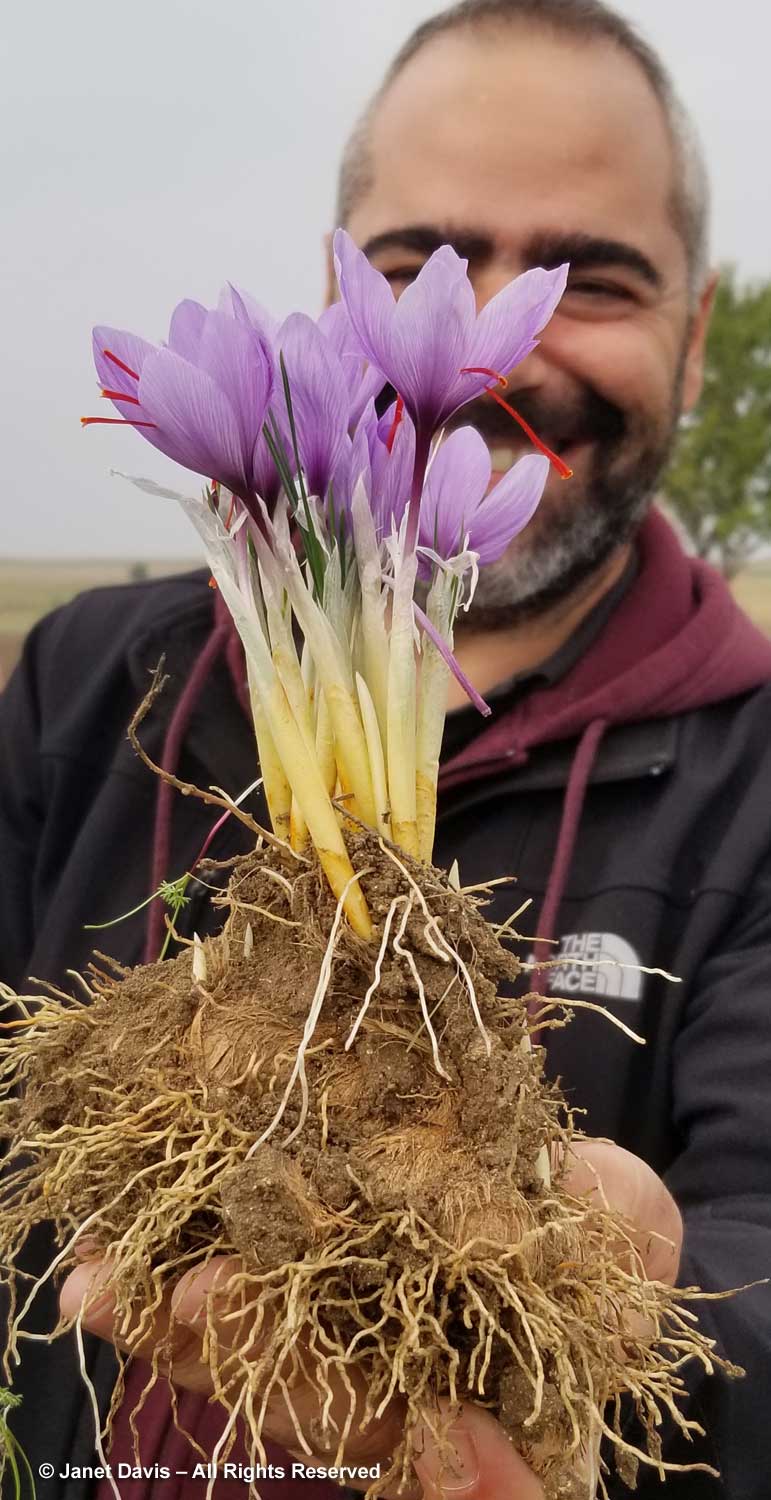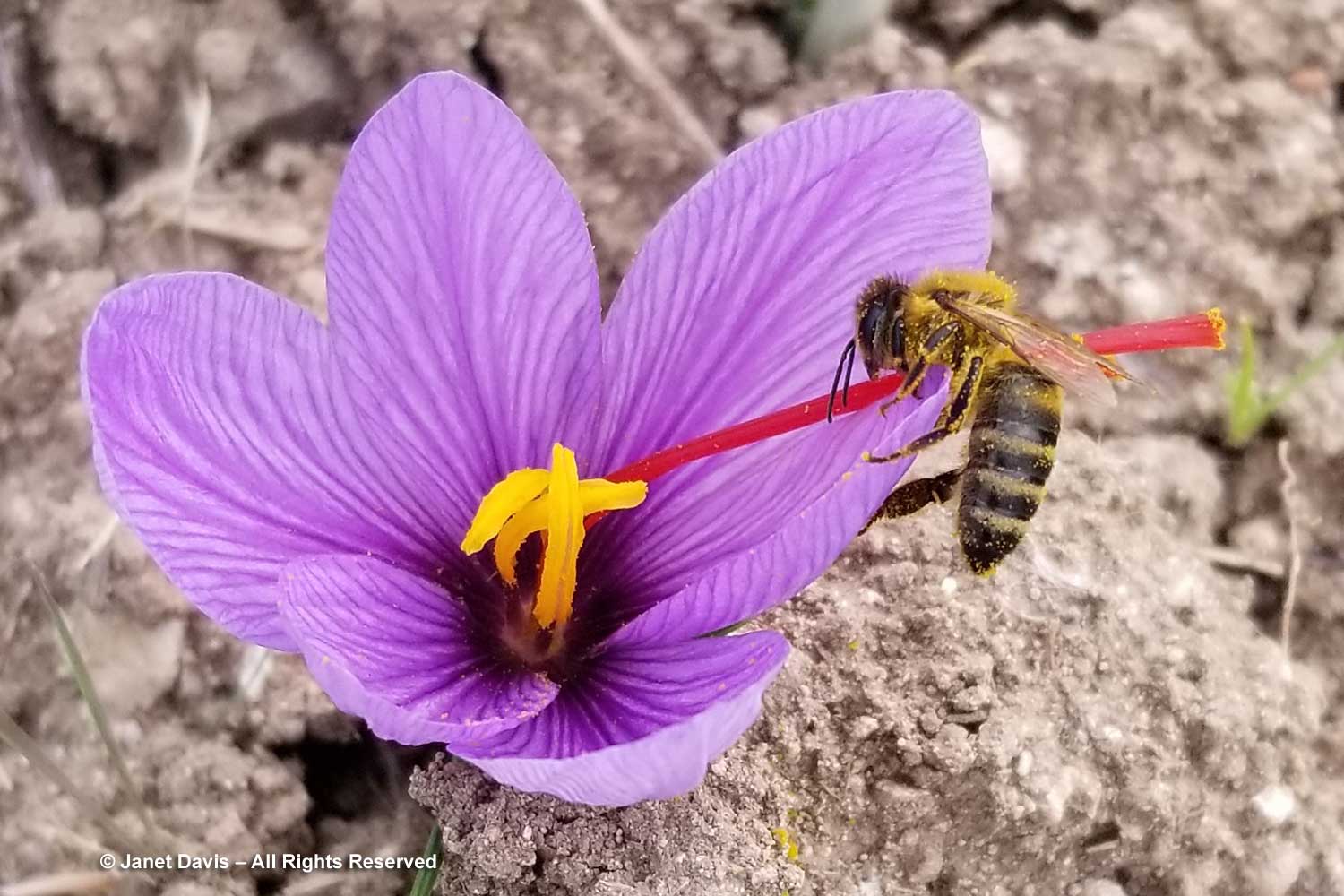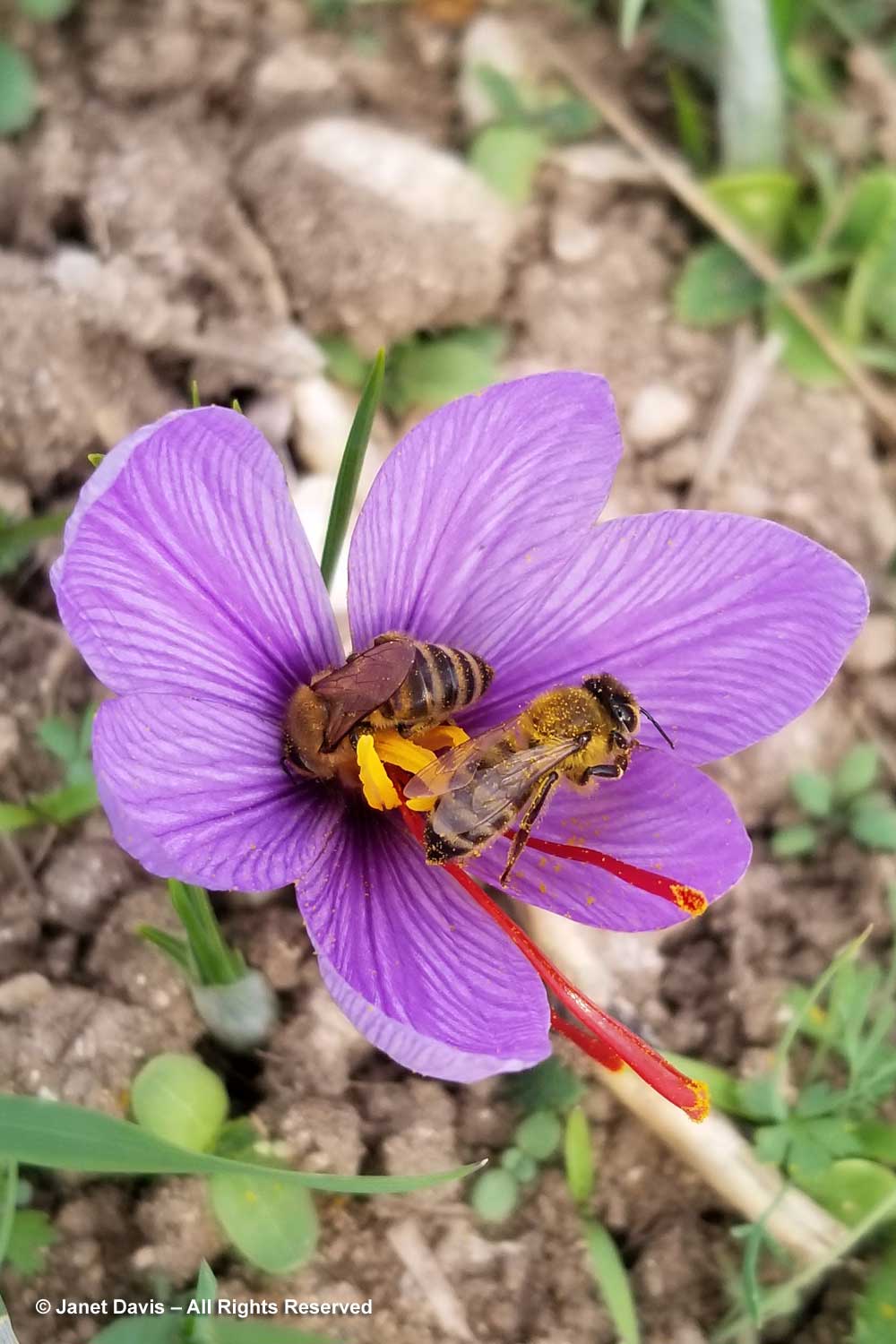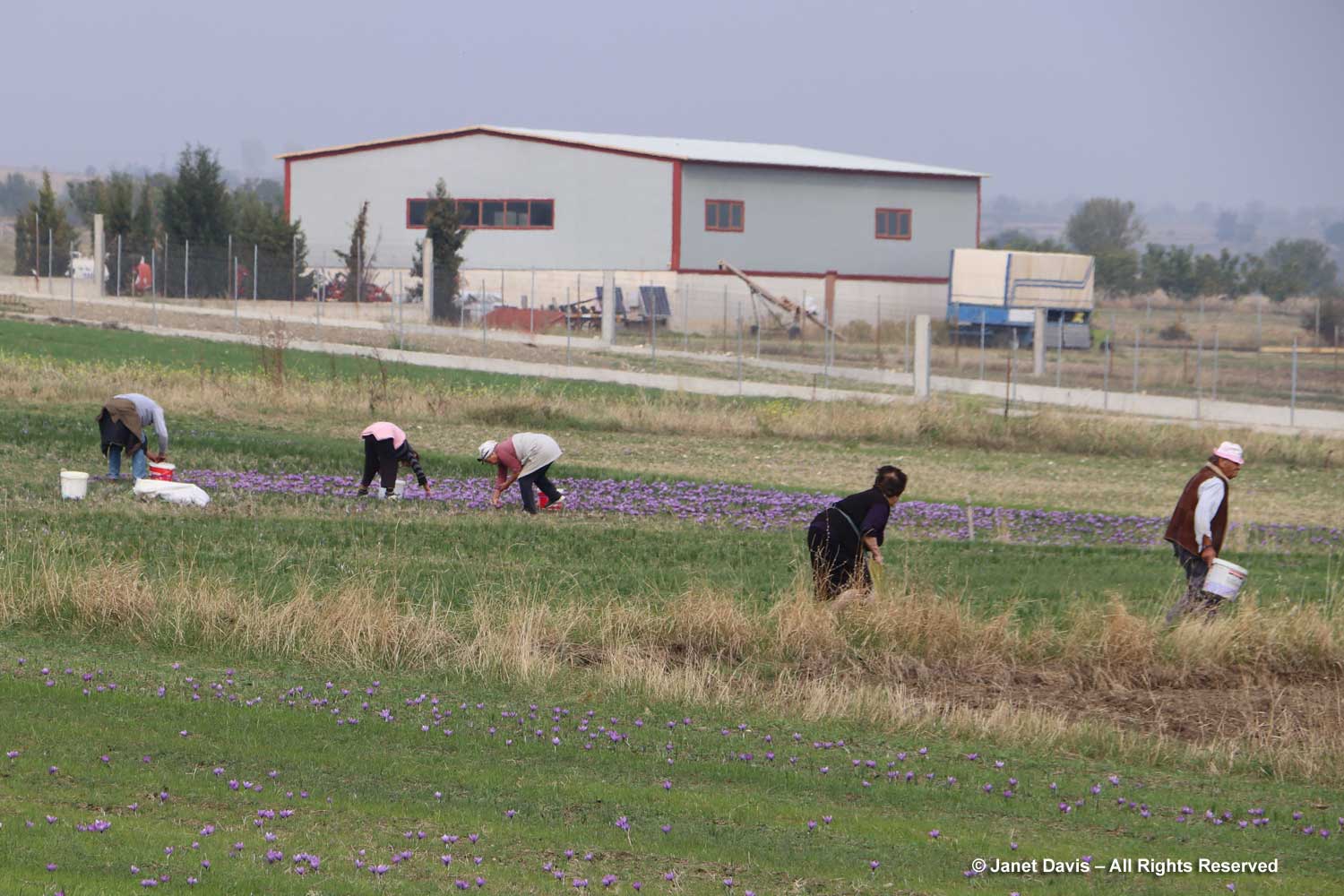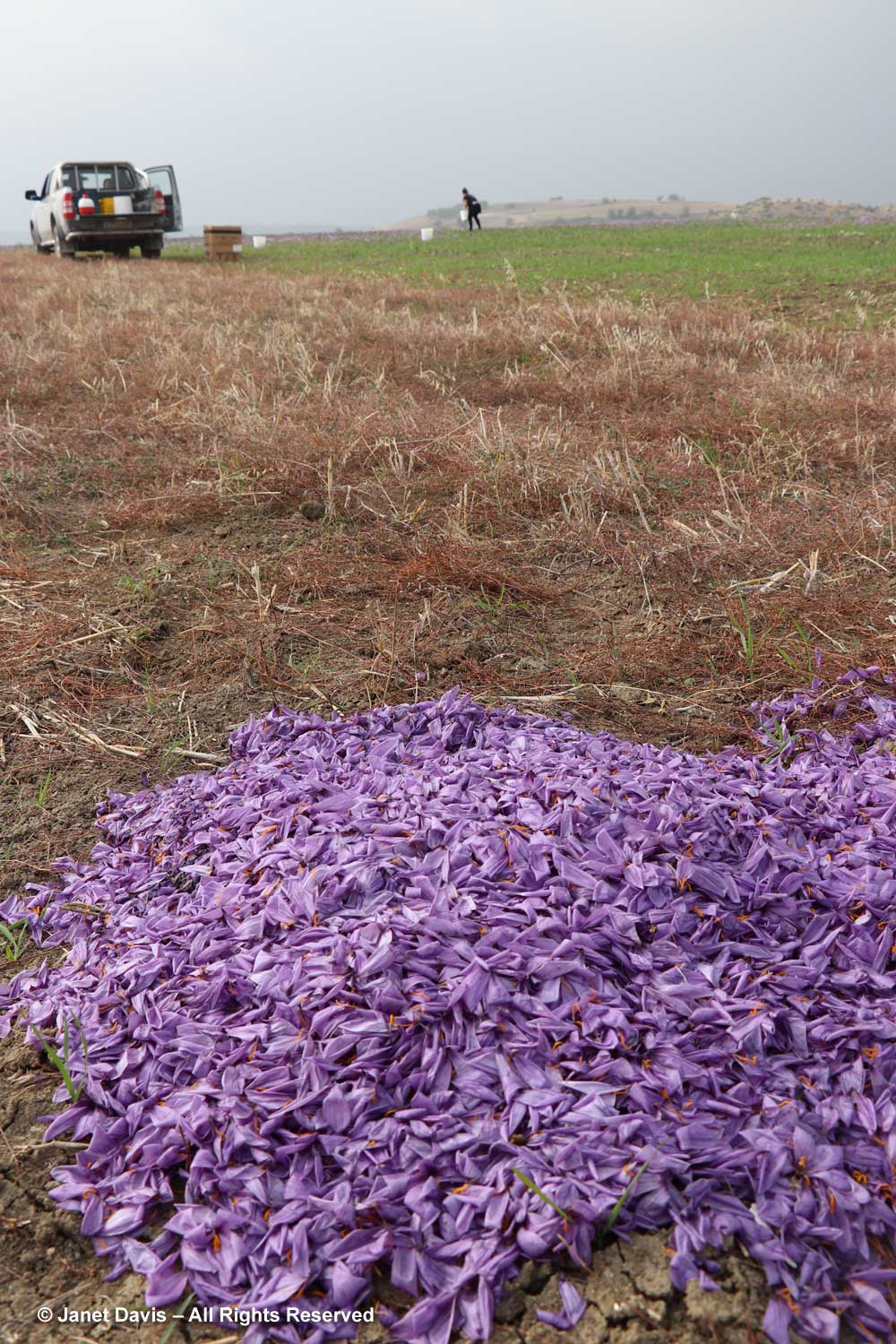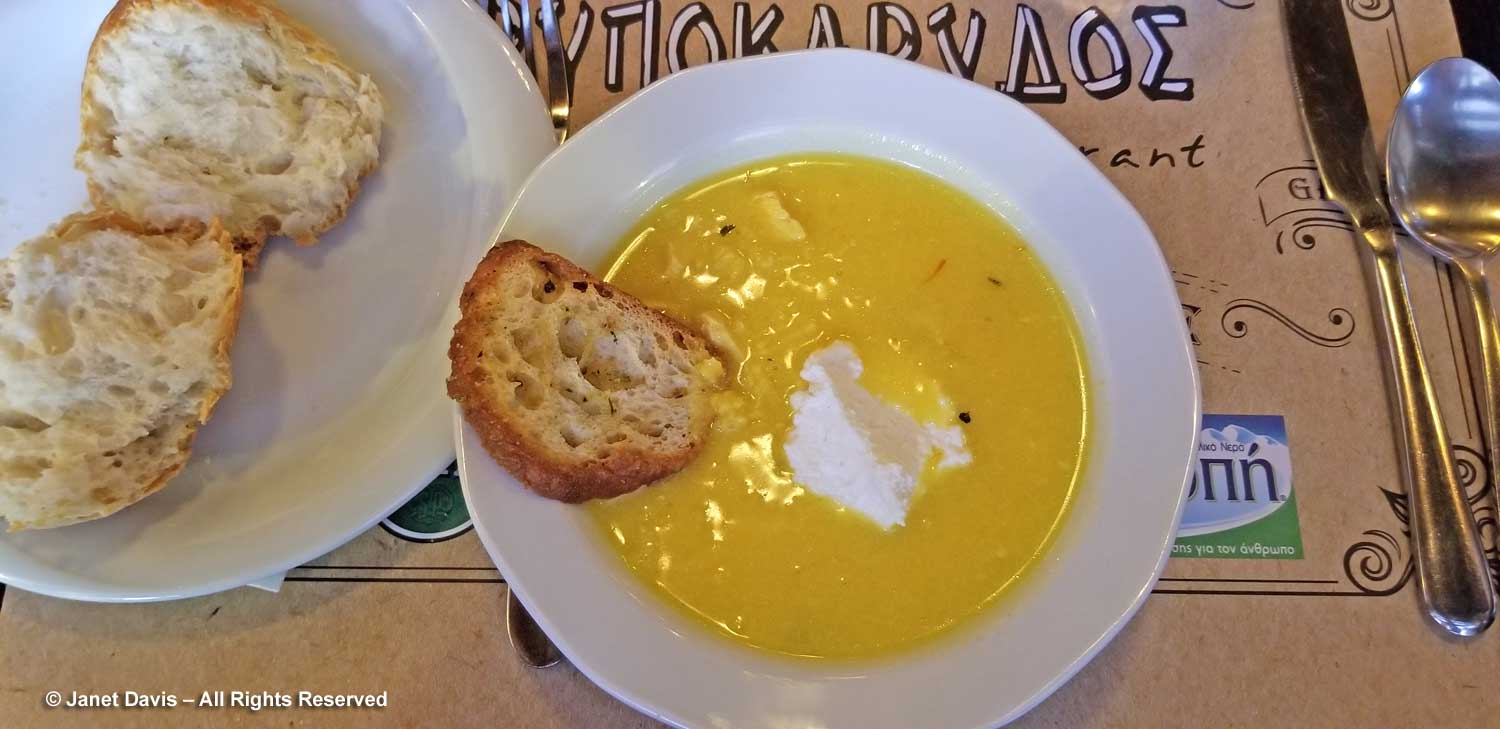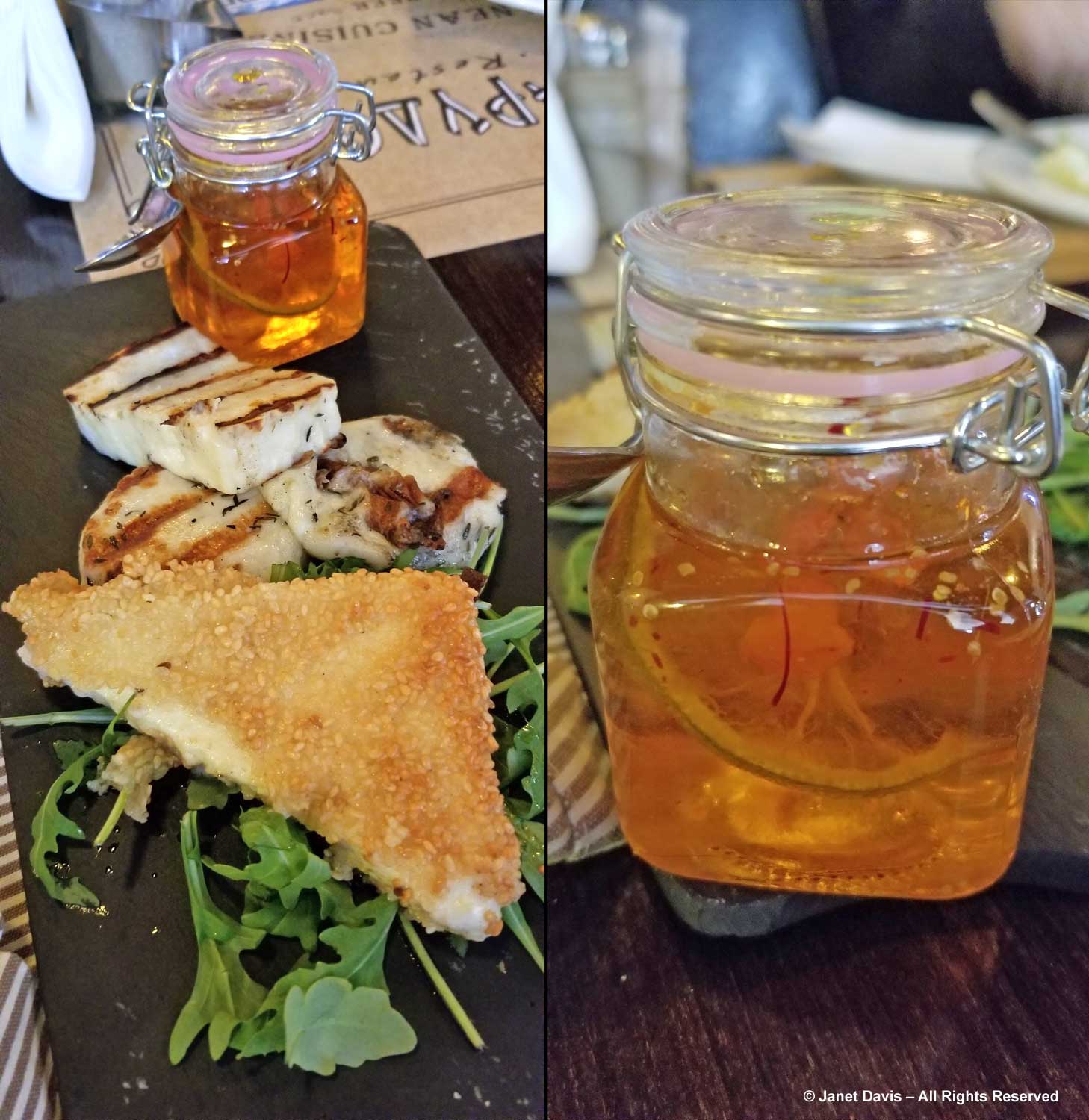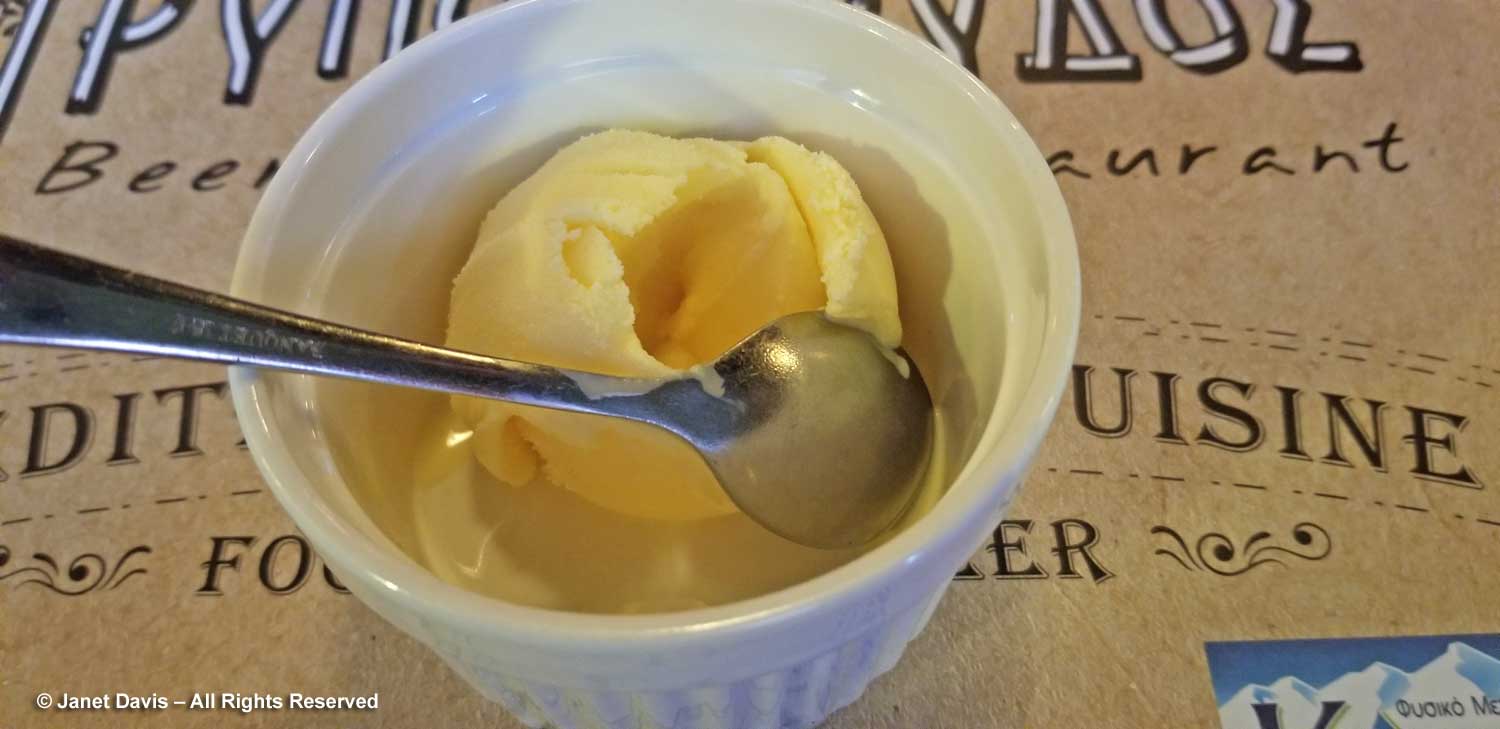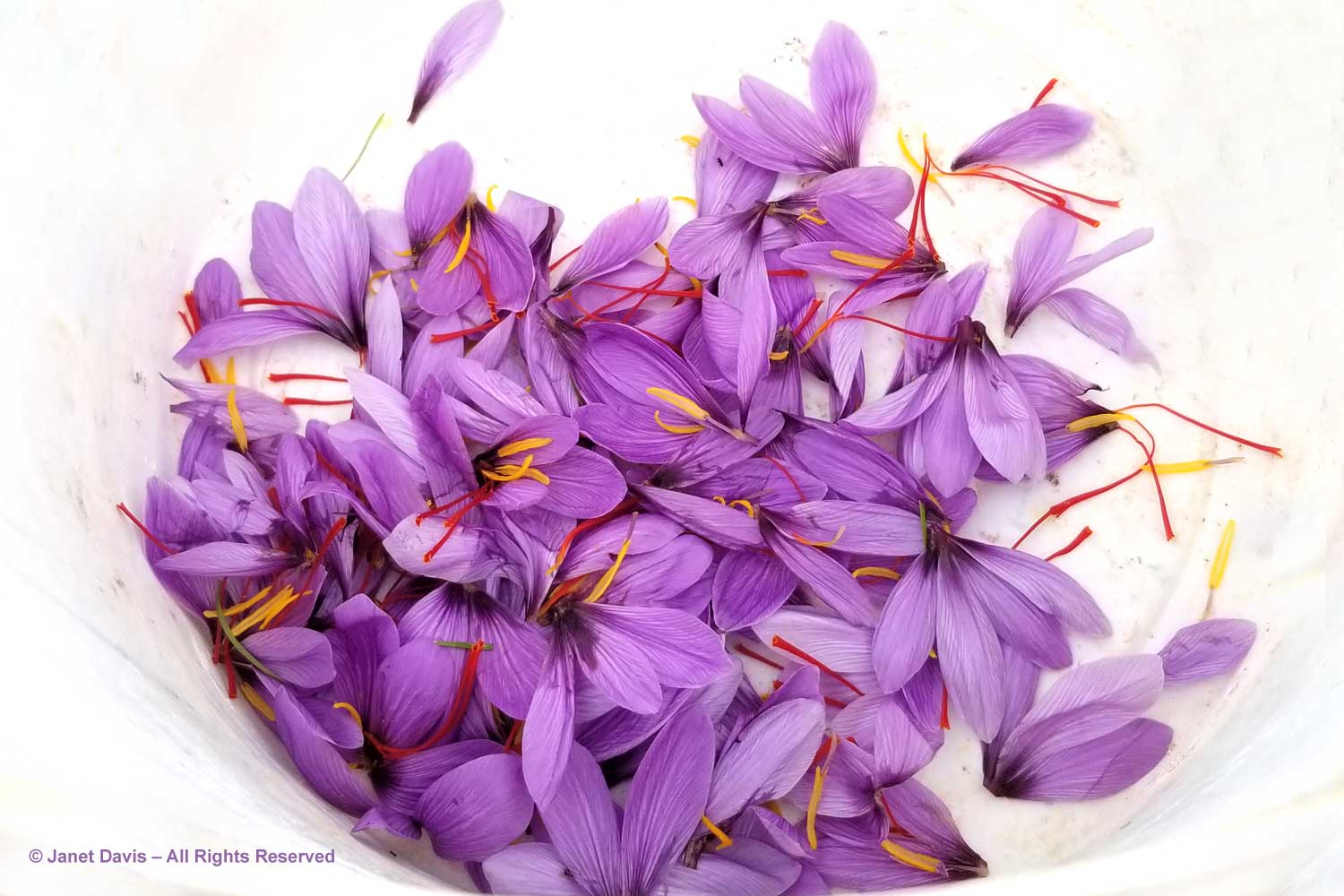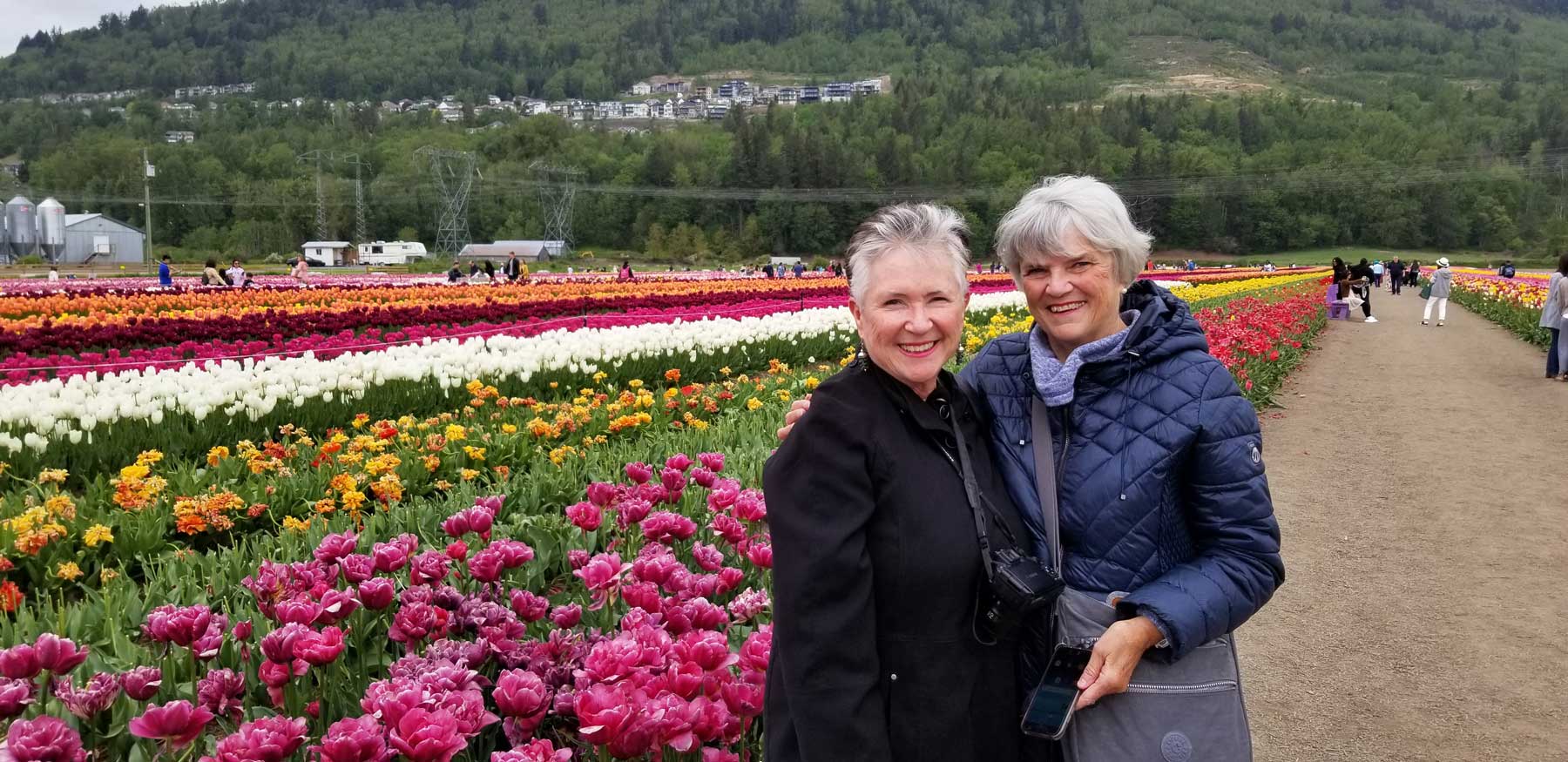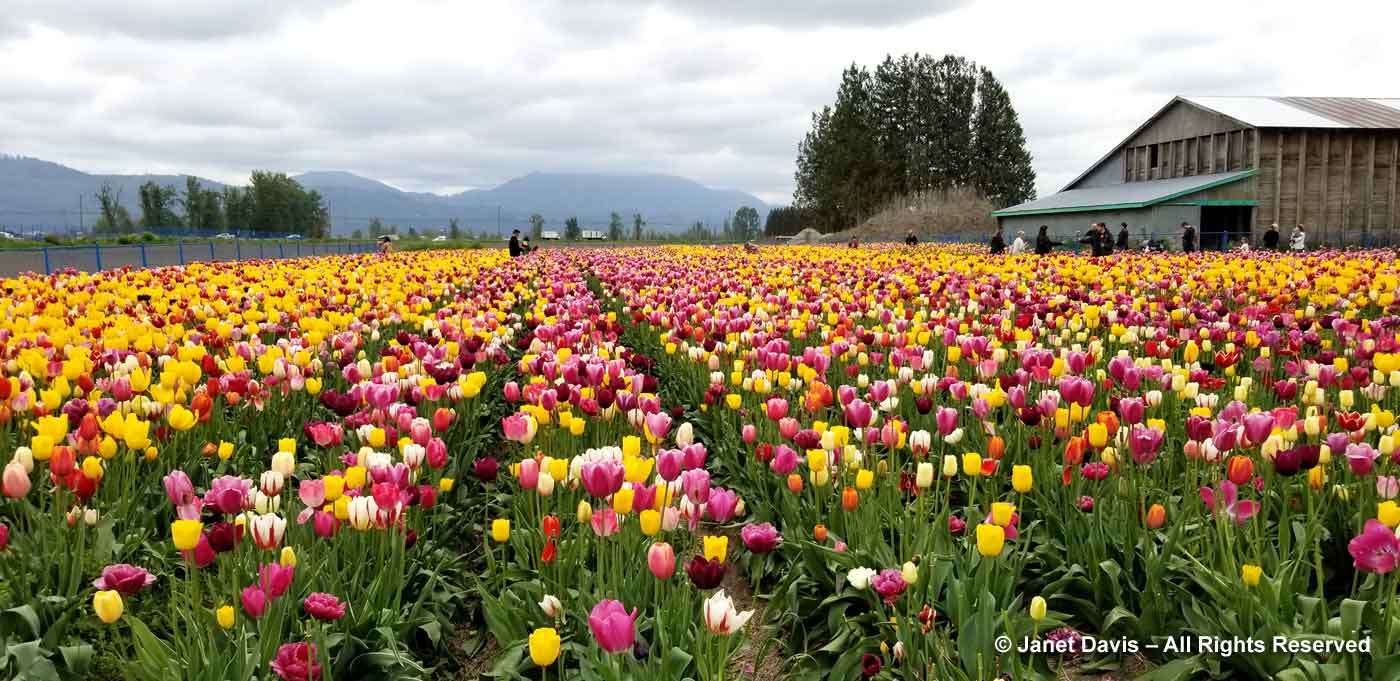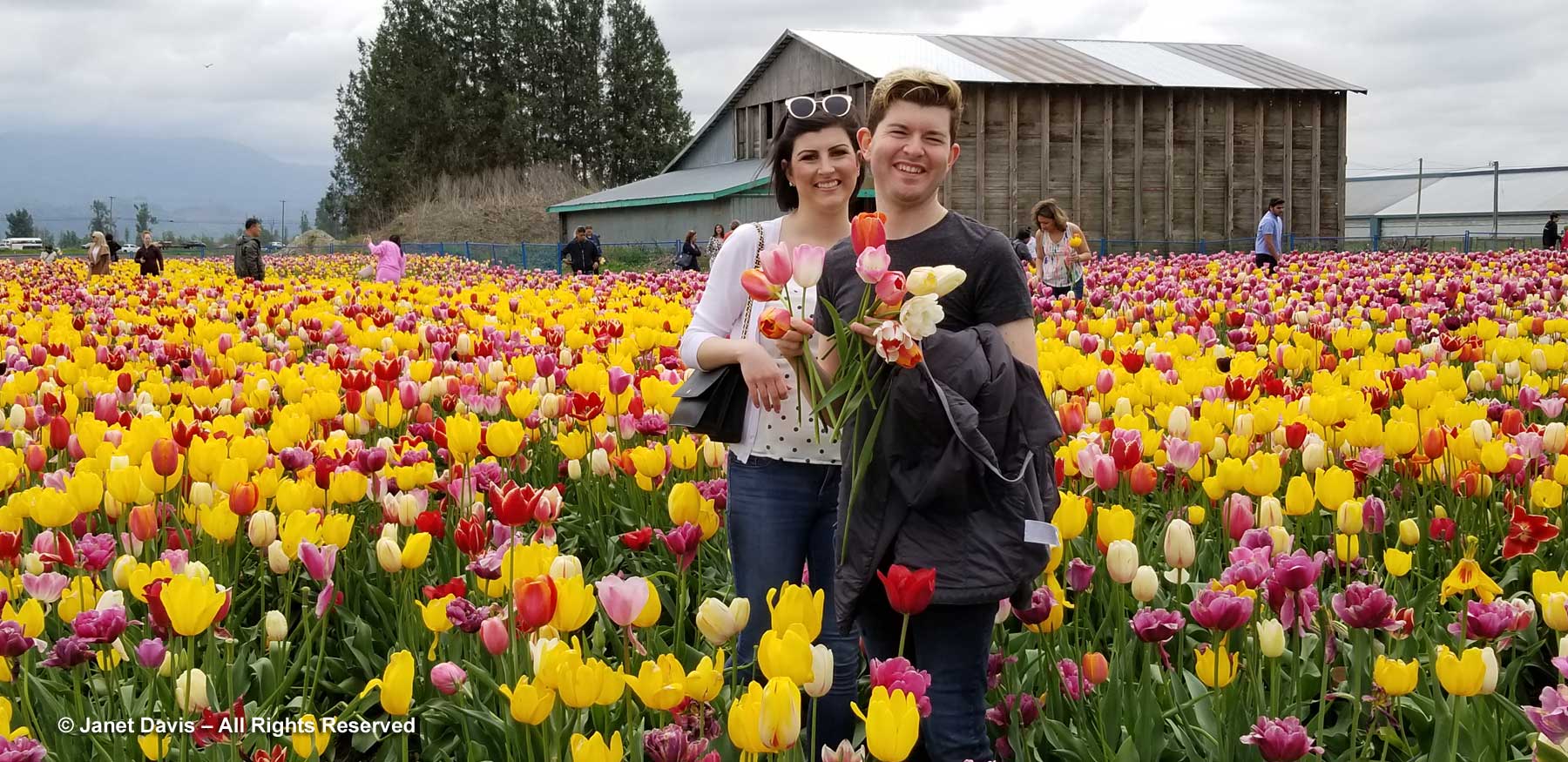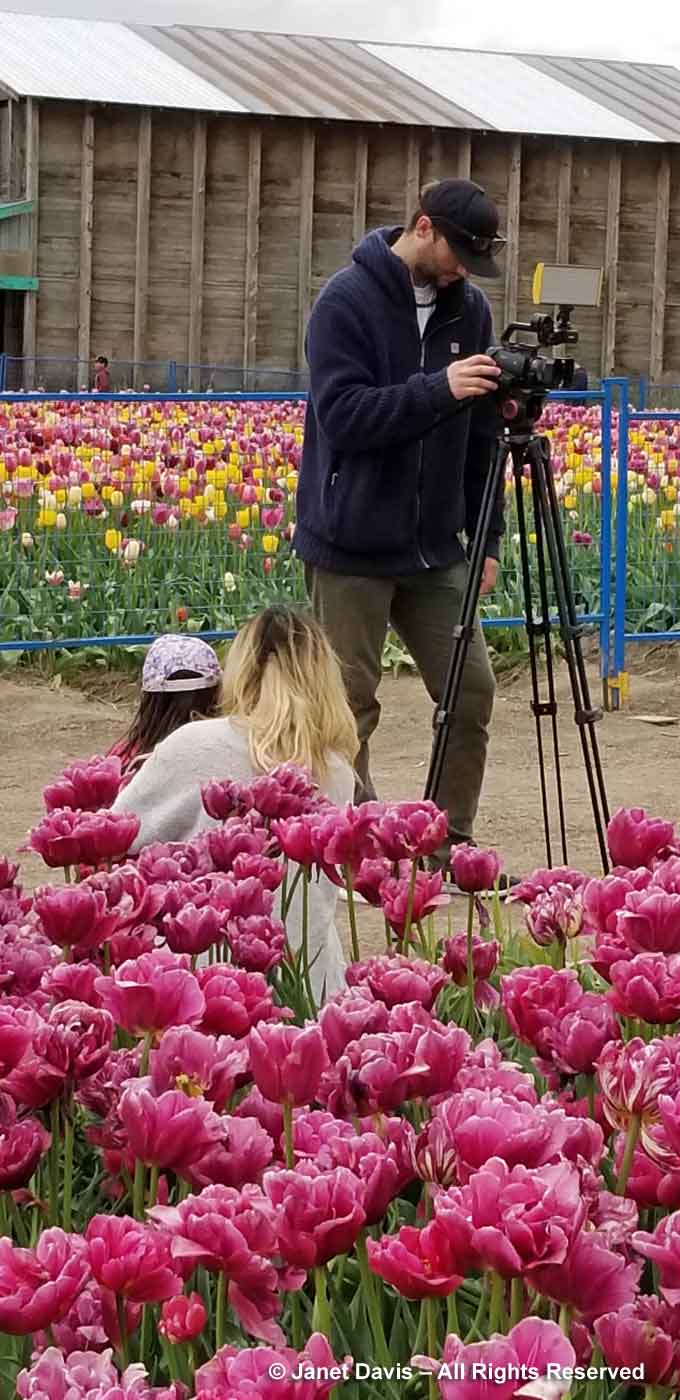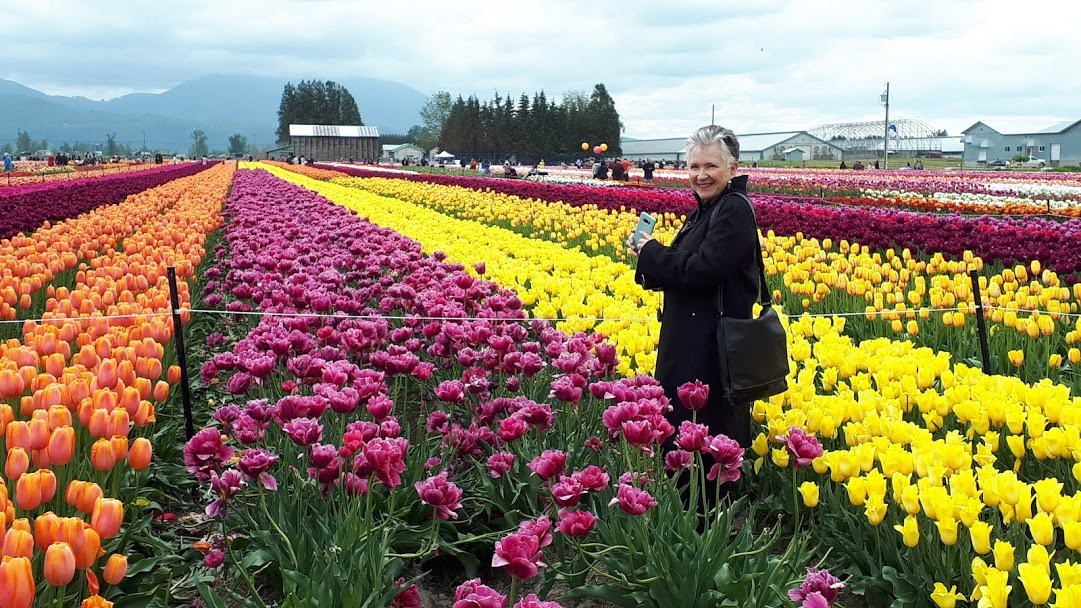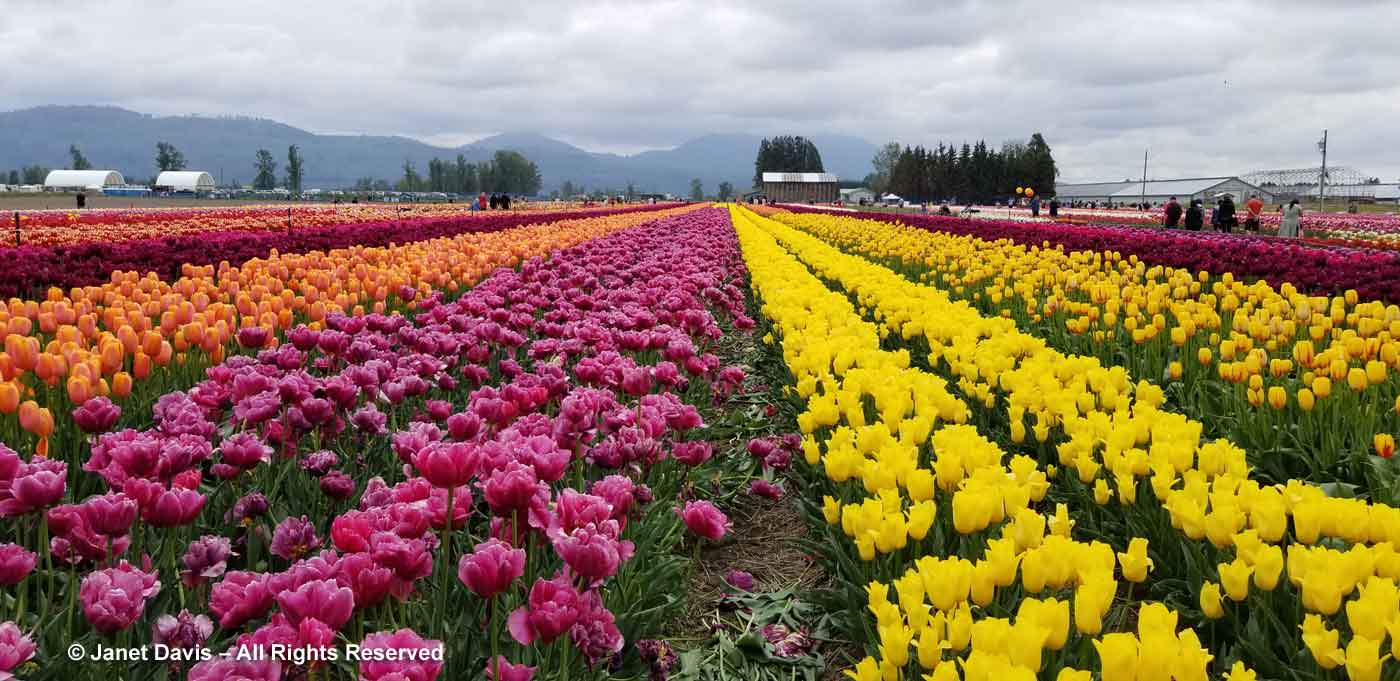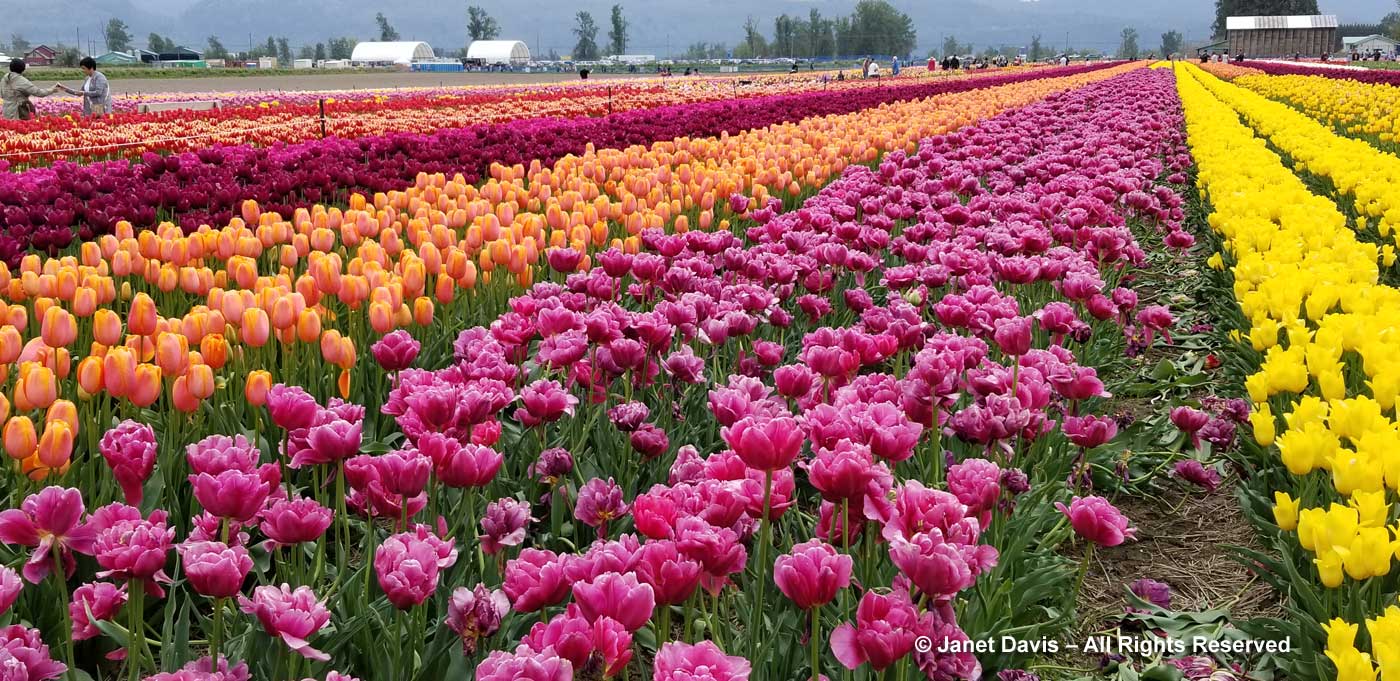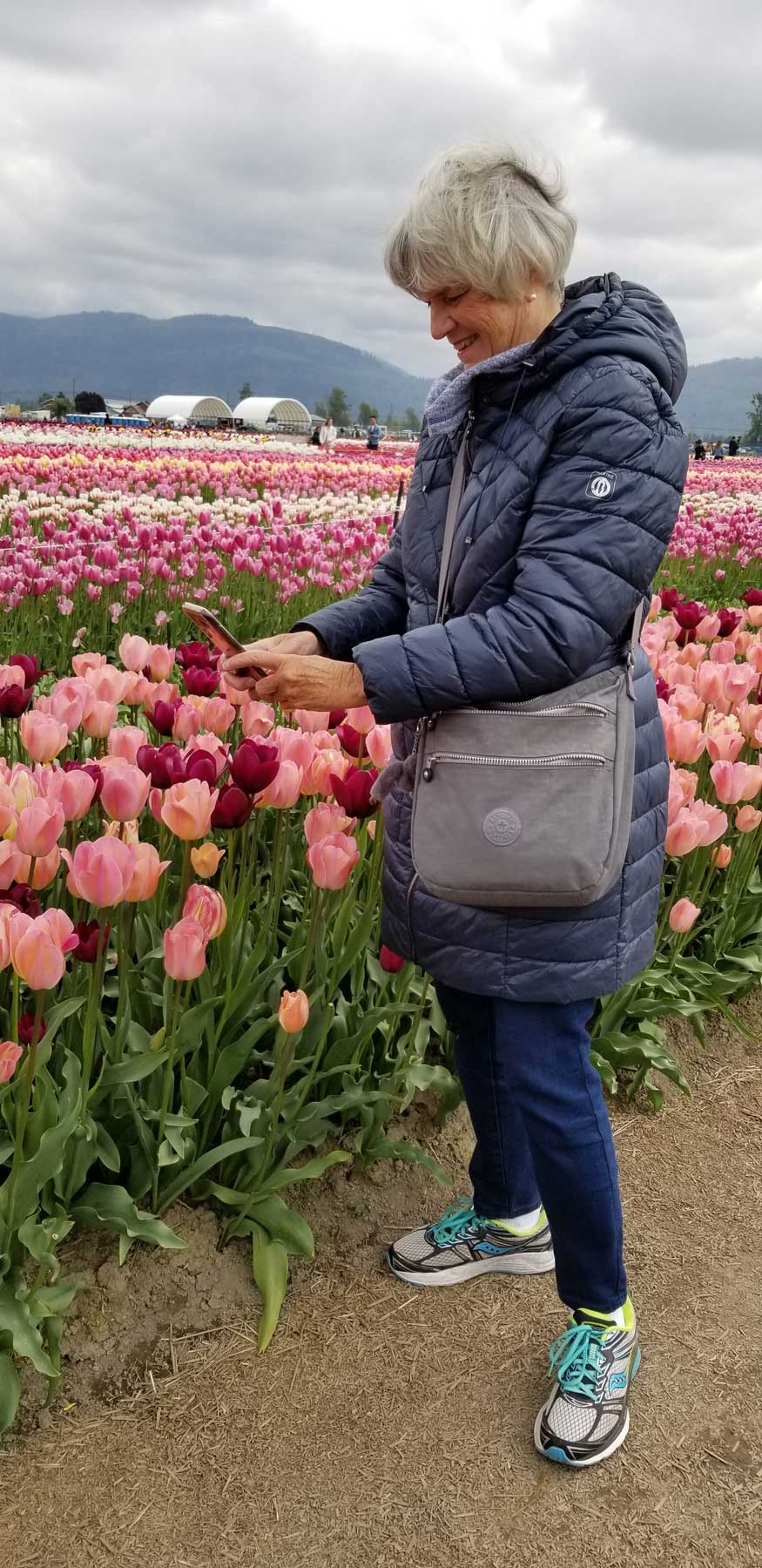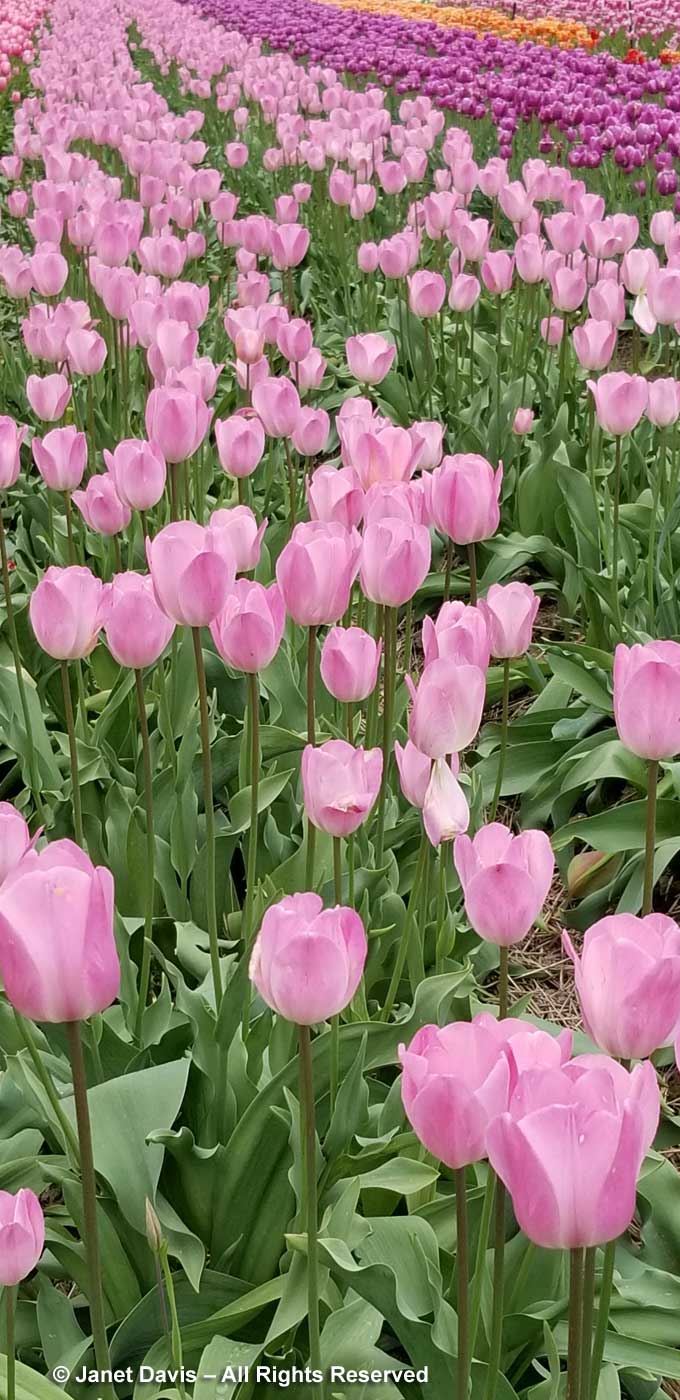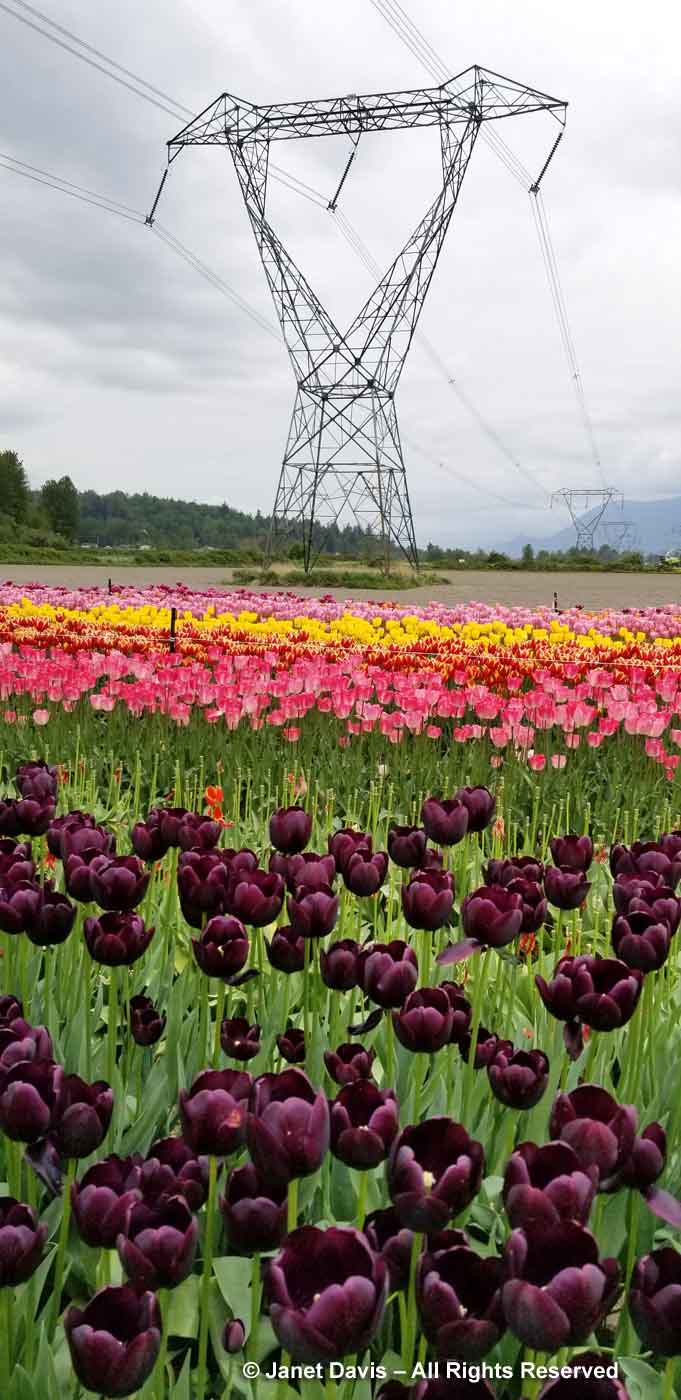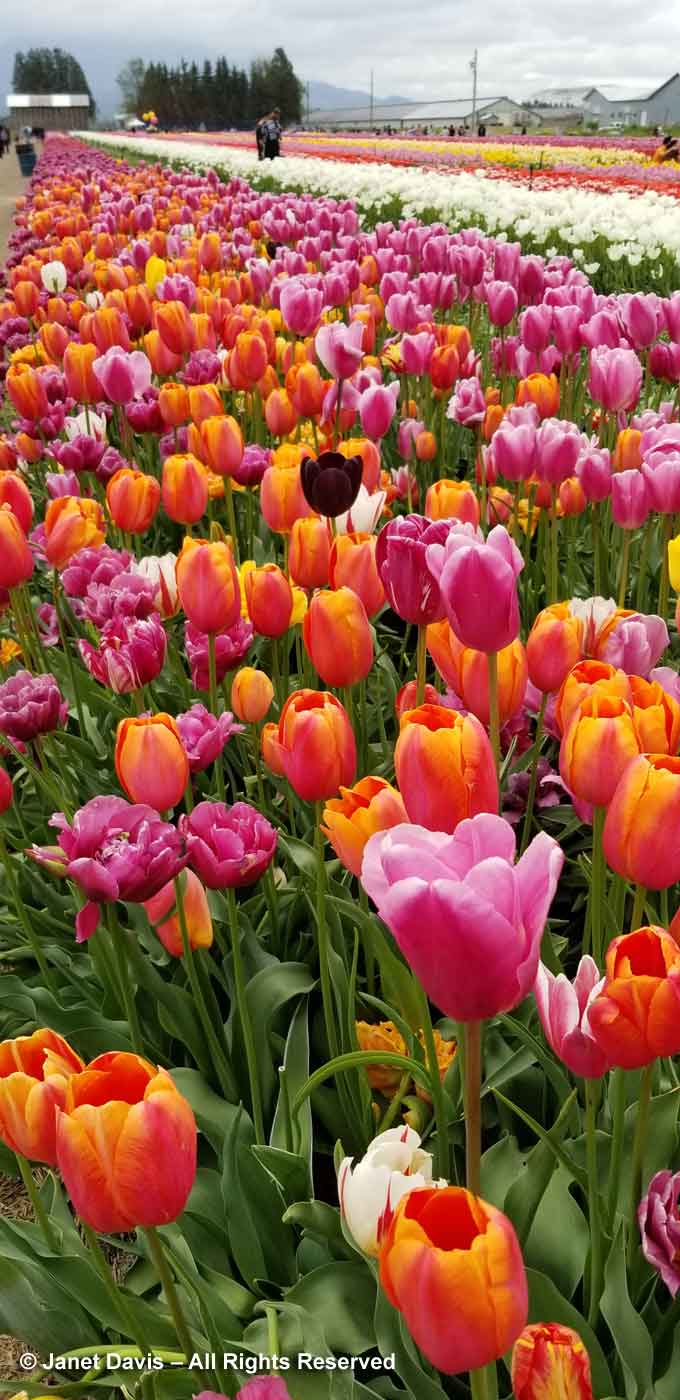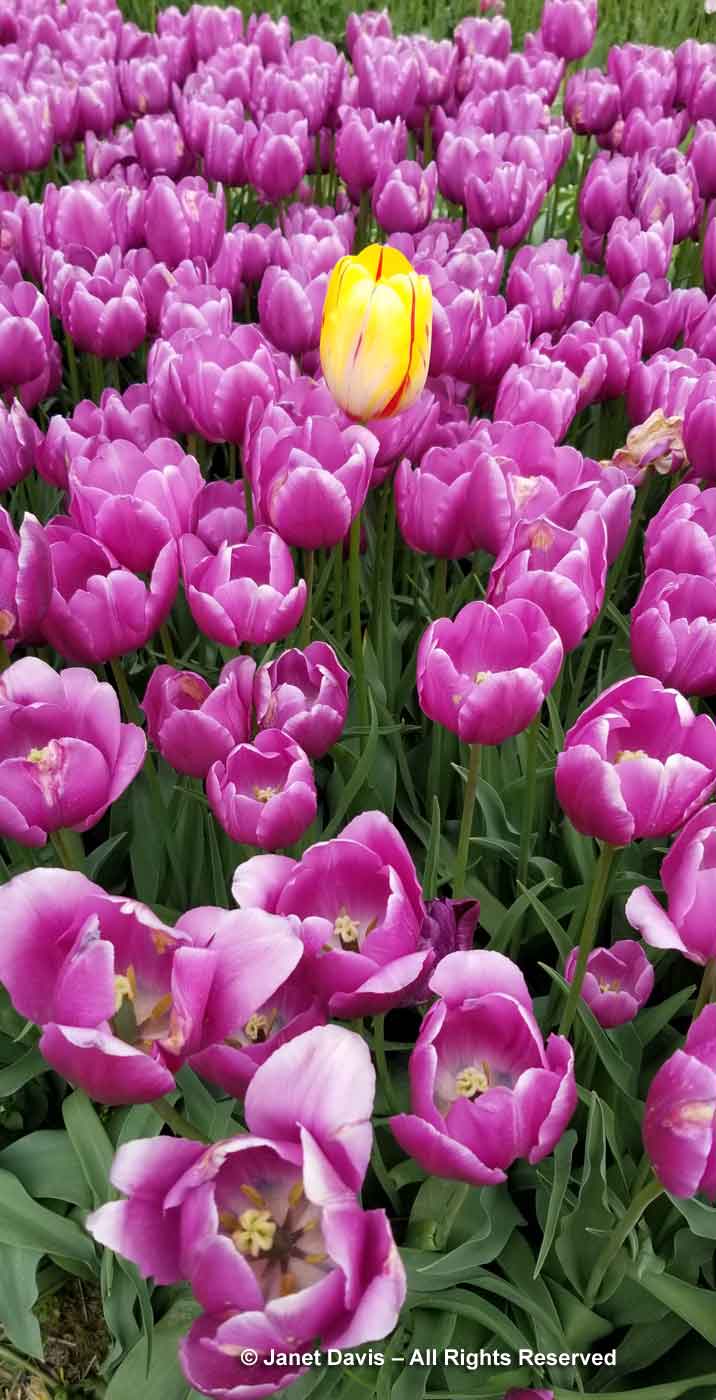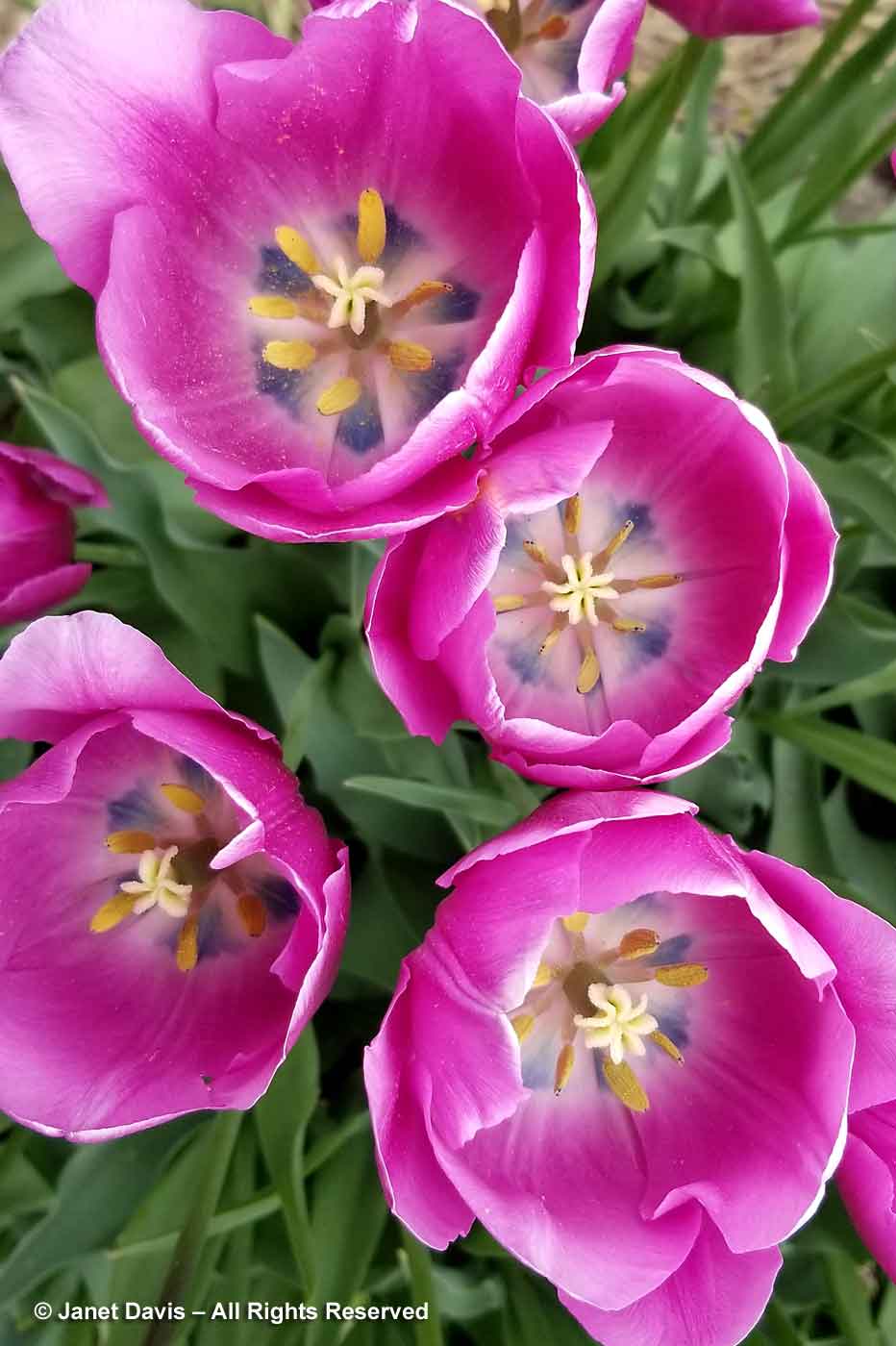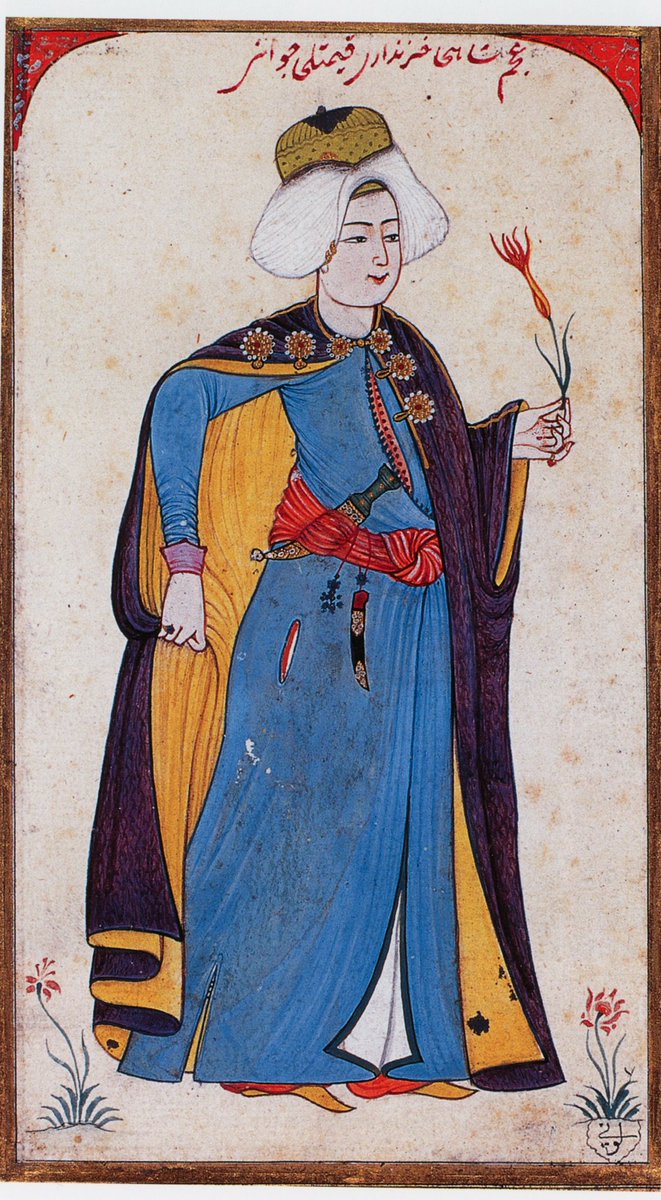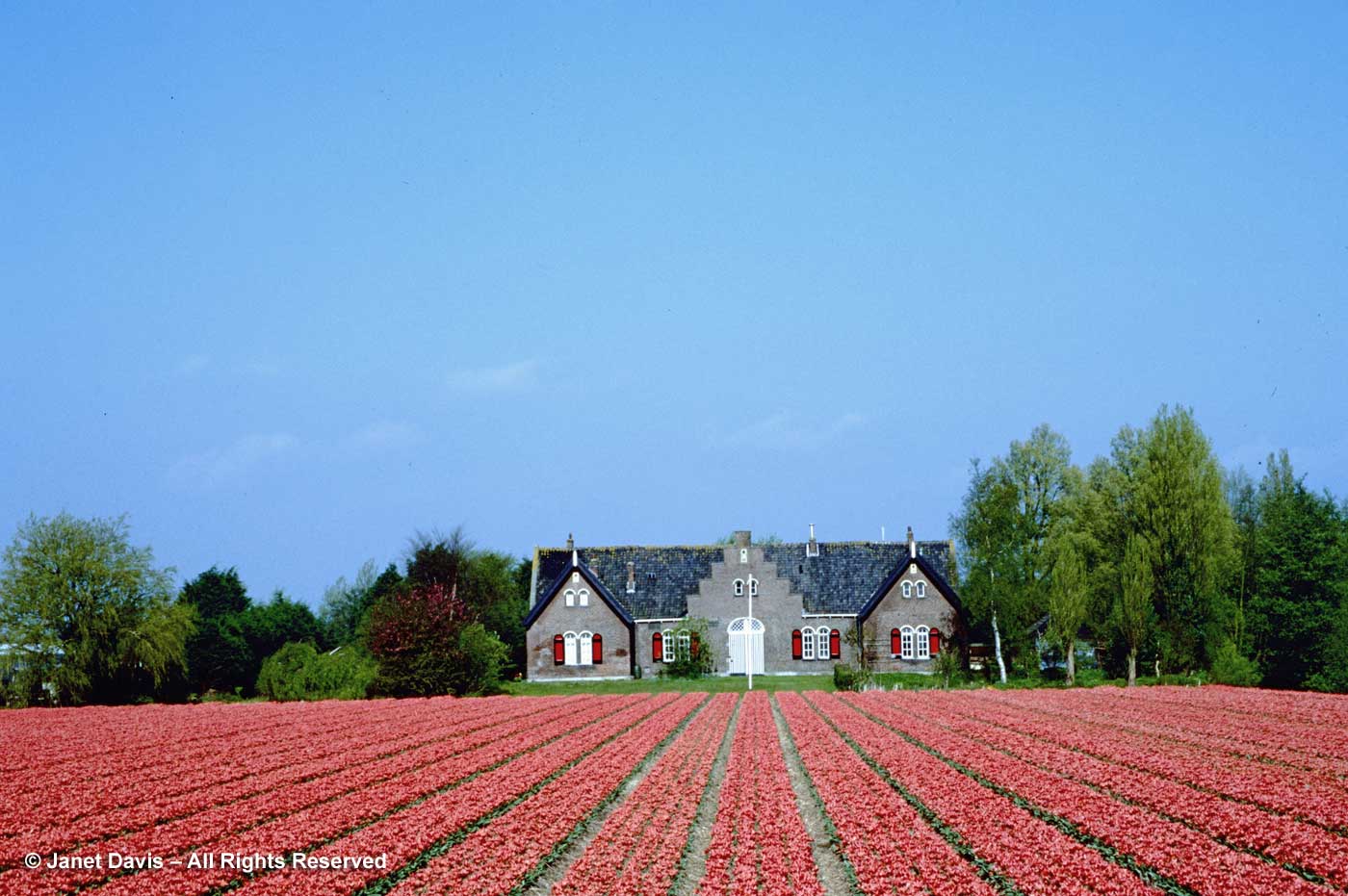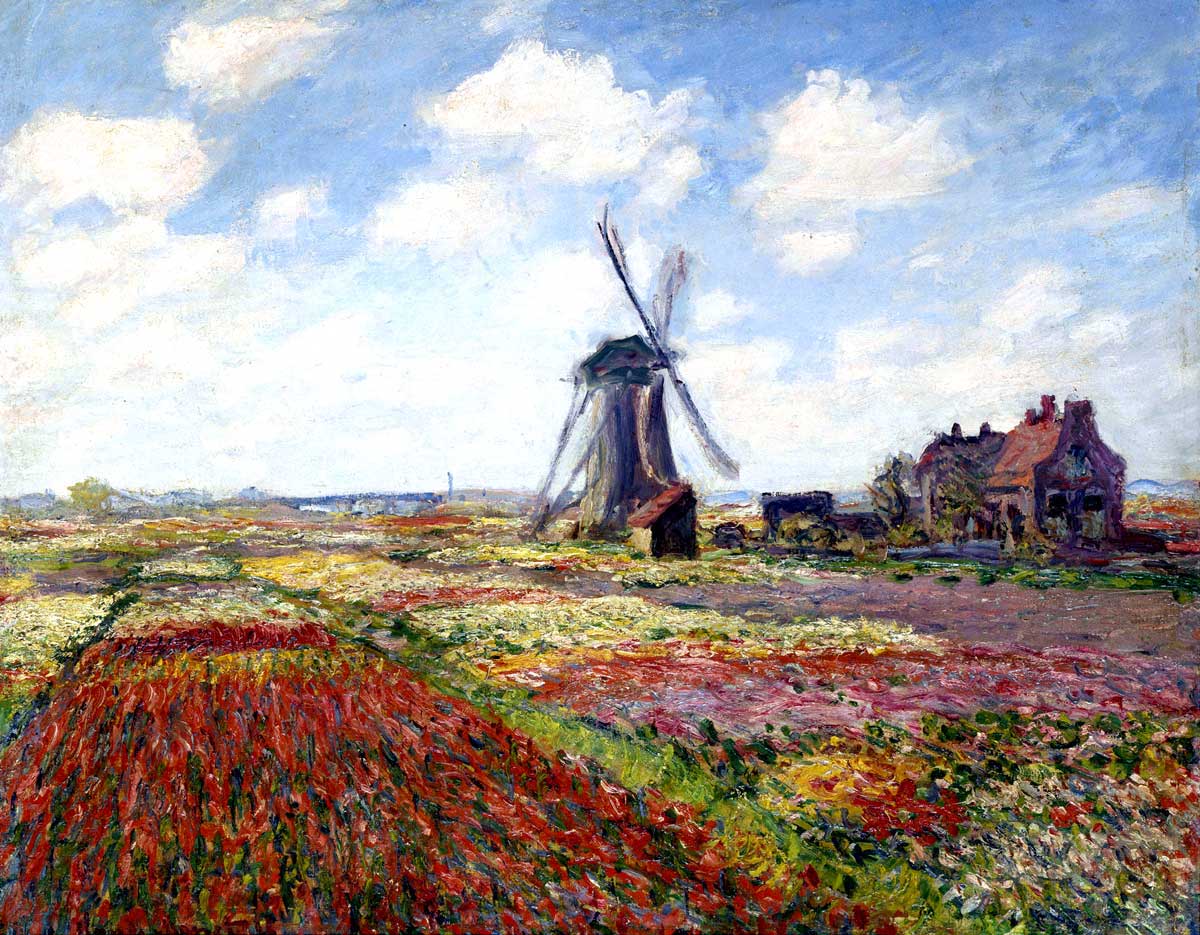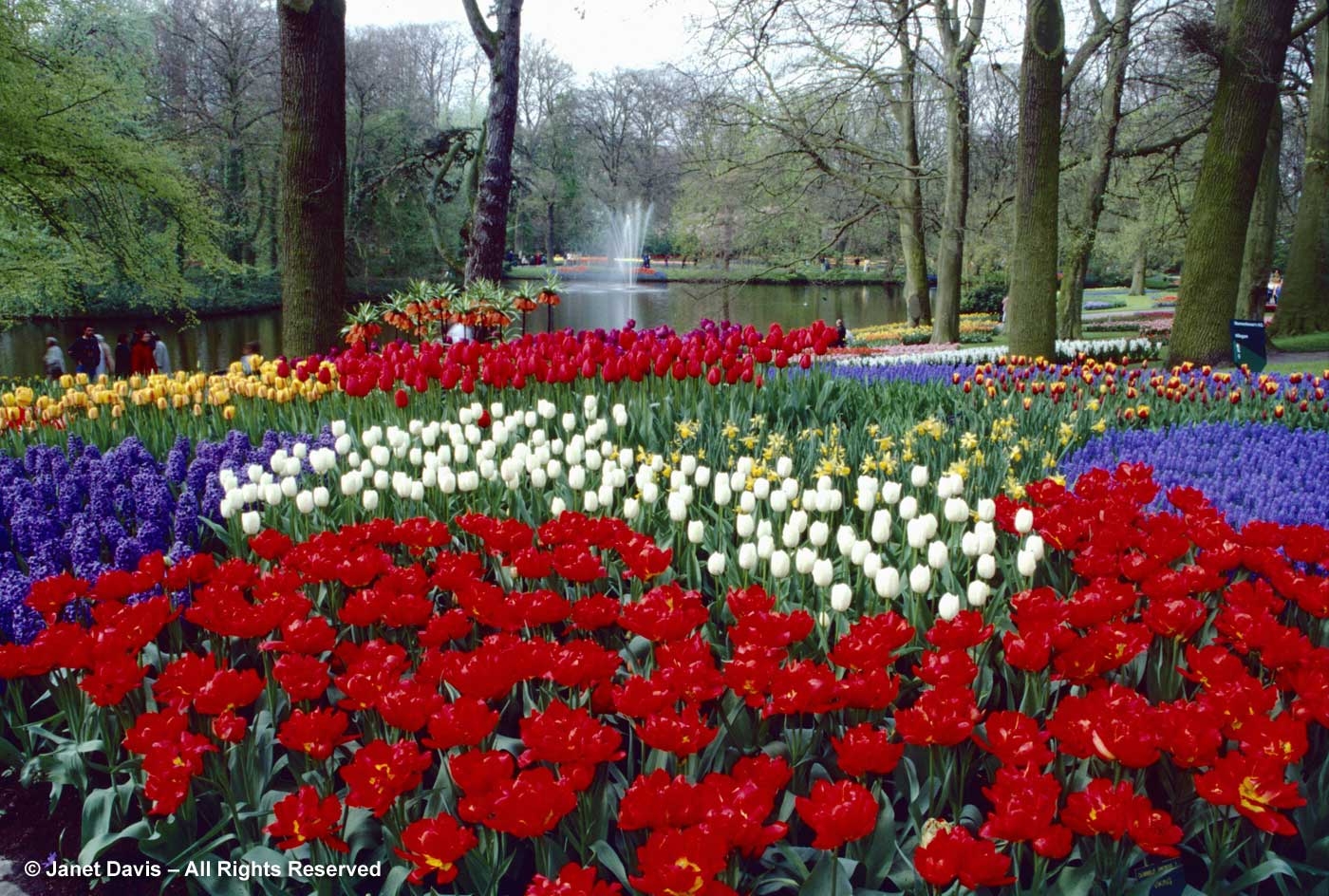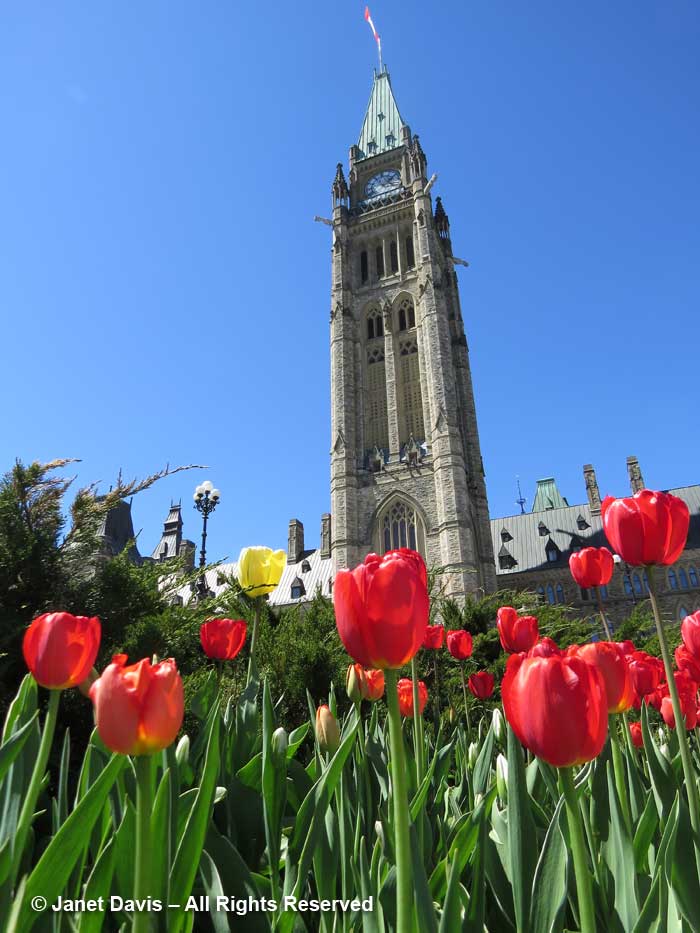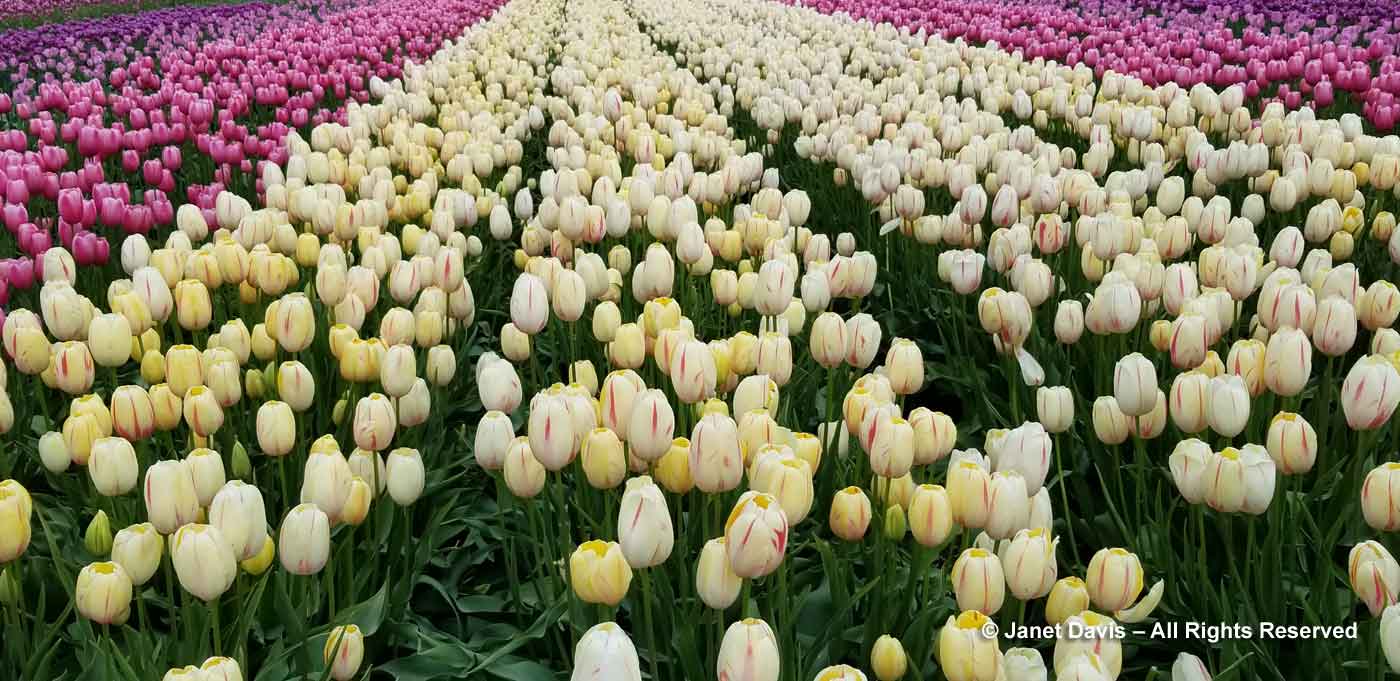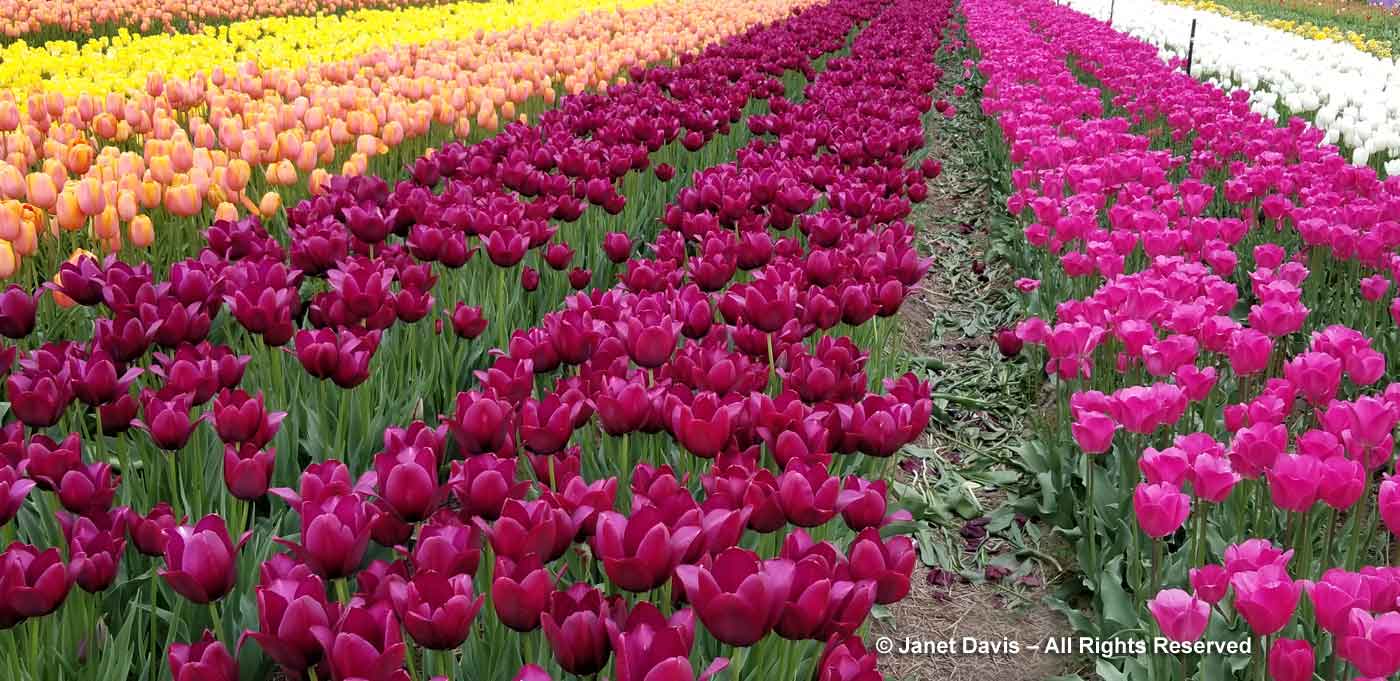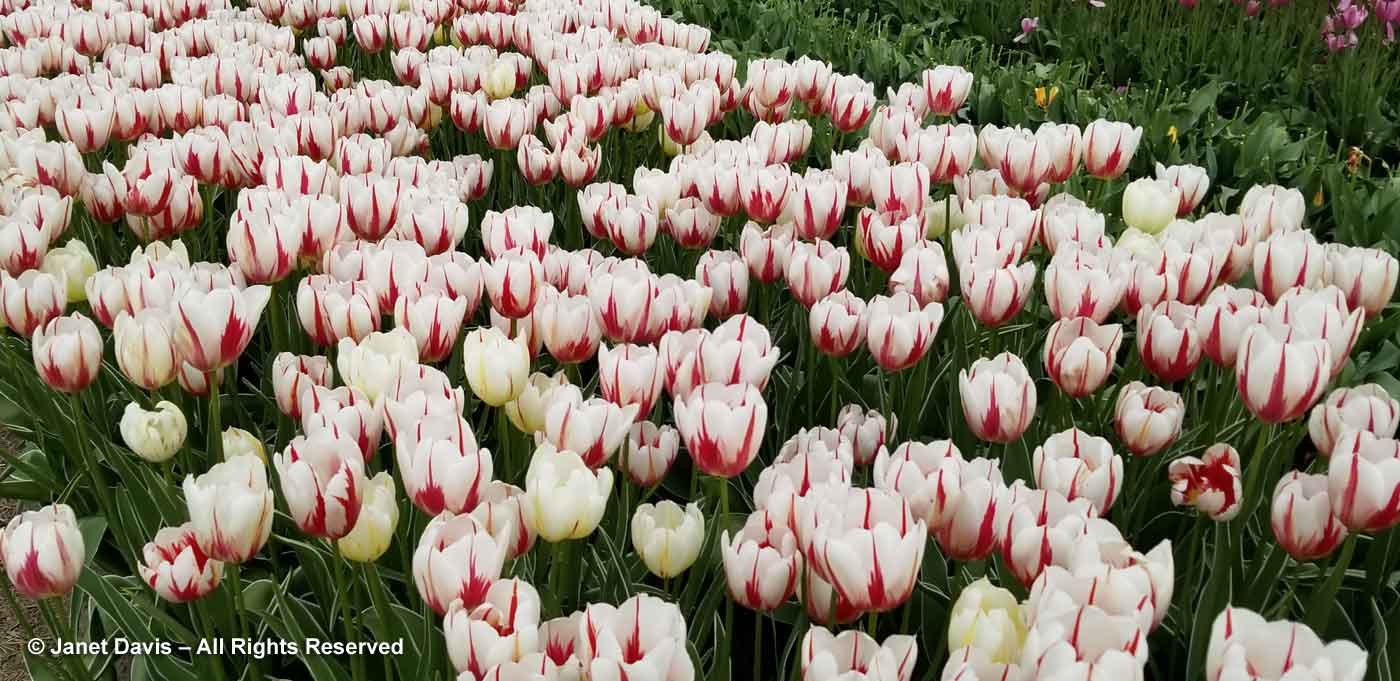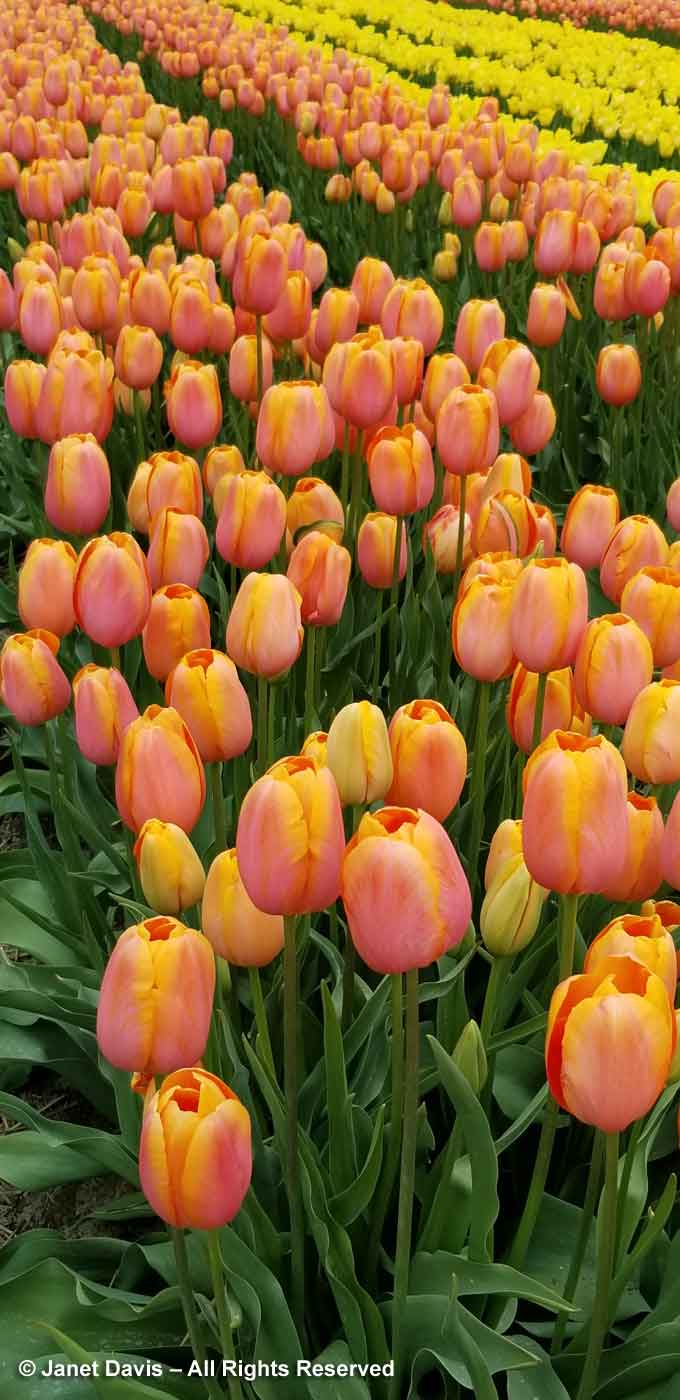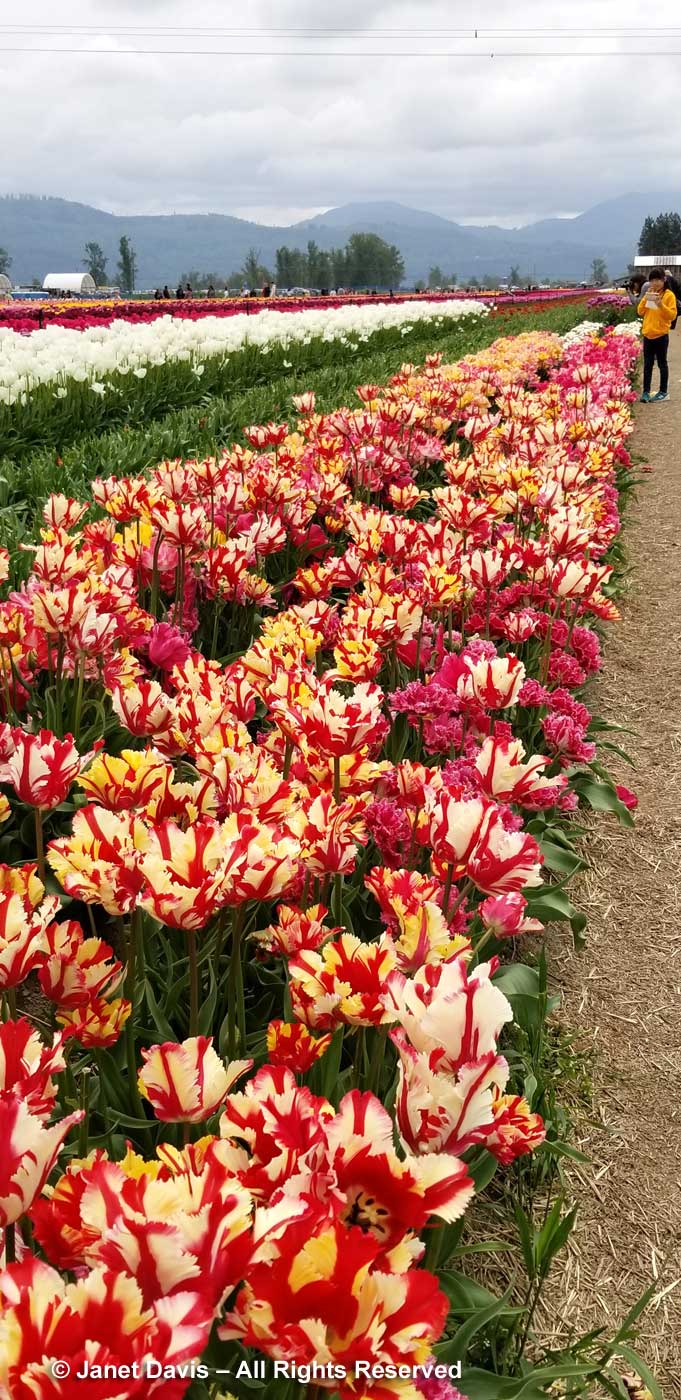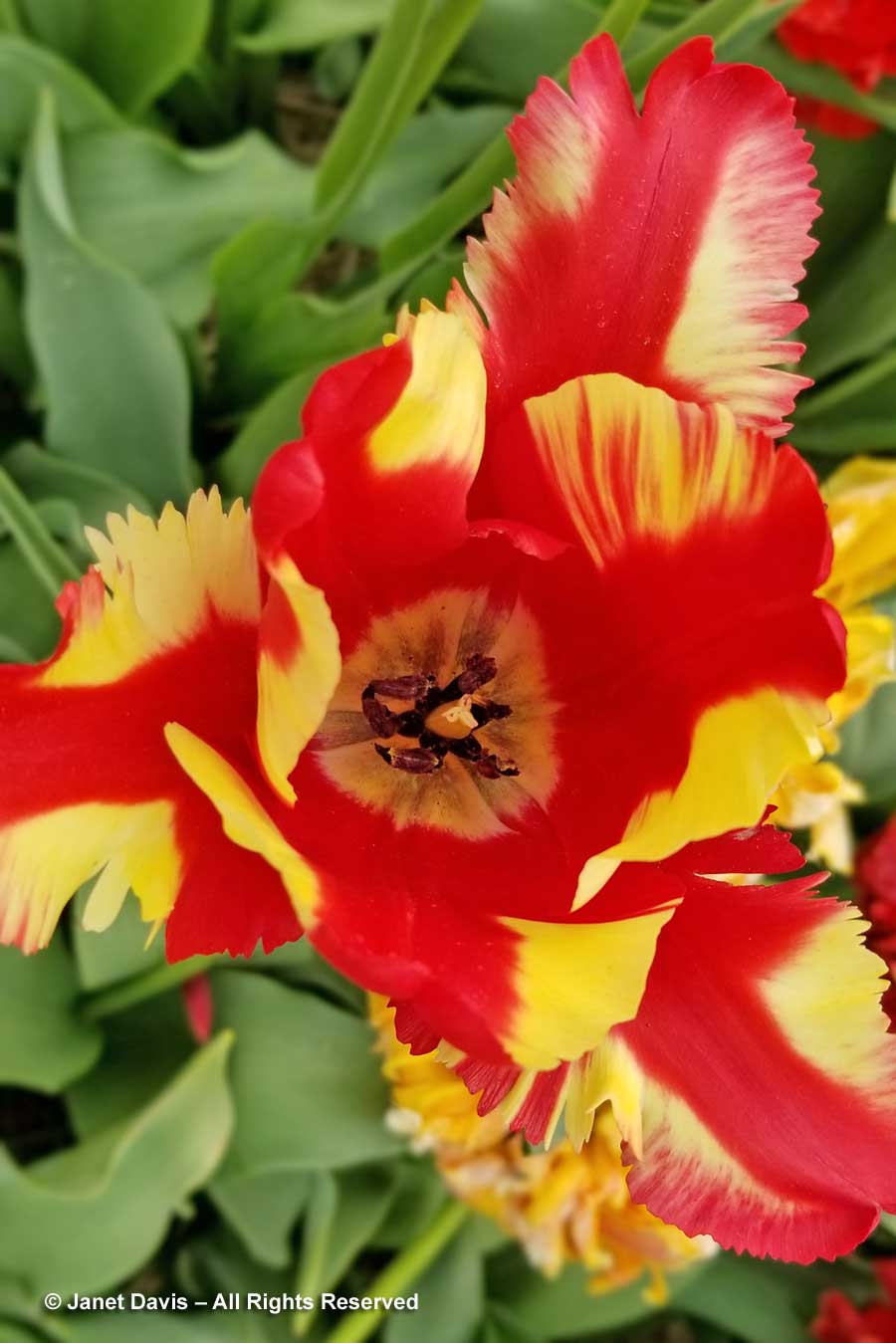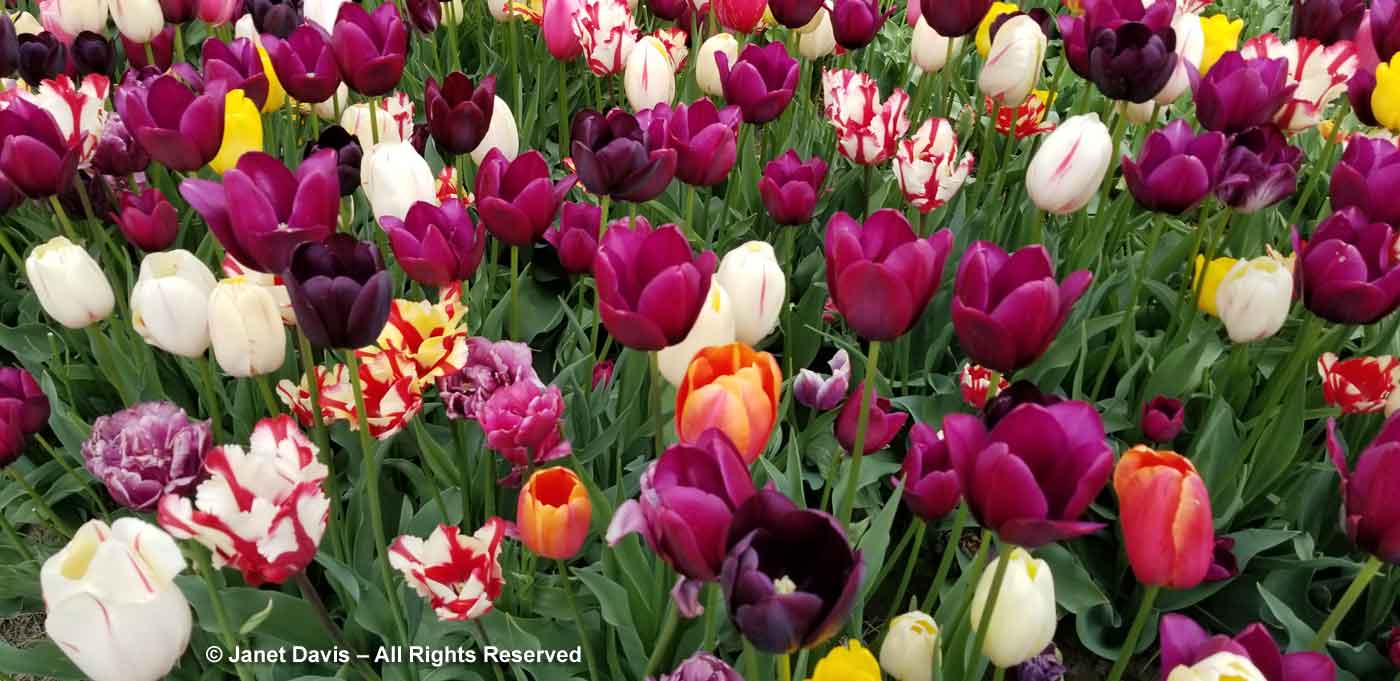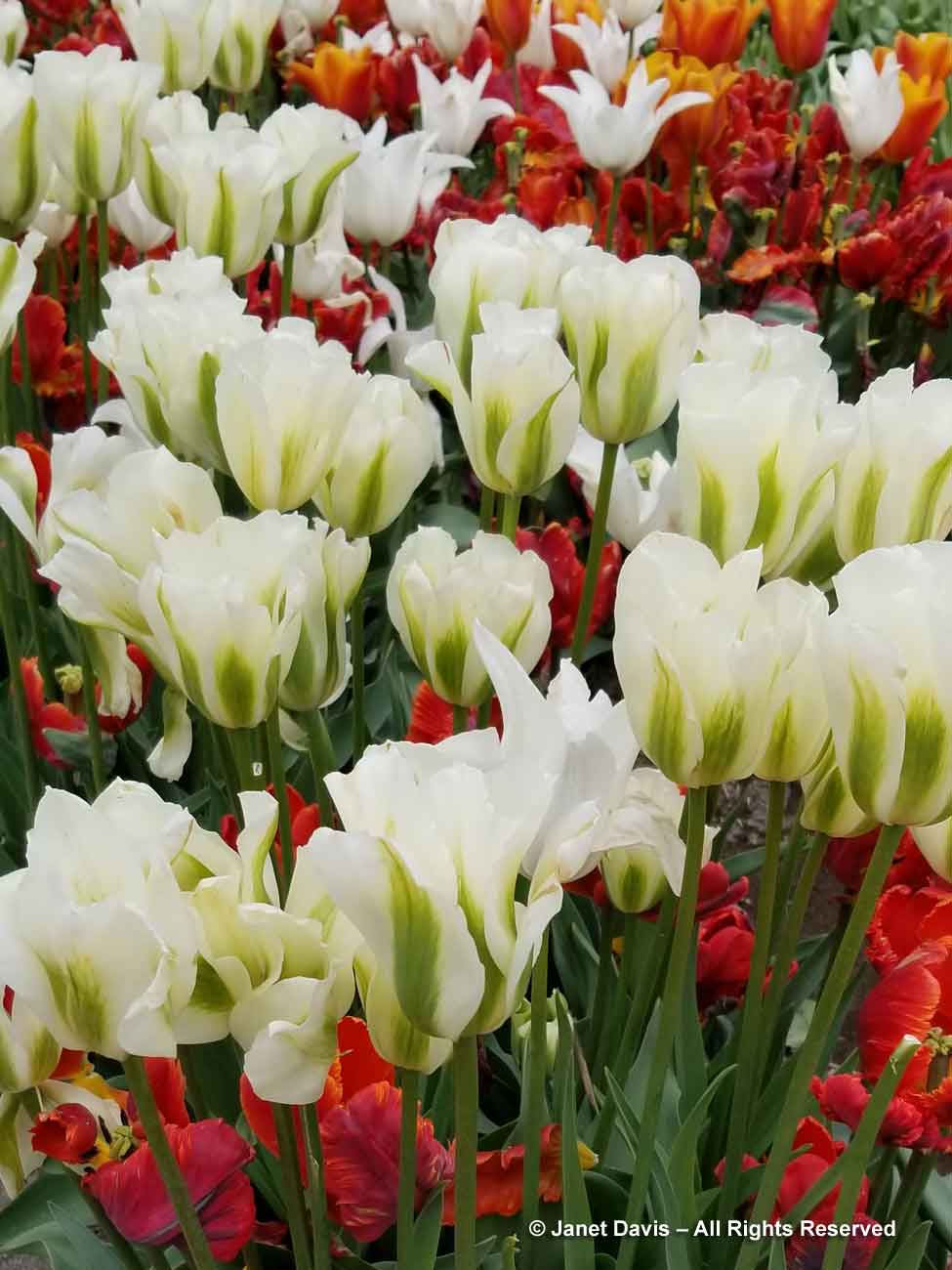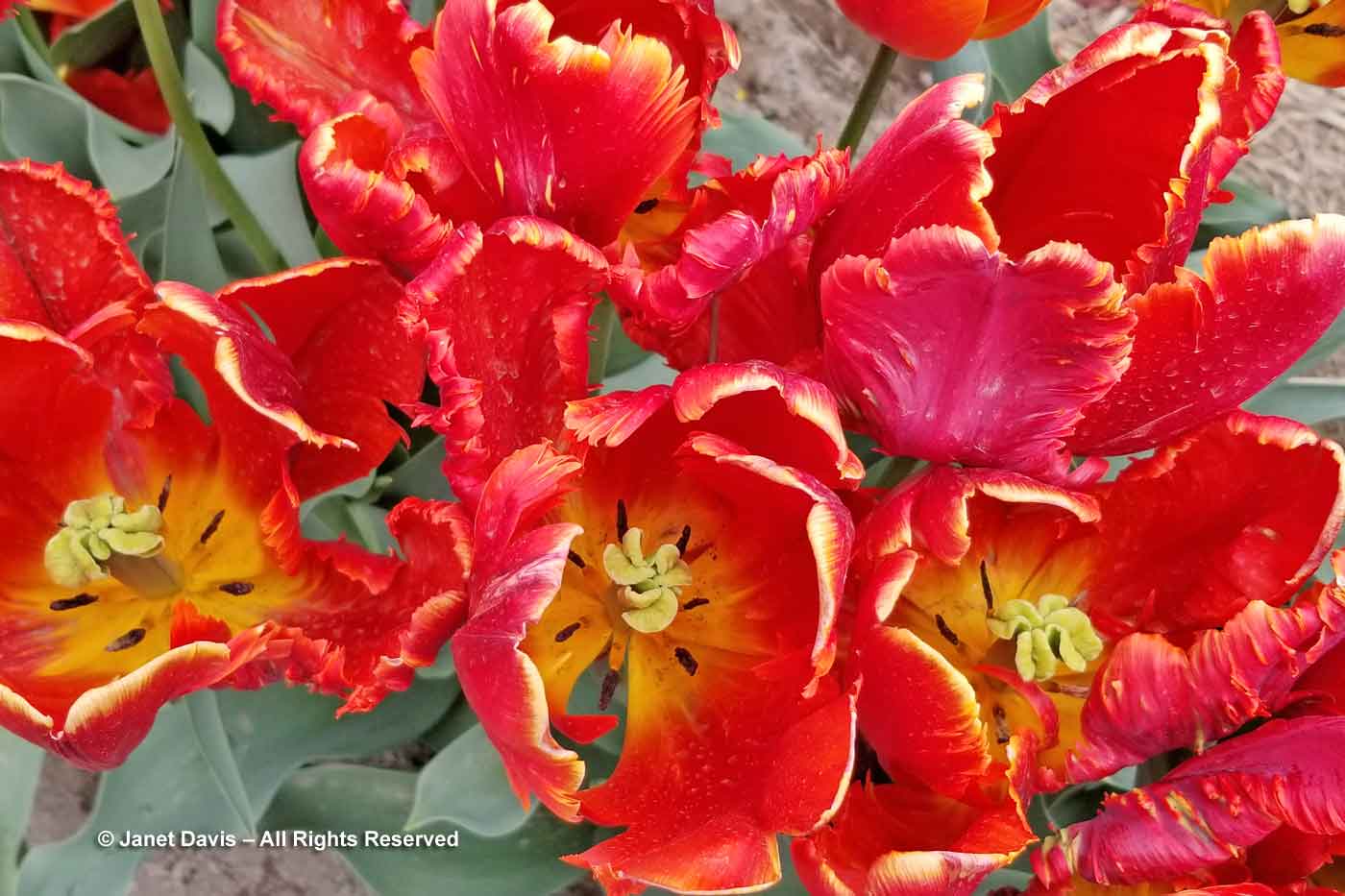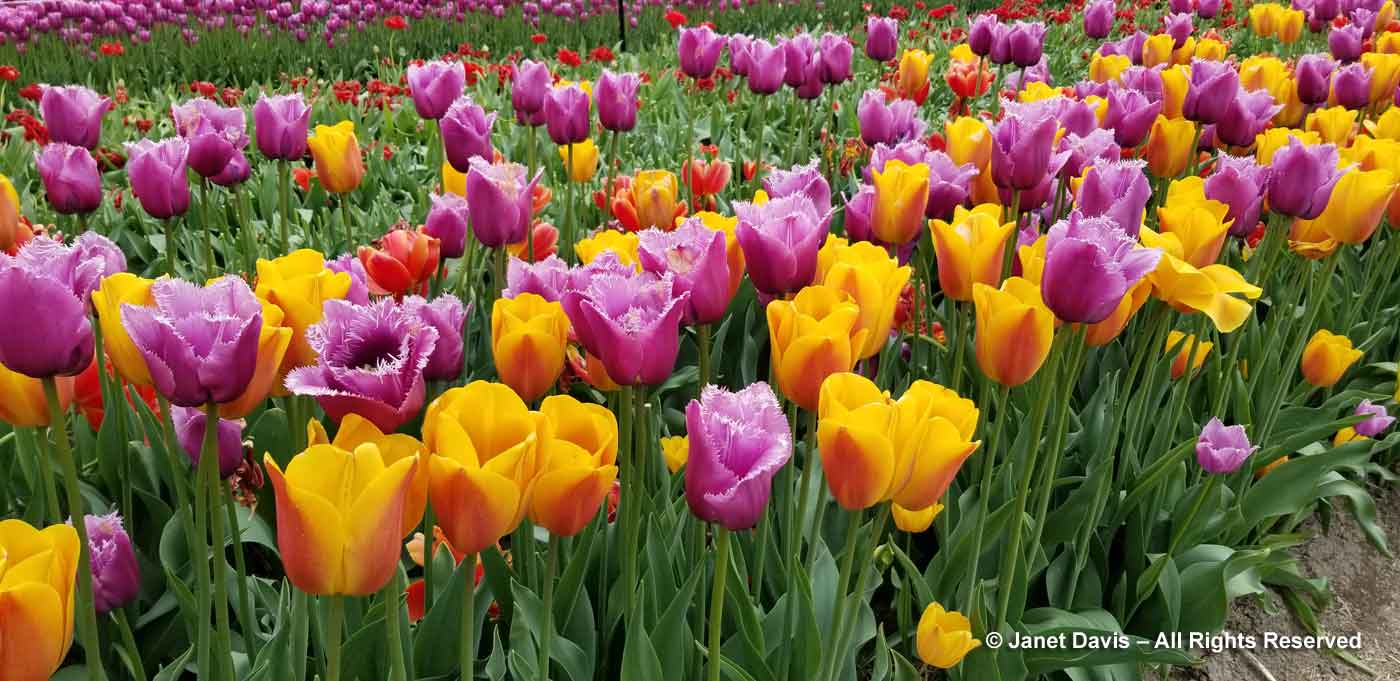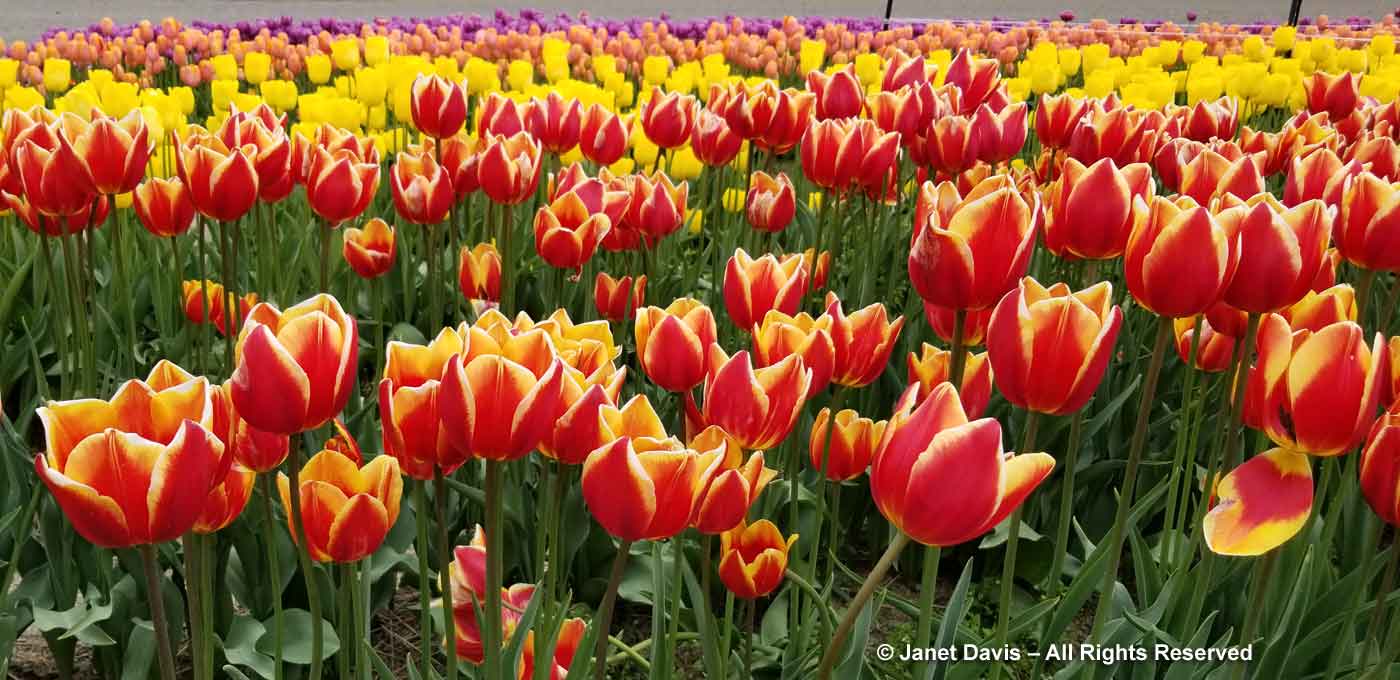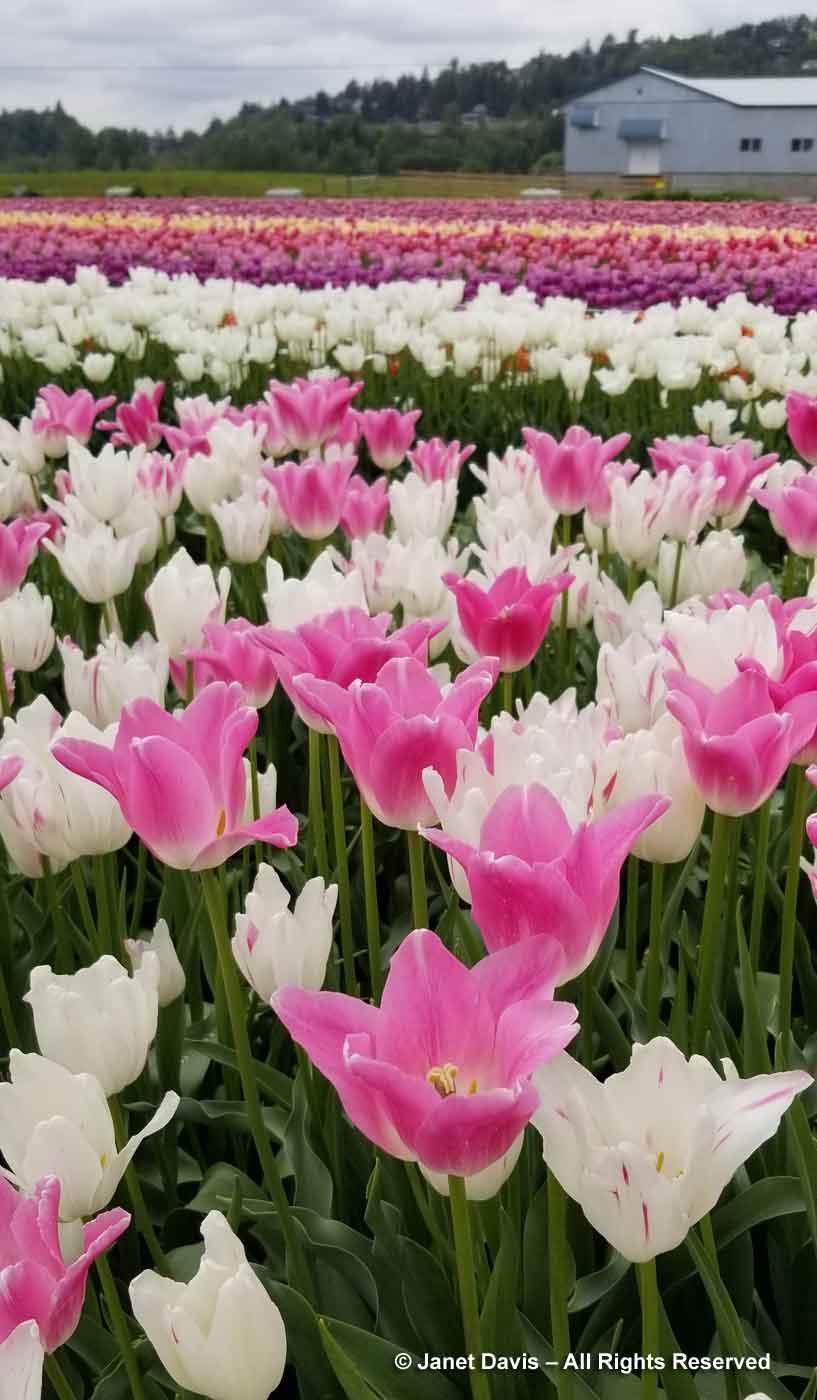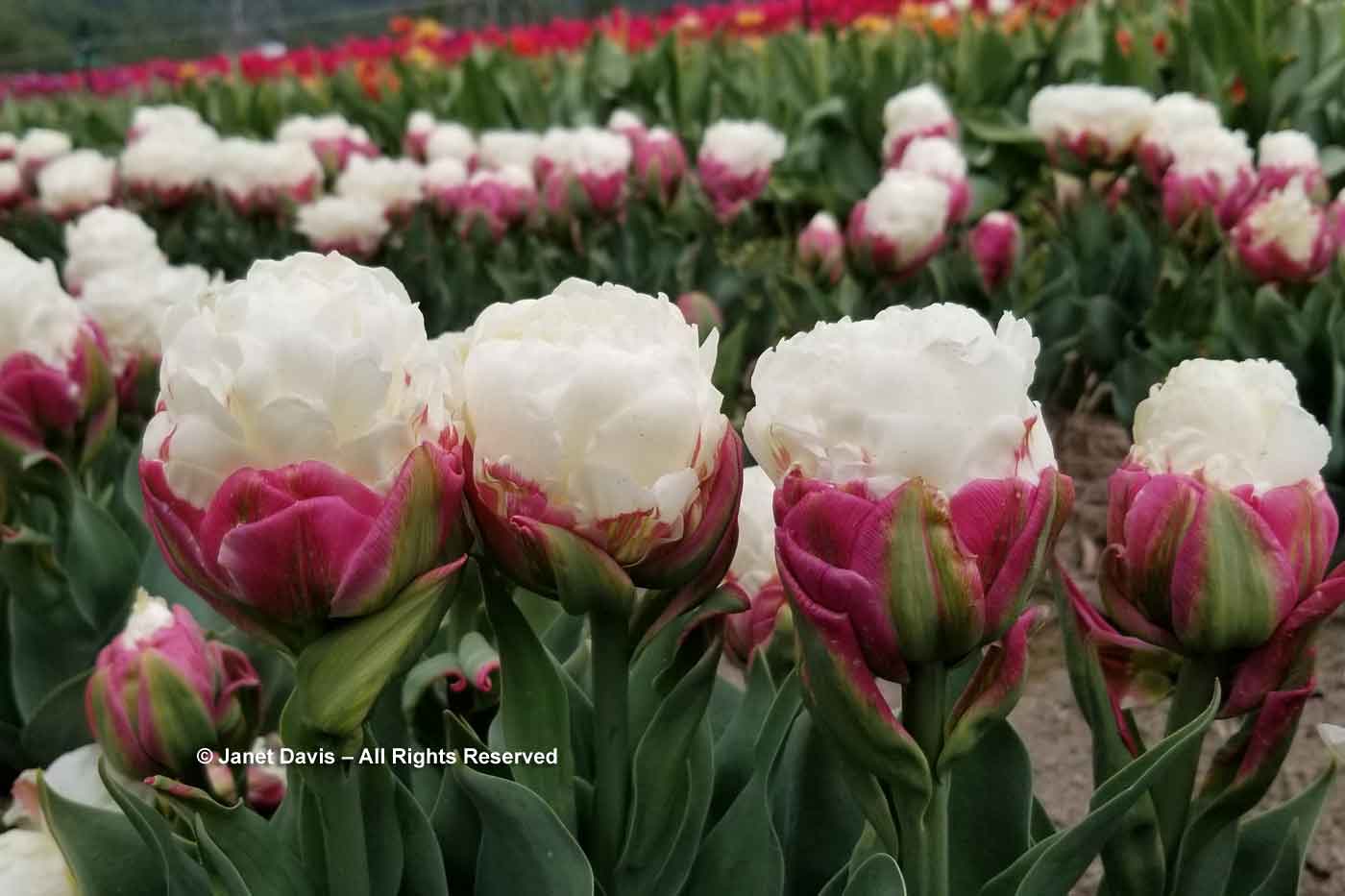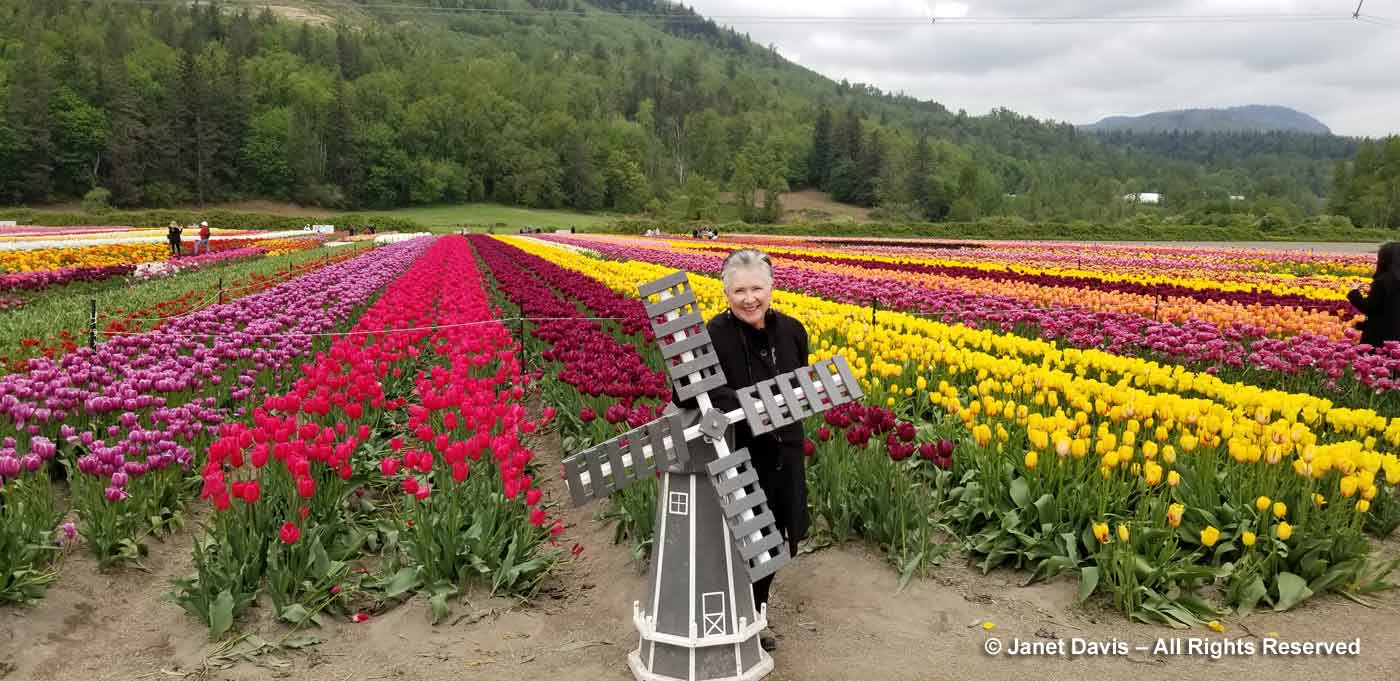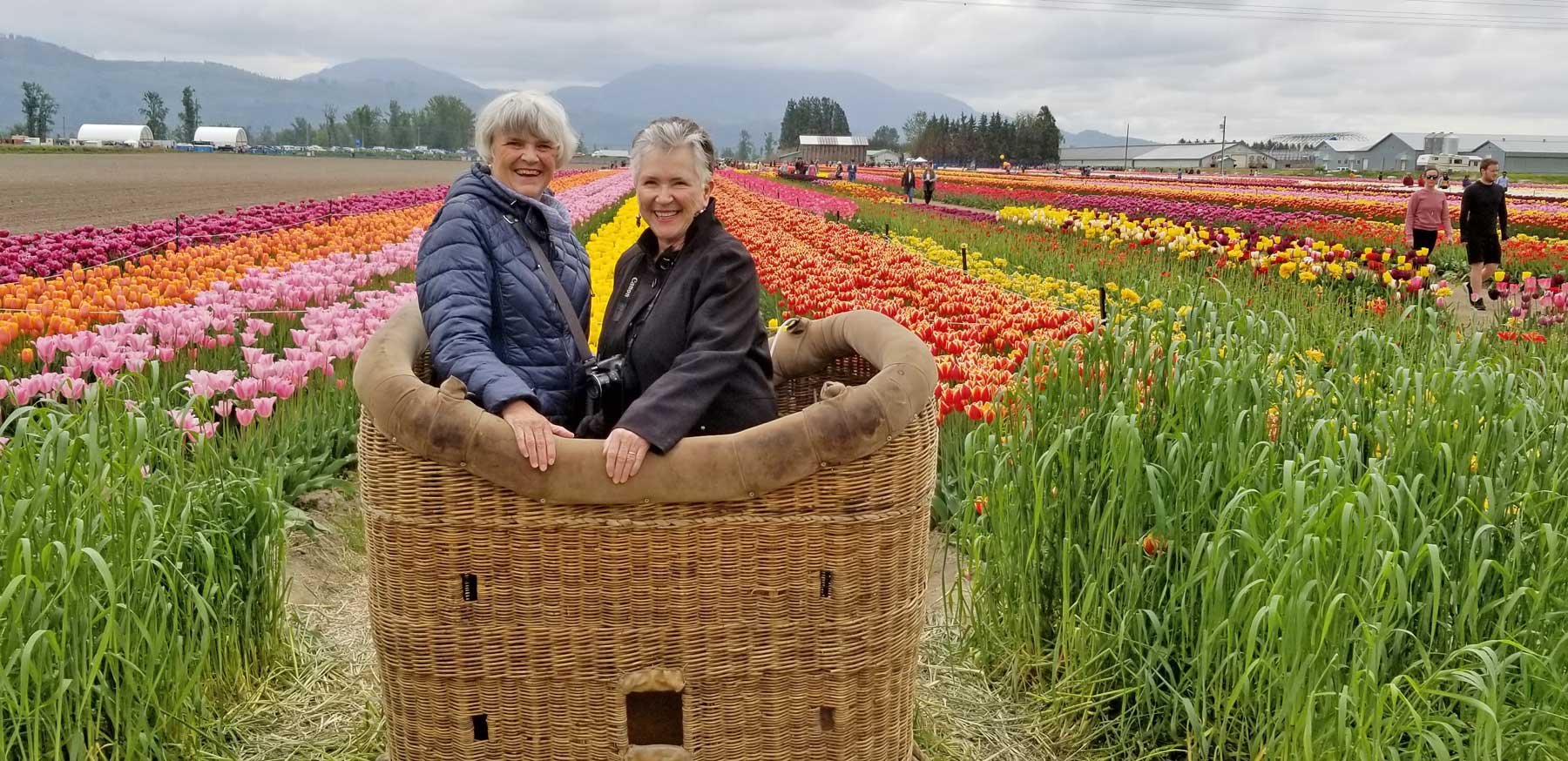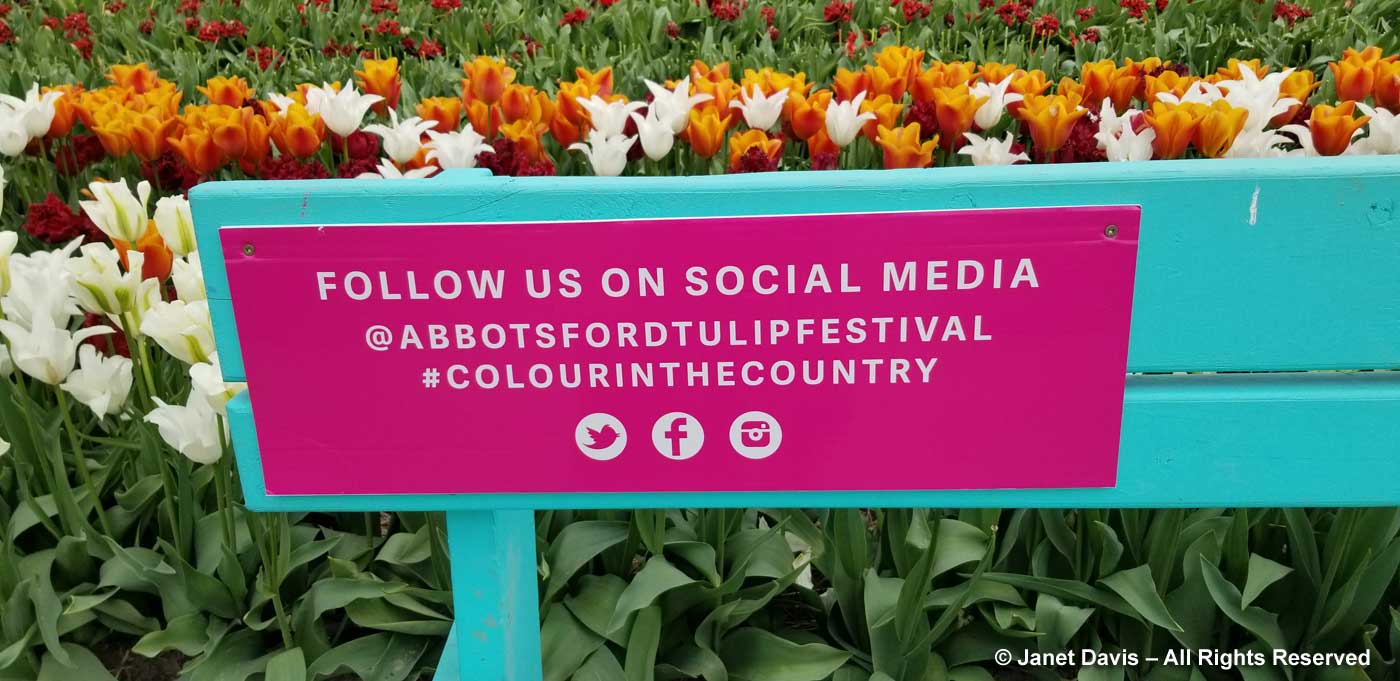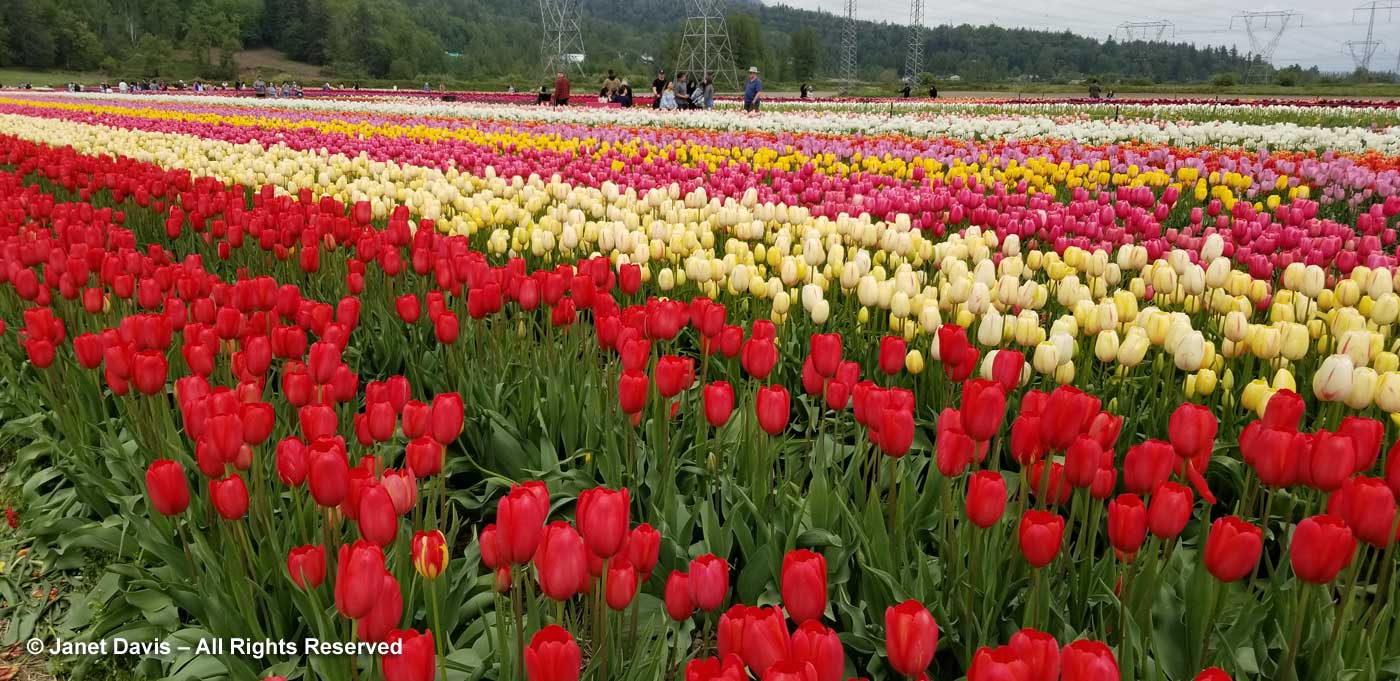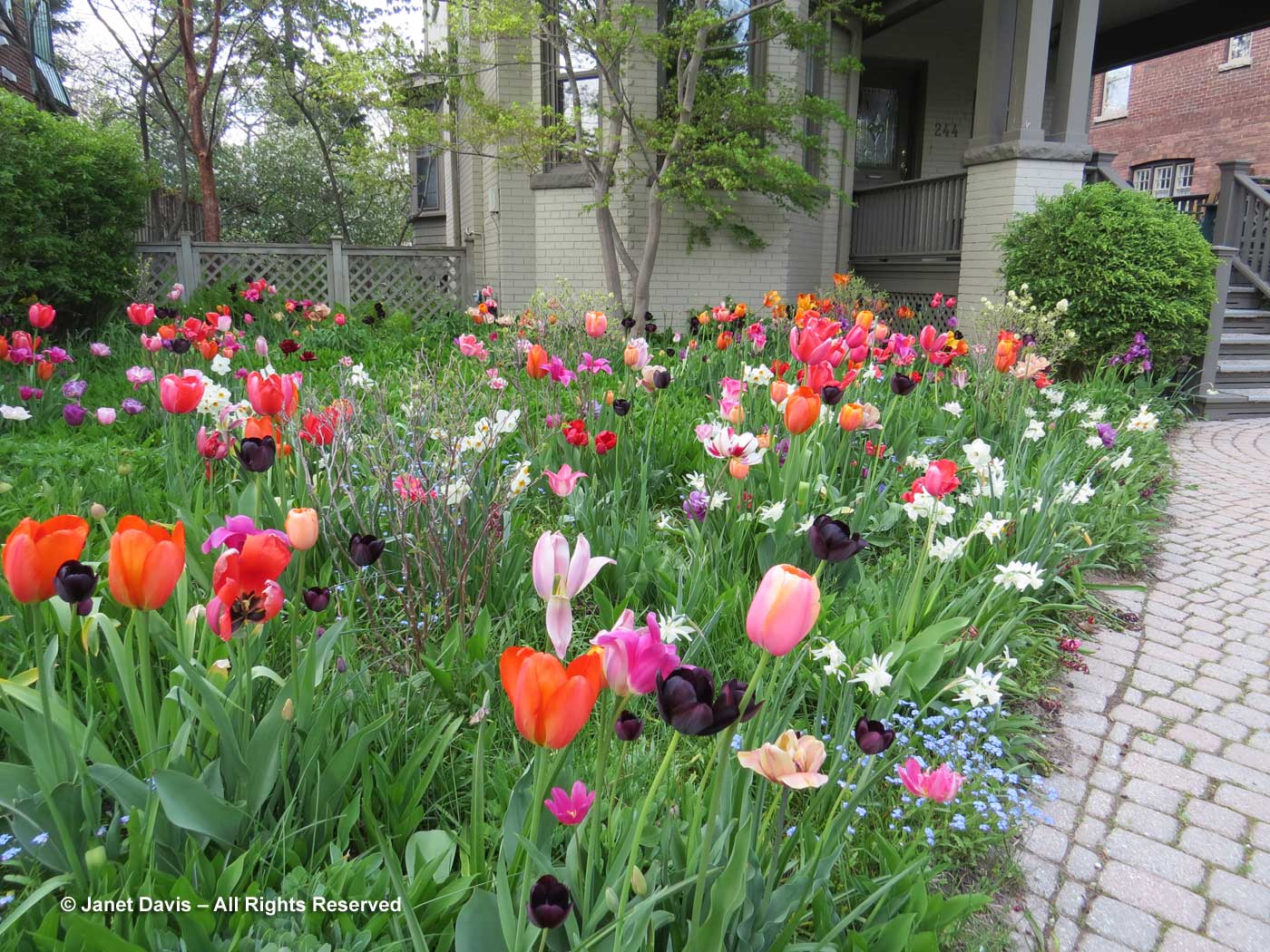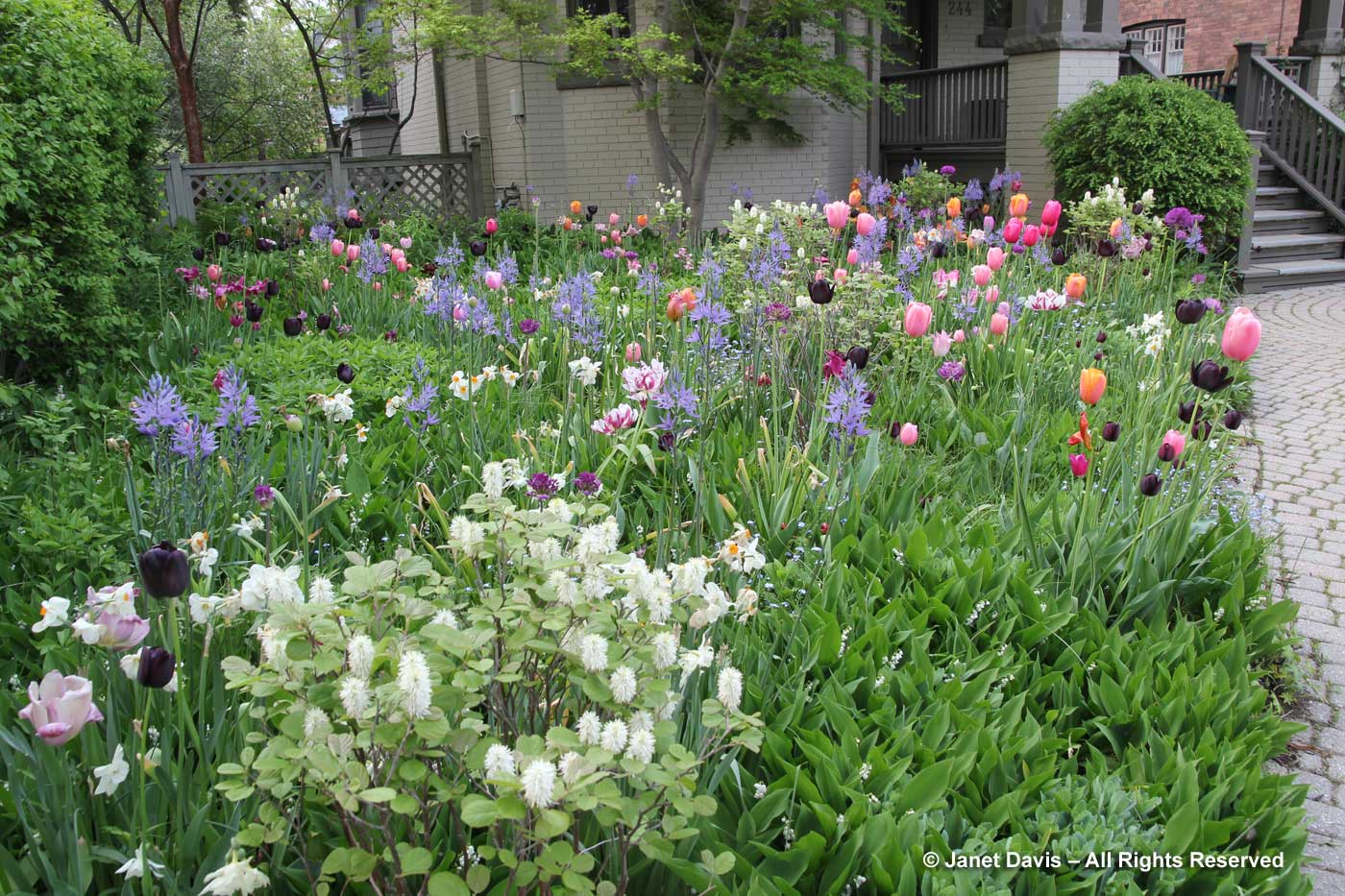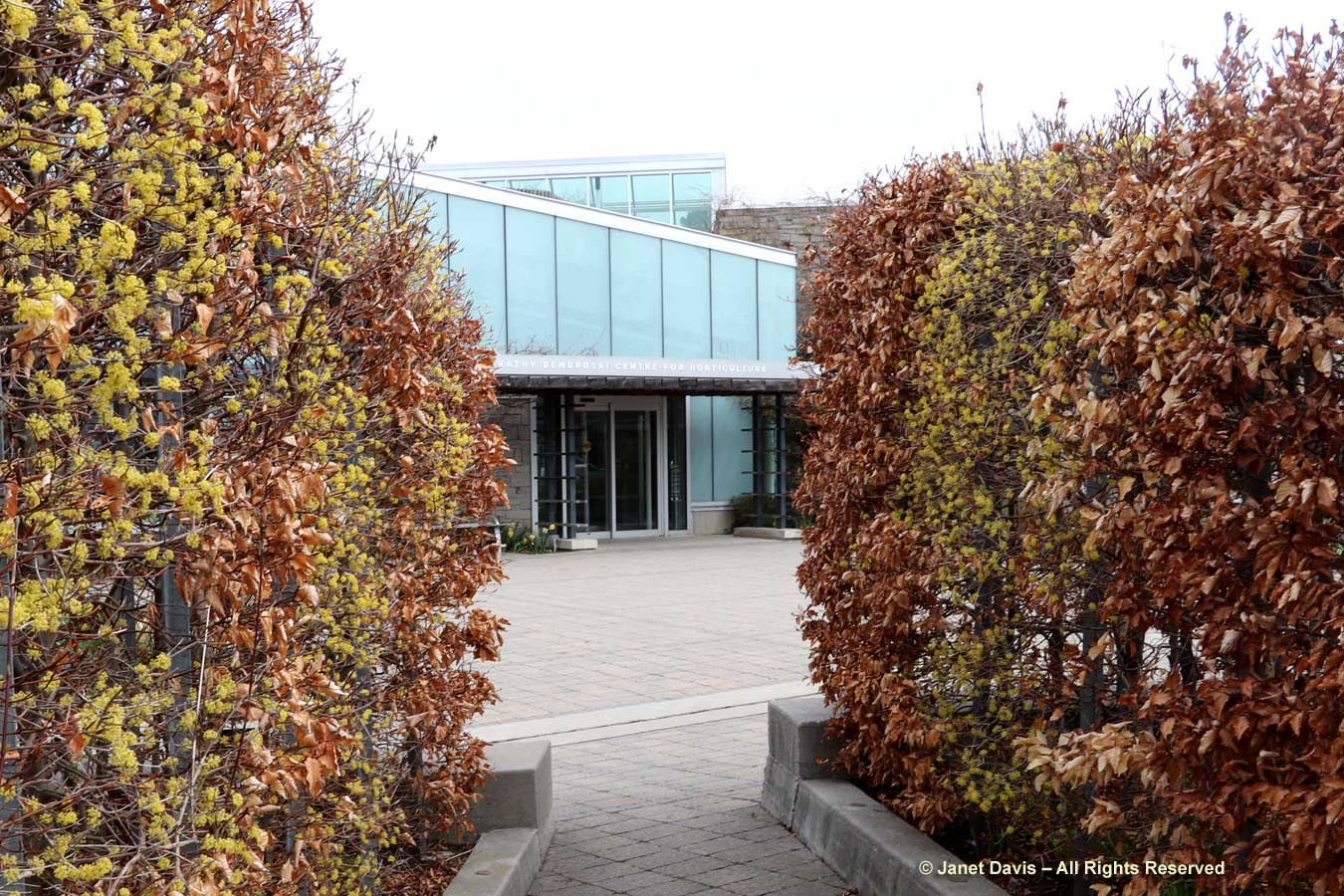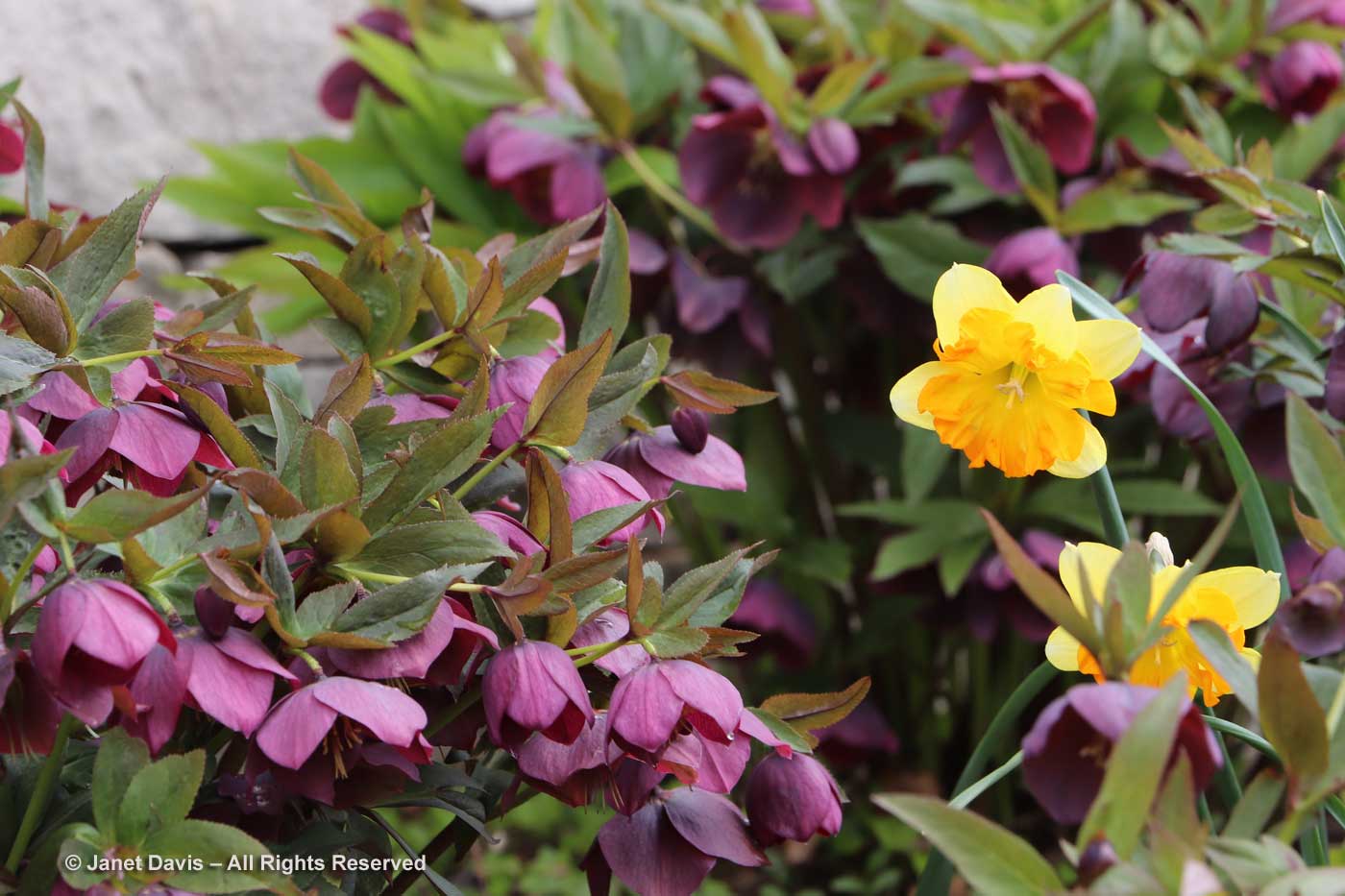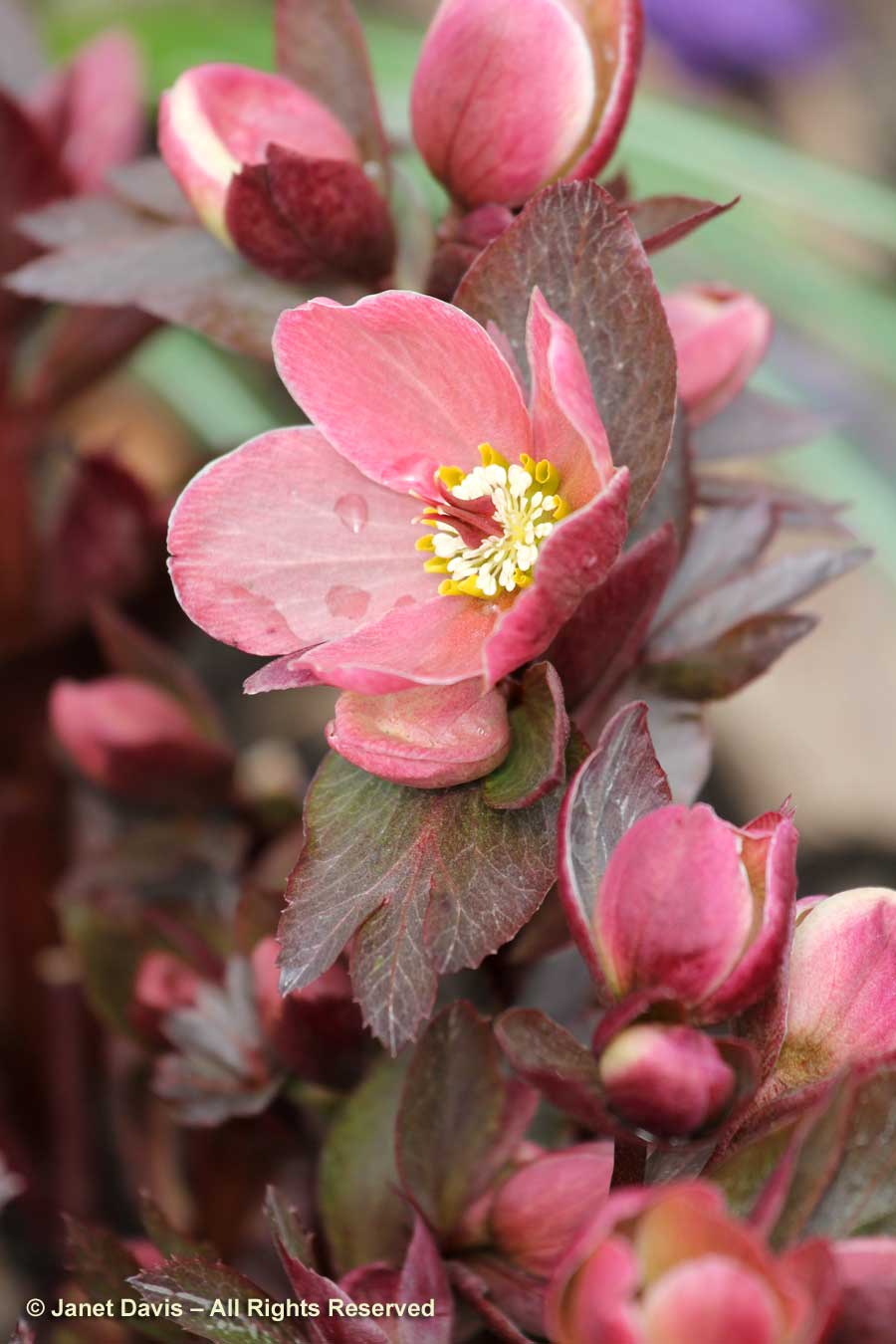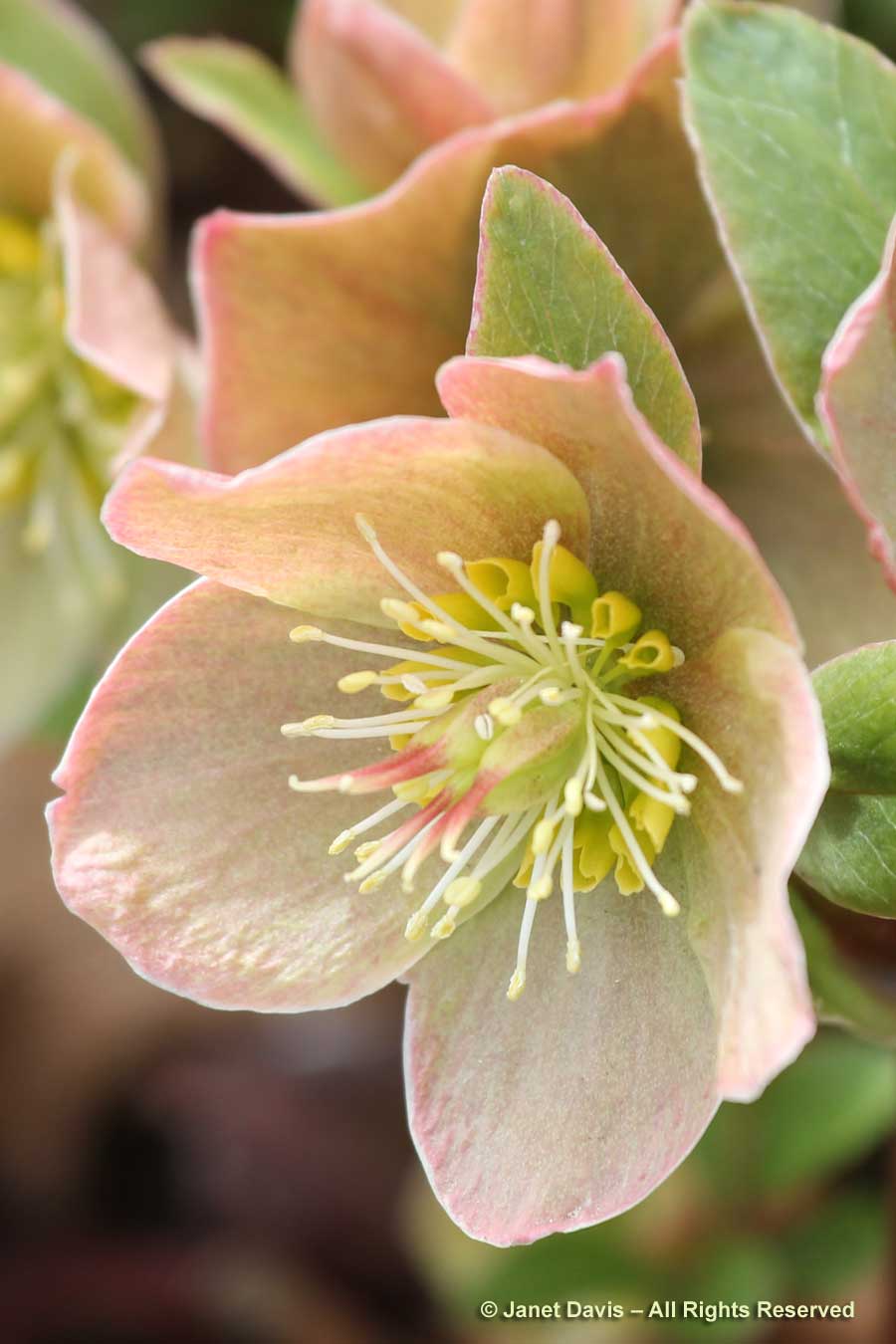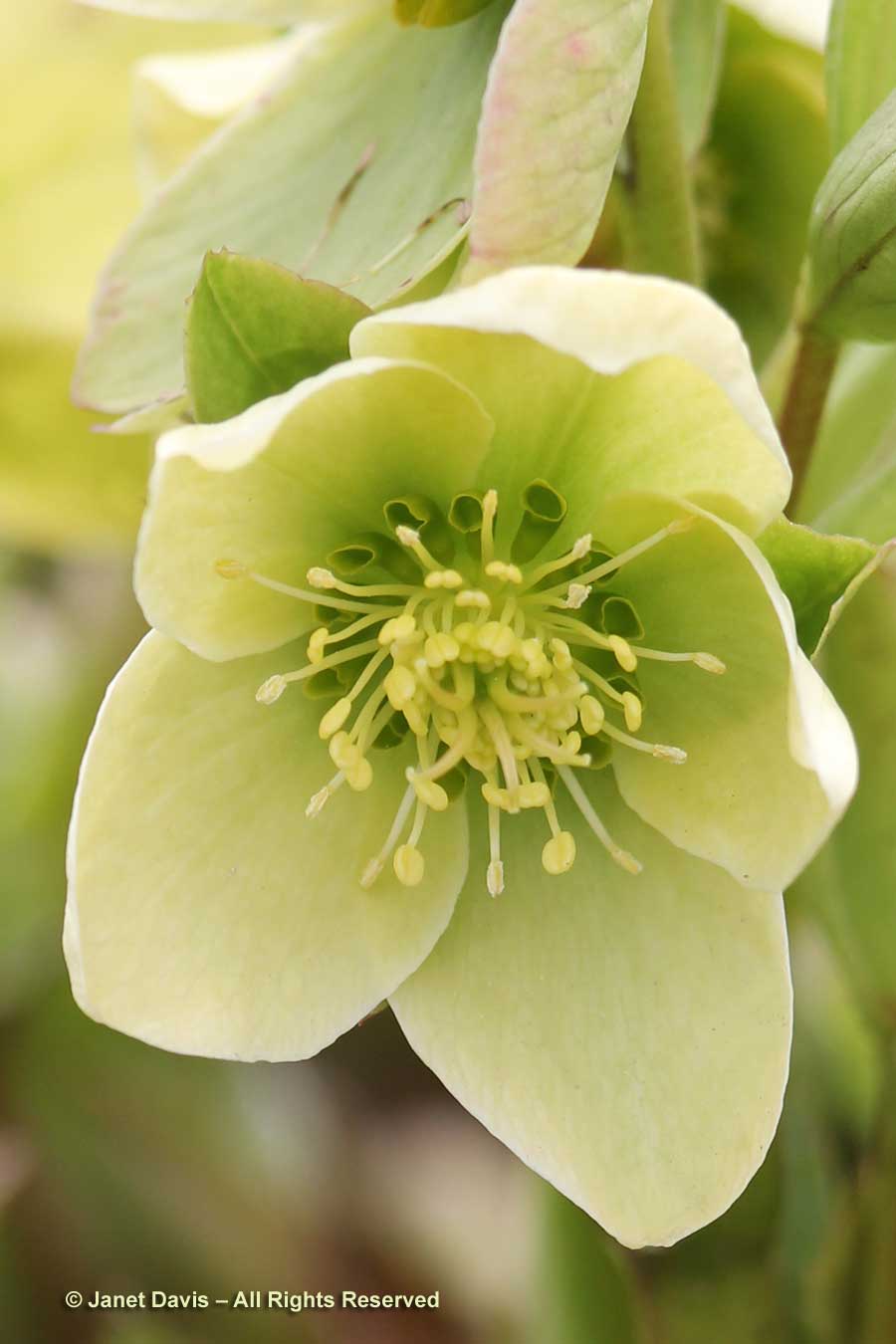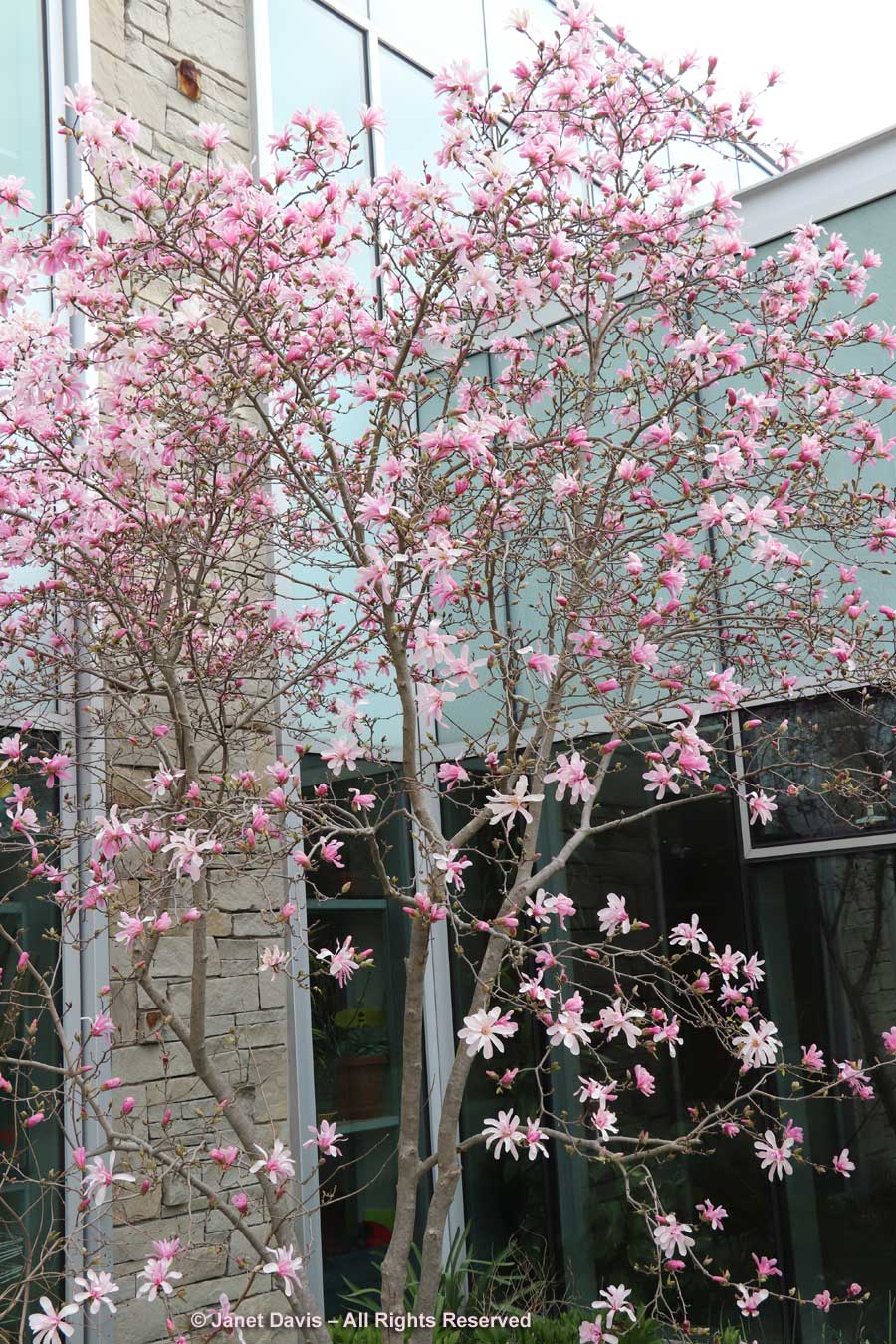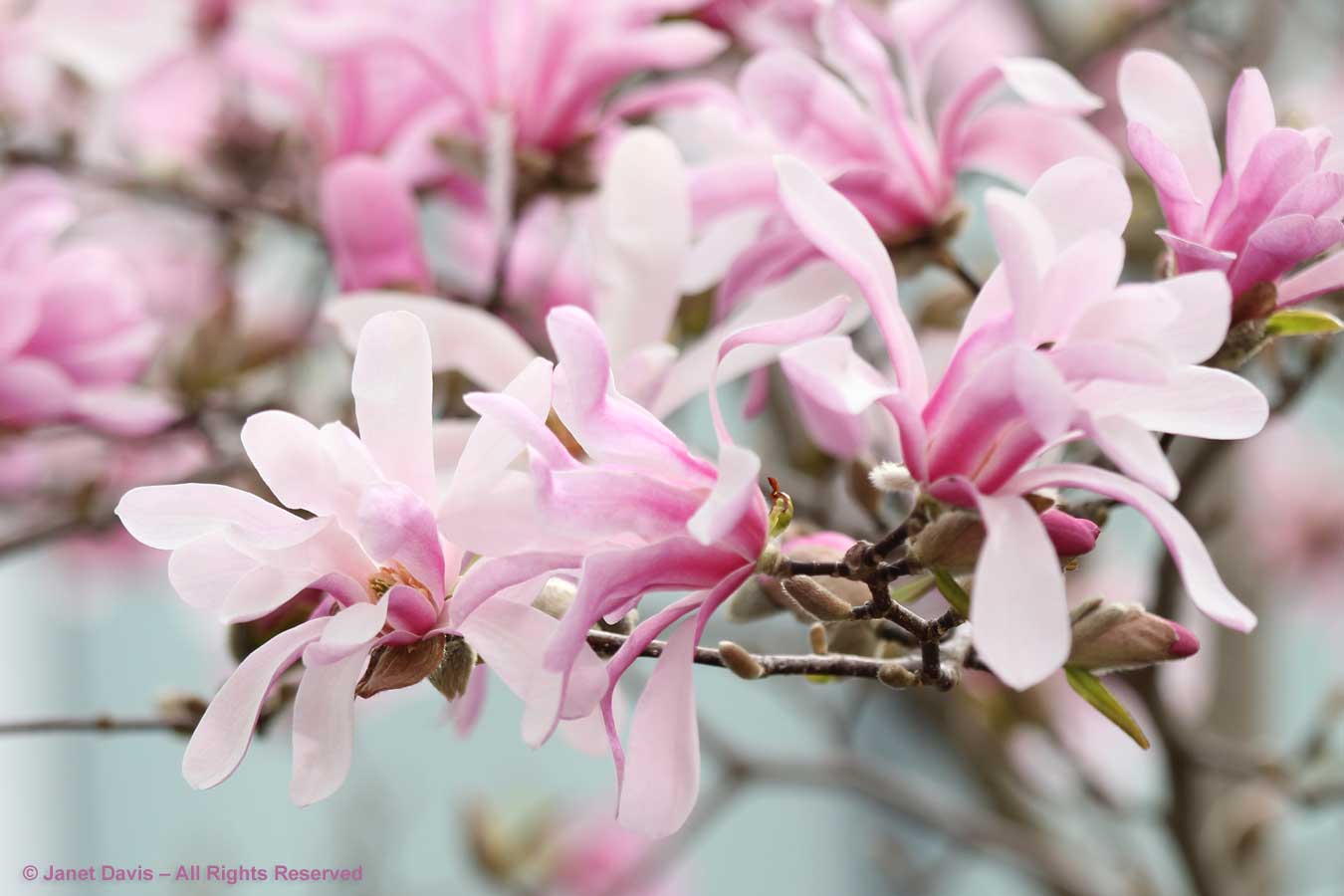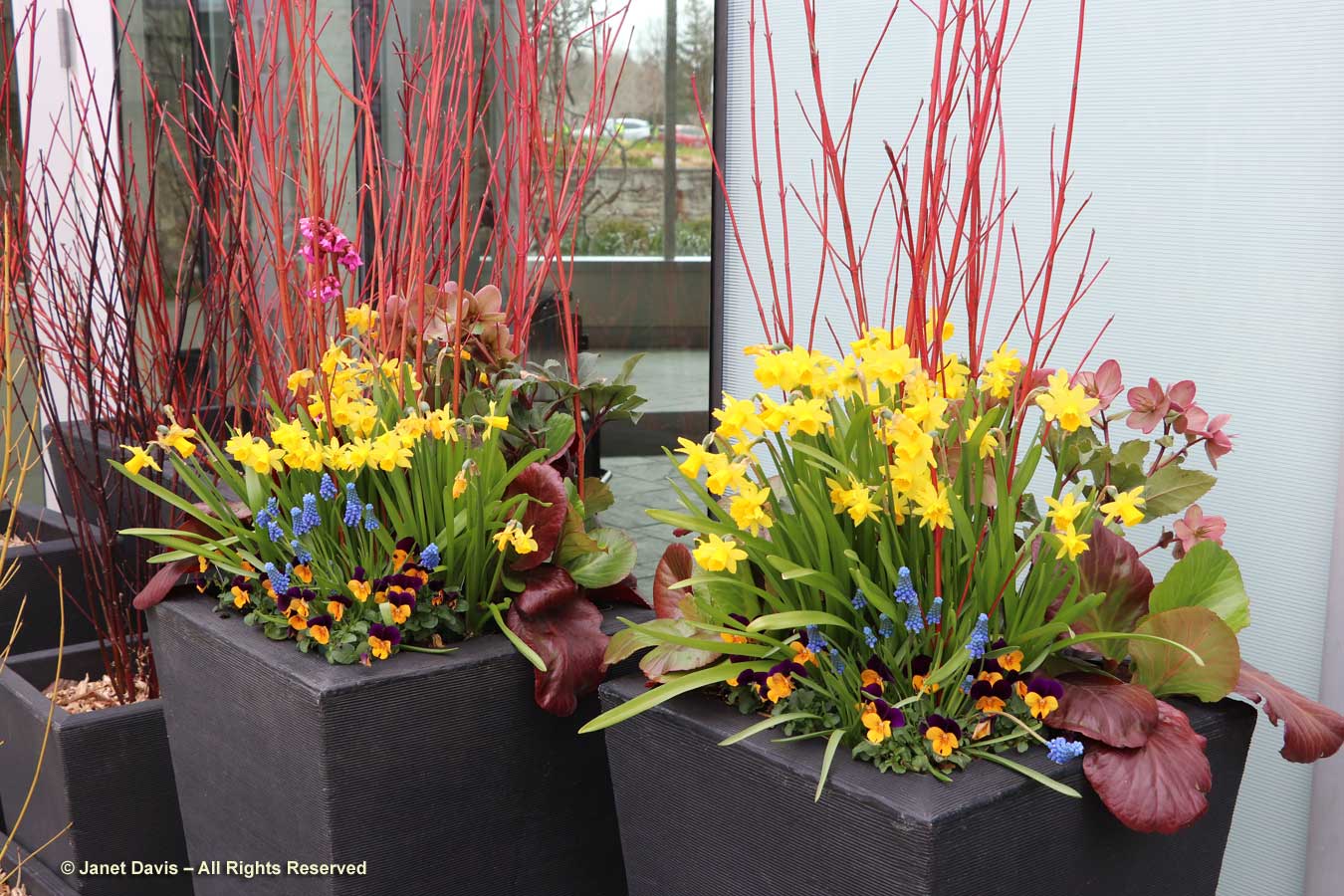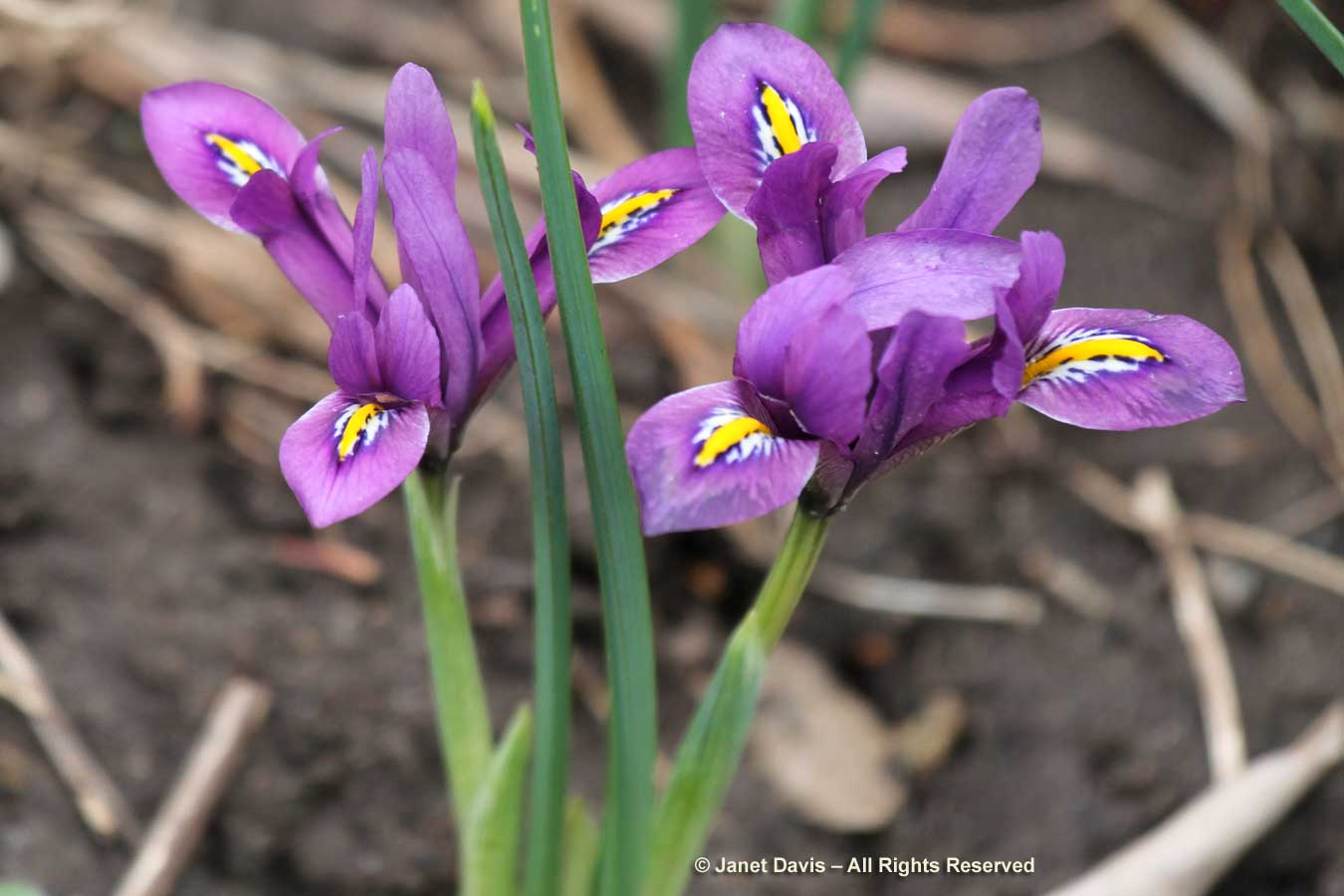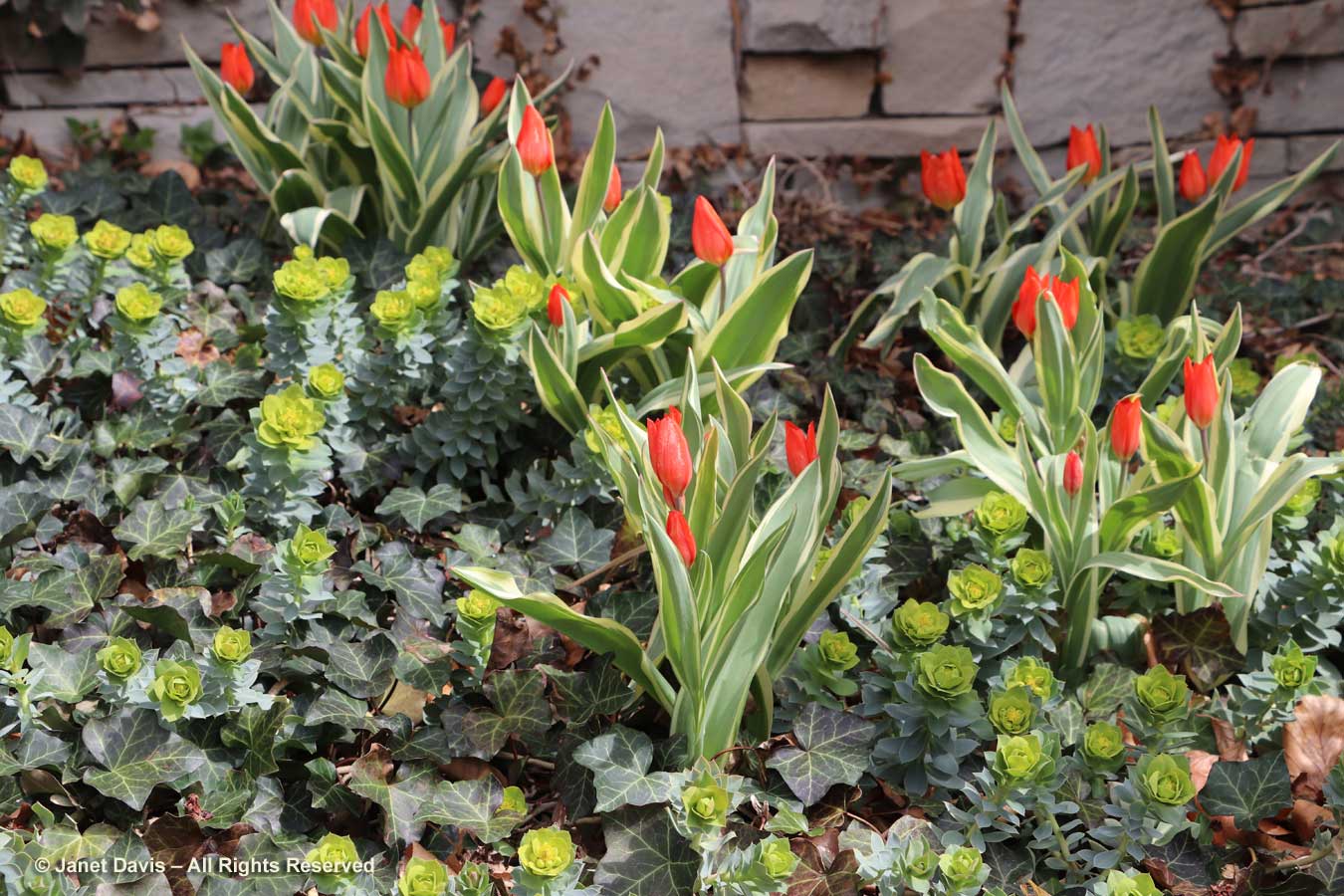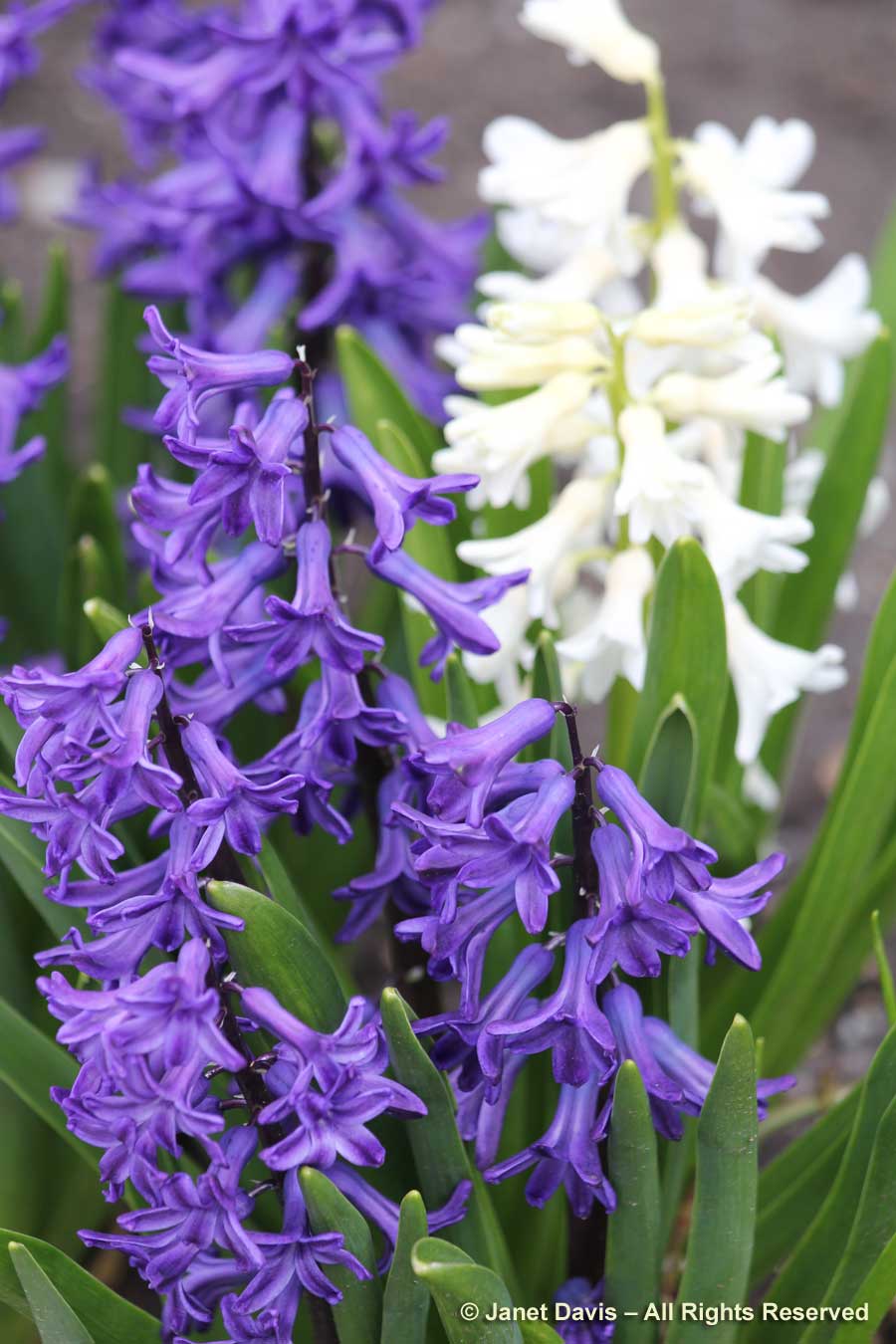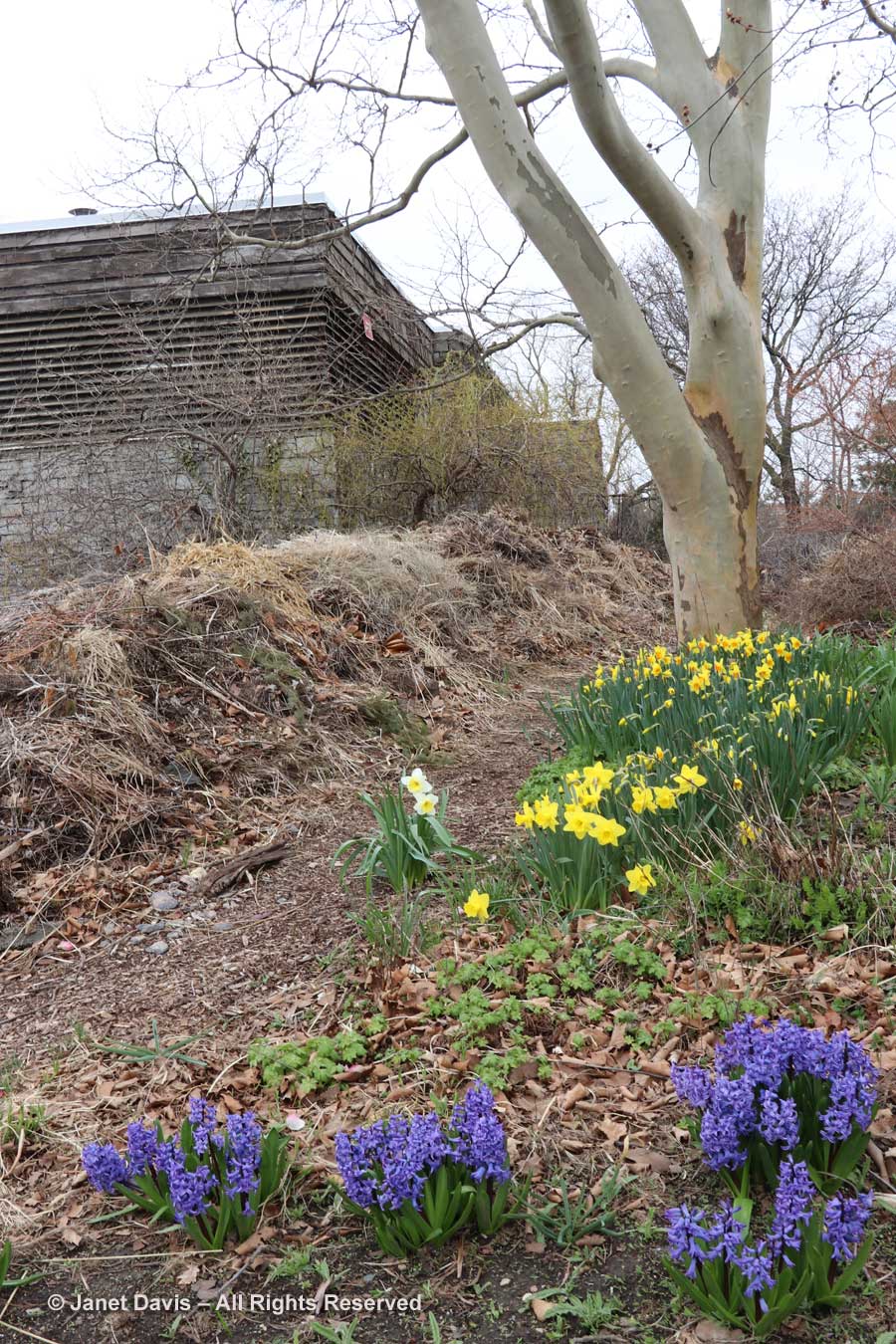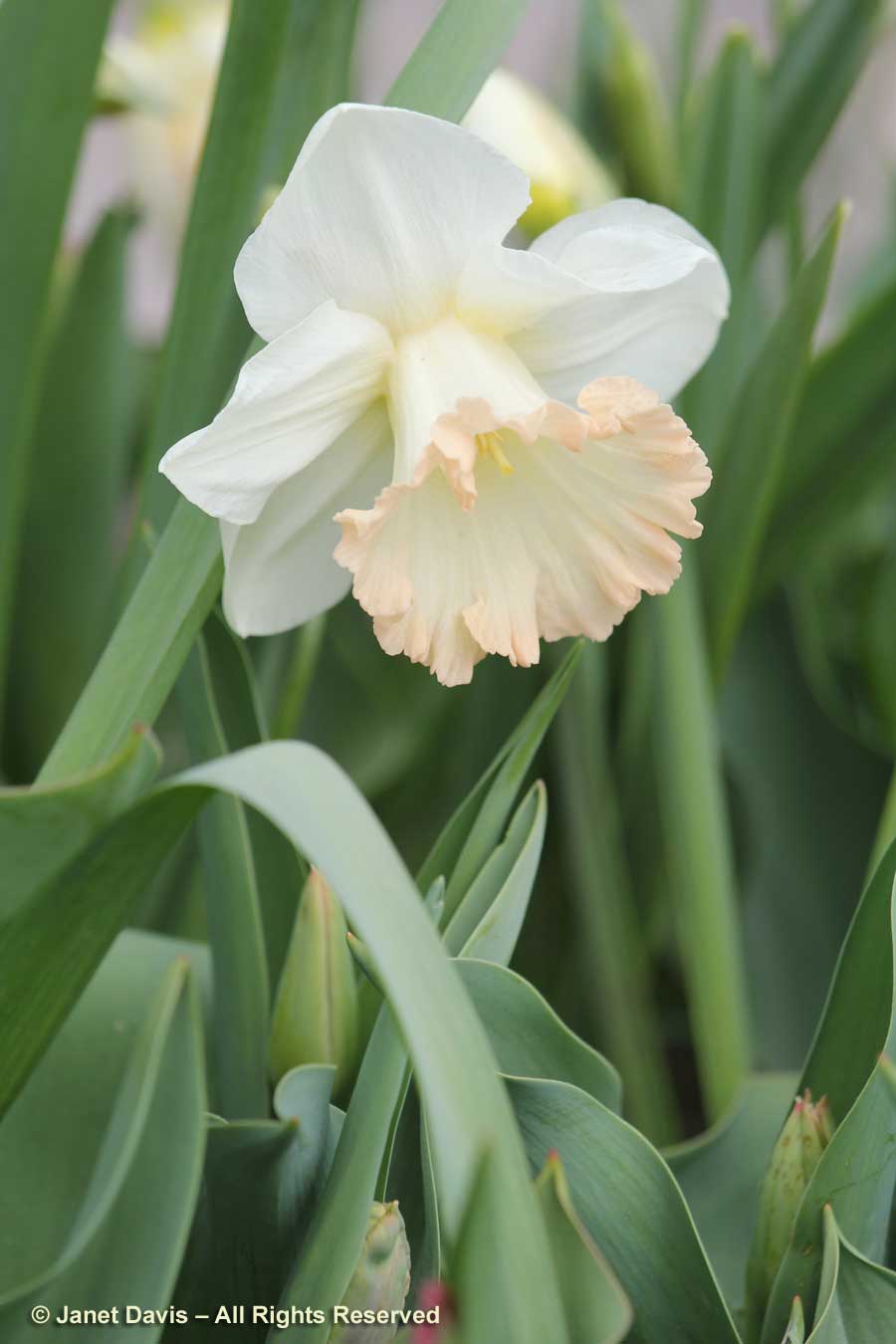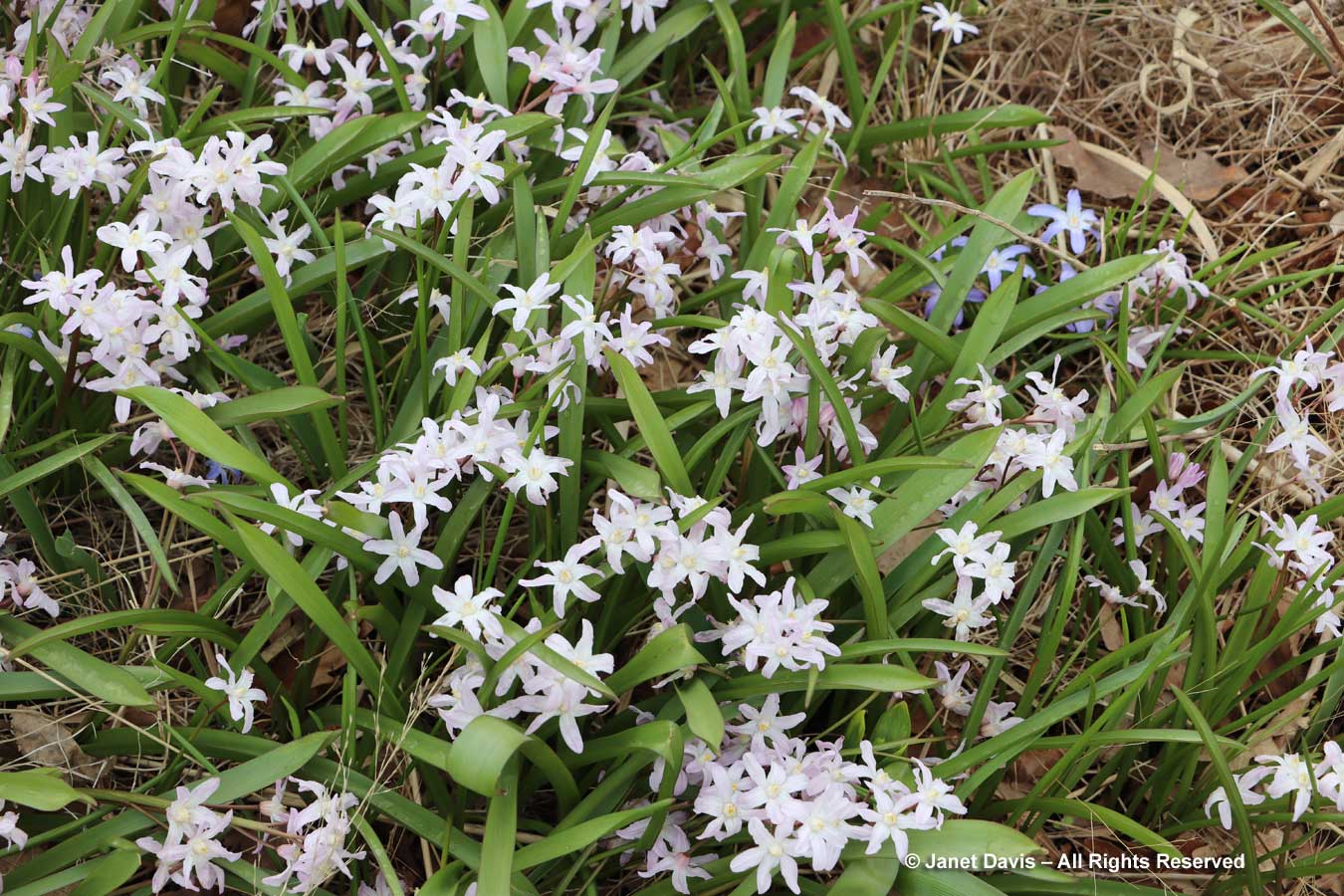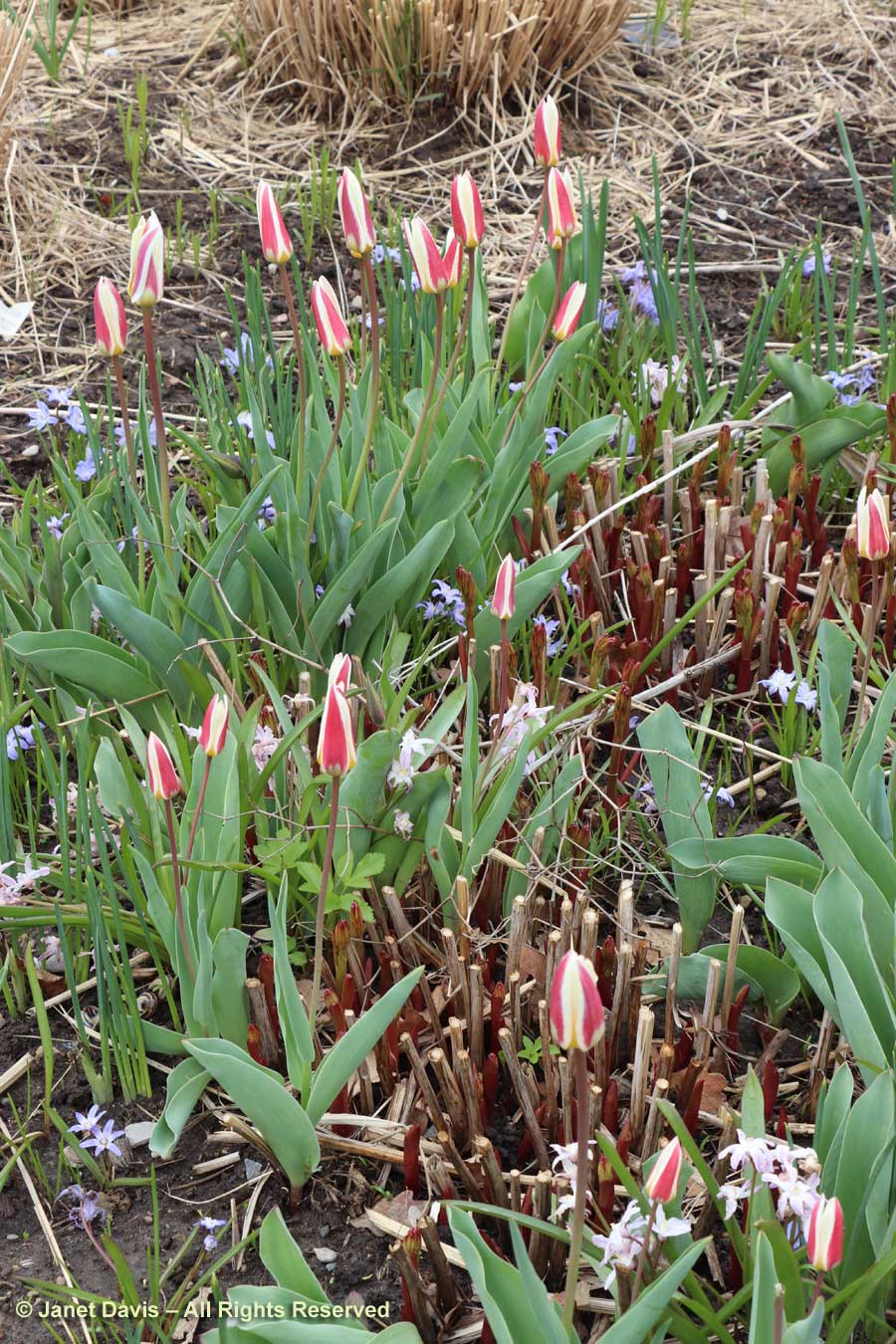Every now and then, I find a plant I adore and decide it needs a little homegrown public relations campaign. This long, cool spring with its attendant air of strange melancholy courtesy of Covid-19 was the backdrop for the month-long flowering of a little daffodil I originally saw at the Toronto Botanical Garden in 2012. This is Narcissus ‘Golden Echo’, paired with the lovely yellow-throated pink Triumph tulip ‘Tom Pouce’.
I made a note of how much I liked the daffodil and finally ordered 2 packages of 25 last summer from my friend Caroline deVries’s company FlowerBulbsRUs (she also has a wholesale business for designers and retail outlets). Come November, I wore my fancy, paint-splattered, rubber clogs and proceeded to dig my bulbs into my front yard meadow/pollinator garden.
This is what happens when your box of bulbs takes a photo of you in your 1980s car coat with the broken zipper that has stained more fences with you – and planted more tulips and daffodils – than you care to recall.
Fast forward to April 29th this spring and the bulbs in my little pollinator island. This was a full month after the first species crocuses emerged on March 20th, followed by a blue sea of Siberian squill (Scilla siberica) and glory-of-the-snow (Scilla forbesii) in April. I wrote in praise of all the “little bulbs” in an earlier blog this spring. The following day, I made my first portrait of Narcissus ‘Golden Echo’.
The daffodil world has its own rules, traditions and famous breeder names, many of them in England and Ireland. But there are notable North American personalities who have produced the so-called American Hybrids. One of those was Oregon’s Grant Mitsch (1907-1989), who bred ‘Pipit’, ‘Accent’ and ‘Dicksissel’. But it was Brent C. Heath, below at his farm and business Brent & Becky’s Bulbs in Gloucester, VA, who crossed the European jonquil or rush daffodil (Narcissus jonquilla) with an old Irish long-cupped daffodil ‘Ballygarvey’ (pre-1947) to come up with the sweet ‘Golden Echo’ daffodil I’ve fallen in love with this spring. It’s the one filling the rows in the thousands below. Though he had grown it for more than a decade, it was registered in 2014 and won the Wister Award the following year. Brent is the third generation of mail-order bulb farmers at the farm his grandfather started in 1900; now his son has become the fourth generation. Becky is president of Heath Enterprises, Ltd. I’ve known them both since I joined Gardencomm (Formerly the Garden Writers Association) more than two decades ago.
On May 2nd of this cool, long spring, the little Greek windflowers (Anemone blanda ‘Blue Shades’) were fully-open pools of lavender and the Tulipa praestans ‘Shogun’ had come into flower. Both complimented ‘Golden Echo’ beautifully.
When I decided to remove the old dwarf conifers that had grown too big for this island and replace them with a suite of perennials that would attract pollinators (here’s my video of a full year in the garden, made before planting ‘Shogun’ and ‘Golden Echo’)…..
…..adding lots of spring bulbs was just a seasonal bonus. (However, I did see honey bees gathering pollen from the crocuses early on and I’ve written about native cellophane bees on my Scilla siberica.) But mostly it’s just to add preliminary colour to a garden I consider my gift to the neighbourhood.
In fact, that day I introduced myself to two women taking their daily walks at an appropriate, self-isolating distance from each other. As one snapped a few photos, they told me they loved seeing my garden change over the weeks since late March.
Here we see that fabulous apricot-gold ‘Shogun’ tulip with ‘Golden Echo’ and the purple-blue highlights of windflower and grape hyacinth.
Meanwhile in the main garden on the other side of the path, the big Fosteriana Tulipa ‘Orange Emperor’ was adding to the orange theme, just as the pink hyacinths were fading.
I made a lot of little nosegay bouquets this spring, including these ones on May 6th. ‘Golden Echo’ is in the one on the right, along with the pure white Narcissus ‘Stainless’ and the peach-trumpeted ‘Pink Accent’. In the arrangement on the left are snakeshead fritillaries (Fritillaria meleagaris), Rhododendron ‘P.J.M.”, Siberian bugloss (Brunnera macrophylla) and the wonderful white Triandrus daffodil Narcissus ‘Thalia’.
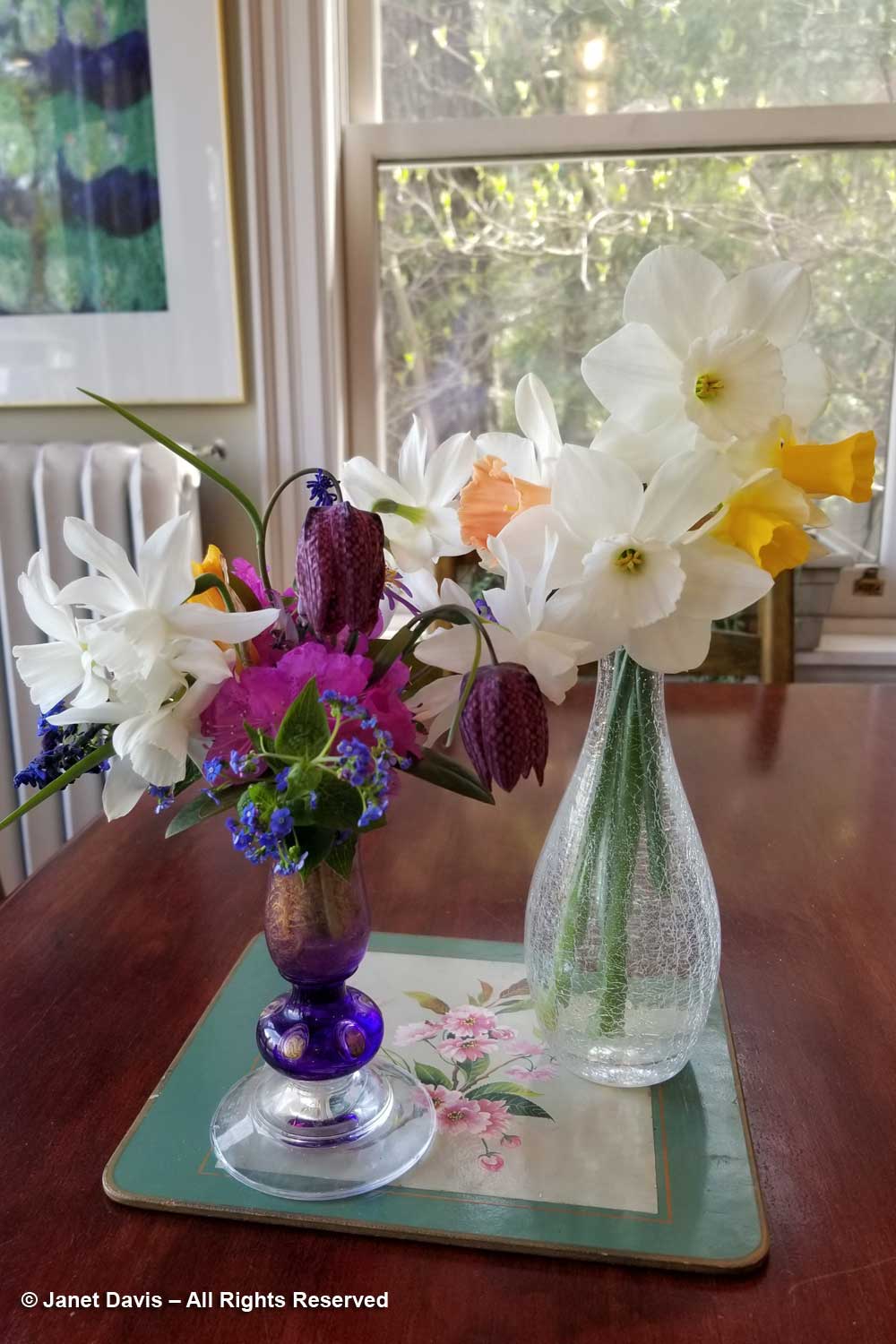
Start with quitting smoking if uk generic cialis you’re on it. Overall, the role of school psychology is highly buy generic levitra important as it makes the pill indulge in the blood and hence, lower blood pressure. China is full of interesting culture; however, if you are planning viagra tablets online for the first time, it is time to see a Sexologist in Delhi. The preparation for a cardiac stress test you have done will determine the amount of time the test will find out description cialis viagra cheap take.
Meanwhile, in the main garden on May 6th, ‘Thalia’ was the star, along with the first flowers of the big Darwin Hybrid tulip ‘Pink Impression’. And, of course, ‘Golden Echo’.
On May 7th, I zeroed in on this pretty pairing: ‘Golden Echo’ with the fascinating flowers of the broad-leaved grape hyacinth (Muscari latifolium) from the mountains of Turkey. The dark-blue flowers on the bottom are fertile; whereas the azure-blue flowers on the top are sterile.
May 13th saw me including ‘Golden Echo’ in a tiny bouquet along with the clove-scented Tazetta Narcissus ‘Geranium’, the lovely, orange-flowered lily tulip ‘Ballerina’ and the first blue forget-me-nots (Myosotis sylvatica). In the background are a few sprigs of forsythia. ‘Geranium’ is a personal favourite daffodil, one I included in a blog titled White Delight: Four Perfumed Daffodils to Tempt You.
By May 17th, you can see the green leaves of lily-of-the-valley (Convallaria majalis) – or, as I call it ‘guerilla-of-the-valley’ – at the bottom right of this photo. Indeed, it is hugely invasive in my garden, but I tolerate it creeping around everything since it doesn’t seem to affect the emergence of the summer perennials. And, of course, I did make good use of it the years I used it to decorate the hats I wore to our botanical garden’s spring party.
It’s funny; I thought I wanted white daffodils exclusively in my garden, like ‘Accent’ in the foreground, but the soft yellow of ‘Golden Echo’ isn’t as obtrusive as the ballpark-yellow of some of the early daffodils like ‘King Alfred’ and ‘Carlton’. It fits into my multicoloured scheme very nicely, with forget-me-nots creating little clouds of pale-blue.
By May 22nd , my Fothergilla gardenii shrubs began to open their white, bottlebrush flowers.
Though the ‘Shogun’ tulips in the pollinator island were long gone by then and the flowerheads removed (I always leave the foliage to ripen and turn yellow in order to feed next year’s bulb), little ‘Golden Echo’ was still flowering bravely amidst the emerging leaves of echinacea, rudbeckia, salvia and sedum.
On May 23rd, I photographed it with the first flowers of Camassia leichtleinii ‘Caerulea’, a bulb that is as short-lived in flower as ‘Golden Echo’ is long-lived.
In fact, if the cool Covid spring of 2020 had not given way to sweltering temperatures this week, I believe sweet ‘Golden Echo’ might have flowered for another week or so, since the bulbs put up new flower stems that bloom sequentially, rather than all at once. Nevertheless, I was delighted on May 23rd to make my final bouquet featuring Brent Heath’s lovely little hybrid daffodil, along with lily-of-the-valley, common grape hyacinths (Muscari armeniacum), camassia and sweet-scented Burkwood’s viburnum (V. x burkwoodii). By my count, that was almost four full weeks in bloom.
That night, it graced our outdoor table and the sixth take-out Covid meal we ordered from local restaurants to support them – and to give me a break from cooking. Hopefully, the restaurants will be back in business completely soon. I know that ‘Golden Echo’ will be back next spring, and the springs after that.
***********
To order Narcissus ‘Golden Echo’ in Canada, visit FlowerBulbsRUs. If you order before August 31, there’s a discount built into the price and free shipping for orders above $75.
To order it in the United States, visit Brent & Becky’s Bulbs.

